Turing machine
description: abstract computation model; mathematical model of computation that defines an abstract machine which manipulates symbols on a strip of tape according to a table of rules
169 results
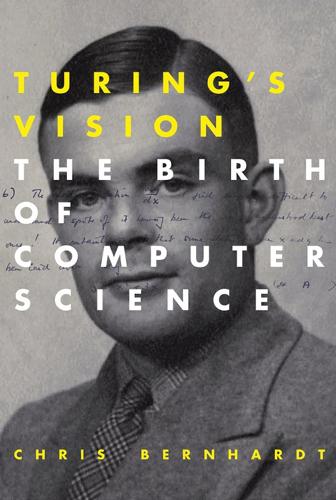
Turing's Vision: The Birth of Computer Science
by
Chris Bernhardt
Published 12 May 2016
Fortunately, it doesn’t require much more work to obtain some undecidable questions that are much more relevant. Does a Turing Machine Diverge on Its Encoding? Is Undecidable When we run a Turing machine on an input string there are three possible outcomes: it halts in the accept state; it halts in the reject state; or it never halts. Let us look at three questions related to this. Is it possible to construct a Turing machine that receives encodings of Turing machines as input and halts in the accept state only if the encoded Turing machine accepts its encoding? Is it possible to construct a Turing machine that receives encodings of Turing machines as input and halts in the accept state only if the encoded Turing machine rejects its encoding?
…
However, this gives a contradiction, as we have shown that there is no Turing machine with this property. The conclusion is that there is no Turing machine that receives encodings of Turing machines as input and halts in the accept state only if the encoded Turing machine diverges on its its encoding. This shows that the question Does a Turing machine diverge on its encoding? is undecidable. Again, the negation will also be undecidable, so we know that the question Does a Turing machine halt on its encoding? is undecidable. The Acceptance, Halting, and Blank Tape Problems We now have two undecidable questions: Does a Turing machine accept its encoding?
…
In the last section we proved that the barber could not live in town, but this leads to the question, does he live elsewhere? We can ask the corresponding question. Could MFA be a Turing machine? The answer is, of course, yes. We have shown that there is an algorithm for deciding whether or not finite automata accept their encodings. Consequently, there is a Turing machine that does this. Turing Machines That Do Not Accept Their Encodings We now turn our attention to Turing machines and look at whether or not they accept their encodings. Just as with finite automata, there are Turing machines that accept their encodings and there are Turing machines that don’t. One difference from the previous case is that we know that if a finite automaton does not accept its encoding, then it has rejected its encoding, but with Turing machines there are three possible outcomes.
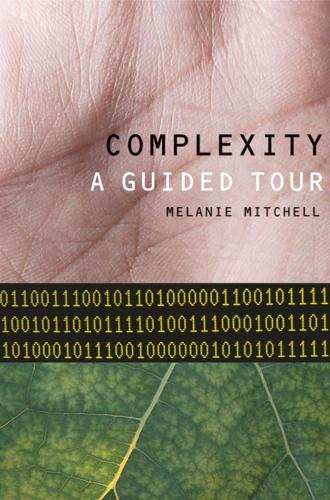
Complexity: A Guided Tour
by
Melanie Mitchell
Published 31 Mar 2009
The idea is that, given a particular problem to solve, you can construct a definite procedure for solving it by designing a Turing machine that solves it. Turing machines were put forth as the definition of “definite procedure,” hitherto a vague and ill-defined notion. When formulating these ideas, Turing didn’t build any actual machines (though he built significant ones later on). Instead, all his thinking about Turing machines was done with pencil and paper alone. Universal Turing Machines Next, Turing proved an amazing fact about Turing machines: one can design a special universal Turing machine (let’s call it U) that can emulate the workings of any other Turing machine. For U to emulate a Turing machine M running on an input I, U starts with part of its tape containing a sequence of 0s, 1s, and blanks that encodes input I, and part of its tape containing a sequence of 0s, 1s, and blanks that encodes machine M.
…
Von Neumann also was able to show that his cellular automaton was equivalent to a universal Turing machine (cf. chapter 4). The cell update rule plays the role of the rules for the Turing machine tape head, and the configuration of states plays the role of the Turing machine tape—that is, it encodes the program and data for the universal machine to run. The step-by-step updates of the cells correspond to the step-by-step iteration of the universal Turing machine. Systems that are equivalent in power to universal Turing machines (i.e., can compute anything that a universal Turing machine can) are more generally called universal computers, or are said to be capable of universal computation or to support universal computation.
…
Following the intuition of Leibniz of more than two centuries earlier, Turing formulated his definition by thinking about a powerful calculating machine—one that could not only perform arithmetic but also could manipulate symbols in order to prove mathematical statements. By thinking about how humans might calculate, he constructed a mental design of such a machine, which is now called a Turing machine. The Turing machine turned out to be a blueprint for the invention of the electronic programmable computer. Alan Turing, 1912–1954 (Photograph copyright ©2003 by Photo Researchers Inc. Reproduced by permission.) A QUICK INTRODUCTION TO TURING MACHINES As illustrated in figure 4.1, a Turing machine consists of three parts: (1) A tape, divided into squares (or “cells”), on which symbols can be written and from which symbols can be read.

Darwin Among the Machines
by
George Dyson
Published 28 Mar 2012
The key was added modulo 2 to the plaintext message (counting by two the way we count hours by twelve, so that 0 + 1 = 1 and 1 + 1 = 0), with 1 and 0 represented by the presence or absence of a hole in the tape. Adding the key to the enciphered text a second time would return the original text. Each Fish was a species of Turing machine, and the process by which the Colossi were used to break the various species of Fish was a textbook example of the process by which the function (or partial function) of one Turing machine could be encoded as a subsidiary function of another Turing machine to produce simulated results. The problem, of course, was that the British didn’t know the constantly changing state of the Fish; they had to guess. Colossus was programmed, in Boolean logic mode, by a plugboard and toggle switches at the back of the machine.
…
A similar principle of distributed intelligence (enforced by need-to-know security rules) led to successful code breaking at Bletchley Park. The Turing machine, as a universal representation of the relations between patterns in space and sequences in time, has given these intuitive models of intelligence a common language that translates freely between concrete and theoretical domains. Turing’s machine has grown progressively more universal for sixty years. From McCulloch and Pitts’s demonstration of the equivalence between Turing machines and neural nets in 1943 to John von Neumann’s statement that “as far as the machine is concerned, let the whole outside world consist of a long paper tape,”51 the Turing machine has established the measure by which all models of computation have been defined.
…
In Alan Turing’s minimal example, translation between structure and sequence is executed one bit at a time. The Turing machine scans one square on its tape, reads one bit of information, makes a corresponding change in its state of mind, and, in accordance with its instructions, writes or erases one bit of information on its tape. When the next moment arrives, it goes through this process again. The Turing machine and its visible universe cross paths one symbol at a time. As bandwidth measures the capacity to communicate information from one place to another, so it is possible to assign a magnitude to the amount of information that a Turing machine, or other organism, is able to scan as it moves from one moment to the next.

The Logician and the Engineer: How George Boole and Claude Shannon Created the Information Age
by
Paul J. Nahin
Published 27 Oct 2012
A companion demonstration shows that if one uses enough states, then, for any computable function, there exists a Turing machine using just two symbols. And second, one of the most astonishing results in Turing’s 1936 paper is that we do not have to build a different Turing machine for every new function we wish to compute. He showed that there exists a so-called Universal Turing Machine (UTM) that accepts as its input (that is, what’s initially written on its tape) a description of any other specific Turing machine (that description includes the state-transition table and the initial tape of the specific Turing machine) and then the UTM simulates the specific machine.
…
—Claude Shannon, in a March 1952 talk at Bell Labs on creativity, during which he explained how he arrived at the logic circuitry for a machine that plays a perfect game of Nim 9.1 THE FIRST MODERN COMPUTER A Turing machine is the combination of a sequential, finite-state machine plus an external read/write memory storage medium called the tape (think of a ribbon of magnetic tape). The tape is a linear sequence of squares, with each square holding one of several possible symbols. Most generally, a Turing machine can have any number of different symbols it can recognize, but I’ll assume here that we are discussing the 2-symbol case (0 or 1). In 1956, Shannon showed that this in no way limits the power of what a Turing machine can do. The tape is arbitrarily long in at least one, perhaps both, directions.
…
The finite-state machine and the read/write head then move along the tape (we imagine the tape is motionless) according to the internal details of the finite-state machine and the particular sequence of symbols encountered on the tape. At some time after we turn the Turing machine on, it presumably completes its task (whatever that might be), and the finite-state machine enters state 0 (called the halting state) and stops. Figure 9.1.1. A Turing machine. As far as I know, nobody has ever actually constructed a Turing machine. It is a purely theoretical concept. Described in 1936 by the English mathematician Alan Turing (see Shannon’s mini-biography in Chapter 3)— that is, ten years before the first actual electronic computers began to be constructed—Turing’s machines are nevertheless as powerful as any modern machine in what they can compute.
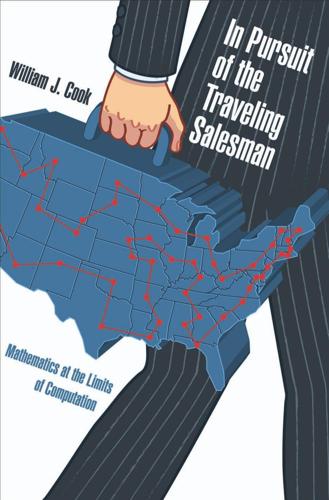
In Pursuit of the Traveling Salesman: Mathematics at the Limits of Computation
by
William J. Cook
Published 1 Jan 2011
This is something we take for granted, but the creation of programmable machines was an intellectual leap, made by Turing in his original paper. A Turing machine is a great model for describing what we mean by an algorithm, but a Turing machine is designed for a single task, such as adding two numbers. In this sense, Turing machines are closer to a pair of shoes than to an iPhone. A crucial point made by Turing, however, is that one can design a Universal Turing machine capable of simulating every Turing machine. It is possible to invent a single machine which can be used to compute any computable sequence. If this machine U is supplied with a tape on the beginning of which is written the S.D of some computing machine M, then U will compute the same sequence as M.
…
Such multiple-tape Turing machines are defined in a natural way, with separate read/write heads for each tape. Although extra tapes are convenient, anything we can compute on a multiple-tape machine can also be computed on a machine with a single tape, albeit a bit more slowly. This last point, about simulating a multiple-tape machine with a single tape, is important. We would like to define an algorithm as something that can be carried out on a single-tape Turing machine, but does this capture everything we might want in an algorithm? All we can say is that, so far, Turing machines have been able to handle everything that has been thrown at them.
…
If something is computable on a modern-day computer, then a lightning-fast Turing machine could also carry out the computation. The working assumption that we can equate algorithms and Turing machines is known as the Church-Turing Thesis.3 This thesis is widely Complexity accepted and it gives the formal model of an algorithm that is used to make precise P vs. N P and other complexity questions. Perhaps, one day, exotic computing capabilities will come along to cause us to consider an expanded definition of an algorithm, but for over seventy years Turing has served up just what the research community has needed. Universal Turing Machines There is a fundamental difference between a modern telephone, such as the iPhone, and, say, a pair of shoes.
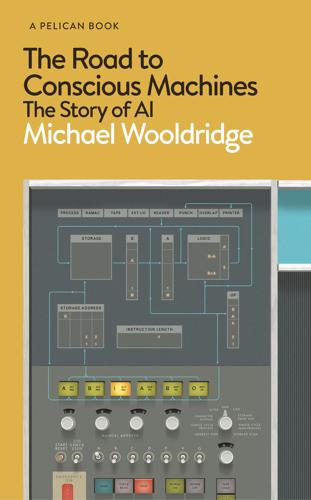
The Road to Conscious Machines
by
Michael Wooldridge
Published 2 Nov 2018
Any kind of mathematical recipe that you might care to think of can be encoded as a Turing machine. And, if all mathematical decision problems can be solved by following a recipe, then for any decision problem, you should be able to design a Turing machine to solve it. To settle Hilbert’s problem, all you had to do was show that there was some decision problem that could not be answered by any Turing machine. And that is what Turing did. His next trick was to show that his machines could be turned into general-purpose problem-solving machines. He designed a Turing machine that will follow any recipe that you give it. We now call these general-purpose Turing machines Universal Turing Machines:4 and a computer, when stripped down to its bare essentials, is simply a Universal Turing Machine made real.
…
Dealing with uncertainty is therefore a fundamental topic in AI. See also Bayes’ Theorem and Appendix C. undecidable problem A problem that we know, in a precise mathematical sense, cannot be solved by a computer (or, more exactly, by a Turing machine). Universal Turing Machine A general type of Turing machine, which provided the template for the modern computer. While a Turing machine encodes just one specific recipe/algorithm, a Universal Turing Machine can be given any recipe/algorithm. (unsound) reasoning In logic, where we derive conclusions that are not warranted by the premises. See also (sound) reasoning. Urban Challenge A 2007 follow-on to the DARPA Grand Challenge, in which autonomous vehicles were required to autonomously traverse a built-up urban environment.
…
To do this, he invented a mathematical problem-solving machine – nowadays, we call these Turing machines in his honour. A Turing machine is a mathematical description of a recipe, like the one for checking prime numbers mentioned above. All a Turing machine does is to follow the recipe it was designed for. I should emphasize that, although Turing called them ‘machines’, at this point they were nothing more than an abstract mathematical idea. The idea of solving a deep mathematical problem by inventing a machine was unconventional, to say the least – I suspect many mathematicians of the day were mystified. Turing machines are very powerful beasts. Any kind of mathematical recipe that you might care to think of can be encoded as a Turing machine.

What Algorithms Want: Imagination in the Age of Computing
by
Ed Finn
Published 10 Mar 2017
Their responses to Hilbert, now called the Church–Turing thesis, define algorithms for theorists in a way that is widely accepted but ultimately unprovable: a calculation with natural numbers, or what most of us know as whole numbers, is “effectively computable” (that is, given enough time and pencils, a human could do it) only if the Universal Turing Machine can do it. The thesis uses this informal definition to unite three different rigorous mathematical theses about computation (Turing machines, Church’s lambda calculus, and mathematician Kurt Gödel’s concept of recursive functions), translating their specific mathematical claims into a more general boundary statement about the limits of computational abstraction.
…
Church grappled with this problem and developed the lambda calculus, a masterful demonstration of abstraction that served as the philosophical foundation for numerous programming languages decades after his work.21 As Berlinski puts it, Turing had “an uncanny and almost unfailing ability to sift through the work of his time and in the sifting discern the outlines of something far simpler than the things that other men saw.”22 In other words, he possessed a genius for abstraction, and his greatest achievement in this regard was the Turing machine. Turing’s simple imaginary machine is an elegant mathematical proof for universal computation, but it is also an ur-algorithm, an abstraction generator. The mathematical equivalence of Church and Turing’s work quickly suggested that varying proofs of effective computability (there are now over thirty) all gesture toward some fundamental universal truth. But every abstraction has a shadow, a puddled remainder of context and specificity left behind in the act of lifting some idea to a higher plane of thought. The Turing machine leaves open the question of what “effectively computable” might really mean in material reality, where we leave elegance and infinite tapes behind.
…
As Hayles argues in How We Became Posthuman, theoretical models of biophysical reality like the early McCulloch–Pitts Neuron (which the logician Walter Pitts proved to be computationally equivalent to a Turing machine) allowed cybernetics to establish correlations between computational and biological processes at paradigmatic and operational levels and lay claim to being what informatics scholar Geoffrey Bowker calls a “universal discipline.”33 Via cybernetics, information was the banner under which “effective computability” expanded to vast new territories, first presenting the tantalizing prospect that Wolfram and others would later reach for as universal computation.34 As early as The Human Use of Human Beings, Wiener popularized these links between the Turing machine, neural networks, and learning in biological organisms, work that is now coming to startling life in the stream of machine learning breakthroughs announced by the Google subsidiary DeepMind over the past few years.

Turing's Cathedral
by
George Dyson
Published 6 Mar 2012
The tape is not infinite, but if more tape is needed, the supply can be counted on never to run out. Each step in the relationship between tape and Turing machine is determined by an instruction table listing all possible internal states, all possible external symbols, and, for every possible combination, what to do (write or erase a symbol, move right or left, change the internal state) in the event that combination comes up. The Turing machine follows instructions and never makes mistakes. Complicated behavior does not require complicated states of mind. By taking copious notes, the Turing machine can function with as few as two internal states. Behavioral complexity is equivalent whether embodied in complex states of mind (m-configurations) or complex symbols (or strings of simple symbols) encoded on the tape.
…
At this stage there was a close synergy between man, woman, and machine.”33 As a step toward the modern computer, Colossus represented as great a leap as the ENIAC, and was both running and replicated while the one-of-a-kind ENIAC was still being built. Each Fish was a form of Turing machine, and the process by which the Colossi were used to break the various species of Fish demonstrated how the function (or partial function) of one Turing machine could be encoded for execution by another Turing machine. Since the British did not know the constantly changing state of the Fish, they had to guess. Colossus, trained to sense the direction of extremely faint gradients that distinguished enciphered German from random alphabetic noise, was the distant progenitor of the search engine: scanning the Precambrian digital universe for fragments of the missing key, until the pieces fit.
…
Gödel was well aware that Turing’s Universal Machine and von Neumann’s implementation of it were demonstrations, if not the direct offspring, of his, Gödel’s, ideas. “What von Neumann perhaps had in mind appears more clearly from the universal Turing machine,” he later explained to Arthur Burks. “There it might be said that the complete description of its behavior is infinite because, in view of the non existence of a decision procedure predicting its behavior, the complete description could be given only by an enumeration of all instances. The universal Turing machine, where the ratio of the two complexities is infinity, might then be considered to be a limiting case.”53 Leibniz’s belief in a universal digital coding embodied his principle of maximum diversity: infinite complexity from finite rules.

In Our Own Image: Savior or Destroyer? The History and Future of Artificial Intelligence
by
George Zarkadakis
Published 7 Mar 2016
He then took Gödel’s theorem and reformulated it by replacing Gödel’s arithmetic-based notation with simple, hypothetical devices that became known as ‘Turing machines’. A Turing machine is like a tape recorder. The tape can move in both directions, back and forth, and the machine can record symbols on the tape by following simple instructions. There is also a ‘state register’, something we would today call ‘memory’, which keeps track of what the Turing machine has been up to. Remember Gödel’s genius idea of substituting logical operations and expressions with numbers? In turn, Turing substituted logical operations and expressions with Turing machines. A Turing machine took a statement as its input, applied a logical expression (or ‘formula’) that was written as a set of instructions, and produced a binary result: the statement was either true or false.
…
To build this computer model in practice Turing suggested that classical, algorithmic machines should be augmented with ‘oracles’: these are machines that can decide what is undecidable by a normal Turing machine, for instance the halting problem. But what would an oracle machine look like? And how would it function? In theory, oracle machines are just like Turing machines, with the additional ability to answer ‘yes’ or ‘no’ whenever the normal Turing machine cannot find the answer. This, effectively, transforms an improvable theorem into an axiom. Nesting Turing machines with oracles produces a hypercomputer. You can go beyond that too: you can start nesting hypercomputers together, all the way to infinity.
…
Von Neumann realised that, in essence, this meant the Universal Turing Machine could also code itself. Indeed, modern computers, which are Universal Turing Machines, have exactly this ability. All software stored in your computer can be copied to another computer, by your computer. In fact, copying is what takes place whenever you perform any transaction using a computer. When you ‘send’ an email, for example, nothing actually moves from one place to another: an exact copy of your email is reproduced in the computer of the person you want to communicate with. Von Neumann was fascinated with this self-copying property of the Universal Turing Machine. In true cybernetic fashion, he set off to formulate a general theory of self-reproduction that would include living organisms as well as machines.

Tools for Thought: The History and Future of Mind-Expanding Technology
by
Howard Rheingold
Published 14 May 2000
The instructions, not the symbols that keep track of the way they are carried out -- the rules, not the markers -- are what make the Turing machine work. Universal Turing machines are primarily symbol manipulators. And digital computers are universal Turing machines. It isn't easy to think of the rules of a game as a kind of machine. The task is somewhat easier if you think about "mechanical processes" that are so clearly and specifically defined that a machine can perform them by referring to an instruction table. All universal Turing machines are functionally identical devices for following the program specified by an instruction table.
…
All universal Turing machines are functionally identical devices for following the program specified by an instruction table. The instruction tables can differ, and they can turn the universal Turing machine into many different kinds of machine. For this reason, the programs are sometimes called "virtual machines." The distinction between a universal Turing machine and the many different Turing machines it is able to imitate is a direct analogy to digital computers. Like universal Turing machines, all digital computers are functionally identical. At the most basic level, every digital computer operates in the way our doubling machine did with the squares and Os and Xs. Instead of building a different physical machine to solve different problems, it is more practical to describe to an instruction-following machine different virtual machines (programs) that use this one-square-at-a-time mechanical instruction-following process to solve complicated problems through a pattern of simple operations.
…
The moves of the game are the changing states of the machine that correspond to the specified steps of the computation. Turing then proved that for any formal system, there exists a Turing machine that can be programmed to imitate it. This kind of general formal system with the ability to imitate any other formal system was what Turing was getting at. These systems are now known as "universal Turing machines." The theory was first stated in a paper with the forbidding title "On Computable Numbers, with an application to the Entscheidungsproblem." The Turing Machine was a hypothetical device Turing invented on the way to settling a critical question about the foundations of mathematics as a formalized means of thinking.
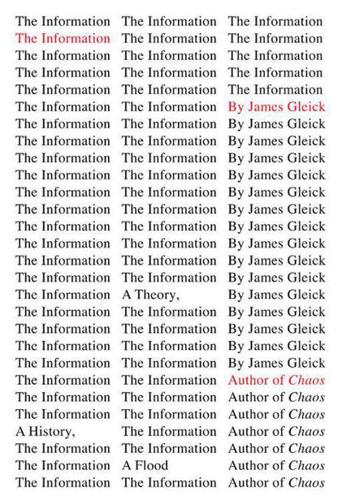
The Information: A History, a Theory, a Flood
by
James Gleick
Published 1 Mar 2011
Chaitin was not thinking about telegraphs. The device he could not get out of his head was the Turing machine—that impossibly elegant abstraction, marching back and forth along its infinite paper tape, reading and writing symbols. Free from all the real world’s messiness, free from creaking wheel-work and finical electricity, free from any need for speed, the Turing machine was the ideal computer. Von Neumann, too, had kept coming back to Turing machines. They were the ever-handy lab mice of computer theory. Turing’s U had a transcendent power: a universal Turing machine can simulate any other digital computer, so computer scientists can disregard the messy details of any particular make or model.
…
Turing’s U had a transcendent power: a universal Turing machine can simulate any other digital computer, so computer scientists can disregard the messy details of any particular make or model. This is liberating. Claude Shannon, having moved from Bell Labs to MIT, reanalyzed the Turing machine in 1956. He stripped it down to the smallest possible skeleton, proving that the universal computer could be constructed with just two internal states, or with just two symbols, 0 and 1, or blank and nonblank. He wrote his proof in words more pragmatic than mathematical: he described exactly how the two-state Turing machine would step left and right, “bouncing” back and forth to keep track of the larger numbers of states in a more complex computer. It was all very intricate and specific, redolent of Babbage.
…
In 1965 Chaitin was an undergraduate at the City College of New York, writing up a discovery he hoped to submit to a journal; it would be his first publication. He began, “In this paper the Turing machine is regarded as a general purpose computer and some practical questions are asked about programming it.” Chaitin, as a high-school student in the Columbia Science Honors Program, had the opportunity to practice programming in machine language on giant IBM mainframes, using decks of punched cards—one card for each line of a program. He would leave his card deck in the computer center and come back the next day for the program’s output. He could run Turing machines in his head, too: write 0, write 1, write blank, shift tape left, shift tape right.… The universal computer gave him a nice way to distinguish between numbers like Alice and Bob’s A and B.
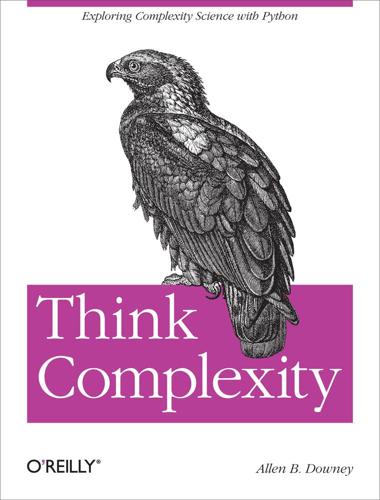
Think Complexity
by
Allen B. Downey
Published 23 Feb 2012
Actions include modifying the cell the head is over, and moving one cell to the left or right. A Turing machine is not a practical design for a computer, but it models common computer architectures. For a given program running on a real computer, it is possible (at least in principle) to construct a Turing machine that performs an equivalent computation. The Turing machine is useful because it is possible to characterize the set of functions that can be computed by a Turing machine, which is what Turing did. Functions in this set are called Turing computable. To say that a Turing machine can compute any Turing-computable function is a tautology: it is true by definition.
…
So Wolfram’s claim is that Class 4 behavior is common in the natural world and almost all of the systems that manifest it are computationally equivalent. Example 6-4. The goal of this exercise is to implement a Turing machine. See http://en.wikipedia.org/wiki/Turing_machine. Start with a copy of CA.py named TM.py. Add attributes to represent the location of the head, the action table, and the state register. Override step to implement a Turing machine update. For the action table, use the rules for a three-state busy beaver. Write a class named TMDrawer that generates an image that represents the state of the tape and the position and state of the head.
…
What is the biggest spaceship you can find? Universality To understand universality, we have to understand computability theory, which is about models of computation and what they compute. One of the most general models of computation is the Turing machine, which is an abstract computer proposed by Alan Turing in 1936. A Turing machine is a 1-D CA, infinite in both directions, augmented with a read-write head. At any time, the head is positioned over a single cell. It can read the state of that cell (usually there are only two states), and it can write a new value into the cell. In addition, the machine has a register, which records the state of the machine (one of a finite number of states), and a table of rules.

The Man From the Future: The Visionary Life of John Von Neumann
by
Ananyo Bhattacharya
Published 6 Oct 2021
Three hundred years earlier, when the philosopher René Descartes declared ‘the body to be nothing but a machine’ his student, the twenty-three-year-old Queen Christina of Sweden, is said to have challenged him: ‘I never saw my clock making babies’.8 Von Neumann was not the first person to ask the question ‘can machines reproduce?’ but he would be the first to answer it. At the heart of von Neumann’s theory is the Universal Turing machine. Furnished with a description of any other Turing machine and a list of instructions, the universal machine can imitate it. Von Neumann begins by considering what a Turing-machine-like automaton would need to make copies of itself, rather than just compute. He argues that three things are necessary and sufficient. First, the machine requires a set of instructions that describe how to build another like it – like Turing’s paper tape but made of the same ‘stuff’ as the machine itself.
…
‘Bertus’ 22, 149, 150 Budapest anti-Semitism 2, 5 Jewish population 2 Kann-Heller 2 Lenin Boys 13 Romanian occupation 13–14 von Neumann’s life in 1–9, 5, 7 Budapest, University of 6–7, 11, 25, 65 Burks, Arthur 125, 130, 231, 235, 243, 258, 265 Burroughs, William S. xiv Bush, Vannevar 77, 107 California Institute of Technology 184, 245 Cambridge, University of, King’s College 70 Cantor, Georg 20, 20–21 carbon dioxide emissions 283 cardinality 23 Carleton University, Ottawa 225 Carter, Jimmy 264 causality 29, 48–9, 51, 60, 76, 298n63 Cayley, Arthur 32 cellular automata see self-reproducing automata Cellular Automata Machine 245 chain reaction, nuclears, Monte Carlo bomb simulations 8, 80, 81–2, 87–8, 133–4 Champernowne, David 151 Champlain, SS 77 chance 144–5 Chandrasekhar, Subrahmanyan 79 Chebyshev polynomials 12–13, 295n32 chess 4, 142–3, 144, 162–3, 164, 257, 289–90n8, 313n51 China 209 Church, Alonzo 118–9 Churchill, Winston 80, 90 cities, segregation 270, 271, 272 ‘clanking replicators’ 261–3, 262 Clauser, John 57 Cliff, Rodger 2654 climate change 283, 284 Clippinger, Richard 135 closed subroutine, the 138 Cockcroft, John 301n23 Codd, Edgar 258 Cold War 218–20183, 203, 208–12 counterforce strategy 222 doctrine of preventive war 208–10 game theory analysis 212–16 ICBM threat 216–18 kill-or-be-killed paranoia 203 little wars strategy 222–4 nuclear deterrence 212–16, 221–224 paranoia 203 preventive war 208–10 Soviet aggression 222 Soviet Union hydrogen bomb test 216–17 VNs view of 208–9 Collbohm, Frank 185–6, 217 Columbia University 78, 213, 214 Communist Party of Germany (KPD) 99 Compleat Strategyst, The (Williams) 189 Computer and the Brain, The (von Neumann) 275–6 computer programmer job born 131–2 ‘low class individuals’ 278 Neumann, Klára Dán von, as one of the first 133, 135, 136–138 computer science, foundations of 70, 121 computers xiii approach to programming 134–5 Atanasoff–Berry 127 Automatic Computing Engine (ACE) 121, 125 Automatic Sequence Controlled Calculator (ASCC) see Harvard Mark I birth of 16, 28, 102–40 closed subroutine 138 coding 115–16 comparison to the brain 273–6 delay-lines 124–5 differential analysers 107–8 earliest 73 quantum 59 women’s role 85–6, 108–9, 120–1 differential analyser 107–8 EDVAC patent dispute 125–6, 127–8 EDVAC report 121–7 see First Draft of a Report on the EDVAC (von Neumann) ENIAC xi, 1054–11, 106, 120, 123, 124, 126, 127–8 ENIAC conversion 130–5, 309–10n68 First Draft of a Report on the EDVAC (von Neumann) 111, 121–7111 for-loops 116 Gödel’s contribution 111–18 Harvard Mark I 104 human 120–1 IAS project 127, 128–30, 131, 138–9, 140, 193 IBM 701 14039 JOHNNIAC 193, 194 Manchester Baby 138 MANIAC I 137, 139, 310n77 origin of 28 program-controlled 119–20 Project PY 1101 proliferation 272–3 RAND Corporation and 192–3 size 106 Small-Scale Experimental Machine (SSEM) see Manchester Baby 138 storage capacity 123 stored-program 120, 121, 122 see also First Draft of a Report on the EDVAC subroutines 119 Turing’s contribution 118–21 the universal Turing machine 118–21, 306–7n35, 307n37 virus, first 236 VNs contribution 122, 125–76, 129–130, 131, 139–140, 308n48 VNs early interests in 79–80, 103–5 von Neumann architecture 123, 128, 275 von Neumann bottleneck 123 Conan Doyle, Arthur, ‘The Final Problem’ 153–4, 165–6, 165, 314n52 Conferences on Cybernetics 227 Connes, Alain 62 Conus textile sea snail 249 Conway, John Horton 237–41, 243 hexagonal packing of circles 237, 238 Life 239–41, 239, 240, 242, 243, 244, 245, 257 Universal Turing Machine within 241, 243 survey of life forms 240 Universal Turing machine 241, 243 cooperative game theory 172–3, 176, 178, 196–7 Copeland, B.
…
Later in the paper, he uses these to help build a ‘universal computing machine’ that is capable of simulating any other Turing machine. Computer programmers today would recognize Turing’s strategy: modern programmes make use of libraries of simpler programmes known as ‘subroutines’. Subroutines simplify the structure of programs, and simpler programs are easier to understand, improve and troubleshoot. Though Turing describes his computing machine in purely abstract terms, it is quite easy to imagine building one. A Turing machine that can execute a single task might comprise a scanner, print head (erasing characters is admittedly a little trickier) and a motor that moves a ‘limitless’ roll of tape backwards and forwards.
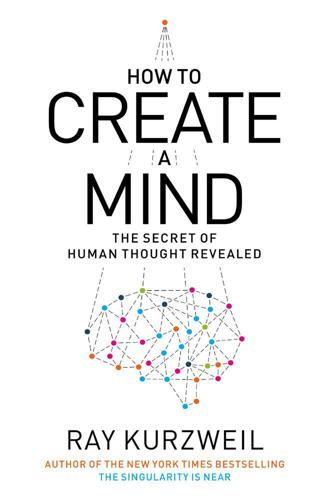
How to Create a Mind: The Secret of Human Thought Revealed
by
Ray Kurzweil
Published 13 Nov 2012
A famous unsolvable problem called the busy beaver problem is stated as follows: Find the maximum number of 1s that a Turing machine with a certain number of states can write on its tape. So to determine the busy beaver of the number n, we build all of the Turing machines that have n states (which will be a finite number if n is finite) and then determine the largest number of 1s that these machines write on their tapes, excluding those Turing machines that get into an infinite loop. This is unsolvable because as we seek to simulate all of these n-state Turing machines, our simulator will get into an infinite loop when it attempts to simulate one of the Turing machines that does get into an infinite loop.
…
Turing and Alonzo Church (1903–1995), his former professor, went on to develop the Church-Turing thesis, which states that if a problem that can be presented to a Turing machine is not solvable by it, it is also not solvable by any machine, following natural law. Even though the Turing machine has only a handful of commands and processes only one bit at a time, it can compute anything that any computer can compute. Another way to say this is that any machine that is “Turing complete” (that is, that has equivalent capabilities to a Turing machine) can compute any algorithm (any procedure that we can define). A block diagram of a Turing machine with a head that reads and writes the tape and an internal program consisting of state transitions.
…
Each state will then specify the number of the next state that the machine should be in. The input to the Turing machine is presented on the tape. The program runs, and when the machine halts, it has completed its algorithm, and the output of the process is left on the tape. Note that even though the tape is theoretically infinite in length, any actual program that does not get into an infinite loop will use only a finite portion of the tape, so if we limit ourselves to a finite tape, the machine will still solve a useful set of problems. If the Turing machine sounds simple, it is because that was its inventor’s objective. Turing wanted his machine to be as simple as possible (but no simpler, to paraphrase Einstein).
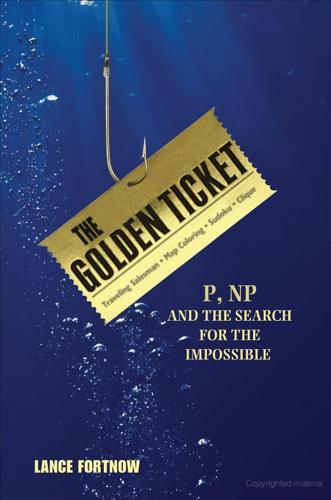
The Golden Ticket: P, NP, and the Search for the Impossible
by
Lance Fortnow
Published 30 Mar 2013
Turing used this intuition to create a formal model of computation we now call the Turing machine. Figure 5-1. Turing Machine. Though the machine was a very simple model, Turing stated that everything computable was computable by his machine. Alonzo Church at about the same time made a similar claim based on his Lambda Calculus, a rudimentary programming language. This Church-Turing thesis, developed before the invention of modern computers, has stood the test of time. Everything computable, now or in the future, is indeed computable by a Turing machine. This means we don’t have to worry about the specifics of the Turing machine; other models of computers give us no more computational power.
…
This means we don’t have to worry about the specifics of the Turing machine; other models of computers give us no more computational power. You don’t really need to understand exactly what a Turing machine is to understand computation. Just think of any programming language that has access to an unlimited amount of memory. All programming languages are functionally equivalent, and all can compute exactly what can be computed by the simple Turing machine. Turing back in 1936 showed that a Turing machine cannot in fact compute everything. The most famous example, the halting problem, says that no computer can look at some code of a program and determine whether that code will run forever or eventually halt.
…
Of course, we don’t have a Martian civilization to compare ourselves with, so we have to use our imagination. The Martians would have an Exigius machine of computation that would be different from the Turing machine but have the same computational ability. The Martians would have their own version of the Church-Turing thesis that everything computable is computable by an Exigius machine. So the Turing machine itself is not natural, but computation is. For P versus NP we have some non-Martian evidence. Researchers in Russia and North America with limited communication ended up developing the same P versus NP question and NP-complete problems.
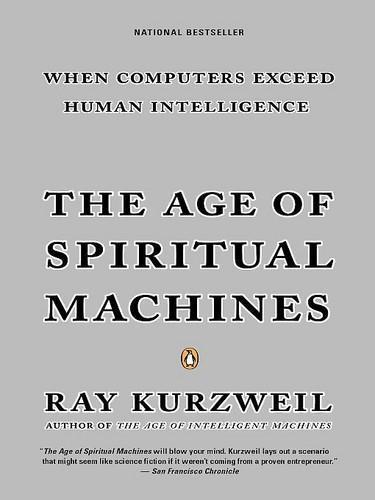
The Age of Spiritual Machines: When Computers Exceed Human Intelligence
by
Ray Kurzweil
Published 31 Dec 1998
Perhaps the most interesting unsolvable problem is called the Busy Beaver, which may be stated as follows: Each Turing machine has a certain number of commands in its program. Given a positive integer n, we construct all of the Turing machines that have n states (i.e., n commands). Next we eliminate those n-state Turing machines that get into an infinite loop (i.e., never halt). Finally, we select the machine (one that halts) that writes the largest number of 1s on its tape. The number of 1s that this Turing machine writes is called busy beaver of n. Tibor Rado, a mathematician and admirer of Turing, showed that there is no algorithm (that is, no Turing machine) that can compute the busy beaver function for all n’s.
…
Because of their hexagonal and pentagonal shape, the molecules were dubbed “buckyballs” in reference to R. Buckminster Fuller’s building designs. Busy beaver One example of a class of noncomputational functions; an unsolvable problem in mathematics. Being a “Turing machine unsolvable problem,” the busy beaver function cannot be computed by a Turing machine. To compute busy beaver of n, one creates all the n-state Turing machines that do not write an infinite number of Is on their tape. The largest number of Is written by the Turing machine in this set that writes the largest number of Is is busy beaver of n. BWA See Biowarfare Agency Byte A contraction for “by eight.” A group of eight bits clustered together to store one unit of information on a computer.
…
Turing, “On Computable Numbers with an Application to the Entscheinungs Problem,” Proc. London Math. Soc. 42 [1936]: 230-265) in an eponymous conception called the Turing machine. As with a number of Turing’s breakthroughs, he would have both the first and last word. The Turing machine represented the founding of modern computational theory. It has also persisted as our primary theoretical model of a computer because of its combination of simplicity and power.The Turing machine is one example of the simplicity of the foundations of intelligence. A Turing machine consists of two primary (theoretical) units: a tape drive and a computation unit. The tape drive has a tape of infinite length on which it can write, and (subsequently) read, a series of two symbols: zero and one.

Silence on the Wire: A Field Guide to Passive Reconnaissance and Indirect Attacks
by
Michal Zalewski
Published 4 Apr 2005
In fact, it implements the same algorithm: bits on the tape, starting at the rightmost position, are inverted until after 0 is encountered (and also inverted). This is, naturally, just the tip of the iceberg. A proper Turing machine can implement any algorithm ever conceived. The only problem is that every algorithm requires the implementation of a separate set of transition rules and internal states; in other words, we need to build a new Turing machine for every new task, which is not quite practical in the long run. Thankfully, a special type of such a machine, a Universal Turing Machine (UTM), has an instruction set that is advanced enough to implement all specific Turing machines and to execute any algorithm without the need to alter the transition table.
…
Its existence is guaranteed because a specific Turing machine can be devised to perform any finite algorithm (according to the aforementioned Church-Turing thesis). Because the method for “running” a Turing machine is itself a finite algorithm, a machine can be devised to execute it. As to the complexity of this machine, a one-bit, two-element alphabet machine (the smallest UTM devised) requires 22 internal states and instructions describing state transitions, in order to execute algorithms on a sequential infinite memory tape.[52] That’s not that big a deal. Holy Grail: The Programmable Computer The Turing machine is also far more than just a hypothetical abstract device that mathematicians use to entertain themselves.
…
Turing and Instruction Set Complexity As it turns out, the processor does not have to be complex. In fact, the set of instructions required for a chip to be able to execute just about any task is surprisingly small. The Church-Turing thesis states that every real-world computation can be carried out by a Turing machine, which is a primitive model of a computer. The Turing machine, named after its inventor, is a trivial device that operates on a potentially infinite tape consisting of single cells, a hypothetical, purely abstract storage medium. Each cell can store a single character from a machine “alphabet,” which is simply a name for a finite ordered set of possible values.

The Diamond Age
by
Neal Stephenson
Published 2 May 2000
"To discover whether it was, in fact, a Turing machine." "Well, you have your answer. Wizard 0.2 is most certainly a Turing machine-the most powerful ever built." "And the Land Beyond?" "All grown from seeds. Seeds that I invented." "And it is also a Turing machine, then? All controlled by Wizard 0.2?" "No," said King Coyote. "Managed by Wizard. Controlled by me." "But the messages in the Cipherers' Market control all the events in the Land Beyond, do they not?" "You are most perceptive, Princess Nell." "Those messages came to Wizard-just another Turing machine." "Open the altar," said King Coyote, pointing to a large brass plate with a keyhole in the middle.
…
He had plans for whole armies of Turing machines made to run in parallel, and for chains with links that could be set in more than two positions, and for machines that would read and write on two-dimensional sheets of chain mail instead of one-dimensional chains, and for a three-dimensional Turing grid a mile on a side, through which a mobile Turing machine would climb about, computing as it went. No matter how complicated his designs became, the Duke always found a way to simulate their behavior by putting a sufficiently long chain into one of the traditional Turing machines. That is to say that while the parallel and multidimensional machines worked more quickly than the original model, they didn't really do anything different.
…
They were written in the same special language used at the previous two castles. In other words, once Princess Nell had deciphered the messages, her stall functioned like another Turing machine. It would have been easy enough to conclude that this whole castle was, like the others, a Turing machine. But the Primer had taught Nell to be very careful about making unwarranted assumptions. Just because her stall functioned according to Turing rules did not mean that all of the others did. And even if every stall in this castle was, in fact, a Turing machine, she still could not come to any fixed conclusions. She had seen riders carrying books to and from the castle, which meant that cipherers must be at work elsewhere in this kingdom.

The Cultural Logic of Computation
by
David Golumbia
Published 31 Mar 2009
A term with application in nearly every academic discourse, functionalism has a specific meaning within contemporary analytic philosophy: as proposed by Hilary Putnam and subsequently adopted by other writers, functionalism is a “model of the mind” according to which “psychological states (‘believing that p,’ ‘desiring that p,’ ‘considering whether p,’ etc.) are simply ‘computational states’ of the brain. The proper way to think of the brain is as a digital computer.” This is not simply a metaphor: “according to the version of functionalism that I originally proposed, mental states can be defined in terms of Turing machine states and loadings of the memory (the paper tape of the Turing machine)” (Putnam 1988, 73). Many of its advocates give this view the straightforward name “the computer model of the mind” (e.g., Block 1990; Schank 1973). According to functionalism, the brain just is a digital computer, or something similar enough to one such that if we could discern its physical structure in sufficient detail, we would discover a binary mechanism, probably electrochemical in nature, that constitutes mental representations, exactly as a computer can be said to create representations.
…
And materialists believe that a human body is just a living body. So . . . materialists are committed to the view that the human body is—at least metaphorically—a machine. It is understandable that the notion of a Turing machine might be seen as just a way of making this materialist idea precise. Understandable, but hardly well thought out. The problem is the following: a “machine” in the sense of a physical system obeying the laws of Newtonian physics need not be a Turing machine. (4) Putnam offers some intriguing logical results to support this conclusion, but in a sense it is clearly available to empirical investigation, since many sorts of extremely sophisticated cellular and molecular “machines” are in no sense capable of universal computation in Turing’s sense (instead, they are properly analog machines, devoted to one or several tasks but not generally applicable to others).
…
In its received (sometimes called its “classical”) form, computationalism is the view that not just human minds are computers but that mind itself must be a computer—that our notion of intellect is, at bottom, identical with abstract computation, and that in discovering the principles of algorithmic computation via the Turing Machine human beings have, in fact, discovered the essence not just of human thought in practice but all thought in principle (see especially Kurzweil 1990, 1999, 2006). Today, few philosophers can accept any of the straightforward versions of computationalism (although there are certainly exceptions to this rule), generally because, as Scheutz writes, “computation, assumed to be defined in abstract syntactic terms, necessarily neglects the real-time, embodied, realworld constraints with which cognitive systems intrinsically cope” (Scheutz 2002, ix).
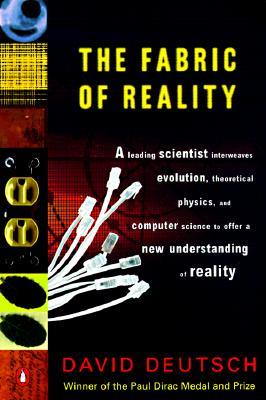
The Fabric of Reality
by
David Deutsch
Published 31 Mar 2012
Cantgotu environments Logically possible environments which cannot be rendered by any physically possible virtual-reality generator. diagonal argument A form of proof in which one imagines listing a set of entities, and then uses the list to construct a related entity that cannot be on the list. {139} Turing machine One of the first abstract models of computation. universal Turing machine A Turing machine with the combined repertoire of all other Turing machines. Turing principle (in its strongest form) It is physically possible to build a universal virtual-reality generator. On the assumptions I have been making, this implies that there is no upper bound on the universality of virtual-reality generators that will actually be built somewhere in the multiverse.
…
Turing's model of computation, and his conception of the nature of the problem he was solving, was the closest to being physical. His abstract computer, the Turing machine, was abstracted from the idea of a paper tape divided into squares, with one of a finite {131} number of easily distinguishable symbols written on each square Computation was performed by examining one square at a time moving the tape backwards or forwards, and erasing or writing one of the symbols according to simple, unambiguous rules. Turing proved that one particular computer of this type, the universal Turing machine, had the combined repertoire of all other Turing machines. He conjectured that this repertoire consisted precisely of 'every function that would naturally be regarded as computable'.
…
That is to say, even the lowliest of today's home computers can be programmed to solve any problem, or render any environment, that our most powerful computers can, provided only that it is given additional memory, allowed to run for long enough, and given appropriate hardware for displaying its results. {194} Quantum computation is more than just a faster, more miniaturized technology for implementing Turing machines. A quantum computer is a machine that uses uniquely quantum-mechanical effects, especially interference, to perform wholly new types of computation that would be impossible, even in principle, on any Turing machine and hence on any classical computer. Quantum computation is therefore nothing less than a distinctively new way of harnessing nature. Let me elaborate that claim. The earliest inventions for harnessing nature were tools powered by human muscles.

The Music of the Primes
by
Marcus Du Sautoy
Published 26 Apr 2004
Robinson felt sure that there should be a way to exploit the groundwork laid by Turing. She understood that each Turing machine gives rise to a sequence of numbers. For example, one of the Turing machines could be made to produce a list of the square numbers 1, 4, 9, 16, …, whilst another generated the primes. One of the steps in Turing’s solution of Hilbert’s Decision Problem had been to prove that no program existed that could decide whether, given a Turing machine and a number, that number is the output of the machine. Robinson was looking for a connection between equations and Turing machines. Each Turing machine, she believed, would correspond to a particular equation.
…
If there were such a connection, Robinson hoped that asking whether a number was the output of a particular Turing machine would translate into asking whether the equation corresponding to that machine had a solution. So if she could establish such a connection, she would be home. If there existed a program to test equations for solutions, as Hilbert was hoping for when he posed his tenth problem, then the same program could be used, via Robinson’s as yet hypothetical connection between equations and Turing machines, to check which numbers were outputs of Turing machines. But Turing had shown that no such program – one that could decide about the outputs of Turing machines – existed. Therefore there could be no program that could decide whether equations had solutions.
…
They would later be known as Turing machines. Hilbert had been rather vague about what he meant by a machine that could tell whether statements could be proved. Now, thanks to Turing, Hilbert’s question had been put into focus. If one of Turing’s machines could not distinguish the provable from the unprovable, then no other machine could. So were his machines powerful enough to meet the challenge of Hilbert’s Decision Problem? While he was out one day, running along the banks of the River Cam, Turing experienced the second flash of enlightenment that told him why none of these Turing machines could be made to distinguish between statements that had proofs and those that didn’t.
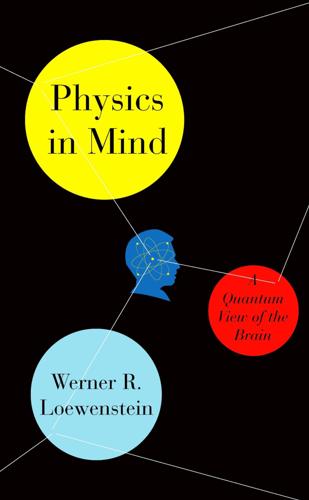
Physics in Mind: A Quantum View of the Brain
by
Werner Loewenstein
Published 29 Jan 2013
Time spans, evolutionary, 15, 18 (fig.), 33, 35 Tononi, Giulio, 303 Top-down processing, 179 Transducers, 49–51 Transmogrification. See Protein transmogrification Trellis. See Neuron trellis Tunnel diodes, 103 Tunneling, electron, 125–126 Turing, Alan, 137, 138, 140, 250 Turing machines. See Universal Turing Machines Twain, Mark, 107 Ultraviolet rays, 22, 50, 59 (fig.), 109–110, 111 Unconscious thinking, 219–221 Unification theories, 13, 156 Universal computers, 108, 140, 252, 257 Universal Turing Machines, 137–140, 142n, 143, 206, 250 Universe developmental time chart of, 17, 18 (fig.) expansion of the, 6–7, 17, 20 (fig.), 21, 155 initial information state of the, 20, 21, 23 (fig.)
…
Complex and simple cells in cortex, 193, 194–196 Computation, parallel. See Parallel computation Computation process classical versus quantum, 256–258 of Universal Turing Machines, 138–140 Computation time for gestalt recognition, 229 as a measure of complexity, 205, 206 saving, 273 See also Logical depth Computer-generated images, 140–142, 165 Computers and consciousness, 217 operational mode of, versus the brain’s, 184–185, 186, 187 protein demons as computers, 147–148 See also Universal Turing Machines Computing operations, 257 Conditional gate, 260, 261 Cones, 68, 72, 73 (fig.), 165, 166 (fig.) Conscious experience feelings and emotions, 223–226 gut feelings, 226–227 holistic aspects of, 221–223 and memory, 216, 218–219 multicellular involvement in, 159, 247 neural synchrony and, 227–228 and the passing of time, 216, 217–218 unconscious thinking, 219–221 Consciousness, xiii, 2–3, 95n, 184, 216 and the brain hemispheres, 184 competition for access to, 231–232, 233 (fig.)
…
3The Second Coming The Demons for Fast Information Transmission The Sensory Demons A Generalized Sensory Scheme The Demon Tandem How the Demon Tandems Censor Incoming Information 4The Sensors The Sensory Transducer Unit A Lesson in Economics from a Master The Silent Partner How Electrical Sensory Signals Are Generated 5Quantum Sensing The Quantum World Our Windows to the Quantum World Coherent Quantum Information Transmission The Advantages of Being Stable Why We See the Rainbow The Demons Behind Our Pictures in the Mind: A Darwinistic Physics View Why White Is White The Quantum View Again, Why White Is White Lady Evolution’s Quantum Game Plan Quantum Particles That Don’t Cut the Mustard 6Quantum into Molecular Information Boosting the Quantum A Consummate Sleight of Hand The Ubiquitous Membrane Demon 7Molecular Sensing A Direct Line from Nose to Cortex A Thousand Information Channels of Smell Mapping, Coding, and Synonymity Molecular Sensory Synonymity Why Sensory Synonymity Quantum Synonymity Harmless Double Entendres 8Electronic Transmission of Biological Information Evolution’s Favorite Leptons Electronic Information Transmission: A Development Stumped Two Old Batteries 9The Random Generators of Biomolecular Complexity Genuine Transmogrification A Quantum Random Generator of Molecular Form The Heuristics of Transmogrification The Random Generator and Our Genetic Heritage An Algorithm Is No Substitute for a Demon The Second Generator of Biomolecular Form Complexity as a Windfall Ikats 10The Ascent of the Digital Demons Quantum Electron Tunneling The Electronic Cul-de-Sac The Rise of the Digital Demons Do Plants Have Digital Demons, Too? 11The Second Information Arrow and Its Astonishing Dénouement: Consciousness The Structure of Time The Evolutionary Niche in the Structure of Time: A Hypothesis Forecognition 12How to Represent the World The Universal Turing Machine Rendering the World by Computer The Neuronal Virtual-Reality Generator Our Biased World Picture Computing by Neurons Correcting Our World Picture Flying the Coop of Our Senses 13Expanded Reality A Fine Bouquet Mathematics and Reality The Neuron Circuitry of Language The Feathers of the Brain Mathematics and Forecognition The Reluctant Sensory Brain The Limits of Knowledge A Note About Reality 14Information Processing in the Brain Cell Organization in the Brain Cortical Information-Processing Units Cortical-Cell Topography and Worldview A Last-Minute Change in Worldview Retrieving a Lost Dimension Information Processing in the Brain from the Bottom Up Being of One Mind Two Minds in One Body?

Life After Google: The Fall of Big Data and the Rise of the Blockchain Economy
by
George Gilder
Published 16 Jul 2018
Tegmark makes the case as well as it can be made that the attainments of AI programs—“Watson” the quiz-show winner and occasionally superior medical diagnostician; Big Blue the chess champion; Google’s DeepMind game players, which learned to outperform human players from scratch in dozens of electronic games; the face-recognizers; the natural language translators; the self-driving car programs—portend a super-intelligence that will someday be so superior to the human mind that we will no more comprehend its depths than a dog grasps the meaning of our own cerebrations. It is just a matter of time. Although shunning the dystopian interpretation, Kurzweil boldly offers a date: 2049. Tegmark likes to quote Edward Robert Harrison: “Hydrogen, given enough time, turns into people.” People, given enough time, presumably turn into Turing machines, and Turing machines are essentially what people used to call “God.” He isn’t shy about the godlike powers this super-AI will have: “Whatever form matter is in, advanced technology can rearrange it into any desired substances or objects, including power plants, computers, and advanced life forms.” Life 3.0 and Asilomar are declarations of principles for a post-human age.
…
The new vision ultimately led to a new information theory of biology, anticipated in principle by von Neumann and developed most fully by Hubert Yockey,10 in which human beings might eventually reprogram parts of their own DNA. More immediately, Gödel’s proof prompted Alan Turing’s invention in 1936 of the Turing machine—the universal computing architecture with which he showed that computer programs, like other logical schemes, not only were incomplete but could not even be proved to reach any conclusion. Any particular program might cause it to churn away forever. This was the “halting problem.” Computers required what Turing called “oracles” to give them instructions and judge their outputs.11 Turing showed that just as the uncertainties of physics stem from using electrons and photons to measure themselves, the limitations of computers stem from recursive self-reference.
…
He pointed out that the company had amassed some $50 billion in cash at the time and was allowing it to sit in the bank at near-zero interest rates while its vast data centers still could not identify cats as well as a three-year-old could.7 Thiel is the leading critic of Silicon Valley’s prevailing philosophy of “inevitable” innovation. Page, on the other hand, is a machine-learning maximalist who believes that silicon will soon outperform human beings, however you want to define the difference. If the haphazard Turing machine of evolution could produce human brains, just imagine what could be accomplished by Google’s constellation of eminent academics devoting entire data centers full of multi-gigahertz silicon to training machines on petabytes of data. In 2012, though, the results seemed underwhelming. Simultaneously with the dogs and cats crisis in 2012, the leader of the Google Brain research team, Jeff Dean, raised the stakes by telling Urs Hölzle, Google’s data center dynamo, “We need another Google.”

The Singularity Is Near: When Humans Transcend Biology
by
Ray Kurzweil
Published 14 Jul 2005
Finally, we select the machine (one that does halt) that writes the largest number of 1s on its tape. The number of 1s that this Turing machine writes is called the busy beaver of n. Rado showed that there is no algorithm—that is, no Turing machine—that can compute this function for all ns. The crux of the problem is sorting out those n-state machines that get into infinite loops. If we program a Turing machine to generate and simulate all possible n-state Turing machines, this simulator itself gets into an infinite loop when it attempts to simulate one of the n-state machines that gets into an infinite loop.
…
Geoffrey Woods, "Crossing the Midline," Science 304.5676 (June 4, 2004): 1455–56; Stephen Matthews, "Early Programming of the Hypothalamo-Pituitary-Adrenal Axis," Trends in Endocrinology and Metabolism 13.9 (November 1, 2002): 373–80; Justin Crowley and Lawrence Katz, "Early Development of Ocular Dominance Columns," Science 290.5495 (November 17, 2000): 1321–24; Anna Penn et al., "Competition in the Retinogenicu1ate Patterning Driven by Spontaneous Activity," Science 279.5359 (March 27, 1998): 2108–12. 73. The seven commands of a Turing machine are: (1) Read Tape, (2) Move Tape Left, (3) Move Tape Right, (4) Write 0 on the Tape, (5) Write 1 on the Tape, (6) Jump to Another Command, and (7) Halt. 74. In what is perhaps the most impressive analysis in his book, Wolfram shows how a Turing machine with only two states and five possible colors can be a universal Turing machine. For forty years, we've thought that a universal Turing machine had to be more complex than this. Also impressive is Wolfram's demonstration that rule 110 is capable of universal computation, given the right software.
…
The complexity of Babbage's invention stemmed only from the details of its design, which indeed proved too difficult for Babbage to implement using the technology available to him. The Turing machine, Alan Turing's theoretical conception of a universal computer in 1950, provides only seven very basic commands, yet can be organized to perform any possible computation.73 The existence of a "universal Turing machine," which can simulate any possible Turing machine that is described on its tape memory, is a further demonstration of the universality and simplicity of information.74 In The Age of Intelligent Machines, I showed how any computer could be constructed from "a suitable number of [a] very simple device," namely, the "nor" gate.75 This is not exactly the same demonstration as a universal Turing machine, but it does demonstrate that any computation can be performed by a cascade of this very simple device (which is simpler than rule 110), given the right software (which would include the connection description of the nor gates).76 Although we need additional concepts to describe an evolutionary process that create intelligent solutions to problems, Wolfram's demonstration of the simplicity an ubiquity of computation is an important contribution in our understanding of the fundamental significance of information in the world.
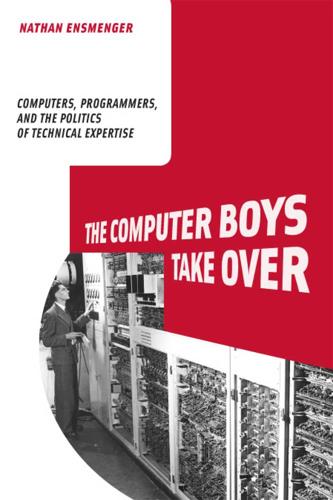
The Computer Boys Take Over: Computers, Programmers, and the Politics of Technical Expertise
by
Nathan L. Ensmenger
Published 31 Jul 2010
In order to facilitate his exploration, Turing invented a new tool, an imaginary device capable of performing simple mechanical computations. Each Turing Machine, which consisted of only a long paper tape along with a mechanism for reading from and writing to that tape, contained a table of instructions that allowed it to perform a single computation. As a computing device, the Turing Machine is deceptively simple; as a conceptual abstraction, it is extraordinarily powerful. As it turns out, the table of instructions for any Turing Machine can be rewritten to contain the instructions for building any other Turing Machine. The implication, as articulated in the Church-Turing thesis, is that every Turing Machine is a Universal Turing Machine, and by extension, every computing machine is essentially equivalent.
…
By abstracting the logical design of the digital computer from any particular physical implementation, von Neumann took a crucial first step in the development of a modern theory of computation.55 His was not the only contribution; in 1937, for example, Turing had described, for the purposes of demonstrating the limits of computation, what would become known as the Universal Turing Machine. Eventually, the Universal Turing Machine would become an even more fundamental construct of modern computer science. According to the Church-Turing thesis, first articulated in 1943 by the mathematician Stephen Kleene, any function that can be physically computed can be computed by a Universal Turing Machine. The abstraction of the technology of computing in the theoretical construct of the Turing Machine mirrored the shift toward software that was occurring in the larger commercial computing industry.
…
This means that in theory at least, all computers are functionally equivalent: any given computer is but a specific implementation of a more general abstraction known as a Universal Turing Machine. It is the Platonic ideal of the Universal Turing Machine, and not the messy reality of actual physical computers, that is the true subject of modern theoretical computer science; it is only by treating the computer as an abstraction, a mathematical construct, that theoretical computer scientists lay claim to their field being a legitimate scientific, rather than merely a technical or engineering, discipline. The story of this remarkable self-construction and its consequences is the subject of chapter 5. The idealized Universal Turing Machine is, of course, only a conceptual device, a convenient fiction concocted by the mathematician Alan Turing in the late 1930s as a means of exploring a long-standing puzzle in theoretical mathematics known as the Entscheidungsproblem.

When Einstein Walked With Gödel: Excursions to the Edge of Thought
by
Jim Holt
Published 14 May 2018
The code number of one special-purpose Turing machine could even be fed as an input onto the tape of another Turing machine. This led Turing to the idea of a universal machine: one that, if fed the code number of any special-purpose Turing machine, would function as if it actually were that special-purpose machine. For instance, if a universal Turing machine were fed the code number of the Turing machine that performed addition, the universal machine would temporarily turn into an adding machine. That is exactly what happens when your laptop, which is a physical embodiment of Turing’s universal machine, runs a word-processing program or when your smartphone runs an app.
…
In doing so, he came up with an idealized machine that defined the limits of computability: what is now known as a Turing machine. The genius of Turing’s imaginary machine lay in its stunning simplicity. (“Let us praise the uncluttered mind,” exulted one of Turing’s colleagues.) It consisted of a scanner that moved back and forth over an infinite tape reading and writing 0s and 1s according to a certain set of instructions—0s and 1s being capable of expressing all letters and numerals. A Turing machine designed for some special purpose—like adding two numbers together—could itself be described by a single number that coded its action. The code number of one special-purpose Turing machine could even be fed as an input onto the tape of another Turing machine.
…
Each machine’s functioning, moreover, could be encapsulated in a single number (typically, a very long one), so that one machine could be made to operate on another by putting the number of the second machine on the tape of the first as a sequence of 0s and 1s. If a machine were fed its own number, then it could operate on itself. Turing was thereby able to exploit something akin to the paradoxes of self-reference (“I am lying”) and show that certain sorts of Turing machines could not exist. For instance, there could be no Turing machine that, when fed with the program number of another machine, would decide whether that machine would eventually come to a halt in its computation or would grind on forever. (If there were such a machine, it could be tweaked into a Hamlet-like variant that would decide, in effect, “I will come to a halt if and only if I never come to a halt.”)
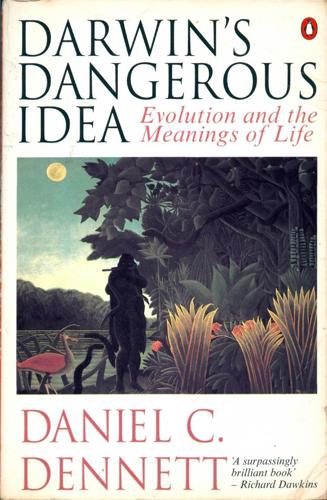
Darwin's Dangerous Idea: Evolution and the Meanings of Life
by
Daniel C. Dennett
Published 15 Jan 1995
Turing devised just such a system, and in it every computer — from your laptop to the grandest parallel supercomputer that will ever be built — has a unique description as what we now call a Turing machine. The Turing machines can each be given a unique identification number — its Library of Babel Number, if you like. Gödel's Theorem can then be reinterpreted to say that each of those Turing machines that happens to be a consistent algorithm for proving truths of arithmetic (and, not surprisingly, these are a Vast but Vanishing subset of all the possible Turing machines) has associated with it a Gödel sentence — a truth of arithmetic it cannot prove. So that is what Gödel, anchored by Turing to the world of computers, tells us: every computer that is a consistent truth-of-arithmetic-prover has an Achilles' heel, a truth it can never prove, even if it runs till doomsday.
…
They wanted something dead simple, easy to visualize and easy to calculate, so they not only dropped from three dimensions to two; they also "digitized" both space and time — all times and distances, as we saw, are in whole numbers of "instants" and "cells." It was von Neumann who had taken Alan Turing's abstract conception of a mechanical computer (now called a "Turing machine") and engineered it into the specification for a general-purpose stored-program serial-processing computer (now called a "von Neumann machine"); in his brilliant explorations of the spatial and structural requirements for such a computer, he had realized — and proved — that a Universal Turing machine (a Turing machine that can compute any computable function at all) could in principle be "built" in a two-dimensional world.6 Conway and his students also set out to confirm this with their own exercise in two-dimensional engineering.7 It was far from easy, but they showed how they could "build" a working computer out of simpler Life forms.
…
Of all the possible moves available, he saw that there was a good reason for this move, so this is what would be discovered. We can get a sense of the magnitude of the leap that such an inference takes by comparing it with a parallel leap that we can make in the Game of Life. Recall that one of the possible denizens of the Life world is a Universal Turing machine composed of trillions of pixels. Since a Universal Turing machine can compute any computable function, it can play chess — simply by mimicking the program of any chess-playing computer you like. Suppose, then, that such an entity occupies the Life plane, playing chess against itself, in the fashion of Samuel's computer playing checkers against itself.

Possible Minds: Twenty-Five Ways of Looking at AI
by
John Brockman
Published 19 Feb 2019
Von Neumann’s digital-computer architecture is conceptually the same generalization—from early digital computers constructed with electromagnetic relays at both Harvard University and Bletchley Park—that occurs in going from a special-purpose Turing Machine to a Universal Turing Machine. Furthermore, his self-replicating automata share a fundamental similarity with both the construction of a Turing Machine and the mechanism of DNA-based reproducing biological cells. There is to this day scholarly debate over whether von Neumann saw the cross connections between these three pieces of work, Turing’s and his two. Turing’s revision of his paper was done while he and von Neumann were both at Princeton; indeed, after getting his PhD, Turing almost stayed on as von Neumann’s postdoc.
…
Turing contributed a fundamental model of computation—now known as a Turing Machine—in his paper “On Computable Numbers with an Application to the Entscheidungsproblem,” written and revised in 1936 and published in 1937. In these machines, a linear tape of symbols from a finite alphabet encodes the input for a computational problem and also provides the working space for the computation. A different machine was required for each separate computational problem; later work by others would show that in one particular machine, now known as a Universal Turing Machine, an arbitrary set of computing instructions could be encoded on that same tape.
…
In 1943, Warren McCulloch and Walter Pitts came up with a model for how brains conceptually, formally, might work—an artificial neural network. They saw that their brainlike model would do computations in the same way as Turing Machines. From their work, it emerged that we could make brainlike neural networks that would act as general computers. And in fact, the practical work done by the ENIAC folks and John von Neumann and others on computers came directly not from Turing Machines but through this bypath of neural networks. But simple neural networks didn’t do much. Frank Rosenblatt invented a learning device he called the perceptron, which was a one-layer neural network.
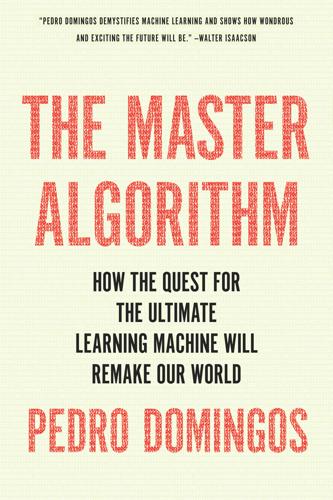
The Master Algorithm: How the Quest for the Ultimate Learning Machine Will Remake Our World
by
Pedro Domingos
Published 21 Sep 2015
Then in 1936 Alan Turing imagined a curious contraption with a tape and a head that read and wrote symbols on it, now known as a Turing machine. Every conceivable problem that can be solved by logical deduction can be solved by a Turing machine. Furthermore, a so-called universal Turing machine can simulate any other by reading its specification from the tape—in other words, it can be programmed to do anything. The Master Algorithm is for induction, the process of learning, what the Turing machine is for deduction. It can learn to simulate any other algorithm by reading examples of its input-output behavior. Just as there are many models of computation equivalent to a Turing machine, there are probably many different equivalent formulations of a universal learner.
…
See Support vector machines (SVMs) Symbolists/symbolism, 51, 52, 54, 57–91 accuracy and, 75–79 Alchemy and, 251–252 analogizers vs., 200–202 assumptions and, 64 conjunctive concepts, 65–68 connectionists vs., 91, 94–95 decision tree induction, 85–89 further reading, 300–302 hill climbing and, 135 Hume and, 58–59 induction and, 80–83 intelligence and, 52, 89 inverse deduction and, 52, 82–85, 91 Master Algorithm and, 240–241, 242–243 nature and, 141 “no free lunch” theorem, 62–65 overfitting, 70–75 probability and, 173 problem of induction, 59–62 sets of rules, 68–70 Taleb, Nassim, 38, 158 Tamagotchi, 285 Technology machine learning as, 236–237 sex and evolution of, 136–137 trends in, 21–22 Terrorists, data mining to catch, 232–233 Test set accuracy, 75–76, 78–79 Tetris, 32–33 Text classification, support vector machines and, 195–196 Thalamus, 27 Theory, defined, 46 Theory of cognition, 226 Theory of everything, Master Algorithm and, 46–48 Theory of intelligence, 35 Theory of problem solving, 225 Thinking, Fast and Slow (Kahneman), 141 Thorndike, Edward, 218 Through the Looking Glass (Carroll), 135 Tic-tac-toe, algorithm for, 3–4 Time, as principal component of memory, 217 Time complexity, 5 The Tipping Point (Gladwell), 105–106 Tolstoy, Leo, 66 Training set accuracy, 75–76, 79 Transistors, 1–2 Treaty banning robot warfare, 281 Truth, Bayesians and, 167 Turing, Alan, 34, 35, 286 Turing Award, 75, 156 Turing machine, 34, 250 Turing point, Singularity and, 286, 288 Turing test, 133–134 “Turning the Bayesian crank,” 149 UCI repository of data sets, 76 Uncertainty, 52, 90, 143–175 Unconstrained optimization, 193–194. See also Gradient descent Underwood, Ben, 26, 299 Unemployment, machine learning and, 278–279 Unified inference algorithm, 256 United Nations, 281 US Patent and Trademark Office, 133 Universal learning algorithm. See Master Algorithm Universal Turing machine, 34 Uplift modeling, 309 Valiant, Leslie, 75 Value of states, 219–221 Vapnik, Vladimir, 190, 192, 193, 195 Variance, 78–79 Variational inference, 164, 170 Venter, Craig, 289 Vinge, Vernor, 286 Virtual machines, 236 Visual cortex, 26 Viterbi algorithm, 165, 305 Voronoi diagrams, 181, 183 Wake-sleep algorithm, 103–104 Walmart, 11, 69–70 War, cyber-, 19–21, 279–282, 299, 310 War of the Worlds (radio program), 156 Watkins, Chris, 221, 223 Watson, James, 122, 236 Watson, Thomas J., Sr., 219 Watson (computer), 37, 42–43, 219, 237, 238 Wave equation, 30 Web 2.0, 21 Web advertising, 10–11, 160, 305 Weighted k-nearest-neighbor algorithm, 183–185, 190 Weights attribute, 189 backpropagation and, 111 Master Algorithm and, 242 meta-learning and, 237–238 perceptron’s, 97–99 relational learning and, 229 of support vectors, 192–193 Welles, Orson, 156 Werbos, Paul, 113 Wigner, Eugene, 29 Will, George F., 276 Williams, Ronald, 112 Wilson, E.
…
“All humans are mortal” is much more succinct than seven billion statements of mortality, one for each human. Memorization gives us none of these things. Another candidate Master Algorithm is the microprocessor. After all, the one in your computer can be viewed as a single algorithm whose job is to execute other algorithms, like a universal Turing machine; and it can run any imaginable algorithm, up to its limits of memory and speed. In effect, to a microprocessor an algorithm is just another kind of data. The problem here is that, by itself, the microprocessor doesn’t know how to do anything; it just sits there idle all day. Where do the algorithms it runs come from?
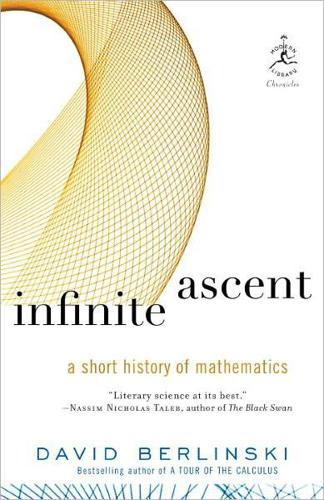
Infinite Ascent: A Short History of Mathematics
by
David Berlinski
Published 2 Jan 2005
At any given moment, the reading head may occupy one of a number of internal states. These, too, are finite and correspond in an unspecified way to various internal configurations of the reading head, so that what the Turing machine does is a function not only of what at any moment it sees, but what at any moment it is. There is not much else. A Turing machine is a deterministic device, and like an ordinary machine, it does what it must do. Turing machines can nonetheless do rather an astonishing variety of intellectual tasks. Addition is an example, as with a few notational elaborations the logician may be observed constructing a calculating device out of thin air.
…
No matter where logicians begin in defining the algorithm, they always end up in the same place. Gödel regarded this circumstance as a miracle. FIG. 10.1 And so it is. In virtue of its elegance and obviousness, the definition of an algorithm in terms of Turing machines has become the standard. The usual operations of arithmetic are all Turing-computable. So, too, most algorithms. So, too, Church argued, any algorithm, the concept of a Turing machine exhausting completely the idea of an effective calculation. This last claim is known as Church’s thesis, and in the seventy years since it was advanced, it has passed progressively from a conjecture, to a persuasive definition, to a law of nature, to an unbudgeable fixture in contemporary thought.
…
An effective calculation is any calculation that could be undertaken, Turing argued, by an exceptionally simple imaginary machine, or even a human computer, someone who has, like a clerk in the department of motor vehicles or a college dean, been stripped of all cognitive powers and can as a result execute only a few primitive acts. A Turing machine consists of a tape divided into squares and a reading head. Although finite, the tape may be extended in both directions. The reading head, as its name might suggest, is designed to recognize and manipulate a finite set of symbols—0 and 1, for most purposes. Beginning at an initial square, the reading head is capable of moving to the left or to the right on the tape, one square at a time, and it is capable of writing symbols on the tape or erasing the symbols that it is scanning.
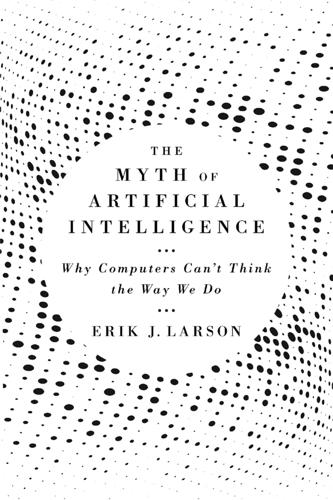
The Myth of Artificial Intelligence: Why Computers Can't Think the Way We Do
by
Erik J. Larson
Published 5 Apr 2021
Hilbert was wrong.6 IMPLICATIONS FOR AI What is important to AI here is this: Turing disproved that mathematics was decidable by inventing a machine, a deterministic machine, requiring no insight or intelligence to solve problems. Today, we refer to his abstract formulation of a machine as a Turing machine. I am typing on one right now. Turing machines are computers. It is one of the great ironies of intellectual history that the theoretical framework for computation was put in place as a side-thought, a means to another end. While working to disprove that mathematics itself was decidable, Turing first invented something precise and mechanical, the computer.
…
His thesis considered the powers of ingenuity, by creating ever more complicated systems of rules. (Ingenuity, it turned out, could become universal—there are machines that can take as input other machines, and thus run all the machines that can be built. This insight, technically a universal Turing machine and not a simple Turing machine, was to become the digital computer.) But in his formal work on computing, Turing had (perhaps inadvertently) let the cat out of the bag. By allowing for intuition as distinct from and outside of the operations of a purely formal system like a computer, Turing in effect suggested that there may be differences between computer programs that do math and mathematicians.
…
(In a moment of sheer panic, it occurs to her that this logic jeopardizes the entire enterprise of getting to superintelligence, but she manages to suppress this concern quickly.) Alice decides, in deference to AI’s founder and to the eager-beaver marketing department of her company, Ultra++, that she’ll instead focus on designing a machine as intelligent as Alan Turing, called the Turing-Machine. Now, assuming that Turing was smarter than Alice (though who is to say?), she can’t just design a Turing-Machine directly, and anyway she already ran into a brick wall puzzling out how to design a Bob-Machine. She decides to begin with a machine that’s as smart as Hugh Alexander—Turing’s colleague at Bletchley Park and a one-time chess champion of Cambridge.
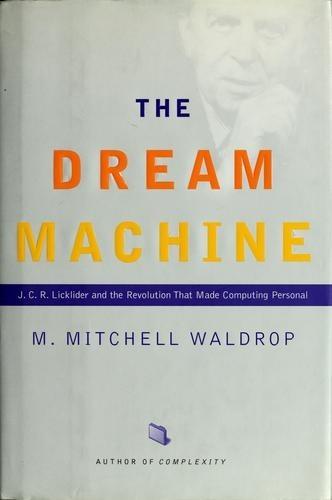
The Dream Machine: J.C.R. Licklider and the Revolution That Made Computing Personal
by
M. Mitchell Waldrop
Published 14 Apr 2001
Their own paper, published in 1943 as "A Logical Calculus of the Ideas Immanent in Nervous Activity," was essentially a demonstration that their idealized neural networks were functionally equivalent to Turing machines. That is, any problem that a Turing machine could solve, an appropriately designed network could also solve. And conversely, anything that was beyond a Turing machine's power-such as the decidability problem-was likewise beyond a network's power. As the science historian William Aspray has written, "With the Turing machines providing an abstract characterization of thinking in the machine world and McCulloch and Pitts's neuron nets providing one in the biological world, the equivalence result suggested a unified theory of thought that broke down barriers between the physical and biological worlds."14 Or, as McCulloch himself would put it in his 1965 autobiography Embodiments of Mind, he and Pitts had proved the equivalence of all general Turing machines, whether "man-made or begotten."
…
And to enable transformations between sentence structures-the sort of thing we do all the time when we go from, say, active voice Oohn kissed Mary) to passive (Mary was kissed by John) or to a question (Whom did John kiss?)- you need a grammar from the most powerful class of all, the one that is mathe- matically equivalent to a Turing machine. To put it another way, the very fact that we human beings use language in the way we do is proof that, in some sense, our brains have the computational power of a Turing machine. Or to express it still another way, the pinnacle of all possi- ble mathematical machines-the Turing machine-is also the baseline, the mini- mum needed for human cognition. Anybody who seriously wants to understand the workings of the mind had better start from there, because nothing less will do.
…
In at least one instance, moreover, his theory proved to be spectacularly prescien t. In the case of, say, a factory machine tool, von Neumann observed, you have an automaton that can turn out very complex parts but not another machine tool. Likewise, a universal Turing machine can output an arbitrarily complex tape but not another Turing machine. However, in almost any biological organ- ism, you have an automaton that can not only reproduce identical copies of it- self but also (through evolution) give rise to organisms that are more complex than itself. So von Neumann asked, What are the essential features required for an automaton to reproduce itself and to evolve?
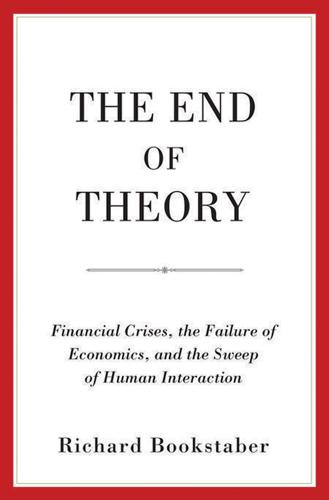
The End of Theory: Financial Crises, the Failure of Economics, and the Sweep of Human Interaction
by
Richard Bookstaber
Published 1 May 2017
See also Russell, Bertrand; Whitehead, Alfred North radical uncertainty, 12, 18; defined as, 50–51; economists’ view of, 197; and heuristics, 68; and the Library of Babel, 63 (see also Library of Babel); and the limits to knowledge, 52; and the nature of humanity, 60; and risk management, 121; in unknown state versus unknown probabilities, 198; and warfare, 117, 121 railroads, 4 rational expectations, 86 Rational Expectations Hypothesis (REH); fallibility and, 175; and reflexivity, 175; reflexivity, comparison to, 115 rationality, 87 reflexivity, 58, 60, 113; and complexity, 115, 122; and the cognitive function, 114, 137–138; and elements in modeling, 114; and fallibility, 59; and heuristics, 115; manipulative function in, 114, 137–138; time-and-context in, 183 regime shift, 105 regularity conditions, 29 regulators, 15 representative agent, 81–82 reproduction, 72–73 Reynolds, Craig, and boids, 37 Ricardo, David, 3–4, 91, 188 risk management: radical uncertainty in, 121 (see also radical uncertainty); in warfare, 121 risk transformations, 131 Rome, 131 Rorty, Richard, 178 Rothschild, Baron, 4 Royal Society, 52 Rumsfeld, Donald, 50 Russell, Bertrand, 52–53 Saari, Donald, 29 Samuelson, Paul, 84 Sartre, Jean-Paul, 77 Sargent, Thomas, 71, 103 Saturday Night Live, 144 Say, Jean-Baptiste, 4 Securities and Exchange Commission (SEC), 147–148 securities lenders, 136 self-fulfilling prophecy, 113 self-referential systems, 57, 60 self-replication, 31 Shackle, G.L.S., 85 Sharpe, William, 85 Shereshevsky, Solomon, 76–77 Simon, Herbert, 110 SIVs, 161, 165 Slick, Grace, 50 Smith, Adam, 3–4, 188 Societie Generale (SocGen), 164 Solow, Robert, 92 Soros, George, 83, 115, 137; and reflexivity, 58–59 stampede: and emergence, 35–36; Hajj, example of, 34–36 Standard & Poor’s, 160 stock market crash (October 1987): and the New York Stock Exchange (NYSE), 145–147; and portfolio insurance, 145–147 (see also portfolio insurance); and the S&P 500, 145–147 subprime mortgages, 160–161 Sun Pin, 117 Syll, Lars, 138 Thomas Theorem, 108 tight coupling, 112 Turing, Alan: and David Hilbert’s program, 54 (see also halting problem); and the halting problem, 31, 55; and the printing problem, 55; and Turing test, 196; and the universal Turing machine (UTM), 54 (see also universal Turing machine) Tversky, Amos, 45–47 Unbearable Lightness of Being, The, 60–61 uncertainty principle, 56–57; and the limits to knowledge, 51 universal Turing machine (UTM), 32, 54–56 University of Chicago, 3 Victorian England, 3–4 Volcker Rule, 156, 158 Walras, Leon, 194 Washington Mutual, 11 white night, 131 Whitehead, Alfred North, 52–53 Wittgenstein, Ludwig, 40 Wolfram, Stephen, 26–27 A NOTE ON THE TYPE This book has been composed in Adobe Text and Gotham.
…
Turing’s colleague Alonzo Church (who, independently of Turing, had also demonstrated the impossibility of Hilbert’s program) called this the Turing machine. Turing went a step further, and added to the machine a set of instructions that were internal to the machine and were not altered over the course of execution. The instruction set could be for any computation we can envision, and so this became known as the universal computing machine, or the universal Turing machine (UTM). The UTM is a momentous achievement; it is the foundation for modern computers. It allows for the essential elements of computing—reading, writing, a database (in Turing’s conception, held on an infinitely long tape), short-term memory of the state of the computation, and the instructions to execute held internally as part of the database.
…
See MGonz Chernobyl, nuclear accident of, 112 Church, Alonzo, 54 Citigroup, 11, 166 Clower, Robert, 85 cockroach, 68, 74; defense mechanism of, 66; and omniscient planner, 66–67 Coleman, Henry, 5 collateral: haircuts and, 131; risk reduction of, 204; transformations of, 131 commercial paper, 136 Commodity Futures Trading Commission (CFTC), 147–148 complexity: and chaos theory, 110–111; in comparison to computational irreducibility, 108, 122; description of, 109–112; and emergence, 108, 122; and ergodicity, 111, 122; and financial crises, 112 (see also financial crises); and informational irreducibility, 109–110; investigation of by Gotfried Wilhelm Leibniz, 109; and neoclassical economics, 123–124 (see also neoclassical economics); and network theory, 110; and nonlinear systems, 110–111; and the OODA loop, 122 (see also OODA Loop); and radical uncertainty, 112, 122; and strategic complexity, 122–124 computational irreducibility, 12, 18, 33; crises and, 105; and heuristics, 65; and the Library of Babel, 62–63; and maps, 26; and mathematical shortcuts, 26; and neoclassical economics, 83 (see also neoclassical economics); and three-body problem, 27–28 (see also three-body problem); and Turing’s halting problem, 55 computers, and the universal Turing machine, 54. See also universal Turing machine Conway, John, 30. See also Conway’s Game of Life Conway’s Game of Life: as an agent-based model, 32–33, 122–123; and boids, 37; and computational irreducibility, 32; and context, 122–124; in the context of radical uncertainty, 123–124; emergence in, 32; rules of, 30–31; self-replication features of, 32; and Turing’s halting problem, 55 credit default swaps, 163–165 Cruise, Tom, 94 Darwin, Charles, 72–73 Dawkins, Richard, 181 decimalization, 149 deduction, 15, 107, 124, 180–183, 188–189 degenerative research program, 90–91 Demon of Our Own Design, A, 108, 157 Department of Defense, 158 Deutsche Bank, 165 diversification, 15–16 Dodd-Frank Act, 156–157 Dostoyevsky, Fyodor, 116 Duffie, Darrell, 152–153 dynamic stochastic general equilibrium model, 92 efficient market hypothesis, 116 emergence, 12; and boids, 37; and complexity, 38; and crises, 105; flock of birds movement, example of, 37; and Hajj stampede, 35–36; and heuristics, 65; and limits to knowledge, 52; and neoclassical economics, 83 (see also neoclassical economics); school of fish movement, example of, 36; and stability, 39; stampedes, example of 127–128; traffic example, 95, 97–98; and traffic flow, 17, 94 enclosures, 5 equilibrium, crises of, 104–105 ergodicity, 12, 17–18, 41, 196; context of, 40; history of, 40; and limits to knowledge, 52; and MGonz, 44; and neoclassical economics, 84 (see also neoclassical economics); in physical systems, 40; in physical versus social sciences, 85; testing models of, 177 essayism, 178 eternal recurrence, 60 fallibility, 59, 115, 117; and the rational expectations hypothesis, 175 Feynman, Richard, 54, 90 financial crises: fire marshal analogy, 127–129; financial crisis of 1987, 90; financial crisis of 2008, 92 (see also financial crisis of 2008); structure of, 129 financial crisis of 2008, 157; an agent-based view, 160; contagion during, 160; leverage and, 156, 176; liquidity and, 156; market-to-market difficulties and, 159–164; regulation and, 156; role of AIG in, 163–165; role of Bear Stearns Asset Management (BSAM) in, 161–162 (see also Bear Stearns Asset Management); role of Goldman Sachs in, 163–164 financial institutions: agents of, 99, 106; interactions between, 128–131 financial markets: complexity of, 108–109, 157; crisis in, 14–16, 108–109; environment of, 100–101; fire marshal analogy, 127–128; and Flash Crash, 147–151; and liquidity, 206; and reflexivity, 59; structure of, 128; weather analogy 113, 185–186 Financial Stability Oversight Council, 158 financial system: fire marshal analogy, 129; flows of, 131; multilayer schematic of, 131, 134; schematic system of, 129; structure of, 129, 131 fire sale, 107; asset-based, 138; funding-based, 139 Flash Crash, 147; effect of decimalization on, 149–150; effect of high-frequency trading on, 150; The Price is Right analogy, 148–150 Flaubert, Gustave, 116 Freudianism, 58 Frydman, Roman, 175 funding, 131, 134; cash providers of, 136; and collateral, 137; flows within financial system, 137; and hedge funds, 136; securities lenders for, 136 funding runs, 138–139 Funes, the Memorious, 75–78 Game of Life.
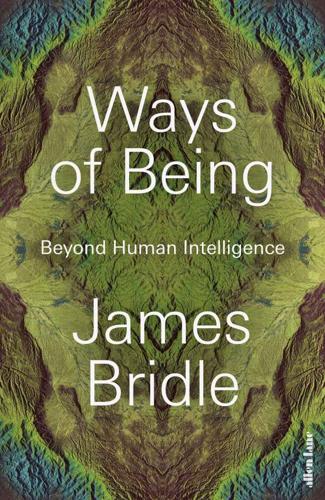
Ways of Being: Beyond Human Intelligence
by
James Bridle
Published 6 Apr 2022
One of the most interesting of those branches is to be found budding on the eve of the Second World War, at the very moment the modern computer was conceived. The kind of computer I am using – that we are all using – is based on something called a Turing machine. This is the model of a computer described theoretically by Alan Turing in 1936. It’s what’s called an ideal machine – ideal as in imaginary, but not necessarily perfect. The Turing machine was a thought experiment, but because it came to form the basis for all future forms of computation, it also altered the way we think. Turing’s imaginary machine consisted of a long strip of paper and a tool for reading and writing onto it, like a tape recorder.
…
Almost every computer in the world is just a more elaborate version of a strip of paper and a read/write head. Every time you open an email, type on a keyboard, take money out of an ATM, play a digital song, stream a movie or see through a satellite, you are working with an incarnation of a Turing machine: symbols read and written from the equivalent of a strip of tape. I am writing this on a Turing machine; there’s also a chance you’re reading it on one (and if not, many were still necessary to produce what you hold in your hands). These Turing-imagined computers are in some way responsible for almost every aspect of our lives. But their sheer ubiquity masks a powerful realization: almost every computer working today represents only a tiny fraction of what computers might be.
…
This was the focus of a question laid down by the German mathematician David Hilbert in his influential Entscheidungsproblem of 1928, which asked whether it was possible to construct a step-by-step, algorithmic process to solve what are called ‘decision problems’. Given a yes/no question, could you write a set of instructions which would be guaranteed to give a yes/no answer? Turing concluded that it was not, but in doing so he created a novel framework for computing decision problems in general – the Turing machine – which gave us the modern computer. So decidability has a very specific and technical definition in computer science, and Turing’s machine gave us a method for dealing with it. But what I am interested in is undecidability. Undecidability has a technical meaning too – but it also has a real meaning, a literal meaning, referring to that which we cannot know for certain.
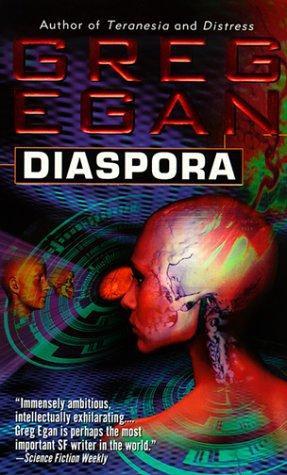
Diaspora
by
Greg Egan
Published 1 Jan 1997
Think of a row of Wang Tiles as being like the data tape of a Turing Machine." Paolo had the library grant him knowledge of the term; it was the original conceptual form of a generalized computing device, an imaginary machine which moved hack and forth along a limitless one-dimensional data tape, reading and writing symbols according to a given set of rules. "With the right set of tiles, to force the right pattern, the next row of the tiling will look like the data tape after the Turing Machine has performed one step of its computation. And the row after that will be the data tape after two steps, and so on. For any given Turing Machine, there's a set of Wang Tiles that can imitate it."
…
You've found a pattern? Don't tell me: our set of twenty thousand polysaccharide Wang Tiles just happens to form the Turing Machine for calculating pi." "No. What they form is a universal Turing Machine. They can calculate anything at all-depending on the data they start with. Every daughter fragment is like a program being fed to a chemical computer. Growth executes the program." "Ah." Paolo's curiosity was roused-but he was having some trouble picturing where the hypothetical Turing Machine put its read/write head. "Are you telling me only one tile changes between any two rows, where thèmachine' leaves its mark on thèdata tape' ... .
…
"Are you telling me only one tile changes between any two rows, where thèmachine' leaves its mark on thèdata tape' ... . The mosaics he'd seen were a riot of complexity, with no two rows remotely the same. Karpal said, "No, no. Wang's original example worked exactly like a standard Turing Machine, to simplify the argument ... but the carpets are more like an arbitrary number of different computers with overlapping data, all working in parallel. This is biology, not a designed machine-it's as messy and wild as, say, a mammalian genome. In fact, there are mathematical similarities with gene regulation: I've identified Kauffman networks at every level, from the tiling rules up; the whole system's poised on the hyperadaptive edge between frozen and chaotic behavior."
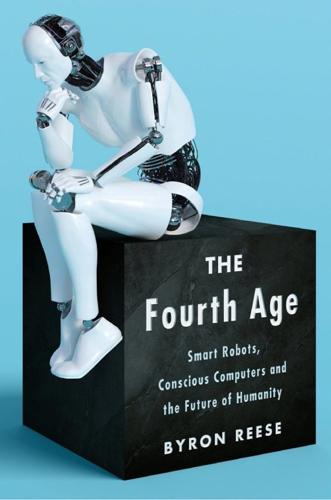
The Fourth Age: Smart Robots, Conscious Computers, and the Future of Humanity
by
Byron Reese
Published 23 Apr 2018
Almost all of them.” In fact, anything a computer can do today, you could theoretically do on a Turing machine. And Turing not only conceived of the machine but figured all this out. Consider that simple machine, that thought experiment with just a handful of parts: Everything Apollo 11 needed to do to make it to the moon and back could be programmed on a Turing Machine. Everything your smartphone can do can be programmed on a Turing machine, and everything IBM Watson can do can be programmed on a Turing machine. Who could have guessed that such a humble little device could do all that? Well, Turing could, of course.
…
Turing’s contribution at this point in our tale came in 1936, when he first described what we now call a Turing machine. Turing conceived of a hypothetical machine that could perform complex mathematical problems. The machine is made up of a narrow strip of graph paper, which, in theory, is infinitely long. On the graph paper there is always a single active cell, and above that cell hovers a head. The head can read and write to the paper and move around a bit, based on the instructions it receives or the programs it runs. The point of the Turing machine was not “Here’s how you build a computer” but rather, “This simple imaginary device can solve an enormous range of computational problems.
…
Well, Turing could, of course. But no one else seems to have had that singular idea. Exit Turing. Enter John von Neumann, whom we call the father of modern computing. In 1945, he developed the von Neumann architecture for computers. While Turing machines are purely theoretical, designed to frame the question of what computers can do, the von Neumann architecture is about how to build actual computers. He suggested an internal processor and computer memory that holds both programs and data. In addition to the computer’s memory, there might also be external storage to hold data and information not currently needed.
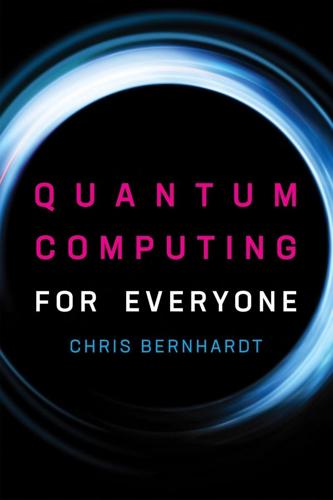
Quantum Computing for Everyone
by
Chris Bernhardt
Published 19 Mar 2019
This is what Peter Shor achieved in his 1994 landmark paper, in which he showed (among other things) how quantum computing could be used to break the codes that are currently used for Internet security. We will briefly discuss Shor’s algorithm in the next chapter, where we look at the impact of quantum computing. * NP comes from nondeterministic polynomial, which in turn refers to certain types of Turing machines that are called nondeterministic Turing machines. ** “Quantum theory, the Church-Turing principle and the universal quantum computer,” Proceedings of the Royal Society A 400 (1818): 97–117. *** You may have seen systems of linear equations before and remember that you need n equations to solve a system with n unknowns.
…
The point of this is that we don’t have to worry about how to write an algorithm that emulates the function, so we don’t have to calculate the number of steps that function takes to evaluate the input. We just keep track of the number of questions. This is much simpler. To illustrate, we begin with the most elementary example. Deutsch’s Algorithm David Deutsch is one of the founders of quantum computing. In 1985, he published a landmark paper that described quantum Turing machines and quantum computation.** This paper also includes the following algorithm—the first to show that a quantum algorithm could be faster than a classical one. The problem concerns functions of just one variable. The input can be either 0 or 1. The output also just takes the values of 0 or 1. There are four of these functions that we will denote , , and : The function sends both inputs to 0; i.e., and .
…
Computation Alan Turing is one of the fathers of the theory of computation. In his landmark paper of 1936 he carefully thought about computation. He considered what humans did as they performed computations and broke it down to its most elemental level. He showed that a simple theoretical machine, which we now call a Turing machine, could carry out any algorithm. Turing’s theoretical machines evolved into our modern day computers. They are universal computers. Turing’s analysis showed us the most elemental operations. These involve the manipulation of bits. But remember, Turing was analyzing computation based on what humans do.
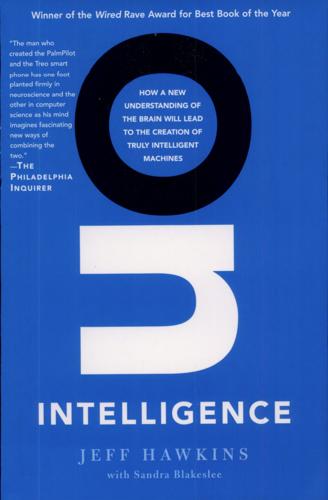
On Intelligence
by
Jeff Hawkins
and
Sandra Blakeslee
Published 1 Jan 2004
Turing proved, mathematically, that if you choose the right set of rules for the CPU and give it an indefinitely long tape to work with, it can perform any definable set of operations in the universe. It would be one of many equivalent machines now called Universal Turing Machines. Whether the problem is to compute square roots, calculate ballistic trajectories, play games, edit pictures, or reconcile bank transactions, it is all 1's and 0's underneath, and any Turing Machine can be programmed to handle it. Information processing is information processing is information processing. All digital computers are logically equivalent. Turing's conclusion was indisputably true and phenomenally fruitful.
…
Nor did he think he could define intelligence formally, so he didn't even try. Instead, he proposed an existence proof for intelligence, the famous Turing Test: if a computer can fool a human interrogator into thinking that it too is a person, then by definition the computer must be intelligent. And so, with the Turing Test as his measuring stick and the Turing Machine as his medium, Turing helped launch the field of AI. Its central dogma: the brain is just another kind of computer. It doesn't matter how you design an artificially intelligent system, it just has to produce humanlike behavior. The AI proponents saw parallels between computation and thinking.
…
Sure, people do all this with brains and not with the kinds of computers we build, but Turing has shown that it doesn't matter how you implement or manipulate the symbols. You can do it with an assembly of cogs and gears, with a system of electronic switches, or with the brain's network of neurons whatever, as long as your medium can realize the functional equivalent of a Universal Turing Machine." This assumption was bolstered by an influential scientific paper published in 1943 by the neurophysiologist Warren McCulloch and the mathematician Walter Pitts. They described how neurons could perform digital functions that is, how nerve cells could conceivably replicate the formal logic at the heart of computers.

The Secret Life of Bletchley Park: The WWII Codebreaking Centre and the Men and Women Who Worked There
by
Sinclair McKay
Published 24 May 2010
Yet he was a more radical, open, honest soul than the accounts suggest. Turing became a Fellow of King’s College before, in the late 1930s, heading for the United States, to Princeton. Building bridges between the two disciplines of mathematics and applied physics, he threw himself into the construction of a ‘Turing machine’, a machine that could carry out logical binary calculations. Having seen a tide-predicting machine some years back in Liverpool, it occurred to him that the principle of this device could be applied to his own machine, greatly speeding its function. By 1938, when it was increasingly clear that war was coming to the whole of Europe, Turing returned to England, and to King’s, with his electric multiplier machine mounted on a bread-board.
…
Even in the years that followed the war, with all the technological progress that had been made, Turing’s devices tended to fulfil the stereotype of the mad scientist’s invention: a labyrinth of wires trailing everywhere, held together with sticking plaster. Prior to his premature death in 1954, his home in Manchester was filled with extraordinary and sometimes pungent chemical experiments. Turing had fixed upon the idea of a ‘Universal Turing Machine’ in the 1930s; the inspiration had been provided by a mathematical problem posed in Cambridge, concerning the provability of any given mathematical assertion. Turing had the idea of developing a machine that could carry out this task. When first trying to envisage the form of such a machine, Turing thought of typewriters, how they were built to carry out a certain sort of function.
…
According to his biographer Andrew Hodges, he had in his head an idea of a super-typewriter: a machine that could identify symbols; that could write, but could also erase. A machine that could be configured in many ways to carry out many tasks, and yet would be automatic, requiring little or no intervention from a human operator. His argument was that any calculation that a human could perform, a machine could perform as well. The bombes were not Universal Turing Machines. Far from it. Nor were they an extension of the Polish ‘bomba’ machines, from which their name was taken. The British bombe was quite a different thing. In one sense, it was a philosophical response to the nature of Enigma. Despite the daunting number of combinations thrown up by Enigma, it none the less worked via a mechanical process.

Paper Machines: About Cards & Catalogs, 1548-1929
by
Markus Krajewski
and
Peter Krapp
Published 18 Aug 2011
This comparison is not to claim that the index catalog is already a Turing machine. Comparisons, transfers, and analogies are not that simple. If the elements of a universal discrete machine are present, they still lack the computational logic of an operating system, the development of which constitutes Turing’s foundational achievement. What is described here is merely the fact that the card catalog is literally a paper machine, similar to a nontrivial Turing machine only in having similar components—no more, no less. 16. See for instance note 15 regarding the limits of the Turing machine analogy, note 1 of chapter 2 for the book flood metaphor, and notes 62 of chapter 2 and 42 of chapter 4 for the business card and bank note comparisons, respectively.
…
This epistemological payoff is contained in the description—in short, the necessary catachresis of historiography activates insights that are called forth by the various connotations of the metaphors chosen. 8 Chapter 1 Thus, readers ought not be too surprised by references that may appear peculiar at first. They will find correspondences between index cards and bank notes, house numbers and book shelving, card catalogs and Turing machines, masses of books and their description as waves of a flood. These images are called upon consciously, at times by way of historical quotations. Even if it is clear that a card catalog does not perfectly resemble the digital calculator or computer, I maintain that the card catalog is one precursor of computing.14 On the software side, the components of the catalog and its function correspond to the theoretical concept of a universal discrete machine as developed by Turing in 1936, with a writing/reading head (or scriptor), an infinite paper band partitioned into discrete steps (or slips), and an unambiguous set of instructions for reading and writing data.15 Moreover, on the hardware side there is a line of industrial development from library technology directly to the producers of early computing installations, pointing to the technology transfer from the catalog card to the punch card and on to modern storage media.
…
Boyd Rayward, and Oliver Simons for their assistance and cooperation; last but not least, and particularly for the time in between the two books, thanks to Frau V. Weimar, May 2010 Markus Krajewski Notes Chapter 1 1. From the catalog copy in figure 1.1. 2. Turing 1987, pp. 20, 91 and also in this connection, Dotzler 1996, esp. p. 7. For the structural analogy between card catalog and Turing machine, see above all note 15 in this chapter. 3. “For the duration of a state,” as Müller 1995, p. 45 put it. 4. See Kittler 1986, pp. 244f., and Kittler 1993, pp. 170ff. 5. Translator’s note: The author uses the German word verzetteln in a double sense: putting notes and quotes down on paper slips, and sorting individual notes in an index; but also disseminating, releasing them.
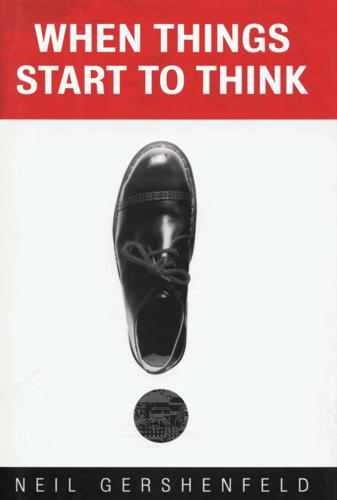
When Things Start to Think
by
Neil A. Gershenfeld
Published 15 Feb 1999
In 1936 Turing proved the latter. To do this, he had to bring some kind of order to the notion of a smart machine. Since he couldn't anticipate all the kinds of machines people might build, he had to find a general way to describe their capabilities. He did this by introducing the concept of a Universal Turing Machine. This was a simple machine that had a tape (possibly infinitely long), and a head that could move along it, reading and writing marks based on what was already on the tape. Turing showed that this machine could perform any computation that could be done by any other machine, by preparing it first with a program giving the rules for interpreting the instructions for the other machine.
…
With this result he could then prove or disprove the Entscheidungsproblem for his one machine and have it apply to all of the rest. He did this by showing that it was impossible for a program to exist that could determine whether another program would eventually halt or keep running forever. Although a Turing machine was a theoretical construction, in the period after World War II a number of laboratories turned to successfully making electronic computers to replace the human "computers" who followed written instructions to carry out calculations. These machines prompted Turing to pose a more elusive question: 128 + WHEN THINGS START TO THINK could a computer be intelligent?
…
This idea has come to be known as Cellular Automata (CAs). From the 1970s onward, the group of Ed Fredkin, Tomaso Toffoli, and Norm Margolus at MIT started to make special-purpose computers designed for CAs. Because these machines entirely dispense with approximations of continuous functions, they can be much simpler and faster. And because a Turing machine can be described this way, a CA can do anything that can be done with a conventional computer. A cellular automata model of the universe is no less fundamental than one based on calculus. It's a much more natural description if a computer instead of a pencil is used to work with the model. BIT BELIEFS + 133 And the discretization solves another problem: a continuous quantity can represent an infinite amount of information.
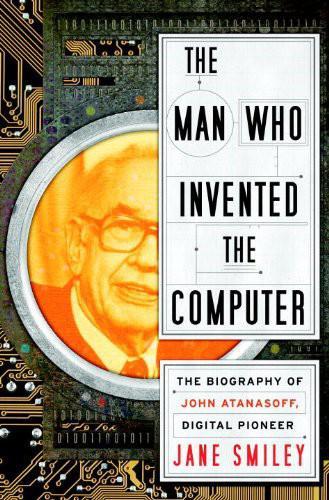
The Man Who Invented the Computer
by
Jane Smiley
Published 18 Oct 2010
The lambda calculus “represented an elegant and powerful symbolism for mathematical processes of abstraction and variation,” but the Turing machine was a thought experiment that posited a mechanical operation, to be done by either a mechanism or by a human mind. Andrew Hodges, Turing’s biographer, points out that Turing’s idea “was not only a matter of abstract mathematics, not only a play of symbols, for it involved thinking about what people did in the physical world … His machines—soon to be called Turing Machines—offered a bridge, a connection between abstract symbols and the physical world. Indeed, his imagery was, for Cambridge, almost shockingly industrial.”
…
In spring 1945, right around the time that the order was going out for the ten Colossus machines to be destroyed, Womersley went to the United States and was shown ENIAC (before, in fact, it was unveiled to the general public). When Womersley got back to the UK, he was eager to build a UK version. Since, unlike Mauchly and Eckert, he happened to be quite familiar with “On Computable Numbers” and had even toyed with designing a mechanical version of a Turing machine before the war (his partner, like Mauchly and Eckert’s original partner, was in the horse-racing pari-mutuel totalizer business), he offered Turing £800 per year—£200 more than he had received at Bletchley Park—to come to the NPL. Turing began work on October 1, 1945, and he was ready with plenty of ideas.
…
Turing thought that if the hardware was fast enough and the program detailed and complex enough, roomfuls of processor units could be avoided. However, such a machine would have had difficulties of its own, according to John Gustafson, who maintains, It is clear that what he had in mind building was something very like the theoretical model in his Computability paper, the model we now call a Turing machine. It worked on one bit at a time, but used a huge amount of memory to do anything of consequence. Since he had proved that anything that was computable could be theoretically computed on such a simple device, why not build one? The CPU would only have required a handful of vacuum tubes. But such a machine is horrendously difficult to program, and even at electronic speeds, it would have been painfully slow for many simple things like floating-point arithmetic.2 One of Turing’s difficulties (or Womersley’s, as his director) was that he didn’t mind talking to the press (either the general press or journals of particular groups, such as the Institution of Radio Engineers), but when he did talk, he raised hopes that did not seem realistically capable of fulfillment, and he was often met with skepticism.
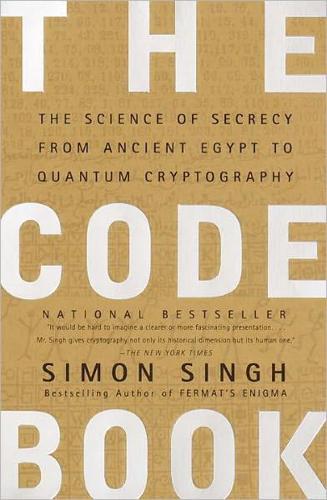
The Code Book: The Science of Secrecy From Ancient Egypt to Quantum Cryptography
by
Simon Singh
Published 1 Jan 1999
Turing imagined a whole series of these so-called Turing machines, each specially designed to tackle a particular task, such as dividing, squaring or factoring. Then Turing took a more radical step. He imagined a machine whose internal workings could be altered so that it could perform all the functions of all conceivable Turing machines. The alterations would be made by inserting carefully selected tapes, which transformed the single flexible machine into a dividing machine, a multiplying machine, or any other type of machine. Turing called this hypothetical device a universal Turing machine because it would be capable of answering any question that could logically be answered.
…
Unfortunately, it turned out that it is not always logically possible to answer a question about the undecidability of another question, and so even the universal Turing machine was unable to identify every undecidable question. Mathematicians who read Turing’s paper were disappointed that Gödel’s monster had not been subdued but, as a consolation prize, Turing had given them the blueprint for the modern programmable computer. Turing knew of Babbage’s work, and the universal Turing machine can be seen as a reincarnation of Difference Engine No. 2. In fact, Turing had gone much further, and provided computing with a solid theoretical basis, imbuing the computer with a hitherto unimaginable potential.
…
In fact, Turing had gone much further, and provided computing with a solid theoretical basis, imbuing the computer with a hitherto unimaginable potential. It was still the 1930s though, and the technology did not exist to turn the universal Turing machine into a reality. However, Turing was not at all dismayed that his theories were ahead of what was technically feasible. He merely wanted recognition from within the mathematical community, who indeed applauded his paper as one of the most important breakthroughs of the century. He was still only twenty-six. This was a particularly happy and successful period for Turing. During the 1930s he rose through the ranks to become a fellow of King’s College, home of the world’s intellectual elite.

The Demon in the Machine: How Hidden Webs of Information Are Finally Solving the Mystery of Life
by
Paul Davies
Published 31 Jan 2019
THE LOGIC OF LIFE Gregory Chaitin, The Unknowable: Discrete Mathematics and Theoretical Computer Science (Springer, 1999) Peter Csermely, ‘The wisdom of networks: a general adaptation and learning mechanism of complex systems’, BioEssays, 1700150 (2017) Deborah Gordon, Ants at Work: How an Insect Society is Organized (Free Press, 2011) Andrew Hodges, Alan Turing: The Enigma: The Book that Inspired the Film ‘The Imitation Game’ (Princeton University Press, 2014) Douglas Hofstadter, Gödel, Escher, Bach: An Eternal Golden Braid (Basic Books, 1979) Bernd-Olaf Küppers, Information and the Origin of Life (MIT Press, 1990) Janna Levin, A Madman Dreams of Turing Machines (Knopf, 2006) G. Longo et al., ‘Is information a proper observable for biological organization?’, Progress in Biophysics and Molecular Biology, vol. 109, 108–14 (2012) Denis Noble, Dance to the Tune of Life: Biological Relativity (Cambridge University Press, 2017) Paul Rendell, Turing Machine Universality of the Game of Life: Emergence, Complexity and Computation (Springer, 2015) Stephen Wolfram, A New Kind of Science (Wolfram Media, 2002) Hubert Yockey, Information Theory, Evolution and the Origin of Life (Cambridge University Press, 2005) 4.
…
Remember that it was precisely the paradox of self-reference that led Turing to the idea of a universal computer. The idea of a self-reproducing machine thus opens the same logical can of worms. Significantly, living organisms seem to be actual self-reproducing machines. We thus gain insight into the logical architecture of life by deliberating on the concepts of a universal computer (Turing machine) and a universal constructor (von Neumann machine). An important point von Neumann stressed is that it is not enough for a UC simply to make a replica of itself. It also has to replicate the instructions for how to make a UC and insert those instructions into the freshly minted replica; otherwise, the UC’s progeny would be sterile.
…
These days we think of robotic instructions as being invisibly programmed into a computer that drives the robot, but to better see the logic of self-reproducing machines it is helpful to think of the instructions imprinted on a punched tape of the sort that drives an old-fashioned pianola (and close to the concept of the tape in a Turing machine). Imagine that the UC has a punched tape fed into it telling it how to make this or that object and that the machine blindly carries out the instructions imprinted on the tape. Among the many possible tapes, each peppered with strategically located holes, there will be one with a pattern of holes that contains the instructions for building the UC itself.

The Deep Learning Revolution (The MIT Press)
by
Terrence J. Sejnowski
Published 27 Sep 2018
When data sets are small, a single sample left out of the training set can be used to test the performance of the network trained on the remaining examples, and the process repeated for every sample to get an average test performance. This is a special case of cross-validation where n = 1, in which n subsamples are held out. 284 Glossary Turing machine Hypothetical computer invented by Alan Turing (1937) as a simple model for mathematical calculation. A Turing machine consists of a “tape” that can be moved back and forth, a “head” that has a “state” that can change the property of the active cell beneath it, and a set of instructions for how the head should modify the active cell and move the tape.
…
(The Department of Defense had recently poured $600 million into its Strategic Computing Initiative, a program that ran from 1983 to 1993 but came up short on building a vision system to guide a self-driving tank.)9 “Good luck with that,” was my reply. Gerald Sussman, who made several important applications of AI to real-world problems, including a system for high-precision integration for orbital mechanics, defended the honor of MIT’s approach to AI with an appeal to the classic work of Alan Turing, who had proven that the Turing machine, a thought experiment, could compute any computable function. “And how long would that take?” I asked. “You had better compute quickly or you will be eaten,” I added, then walked across the room to pour myself a cup of coffee. And that was the end of the dialogue with the faculty. 34 Chapter 2 “What is wrong with this picture?”
…
This suggests that, for solutions to the hard problems in artificial intelligence, we should be looking into computers with massively parallel architectures rather than those with von Neumann digital architectures through which data and instructions are fetched and executed one at a time. Yes, it is true that a Turing machine can compute any computable function given enough memory and enough time, but nature had to solve problems in real The Dawn of Neural Networks 39 time. To do this, it made use of the brain’s neural networks that, like the most powerful computers on the planet, have massively parallel processors.
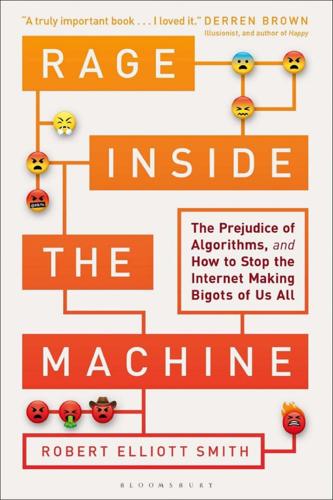
Rage Inside the Machine: The Prejudice of Algorithms, and How to Stop the Internet Making Bigots of Us All
by
Robert Elliott Smith
Published 26 Jun 2019
In 1936, British mathematician (and later war hero) Alan Turing designed a theoretical mechanical device, and a mathematical proof that it could do any mechanical procedure, that could be implemented on any computer, ever. This device, which we now call a Turing Machine, involved configurations of mechanical ‘states’, and the ability to write to and read from memory (in the form of symbols written on an infinitely long roll of tape). In every way, the Turing Machine is like Babbage’s Engine, if that Engine had infinite memory in its ‘store’. In fact, the whole point of Turing’s proof was that this machine was equivalent to any general-purpose computer, and therefore any general-purpose computer is just like any other.
…
In fact, the whole point of Turing’s proof was that this machine was equivalent to any general-purpose computer, and therefore any general-purpose computer is just like any other. That is to say, Turing proved that regardless of whether it was built on a substrate of brass gears and levers, vacuum tubes, as-yet-uninvented semiconductor chips, or even biological cells, the Turing Machine could implement any algorithm10 that could be implemented on any other computer. It defined the range of what could be computed by algorithms. This is known as the theory of universal computation, and is a basis upon which many believers in AI feel that the brain is just a kind of computer. After all, they theorize, everything that can possibly be built must follow the mechanical rules of physics.
…
Turing showed that all such devices that compute, regardless of the substrate they are built on, have the same ultimate algorithmic capabilities. The theory concludes that the brain is just another mechanical device, a built ‘machine’ that must follow the rules of physics. Therefore, the brain can’t do anything that a Turing machine, and thus any other computer, can’t do. By this argument, the brain is just a computer. Of course, the ultimate ‘capabilities’ assumed in this line of reasoning are the execution of Hilbert’s ‘mechanical procedures’ (algorithms). Whether this is all brains do is a debatable question that is philosophically central to AI.
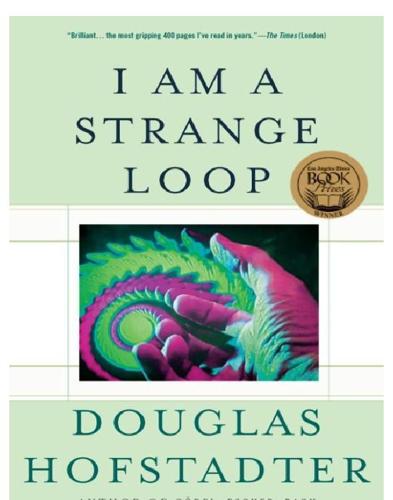
I Am a Strange Loop
by
Douglas R. Hofstadter
Published 21 Feb 2011
For instance, consider the case of John Searle, a philosopher who has spent much of his career heaping scorn on artificial-intelligence research and computational models of thinking, taking special delight in mocking Turing machines. A momentary digression… Turing machines are extremely simple idealized computers whose memory consists of an infinitely long (i.e., arbitrarily extensible) “tape” of so-called “cells”, each of which is just a square that either is blank or has a dot inside it. A Turing machine comes with a movable “head”, which looks at any one square at a time, and can “read” the cell (i.e., tell if it has a dot or not) and “write” on it (i.e., put a dot there, or erase a dot). Lastly, a Turing machine has, stored in its “head”, a fixed list of instructions telling the head under which conditions to move left one cell or right one cell, or to make a new dot or to erase an old dot.
…
Lastly, a Turing machine has, stored in its “head”, a fixed list of instructions telling the head under which conditions to move left one cell or right one cell, or to make a new dot or to erase an old dot. Though the basic operations of all Turing machines are supremely trivial, any computation of any sort can be carried out by an appropriate Turing machine (numbers being represented by adjacent dot-filled cells, so that “•••” flanked by blanks would represent the integer 3). Back now to philosopher John Searle. He has gotten a lot of mileage out of the fact that a Turing machine is an abstract machine, and therefore could, in principle, be built out of any materials whatsoever. In a ploy that, in my opinion, should fool only third-graders but that unfortunately takes in great multitudes of his professional colleagues, he pokes merciless fun at the idea that thinking could ever be implemented in a system made of such far-fetched physical substrates as toilet paper and pebbles (the tape would be an infinite roll of toilet paper, and a pebble on a square of paper would act as the dot in a cell), or Tinkertoys, or a vast assemblage of beer cans and ping-pong balls bashing together.
…
Page 26 abstractions are central…in the study of the brain… See [Treisman], [Minsky 1986], [Schank], [Hofstadter and FARG], [Kanerva], [Fauconnier], [Dawkins], [Blackmore], and [Wheelis] for spellings-out of these abstract ideas. Page 27 Just as the notion of “gene” as an invisible entity that enabled… See [ Judson]. Page 27 and just as the notion of “atoms” as the building blocks… See [Pais 1986], [Pais 1991], [Hoffmann], and [Pullman]. Page 28 Turing machines are…idealized computers… See [Hennie] and [Boolos and Jeffrey]. Page 29 In his vivid writings, Searle gives… See Chapter 22 of [Hofstadter and Dennett]. Page 29 one particular can that would “pop up”… In his smugly dismissive review [Searle] of [Hofstadter and Dennett], Searle states: “So let us imagine our thirst-simulating program running on a computer made entirely of old beer cans, millions (or billions) of old beer cans that are rigged up to levers and powered by windmills.
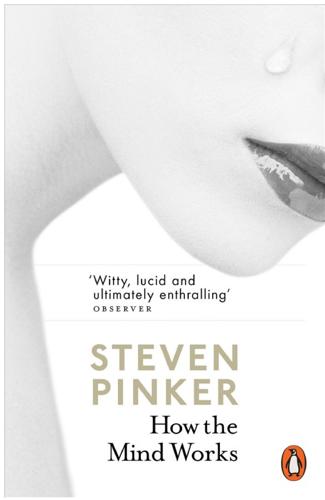
How the Mind Works
by
Steven Pinker
Published 1 Jan 1997
In fact, one doesn’t even need a huge warehouse of these machines, one to do sums, another to do square roots, a third to print English sentences, and so on. One kind of Turing machine is called a universal Turing machine. It can take in a description of any other Turing machine printed on its tape and thereafter mimic that machine exactly. A single machine can be programmed to do anything that any set of rules can do. Does this mean that the human brain is a Turing machine? Certainly not. There are no Turing machines in use anywhere, let alone in our heads. They are useless in practice: too clumsy, too hard to program, too big, and too slow.
…
It can apply the rules of any useful logical system to derive true statements from other true statements. It can apply the rules of any grammar to derive well-formed sentences. The equivalence among Turing machines, calculable mathematical functions, logics, and grammars, led the logician Alonzo Church to conjecture that any well-defined recipe or set of steps that is guaranteed to produce the solution to some problem in a finite amount of time (that is, any algorithm) can be implemented on a Turing machine. What does this mean? It means that to the extent that the world obeys mathematical equations that can be solved step by step, a machine can be built that simulates the world and makes predictions about it.
…
The machine consists of a tape divided into squares, a read-write head that can print or read a symbol on a square and move the tape in either direction, a pointer that can point to a fixed number of tickmarks on the machine, and a set of mechanical reflexes. Each reflex is triggered by the symbol being read and the current position of the pointer, and it prints a symbol on the tape, moves the tape, and/or shifts the pointer. The machine is allowed as much tape as it needs. This design is called a Turing machine. What can this simple machine do? It can take in symbols standing for a number or a set of numbers, and print out symbols standing for new numbers that are the corresponding value for any mathematical function that can be solved by a step-by-step sequence of operations (addition, multiplication, exponentiation, factoring, and so on—I am being imprecise to convey the importance of Turing’s discovery without the technicalities).
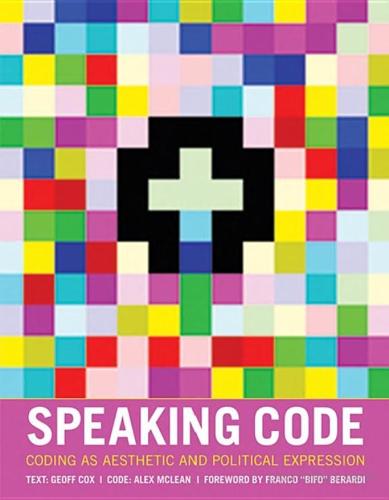
Speaking Code: Coding as Aesthetic and Political Expression
by
Geoff Cox
and
Alex McLean
Published 9 Nov 2012
As far as the Chinese is concerned, I simply behave like a computer; I perform computational operations on formally specified elements. For the purposes of the Chinese, I am simply an instantiation of the computer program.”51 Searle’s position is based on the linguistic distinction between syntax and semantics as applied to the digital computer or Turing machine as a “symbol-manipulating device,” where the units have no meaning in themselves (a position that follows from semiotics). Even if it is argued that there is some sense of intentionality in the program or a degree of meaning in the unit, it is not the same as human information processing, and this sense of agency is what Searle calls “as-if intentionality.”
…
The “grain of the voice” is what Barthes calls the individual “voice-magic,” imparted by the “very precise space of the encounter between a language and a voice.” Roland Barthes, “The Grain of the Voice,” in Image, Music, Text, 181. The music industry tries to commodify this “grain.” 54. It is interesting to note that a function to calculate pi can be written; the issue is that it would never return the value. If running indefinitely, a Turing machine would be able to output it all, as it has infinite memory. 55. Groys, The Communist Postscript, xvii. 56. Nick Couldry, Why Voice Matters: Culture and Politics after Neoliberalism (London: Sage, 2010), 3. 57. Echoed in the phrase “words made flesh,” the title of Florian Cramer’s Words Made Flesh: Code, Culture, Imagination (Rotterdam: Piet Zwart Institute, 2005), 125 (available at http:// pzwart.wdka.hro.nl/mdr/research/fcramer/wordsmadeflesh/). 58.
…
Ibid., 168–169, citing Wittgenstein’s Philosophical Investigations (1953). 54. Proudfoot, “Wittgenstein’s Anticipation of the Chinese Room,” 177–178. 55. John R. Searle, “Twenty-One Years in the Chinese Room,” in Preston and Bishop, Views into the Chinese Room, 56. 56. Ibid. With this statement, Searle is arguing that Turing machines rely on abstract mathematical processes but not on energy transfer like some other machines; and one might extrapolate that the discourse around artificial life reinvigorates the fantasies of artificial intelligence in this way. Merely increasing computer capacity does not mean machine consciousness is any closer but perhaps only that the fantasies become stronger, as artificial intelligence morphs into the discourse around artificial life and the messier biocomputational “wet” realm of living cells. 57.

The Stack: On Software and Sovereignty
by
Benjamin H. Bratton
Published 19 Feb 2016
Turing envisioned his famous “machine” according to the tools of his time to involve an infinite amount of “tape” divided into cells that can store symbols, moved along a stationary read-write “head” that can alter those symbols, a “state register” that can map the current arrangement of symbols along the tape, and a “table” of instructions that tells the machine to rewrite or erase the symbol and to move the “head,” assuming a new state for the “register” to map. The Church-Turing thesis (developed through the 1940s and 1950s) would demonstrate that Turing's “machine” not only could simulate algorithms, but that a universal Turing machine, containing all possible such machines, could, in theory, calculate all logical problems that are in fact computable (a limit that Turing's paper sought to identify). The philosophical implications are thorny and paradoxical. At the same moment that Turing demonstrates the mechanical basis for synthetic logic by machines (suggesting real artificial intelligence), he partially delinks the correlation between philosophical thought and machinic calculation.
…
For me these are conjoined, and not just by their geographic proximity: Deleuze on the beach contemplating (we might assume) what he called “the plane of immanence,” the field from which all potential forms emerge, and Intel's initial approximations of microprocessor technology for universal computation, putting a mini-Turing machine on a silicon wafer.5 In different ways and for different ends, both grapple with matter as vibrant, contingent, and mutable, as reproduced in the careful calculation of sets of differences drawn from particular virtual possibilities. At the end of the day, Deleuze's philosophy is more about chemistry than computation, continuities more than discrete digitalizations, but his philosophical imagery of worlds appearing from the multiplication of imminent processes and generic diagrams, on oscillations of the physical and the virtual, is not unfamiliar to the projects of information realism.
…
So irrespective of the mathematical limits of algorithmic reason, The Stack is interested instead in the limited and sufficient compositional capacities of a megastructure already under construction, the thresholds of which are geological, sociological, economic, chemical, and geopolitical as much as they are calculative. This chapter draws on those limits and on the risks that come with positioning the Earth as a layer in a synthetic machine, and for this Earth is the Earth—a physical planet—not a metaphor for “nature.” There is no planetary-scale computation, now a vast network of many billions of little Turing machines, that does not intake and absorb the Earth's chemistry in order to function. The Stack is a hungry machine, and while its curated population of algorithms may be all but massless, their processing of Earthly material is a physical event, and therefore the range of possible translations between information and mechanical appetites has another limit that is not mathematical but defined by the real finitude of substances that can force communication between both sides of this encounter.20 Furthermore, like any megamachine the Earth layer is as socially constrained as it is technologically configured, and so there are political economies of Turing machines that are only accessible through misaligned and uneven hierarchies of geography, energy, and programmability.21 This is made clear by unpacking and sifting through the hardware on which The Stack depends.
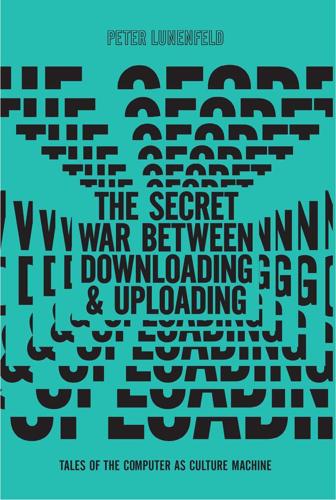
The Secret War Between Downloading and Uploading: Tales of the Computer as Culture Machine
by
Peter Lunenfeld
Published 31 Mar 2011
In it, he proposed the questions that still remain central to the discipline decades later. Turing suggested that it should be possible to make a “Universal Machine,” a computer that could simulate the performance of any other device. The fact that the analog machines of the late 1930s and early 1940s were far too slow to function as Universal Turing Machines did not affect his faith that such devices would come into existence. And with the stimulus of the war effort, they did. Within a decade, Turing was working on the Manchester Mark I computer—one of the first machines recognized as being a direct antecedent to the computers we use now. Turing proposed a universal machine that functioned as a stored program computer; in this setup, the programs, or software, could be swapped and modified, improved and abandoned, just as the hardware could and would be.
…
He assisted Christopher Strachey in producing what was probably the first artwork made with a computer: the love letter generator of 1952. 5 Strachey, working from a thousand-line piece of software (the longest yet written for the Mark I), created a program that randomly produced such sentimental and vaguely meaningless missives as: 18 STICK Y Darling Sweetheart, You are my avid fellow feeling. My affection curiously clings to your passionate wish. My liking yearns for your heart. You are my wistful sympathy: my tender liking. Yours beautifully M. U. C. Here, the Universal Turing Machine simulates mawkish Victorian sentimentality by choosing from a database of prewritten phrases that it then arranges into syntactically correct but stilted English. This trifle, inspired at least in part by the renown of Christopher’s uncle Lytton Strachey’s 1918 portrait of a generation, Eminent Victorians, is the product of a stored program computer, and as such may well be the first aesthetic object produced by the ancestors of the culture machine.
…
Congress and, 90 violations of, 92–93, 95 Web n.0 and, 88–95 Corian, 64 Creative Commons, 173, 189n12 bespoke futures and, 123 Mickey Mouse Protection Act and, 90 Computers (continued) Aquarians and, xv, 24, 144, 152, 157, 159–169 challenge to television of, 2 as culture machine, xiv, xvi, xv–xvi, 5 (see also Culture machine) distribution and, xiii dominance of, xii–xiii, xiv as dream machines, xiii emergence of, xii–xiii first, 146 hackers and, 22–23, 54, 67, 69, 162, 170–173 historical perspective on, 143–178 Hosts and, xv, 144, 167, 175 Hustlers and, xv, 144, 156, 162–167 intelligence test for, 19 as “Man of the Year,” xii Moore’s law and, 156, 195n13 mouse for, 158–159 participation and, xvi, 15–17, 27–35, 54, 66–67, 74–80, 98–99, 120– 121, 129, 143–147, 151, 156–165, 170, 175–178 Patriarchs and, xv, 143–144, 147–153, 156–157, 162–163, 166–168 personal, 152, 161–167 Plutocrats and, xv, 144, 152–159, 163–166, 170 production and, xiii relationship with data and, 32 Searchers and, xv–xvi, 144, 167, 174–178 simulation and, xvi, 2 (see also Simulation) Sterling on, 101–102 symbiosis and, 151–152 systems theory and, 151 ubiquity and, xiii, 22–23, 39, 57–59, 62, 74, 81–82, 87, 92–93, 125, 128, 144, 166, 177–178 Universal Turing Machine and, 18–19 201 INDEX Creative Commons (continued) open source and, 90–93, 123, 173 purpose of, 91 Web n.0 and, 90–93 Creatives, 30 Credit cards, 76 Crenshaw district, 105 Critical inquiry, 14 Cuban Missile Crisis, xi Cubism, 44, 79, 117 Cultural issues commercialism and, 4–5, 8 (see also Commercial culture) diabetic technologies and, 3–5 dominance of television and, xii, 2–5, 7–10 fan culture and, 28–32, 48, 49, 87 free culture and, 75, 92, 98–99 Freud and, 43–44 hierarchies and, 1, 24, 29, 93, 114 junk culture and, 5–10 mass/pop culture and, 13, 31, 39–40, 47–48, 53, 56–58, 61–63, 107, 109, 184n16 mechanization and, 44–45 open source and, 36, 61, 69, 74–75, 91–92, 116, 121–126, 144, 170– 173, 177, 189n12 psychology and, 16, 21–22, 42–44, 56, 151, 161 secular culture and, 133–139 Slow Food and, 5–7 stickiness and, 28–32 (see also Stickiness) Culture machine, 5 Aquarians and, xv, 24, 144, 152, 157, 159–169 bespoke futures and, 97–101, 116, 123–133, 137–138 design and, 139, 150, 160, 165, 167, 171–172, 176 development of, 143–178 downloading and, 143, 168 gaming and, 70–74 Hosts and, xv, 144, 167, 175 Hustlers and, xv, 144, 156, 162–167 information and, 46, 143–149, 152– 153, 163, 167–168, 172, 176–178 networks and, 143–144, 152, 167– 168, 172–175, 178 participation and, 15–17, 143–147, 151, 156–165, 170, 175–178 Patriarchs and, xv, 143–144, 147–153, 156–157, 162–163, 166–168 Plutocrats and, xv, 144, 152–159, 163–166, 170 postmodernism and, 39–40 Searchers and, xv–xvi, 144, 167, 174–178 simulation and, 15–17, 143–144, 147– 152, 156–160, 166–168, 175–178 stickiness and, 15–19, 27, 32, 35 technology and, 143–163, 173–174 unimodernism and, 39, 42, 46–60, 67–76 uploading and, 143, 168, 173, 175 Warriors and, 146–147 Web n.0 and, 79–85, 90–93 Cut-up fiction, 52 Cyberpunk, 68, 87, 110 Czechoslovakia, 104 Dada, 79, 186n8 Danger Mouse, 54–55 Dare, Dan, 108 Darth Vader, 90 Darwin, Charles, 133 Davis, Miles, 25–26 Dawkins, Richard, 143 Death and Life of Great American Cities, The (Jacobs), 84–85 Deconstruction, 29–31 DeLanda, Manuel, 189n8 De.lic.ious, 75 202 INDEX Design bespoke futures and, 102, 105–106, 110–111, 115–116, 119–120, 124–125, 137 control over form and, 111 culture machine and, 139, 150, 160, 165, 167, 171–172, 176 future as client and, 110–113 futurists on, 101–102 graphic, 31, 45, 64, 102, 181n7 Gropius and, 36–37 isotypes and, 44, 125, 193n34 mechanization and, 44–45 Moore’s law and, 156 open source, 36, 61, 69, 74–75, 91–92, 116, 121–126, 144, 170– 173, 177, 189n12 play and, 32–34 postmodernism and, 29–30, 39–41, 74, 79, 130, 135 power and, 32–34 tweaking and, 32–35 unimodernism and, 39, 43–46, 49, 55–56, 60, 64–8, 71–74 Design of Everyday Things, The (Norman), 16 Design Within Reach, 46 Desk jobs, 3 Dewey, John, 129 Dewey, Melvil, 80 Diabetes, 3–5, 8 “Diamond Dogs” (Bowie), 62 Dick, Philip K., 9 Difference engine, 149 Digg, 34 Digital Equipment Corporation (DEC), 71, 149, 153, 163, 170 Digital video discs (DVDs), 2, 7–8, 15, 58 Digital video recorders (DVRs), 2, 7, 15, 23, 181n3 Disco, 63 Disney Concert Hall, 39 DIY (do-it-yourself) movements, 67–70 203 Dot-com bubble, 79, 145, 174 Doubleclick, 177 Downloading, xiii–xiv, 180nn1,2 animal kingdom and, 1 bespoke futures and, 97, 123, 132, 138 best use and, 13–14 commercial networks and, 4–5 communication devices and, 15–16 cultural hierarchy of, 1–2 culture machine and, 143, 168 dangers of overabundance and, 7–10 defined, 1 diabetic responses to, 3–5 disrupting flow and, 23–24 figure/ground and, xvi, 42–43, 46, 102 Freedom software and, 22–23 habits of mind and, 9–10 humans and, 1–2 information overload and, 22, 149 info-triage and, xvi, 20–23, 121, 132, 143 as intake, 5 mindfulness and, xvi, 14, 17, 20–24, 27–29, 42, 77, 79, 123, 129, 183n6 patio potato and, 9–10, 13 peer-to-peer networks and, 15, 54, 92, 116, 126 stickiness and, 13–17, 20–23, 27–29, 184n15 surfing and, 20, 80, 180n2 television and, 2 unimodernism and, 41–42, 49, 54–57, 66–67, 76–77 viral distribution and, 30, 56, 169 wants vs. needs and, 13, 37, 57 Web n.0 and, 79, 82–83, 86–87 Duchamp, Marcel, 44, 48, 94 Dymaxion map, 73 Dynabook, 161–162, 196n17 Dynamic equilibrium, 117–120 EBay, 68 Eckert, J.

Computer: A History of the Information Machine
by
Martin Campbell-Kelly
and
Nathan Ensmenger
Published 29 Jul 2013
This question, known as the Entscheidungsproblem, asked: “Did there exist a definite method or process by which all mathematical questions could be decided?” Turing and Church came up with equivalent results in the mid-1930s. Turing’s approach, however, was one of startling originality. Whereas Church relied on conventional mathematics to make his arguments, Turing used a conceptual computer, later known as the Turing Machine. The Turing Machine was a thought experiment rather than a realistic computer: the “machine” consisted of a scanning head that could read and write symbols on a tape of potentially infinite length, controlled by an “instruction table” (which we would now call a program). It was computing reduced to its simplest form.
…
Turing made a much stronger claim: that a universal computer could tackle problems not just in mathematics but in any tractable area of human knowledge. In short, the Turing Machine embodied all the logical capabilities of a modern computer. Alan Turing was born in 1912 and at school he was drawn to science and practical experimenting. He won a scholarship to King’s College, Cambridge University, and graduated in mathematics with the highest honors in 1934. He became a Fellow of King’s College and, in 1936, published his classic paper “On Computable Numbers with an Application to the Entscheidungsproblem” in which he described the Turing Machine. Turing showed that not all mathematical questions were decidable, and that one could not always determine whether or not a mathematical function was computable.
…
abstract-logical views of, 76, 78, 79, 80 EDVAC programming and, 168, 169 ENIAC and, 71–75, 92 (photo) programming flowcharts developed by, 191 scientific war work of, 67 Google, 294–296, 297, 298, 303, 305 Gopher search system, 286, 288 Graphical user interface (GUI), 253, 257–261, 264–267, 273, 297 Graphics Environment Manager (GEM), 264 Gray, Stephen, 218–219 Great Depression, 36, 39–40 Grocery retail business, 161–165 Grolier Encyclopedia, 268 Grosch, Herb, 116, 211 Grosch’s Law, 211 Groves, Leslie R., 108–109 GUI (graphical user interface), 253, 257–261, 264–267, 273, 297 Handwriting recognition technology, 297, 298 Harvard Business Review, 134 Harvard Mark I, 54–59, 73, 80, 83, 91 (photo), 104 Harvard Mark II, 83–84 Harvard University, 83–84, 104 Hewlett, William, 239, 249 Hewlett-Packard (HP), 219, 239, 249 High-speed broadband, 274 Hilbert, David, 59 Hitachi, 251 Hobbyists, 230, 231, 232–238, 239–241, 242 Hock, Dee, 158–161 Hoerni, Jean, 221 Hoff, Ted, 231–232 Hollerith, Herman, 13–18, 27, 33–36 Hollerith Electric Tabulating System, 15–18, 27, 33–34, 38 Home computing, 211–212 Homebrew Computer Club, 237, 240 Home-built computers, 219 Honeywell competitive strategies of, 132 computer recession and, 133 FACT programming language, 175 IBM-compatible computers, 128–129, 131 mainframe computers, 98, 116, 117, 124 minicomputers, 219 Hopper, Grace Murray, 59, 110, 171, 173, 174–175, 192 (photo) Human computers, 3–6, 50–51, 52–54, 65, 67–68, 71 Human Factors Research Center, 199, 258–259, 282 Human knowledge, 275–278 Human-computer interaction, 207–210, 243, 258–259 Human-factors design, 208 Hypertext, 200, 234–235, 279, 286–287 IBM 1401 mainframe computer, 95 (photo), 117, 120–123, 126, 128–129 accounting machines, 38, 121, 125, 130 Airline Control Program operating system, 160 airline reservation systems, 154–157 antitrust suit against, 187 Automatic Computing Plant, 57 BASE II computer system, 160 Bitnet, 292 business computers, 123–124, 130–133, 138–139 business practices, 21, 30, 39–40, 97 Commercial Translator, 175 compatible product lines and, 125 computer development and, 80 computer industry and, 21, 98, 117, 133 computer industry rank, 219 computer industry standardization, 135 core memory technology, 115, 150, 151 data processing computers, 112–116, 133–134 Defense Calculator (model 701), 107, 113, 114, 115 as defense contractor, 107, 151, 152 Eckert and Mauchly’s attempts to sell EMCC to, 108 electromechanical manufacturing and, 138 electronic technology, 103–107 Endicott Laboratory, 57 ENIAC and, 71–81, 92 (photo), 93, 99, 145 FORTRAN developed by, 171–175, 185, 191, 205–206, 214, 215 Harvard Mark I and, 54–59, 73, 80, 83, 91 (photo), 104 Hollerith and, 14 IBM PC as industry standard, 197 (photo), 245–249 as leader in computer technology, 106 Magnetic Drum Calculator (model 650), 106, 112, 115, 120–121 mainframe computers, 126, 130–131 MS-DOS development agreement and, 256 naming of company, 36 New Product Line, 126–128, 129 OS/2 operating system, 265 PC Jr. computer, 263 personal computers, 197 (photo), 229, 245–249 PL/1 programming language, 183 Program Development Laboratories, 180–182 public image of, 119–120 punched-card systems of, 21, 38–39, 53, 90 (photo) rent-and-refill nature of business, 36, 37–38 sales strategies of, 21, 36–37, 39–40, 138, 246 sales training, 39–40 scanning technology, 164 Selective Sequence Electronic Calculator, 104, 105–106 survival of Great Depression by, 36, 37 systems integration and, 138–139 System/360 computers, 96 (photo), 124–132, 138, 209, 210 Systems Network Architecture, 285 Tape Processing Machine (model 702), 106–107, 112–115 technical innovation, 21, 31, 36, 38–39 T-H-I-N-K motto, 33, 37, 106 time-sharing computers, 209–210 total-system design approach, 120–123 TopView operating system, 265 TSS/360 operating system, 212–213 unbundling, 187–188 war-related computing projects of, 74, 79 IBM-compatible personal computers developed by competitors, 128–129, 131, 138 market dominance of, 255, 261, 263 software development for, 254, 256–257, 264–267 IBM Selective Sequence Electronic Calculator (SSEC), 104–106, 117 Icons, desktop, 258, 260 iOS platform, 297 iPad tablets, 298 iPhone, 298 iPod devices, 298 iTunes stores, 298 Illustrated London News, 12, 88 (photo) Informatics, 177, 188 Information processing calculating engines for, 6–8 clearing houses for, 8–11 human computers for, 3–6 mechanical systems for, 13–19 telegraphy and, 11–13 Information Processing Techniques Office (IPTO), 208, 258–259, 280–283 Information storage, office, 21, 27 Information technology, 19, 25 Initial Orders program, 169 Institute for Advanced Study (IAS), Princeton, 73, 80, 93 (photo), 107, 147, 191 Instruction tables (Turing Machine), 60 Insurance industry, 4, 18, 101, 102, 109, 175, 187 Integrated circuits, 130, 131, 194 (photo), 215–219, 221, 222–225 Intel 8088 chip, 246, 247, 248 Fairchild origins of, 221, 222 integrated circuit technology and, 216 microprocessors and, 195 (fig.), 231–232, 251, 265 Interactive computing, 207–210, 243, 258–259 interface message processor (IMP), 282 International Business Machines.
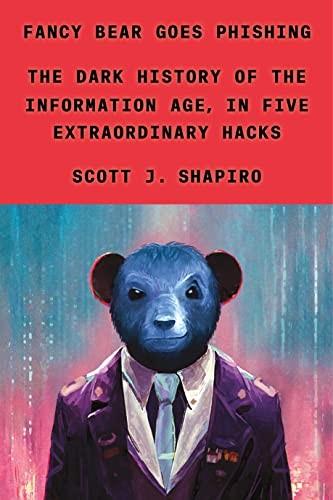
Fancy Bear Goes Phishing: The Dark History of the Information Age, in Five Extraordinary Hacks
by
Scott J. Shapiro
The intelligence in computation lies not in any particular step, Turing explained, but in their sequence—just as music isn’t in the individual notes, but in their relationship to one another. Every operation the Turing Machine performs is primitive, trivial, monotonous, unintelligent, arational, stupid. Yet, by ordering many of these basic operations in just the right way, the mindless Turing Machine yields an intelligent solution. Turing’s discovery of the physicality principle was profound: he conjectured that the basic physical instructions—reading, writing, and movement—underlie all computing. Provided a machine can manipulate symbols using these three simple instructions, it can use them (if sequenced correctly) to solve any solvable problem.
…
As Turing showed, computing devices need perform only three basic actions of symbol manipulation: read symbols from a paper tape, write symbols to the tape, and move along the tape. The device picks one of these actions by following an internal instruction table. As long as the instruction table sequences these primitive actions in the right order, the device (traditionally known as a Turing Machine) will physically compute the correct answer. Because our world is filled with billions of physical computing devices, we take physicality for granted. We should pause for a moment, however, to appreciate the boldness of Turing’s claim. Somehow, a series of mindless manipulations performed by a mechanical contraption obeying the witless laws of physics adds up to something intelligent.
…
Provided a machine can manipulate symbols using these three simple instructions, it can use them (if sequenced correctly) to solve any solvable problem. One machine can add numbers: if you write the numbers 2 and 2 on the tape, the machine will output 4. Another machine can calculate the billionth digit in the decimal expansion of pi. One can even build a Turing Machine that can model how carbon taxes will affect global warming. Running that simulation would require trillions of symbol manipulations and would take many centuries to complete. But in principle, it can be done. In practice, however, no usable computing device can run without extensive shortcuts.
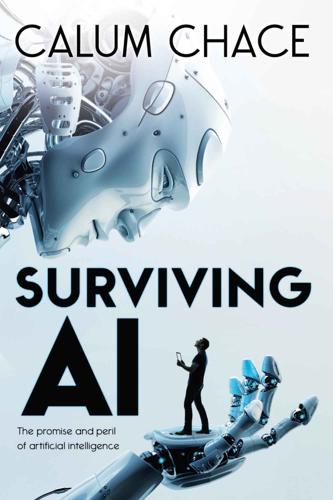
Surviving AI: The Promise and Peril of Artificial Intelligence
by
Calum Chace
Published 28 Jul 2015
He died two years later and it took 57 years before a British government apologised for this barbaric behaviour. Before the war, in 1936, Turing had already devised a theoretical device called a Turing machine. It consists of an infinitely long tape divided into squares, each bearing a single symbol. Operating according to the directions of an instruction table, a reader moves the tape back and forth, reading one square – and one symbol – at a time. Together with his PhD tutor Alonzo Church he formulated the Church-Turing thesis, which says that a Turing machine can simulate the logic of any computer algorithm. (That word “algorithm” crops up a lot in computer science. It simply means a set of rules, or instructions, for a computer to follow.
…
Turing is also famous for inventing a test for artificial consciousness called the Turing Test, in which a machine proves that it is conscious by rendering a panel of human judges unable to determine that it is not (which is essentially the test that we humans apply to each other). The birth of computing The first design for a Turing machine was made by Charles Babbage, a Victorian academic and inventor, long before Turing’s birth. Babbage never finished the construction of his devices, although working machines have recently been built based on his designs. His Difference Engine (designed in 1822) would carry out basic mathematical functions, and the Analytical Engine (design never completed) would carry out general purpose computation.
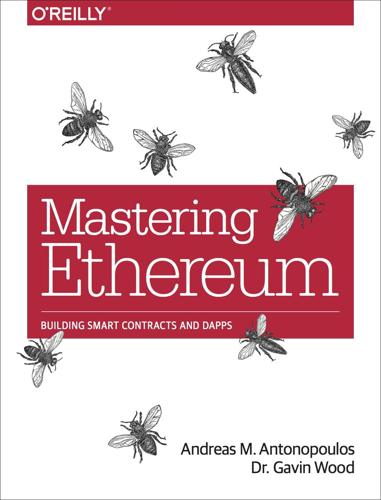
Mastering Ethereum: Building Smart Contracts and DApps
by
Andreas M. Antonopoulos
and
Gavin Wood Ph. D.
Published 23 Dec 2018
Specifically, he proved that the halting problem (whether it is possible, given an arbitrary program and its input, to determine whether the program will eventually stop running) is not solvable. Alan Turing further defined a system to be Turing complete if it can be used to simulate any Turing machine. Such a system is called a Universal Turing machine (UTM). Ethereum’s ability to execute a stored program, in a state machine called the Ethereum Virtual Machine, while reading and writing data to memory makes it a Turing-complete system and therefore a UTM. Ethereum can compute any algorithm that can be computed by any Turing machine, given the limitations of finite memory. Ethereum’s groundbreaking innovation is to combine the general-purpose computing architecture of a stored-program computer with a decentralized blockchain, thereby creating a distributed single-state (singleton) world computer.
…
, Turing Completeness and Gas implications of, Implications of Turing Completeness Turing, Alan, Ethereum and Turing Completeness tx object, Transaction context tx.origin authentication security threatpreventative techniques, Preventative Techniques vulnerability, The Vulnerability typecasting, Variable Typecasting typographical conventions, Conventions Used in This Book U unchecked CALL return value security threat, Unchecked CALL Return Values-Real-World Example: Etherpot and King of the Etherpreventative techniques, Preventative Techniques real-world example: Etherpot and King of the Ether, Real-World Example: Etherpot and King of the Ether vulnerability, The Vulnerability underflow, Arithmetic Over/Underflows-Real-World Examples: PoWHC and Batch Transfer Overflow (CVE-2018–10299), The Vulnerability unexpected etherpreventative techniques, Preventative Techniques security threat from, Unexpected Ether-Further Examples vulnerability, The Vulnerability-The Vulnerability uninitialized storage pointers security threat, Uninitialized Storage Pointers-Real-World Examples: OpenAddressLottery and CryptoRoulette Honey Potspreventative techniques, Preventative Techniques real-world examples: OpenAddressLottery and CryptoRoulette honey pots, Real-World Examples: OpenAddressLottery and CryptoRoulette Honey Pots vulnerability, The Vulnerability-The Vulnerability Universal Turing machine (UTM), Ethereum and Turing Completeness user interface, as DApp frontend, Frontend (Web User Interface) utilities, EthereumJS helpeth: A Command-Line Utilitydapp.tools, dapp.tools EthereumJS helpeth, EthereumJS helpeth: A Command-Line Utility SputnikVM, SputnikVM utility currency, ether as, Compared to Bitcoin utility tokensdefined, Using Tokens: Utility or Equity equity tokens disguised as, It’s a Duck! issues to consider when using, Utility Tokens: Who Needs Them?-Utility Tokens: Who Needs Them? UTM (Universal Turing machine), Ethereum and Turing Completeness V value field, Transaction Value and Data-Transmitting Value to EOAs and Contracts variable declarations, ordering of, Function and Variable Ordering version pragma, Selecting a Solidity Compiler and Language Version Vickrey auctions, Vickrey auctions view (function keyword), Functions visibility specifiers, Default Visibilities-Real-World Example: Parity Multisig Wallet (First Hack) vulnerabilities, Vulnerabilities and Vyper(see also security; specific attacks/vulnerabilities) Vyper, Introduction to Ethereum High-Level Languages, Smart Contracts and Vyper-Conclusionsclass inheritance, Class Inheritance compilation, Compilation contract vulnerabilities and, Vulnerabilities and Vyper decorators, Decorators defined, Quick Glossary function ordering, Function and Variable Ordering function overloading, Function Overloading modifiers, Modifiers overflow protection, Protecting Against Overflow Errors at the Compiler Level preconditions/postconditions, Preconditions and Postconditions reading/writing data, Reading and Writing Data Solidity compared to, Comparison to Solidity-Preconditions and Postconditions variable ordering, Function and Variable Ordering variable typecasting, Variable Typecasting W wallets, Wallets-Conclusionsbest practices for, Wallet Best Practices-Navigating the HD wallet tree structure browser wallets, Browser Wallets choosing, Choosing an Ethereum Wallet cold-storage wallets, Extended public and private keys creating HD wallets from root seed, Creating an HD Wallet from the Seed defined, Quick Glossary, Choosing an Ethereum Wallet, Wallets deterministic, Wallet Technology Overview, Deterministic (Seeded) Wallets duress wallet, Optional passphrase in BIP-39 Emerald Wallet, Choosing an Ethereum Wallet HD (see hierarchical deterministic wallets) Jaxx, Choosing an Ethereum Wallet, Mobile (Smartphone) Wallets, Jaxx MetaMask (see MetaMask) Mist, Quick Glossary, Mist mnemonic codes (BIP-39), Seeds and Mnemonic Codes (BIP-39), Mnemonic Code Words (BIP-39)-Working with mnemonic codes mobile, Mobile (Smartphone) Wallets MyCrypto, MyCrypto MyEtherWallet, Choosing an Ethereum Wallet, MyEtherWallet (MEW), MyCrypto nondeterministic, Wallet Technology Overview-Nondeterministic (Random) Wallets Parity Multisig Wallet hacks, Real-World Example: Parity Multisig Wallet (Second Hack)-Real-World Example: Parity Multisig Wallet (Second Hack), Real-World Example: Parity Multisig Wallet (First Hack) remote clients compared to, Should I Run a Full Node?
…
Turing complete A concept named after English mathematician and computer scientist Alan Turing: a system of data-manipulation rules (such as a computer’s instruction set, a programming language, or a cellular automaton) is said to be “Turing complete” or “computationally universal” if it can be used to simulate any Turing machine. Vitalik Buterin A Russian–Canadian programmer and writer primarily known as the cofounder of Ethereum and of Bitcoin Magazine. Vyper A high-level programming language, similar to Serpent, with Python-like syntax. Intended to get closer to a pure functional language. Created by Vitalik Buterin.
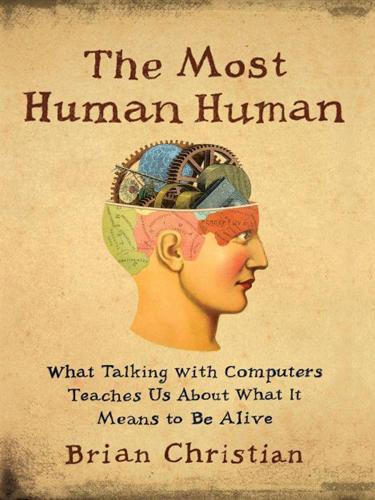
The Most Human Human: What Talking With Computers Teaches Us About What It Means to Be Alive
by
Brian Christian
Published 1 Mar 2011
Indeed, theoretical models of the computer—the Turing machine, the von Neumann architecture—seem like reproductions of an idealized version of conscious, deliberate reasoning. As Ackley puts it, “The von Neumann machine is an image of one’s conscious mind where you tend to think: you’re doing long division, and you run this algorithm step-by-step. And that’s not how brains operate. And only in various circumstances is that how minds operate.” I spoke next with University of Massachusetts theoretical computer scientist Hava Siegelmann, who agreed. “Turing was very [mathematically] smart, and he suggested the Turing machine as a way to describe a mathematician.16 It’s [modeling] the way a person solves a problem, not the way he recognizes his mother.”
…
I grew up three miles from the Atlantic Ocean; during the summer, tanning salons a block and a half from the beach would still be doing a brisk business. To see ourselves as distinct and apart from our fellow creatures is to see ourselves as distinct and apart from our bodies. The results of adopting this philosophy have been rather demonstrably weird. Turing Machines and the Corporeal IOU Wanting to get a handle on how these questions of soul and body intersect computer science, I called up the University of New Mexico’s and the Santa Fe Institute’s Dave Ackley, a professor in the field of artificial life. “To me,” he says, “and this is one of the rants that I’ve been on, that ever since von Neumann and Turing and the ENIAC guys15 built machines, the model that they’ve used is the model of the conscious mind—one thing at a time, nothing changing except by conscious thought—no interrupts, no communication from the outside world.
…
This fits in nicely with our sense of an inner homunculus pulling the levers and operating our body from a control room behind our eyeballs. It fits in nicely with Aristotle’s notion that thinking is the most human thing we can do. And so we compensate accordingly. I almost wonder if micromanagement comes from the same over-biasing of deliberate conscious awareness that led, both to and out of, the Turing machine model of computation underlying all of our computers today. Aware of everything, acting logically, from the top down, step-by-step. But bodies and brains are, of course, not like that at all. Micromanagement and out-of-control executive compensation are odd in a way that dovetails precisely with what’s odd about our rationalist, disembodied, brain-in-a-vat ideas about ourselves.
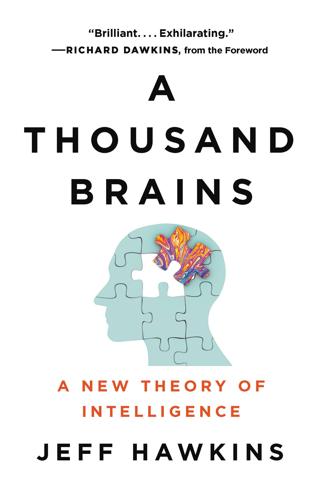
A Thousand Brains: A New Theory of Intelligence
by
Jeff Hawkins
Published 15 Nov 2021
There were computers designed for specific tasks. There were analog computers, and computers that could only be repurposed by changing the wiring. There were computers that worked with decimal instead of binary numbers. Today, almost all computers are the universal form that Turing envisioned. We even refer to them as “universal Turing machines.” With the right software, today’s computers can be applied to almost any task. Market forces decided that universal, general-purpose computers were the way to go. This is despite the fact that, even today, any particular task can be performed faster or with less power using a custom solution, such as a special chip.
…
Today’s computers come in many shapes and sizes, from the microcomputer in a toaster to room-size computers used for weather simulation. Despite their differences in size and speed, all these computers work on the same principles laid out by Turing and others many years ago. They are all instances of universal Turing machines. Similarly, intelligent machines of the future will come in many shapes and sizes, but almost all of them will work on a common set of principles. Most AI will be universal learning machines, similar to the brain. (Mathematicians have proven that there are some problems that cannot be solved, even in principle.
…
No one can know how intelligent machines will be used fifty or sixty years from now. When Is Something Intelligent? When should we consider a machine intelligent? Is there a set of criteria we can use? This is analogous to asking, When is a machine a general-purpose computer? To qualify as a general-purpose computer—that is, a universal Turing machine—a machine needs certain components, such as memory, a CPU, and software. You can’t detect these ingredients from the outside. For example, I can’t tell if my toaster oven has a general-purpose computer inside or a custom chip. The more features my toaster oven has, the more likely it contains a general-purpose computer, but the only sure way to tell is by looking inside and seeing how it works.

Engineering Security
by
Peter Gutmann
To the user they’re blurred into a single “do whatever needs to be done to this object” action, to the extent that even experienced Windows and Mac users have a hard time comprehending what Unix execute permission bits are for since for them there’s no distinct concept of “program execution” [636]. Another surprising location where Turing machines turn up is during the boot process of any reasonably recent computer (via the hardware-independent ACPI machine language), in fonts (via a stripped-down Postscript interpreter, this was used for one of the iPhone jailbreaks), and in UEFI, the Universal Extensible Firmware Interface (via the EFI bytecode or EIC) [637]. One of the most unusual Turing machines is built into the RAR archiver. RAR attempts to limit what the code being interpreted by the Turing machine can do by requiring that actions like screen output run from data with a fixed CRC32 value, so that only static strings can be displayed.
…
A better use of the time and effort required for user education would have been to concentrate on making the types of documents that are sent as attachments purely passive and unable to cause any action on the destination machine. A generalisation of this problem is that we have Turing machines everywhere — in the pursuit of extensibility, everything from Word documents to web site URLs has been turned 198 Psychology into a programming language [626]. There’s even a standards group that manages the creation of such embedded Turing machines [627][628]49. While a pen-tester once reported that seeing Javascript embedded in DNS results get executed on the target machine came as a considerable surprise to him, the later discovery that the same thing worked just as well with DHCP packets [629][630] and SSIDs [631][632][633][634] (complete with ready-made tools to exploit them [635]) confirmed that we really do have Turing machines in the most surprising places.
…
Since CRC32 isn’t a cryptographically strong hash function and it’s relatively easy to make your data have an arbitrary CRC value [638], all that’s required in order to bypass the check is to have your code modify the data to produce the expected CRC value, whereupon the Turing machine’s interpreter processes it without further ado [639]. Further Turing machines have been discovered in the x86 architecture’s interrupt handling and memory translation tables [640] and ELF executable metadata [641], with the discovery of further Turingmachine mechanisms limited only by the imagination of security researchers. You can’t even trust hardcopy any more, since it’s a trivial task to use the programmability of printer languages like Postscript to have the screen display one thing (for example a payment value of $1,000) and the printout display another ($10,000 or $100, depending on which way you want to go) [642].

What to Think About Machines That Think: Today's Leading Thinkers on the Age of Machine Intelligence
by
John Brockman
Published 5 Oct 2015
These exciting modern services often camp it up with “female” vocal chat. They talk like Turing women—or, rather, they emit lines of dialog somewhat like voice-over actresses. However, they also offer swift access to vast fields of combinatorial Big Data that no human brain could ever contain, or will ever contain. These services are not stand-alone Turing Machines. They’re amorphous global networks, combing through clouds of Big Data, algorithmically cataloging responses from human users, providing real-time user response with wireless broadband, while wearing the pseudohuman mask of a fake individual so as to meet some basic interface-design needs. That’s what they are.
…
In fact, natural cognition is likely much more complex and detailed than our current incarnations of artificial intelligence or cognitive computing. For example, how sophisticated do we have to imagine natural cognition, when quantum coherence at room temperature can help birds in our garden sense the magnetic field? How complex do we have to imagine embodied cognition in octopi, when it’s possible to build Turing Machines made exclusively of artificial muscles? How should we answer these questions, when we’re still far from recording in full detail what’s going on in our brains? My guess is that in 200 years our current thinking machines will look as primitive as the original Mechanical Turk. However sophisticated they may become, our machines are still primitive compared to the resolution and efficiency of natural cognition.
…
KAUFFMAN Pioneer of biocomplexity research; affiliate, Institute for Systems Biology, Seattle; author, Reinventing the Sacred: A New View of Science, Reason, and Religion The advent of quantum biology, light-harvesting molecules, bird navigation, perhaps smell, suggests that sticking to classical physics in biology may turn out to be simply stubborn. Now Turing Machines are discrete state (0,1), discrete time (T, T+1) subsets of classical physics. We all know they, like Shannon information, are merely syntactic. Wonderful mathematical results such as Gregory Chaitin’s omega—the probability that a program will halt, which is totally non-computable and nonalgorithmic—tell us that the human mind, as Roger Penrose also argued, cannot be merely algorithmic.
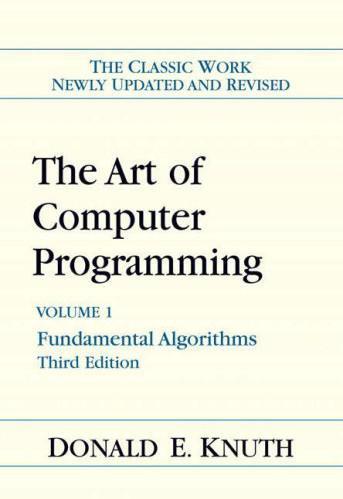
The Art of Computer Programming: Fundamental Algorithms
by
Donald E. Knuth
Published 1 Jan 1974
A suitable notation for coroutines in ALGOL-like languages was introduced in Dahl and Nygaard's SIMULA I [CACM 9 A966), 671-678], 230 BASIC CONCEPTS 1-4.5 and several excellent examples of coroutines (including replicated coroutines) appear in the book Structured Programming by O.-J. Dahl, E. W. Dijkstra, and C. A. R. Hoare, Chapter 3. The first interpretive routine may be said to be the "Universal Turing Machine," a Turing machine capable of simulating any other Turing machines. Turing machines are not actual computers; they are theoretical constructions used to prove that certain problems are unsolvable by algorithms. Interpretive routines in the conventional sense were mentioned by John Mauchly in his lectures at the Moore School in 1946. The most notable early interpreters, chiefly intended to provide a convenient means of doing floating point arithmetic, were certain routines for the Whirlwind I (by C.
…
We must admit that, as the number n of nodes created by a linking automa- automaton approaches infinity, we don't know how to build such a device physically, since we want the machine operations to take the same amount of time regardless of the size of n; if linking is represented by using addresses as in a computer memory, it is necessary to put a bound on the number of nodes, since the link fields have a fixed size. A multitape Turing machine is therefore a more realistic model when n approaches infinity. Yet it seems reasonable to believe that a linking automaton as described above leads to a more appropriate theory of the complexity of algorithms than Turing machines do, even when asymptotic formulas for large n are considered, because the theory is more likely to be relevant for practical values of n. Furthermore when n gets bigger than 1030 or so, not even a one-tape Turing machine is realistic: It could never be built. Relevance is more important than realism.
…
Some of the most interesting problems to solve for such devices would be to determine how fast they can solve certain problems, or how many nodes they need to solve certain problems (for example, to translate certain formal languages). At the time this chapter was first written, several interesting results of this kind had been obtained (notably by J. Hartmanis and R. E. Stearns) but only for special classes of Turing machines having multiple tapes and read/write heads. The Turing machine model is comparatively unrealistic, so these results tended to have little to do with practical problems. We must admit that, as the number n of nodes created by a linking automa- automaton approaches infinity, we don't know how to build such a device physically, since we want the machine operations to take the same amount of time regardless of the size of n; if linking is represented by using addresses as in a computer memory, it is necessary to put a bound on the number of nodes, since the link fields have a fixed size.

Supremacy: AI, ChatGPT, and the Race That Will Change the World
by
Parmy Olson
To that end, Hassabis took inspiration from Alan Turing, the twentieth-century British computer scientist who came up with the Turing machine. Introduced in 1936, it was essentially a thought experiment, a “machine” that only ever existed in Turing’s mind. He envisioned a length of infinite tape that was divided into cells, as well as a tape head that could read and write symbols on the tape, guided by certain rules, until it was told to stop. The idea sounds rudimentary, but as a theory, it was critical in formalizing the concept that computers could use algorithms—or sets of rules—to do things. Given enough time and resources, a Turing machine could be as powerful as any digital computer today.
…
Given enough time and resources, a Turing machine could be as powerful as any digital computer today. And to Hassabis, it was a perfect proxy for the human mind. “The human brain is a Turing machine,” he once said. In 2005, months after closing Elixir, Hassabis jumped into doing a PhD in neuroscience at University College London. His final thesis was relatively short but scientifically exquisite, according to other computer science academics. It was all about memory. Till then, it was thought that the brain’s hippocampus mostly processed memories, but Hassabis showed (with the help of other studies of MRI scans in his thesis) that it was also activated during the act of imagination.
…
Quora Radford, Alec Ramaswamy, Sridhar Reddit reinforcement learning by human feedback (RLHF) religion, Hassabis and Replika Republic: The Revolution Rethink Priorities Retro Biosciences Rohingya Romney, Mitt Roose, Kevin Rubin, Andy Rutkowski, Greg Schiffmann, Avi Schmidt, Eric Scott, Kevin Scribd Shadows of the Mind (Penrose) Shazeer, Noam Shear, Emmet short-term memory Silicon Valley Altman on Big Tech’s ability to buy competitors corporate bloat and looming concerns about tech giants and savior culture and years off and Singer, Peter singularity concept Singularity Summit (2010) Sivo, Nick Skype Snapchat social media Somasegar, Soma SpaceX Spinoza, Baruch Spotify Sprint Srinivas, Aravind Stable Diffusion Stanford University Starlink Stiegler, Marc Stiglitz, Joseph Stripe Suleyman, Mustafa AGI and Altman and charisma of conflict of visions with Hassabis and culture of DeepMind and ethics and safety oversight board and Facebook offer and formation of DeepMind and GIC plan and harassment claims and Hassabis and Hoffman and ideas about artificial intelligence and Inflection and large language models and real-world data and Summers, Larry Sunak, Rishi Sun Valley conference (2018) Superintelligence (Bostrom) Sutskever, Ilya AGI and Altman and on ChatGPT ChatGPT concerns and DeepMind and firing of Altman and large language models OpenAI board and role at OpenAI and salary at OpenAI and Superalignment Team and transformers and Sweeney, Latanya Tab (wearable AI) Tallinn, Jaan Tao, Terence Tay chatbot Taylor, Bret TechCrunch Tencent TensorFlow Tesla Theme Park game Thiel, Peter Thiel Fellowship Thrun, Sebastian Time magazine Tinder Toner, Helen transformers transhumanism Trump, Donald Tuna, Cari Turing, Alan Turing machines Twitch Twitter University College London US Department of Defense Uszkoreit, Jakob Vance, Ashlee Vaswani, Ashish Verily Life Sciences Verizon Vesteger, Margreth video games artificial intelligence and Dota Dota 2 Evil Genius Evil Genius 2 Fable Grand Theft Auto Hassabis and Minecraft Republic: The Revolution Theme Park Visual Studio wage effects Walker, Kent Wall Street Journal Washington Post WebText dataset Weinberg, Steven WhatsApp Whittaker, Meredith Wikipedia Winter Intelligence conference Wired word embedding Worldcoin World Economic Forum Xiaoice Y Combinator YouTube Yudkowsky, Eliezer Zaremba, Wojciech Zero to One (Thiel) Zuckerberg, Mark ZX Spectrum 48 ALSO BY PARMY OLSON We Are Anonymous: Inside the Hacker World of LulzSec, Anonymous, and the Global Cyber Insurgency ABOUT THE AUTHOR Parmy Olson is a Bloomberg Opinion columnist who has been covering the technology industry for more than thirteen years.

Human Compatible: Artificial Intelligence and the Problem of Control
by
Stuart Russell
Published 7 Oct 2019
Modern revival of the topic in the context of global ecology: Garrett Hardin, “The tragedy of the commons,” Science 162 (1968): 1243–48. 30. It’s quite possible that even if we had tried to build intelligent machines from chemical reactions or biological cells, those assemblages would have turned out to be implementations of Turing machines in nontraditional materials. Whether an object is a general-purpose computer has nothing to do with what it’s made of. 31. Turing’s breakthrough paper defined what is now known as the Turing machine, the basis for modern computer science. The Entscheidungsproblem, or decision problem, in the title is the problem of deciding entailment in first-order logic: Alan Turing, “On computable numbers, with an application to the Entscheidungsproblem,” Proceedings of the London Mathematical Society, 2nd ser., 42 (1936): 230–65. 32.
…
In it, he described a simple computing device that could accept as input the description of any other computing device, together with that second device’s input, and, by simulating the operation of the second device on its input, produce the same output that the second device would have produced. We now call this first device a universal Turing machine. To prove its universality, Turing introduced precise definitions for two new kinds of mathematical objects: machines and programs. Together, the machine and program define a sequence of events—specifically, a sequence of state changes in the machine and its memory. In the history of mathematics, new kinds of objects occur quite rarely.
…
See work, elimination of Tegmark, Max, 4, 114, 138 Tellex, Stephanie, 73 Tencent, 250 tensor processing units (TPUs), 35 Terminator (film), 112, 113 Tesauro, Gerry, 55 Thaler, Richard, 244 Theory of the Leisure Class, The (Veblen), 230 Thinking, Fast and Slow (Kahneman), 238 thinking, learning from, 293–95 Thornton, Richard, 133 Times, 7, 8 tool (narrow) artificial intelligence, 46, 47, 136 TPUs (tensor processing units), 35 tragedy of the commons, 31 Transcendence (film), 3–4, 141–42 transitivity of preferences, 23–24 Treatise of Human Nature, A (Hume), 167 tribalism, 150, 159–60 truck drivers, 119 TrueSkill system, 279 Tucker, Albert, 30 Turing, Alan, 32, 33, 37–38, 40–41, 124–25, 134–35, 140–41, 144, 149, 153, 160–61 Turing test, 40–41 tutoring, 100–101 tutoring systems, 70 2001: A Space Odyssey (film), 141 Uber, 57, 182 UBI (universal basic income), 121 uncertainty AI uncertainty as to human preferences, principle of, 53, 175–76 human uncertainty as to own preferences, 235–37 probability theory and, 273–84 United Nations (UN), 250 universal basic income (UBI), 121 Universal Declaration of Human Rights (1948), 107 universality, 32–33 universal Turing machine, 33, 40–41 unpredictability, 29 utilitarian AI, 217–27 Utilitarianism ((Mill), 217–18 utilitarianism/utilitarian AI, 214 challenges to, 221–27 consequentialist AI, 217–19 ideal utilitarianism, 219 interpersonal comparison of utilities, debate over, 222–24 multiple people, maximizing sum of utilities of, 219–26 preference utilitarianism, 220 social aggregation theorem and, 220 Somalia problem and, 226–27 utility comparison across populations of different sizes, debate over, 224–25 utility function, 53–54 utility monster, 223–24 utility theory, 22–26 axiomatic basis for, 23–24 objections to, 24–26 value alignment, 137–38 Vardi, Moshe, 202–3 Veblen, Thorstein, 230 video games, 45 virtual reality authoring, 101 virtue ethics, 217 visual object recognition, 6 von Neumann, John, 23 W3C Credible Web group, 109 WALL-E (film), 255 Watson, 80 wave function, 35–36 “we’re the experts” argument, 152–54 white-collar jobs, 119 Whitehead, Alfred North, 88 whole-brain emulation, 171 Wiener, Norbert, 10, 136–38, 153, 203 Wilczek, Frank, 4 Wiles, Andrew, 185 wireheading, 205–8 work, elimination of, 113–24 caring professions and, 122 compensation effects and, 114–17 historical warnings about, 113–14 income distribution and, 123 occupations at risk with adoption of AI technology, 118–20 reworking education and research institutions to focus on human world, 123–24 striving and enjoying, relation between, 121–22 universal basic income (UBI) proposals and, 121 wage stagnation and productivity increases, since 1973, 117 “work in human–machine teams” argument, 163 World Economic Forum, 250 World Wide Web, 64 Worshipful Company of Scriveners, 109 Zuckerberg, Mark, 157 ABCDEFGHIJKLMNOPQRSTUVWXYZ About the Author Stuart Russell is a professor of Computer Science and holder of the Smith-Zadeh Chair in Engineering at the University of California, Berkeley.
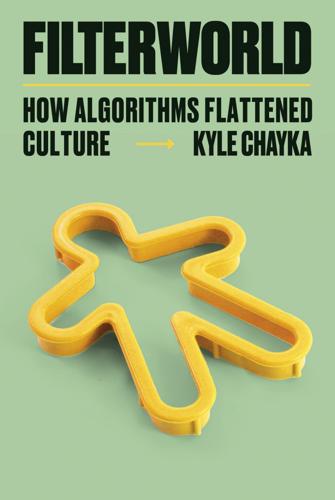
Filterworld: How Algorithms Flattened Culture
by
Kyle Chayka
Published 15 Jan 2024
As early as 1936, Turing conceived of what is now called a “Turing machine,” which he sketched in detail in a 1948 essay called “Intelligent Machinery.” The Turing machine is “an infinite tape marked out into squares, on each of which a symbol could be printed.” The tape moves through a reader that scans one square at a time and performs the operation dictated by the symbol in the square, which can also be erased or overwritten. Any algorithm, in the historical sense of a mathematical process, can be calculated by such a Turing Machine. And any computational system that can compute anything that a Turing Machine can is said to be “Turing-complete.”
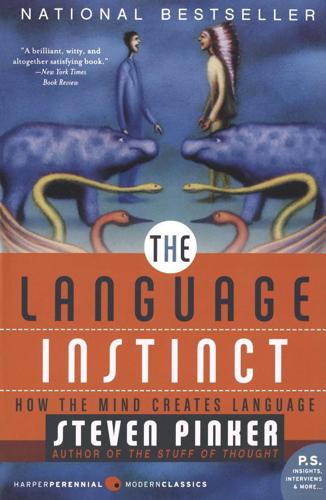
The Language Instinct: How the Mind Creates Language
by
Steven Pinker
Published 1 Jan 1994
It took Alan Turing, the brilliant British mathematician and philosopher, to make the idea of a mental representation scientifically respectable. Turing described a hypothetical machine that could be said to engage in reasoning. In fact this simple device, named a Turing machine in his honor, is powerful enough to solve any problem that any computer, past, present, or future, can solve. And it clearly uses an internal symbolic representation—a kind of mentalese—without requiring a little man or any occult processes. By looking at how a Turing machine works, we can get a grasp of what it would mean for a human mind to think in mentalese as opposed to English. In essence, to reason is to deduce new pieces of knowledge from old ones.
…
A grammar composed of a set of phrase structure rules, which build a deep-structure tree, and one or more transformational rules, which move the phrases in the deep structure to yield a surface-structure tree. transitive. See intransitive. Turing machine. A design for a simple computer consisting of a potentially infinite strip of paper, and a processor that can move along the paper and print or erase symbols on it in a sequence that depends on which symbol the processor is currently reading and which of several states it is in. Though too clumsy for practical use, a Turing machine is thought to be capable of computing anything that any digital computer, past, present, or future, can compute. Universal Grammar.
…
The neuron at the receiving end adds up any signals coming in from excitatory synapses, subtracts any signals coming in from inhibitory synapses, and if the sum exceeds a threshold, the receiving neuron becomes active itself. A network of these toy neurons, if large enough, can serve as a computer, calculating the answer to any problem that can be specified precisely, just like the page-crawling Turing machine in Chapter 3 that could deduce that Socrates is mortal. That is because toy neurons can be wired together in a few simple ways that turn them into “logic gates,” devices that can compute the logical relations “and,” “or,” and “not” that underlie deduction. The meaning of the logical relation “and” is that the statement “A and B” is true if A is true and if B is true.

Artificial Intelligence: A Modern Approach
by
Stuart Russell
and
Peter Norvig
Published 14 Jul 2019
Why not let be the class of all computer programs, or all Turing machines? The problem is that there is a tradeoff between the expressiveness of a hypothesis space and the computational complexity of finding a good hypothesis within that space. For example, fitting a straight line to data is an easy computation; fitting high-degree polynomials is somewhat harder; and fitting Turing machines is undecidable. A second reason to prefer simple hypothesis spaces is that presumably we will want to use h after we have learned it, and computing h(x) when h is a linear function is guaranteed to be fast, while computing an arbitrary Turing machine program is not even guaranteed to terminate.
…
Alfred Kempe (1879) published a proof that was widely accepted for 11 years until Percy Heawood (1890) pointed out a flaw. Third, Gödel’s incompleteness theorem technically applies only to formal systems that are powerful enough to do arithmetic. This includes Turing machines, and Lucas’s claim is in part based on the assertion that computers are equivalent to Turing machines. This is not quite true. Turing machines are infinite, whereas computers (and brains) are finite, and any computer can therefore be described as a (very large) system in propositional logic, which is not subject to Gödel’s incompleteness theorem. Lucas assumes that humans can “change their minds” while computers cannot, but that is also false—a computer can retract a conclusion after new evidence or further deliberation; it can upgrade its hardware; and it can change its decision-making processes with machine learning or software rewriting. 28.1.4Measuring AI Alan Turing, in his famous paper “Computing Machinery and Intelligence” (1950), suggested that instead of asking whether machines can think, we should ask whether machines can pass a behavioral test, which has come to be called the Turing test.
…
This motivated Alan Turing (1912–1954) to try to characterize exactly which functions are computable—capable of being computed by an effective procedure. The Church–Turing thesis proposes to identify the general notion of computability with functions computed by a Turing machine (Turing, 1936). Turing also showed that there were some functions that no Turing machine can compute. For example, no machine can tell in general whether a given program will return an answer on a given input or run forever. Although computability is important to an understanding of computation, the notion of tractability has had an even greater impact on AI.

Life at the Speed of Light: From the Double Helix to the Dawn of Digital Life
by
J. Craig Venter
Published 16 Oct 2013
The mere making of life would only be important if we intended to allow it to evolve of itself anew.” A logical recipe to create these complex mechanisms was developed in the next decade. In 1936 Alan Turing, the cryptographer and pioneer of artificial intelligence, described what has come to be known as a Turing machine, which is described by a set of instructions written on a tape. Turing also defined a universal Turing machine, which can carry out any computation for which an instruction set can be written. This is the theoretical foundation of the digital computer. Turing’s ideas were developed further in the 1940s, by the remarkable American mathematician and polymath John von Neumann, who conceived of a self-replicating machine.
…
The onset of efforts to create another kind of self-reproducing automaton, along with the beginnings of artificial-life research, date back to around this period, when the first modern computers came into use. The discovery of the coded nature of life’s genetic information system led naturally to parallels with Turing machines. Turing himself, in his key 1950 paper on artificial intelligence, discussed how survival of the fittest was “a slow method” that could possibly be given a boost, not least because an experimenter was not restricted to random mutations.26 Many began to believe that artificial life would emerge from complex logical interactions within a computer.

The Blockchain Alternative: Rethinking Macroeconomic Policy and Economic Theory
by
Kariappa Bheemaiah
Published 26 Feb 2017
Luckily for the Allies, hope lay in the form of some work that had been done a few years earlier by another Cambridge mathematician, Alan Turing. Along with his mentor, Max Newman, Turing set about designing and building automated machines (Turing Machines) that could decrypt secret German military communications (as documented in the popular movie, ‘The Imitation Game’). However, owing to an obsession for secrecy during the war years and for several years after that, the achievements made by Turing and the team at Bletchley Park in computer development was kept hidden from view. Instead of Turing Machines, over the same time period, a machine called the ENIAC (Electronic Numerical Integrator And Computer) was being developed by John Mauchly and Presper Eckert across the Atlantic.
…
As World War Two broke out, these advances in computing were adopted and developed by various militaries to communicate sensitive information by integrating the techniques of cryptography - a kind of natural selection. To combat this, pioneers such as Alan Turing and his mentor Max Newman, set about designing and building automated machines (Turing Machines) that could decrypt these camouflaged communiqués. This effectively changed the use of the computer and increased the diversity of the kinds of computers. After the war, advances by notable inventors such as John Mauchly, Presper Eckert and John von Neumann (a veritable polymath) led to the creation of the EDVAC (Electronic Discrete Variable Automatic Computer) , the first binary computer.
…
See Figure 4-11. Figure 4-11.General design of the Electronic Discrete Variable Automatic Computer. Reference Source: ‘The von Neumann Architecture’, The Computing Universe, 2014 From an abstract architecture perspective, von Neumann’s design is logically equivalent to Turing’s Universal Turing Machine. In fact, von Neumann had read Turing’s theoretical papers prior to designing his machine. Ultimately it was this simple design that was built upon by successive generations of computer scientists and led to the design of computers with multiple processors and the creation of parallel computing.
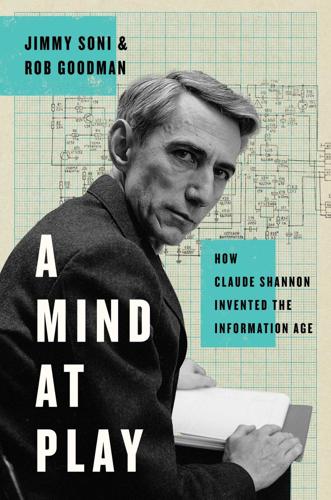
A Mind at Play: How Claude Shannon Invented the Information Age
by
Jimmy Soni
and
Rob Goodman
Published 17 Jul 2017
In particular, thinking machines were much on the two men’s minds—in Shannon’s words, “the notion of building computers that will think and what you can do with computers and all that.” He went on: Turing and I had an awful lot in common, and we would talk about that kind of question. He had already written his famous paper about Turing Machines, so called, as they call them now, Turing Machines. They didn’t call them that then. And we spent much time discussing the concepts of what’s in the human brain. How the brain is built, how it works and what can be done with machines and whether you can do anything with machines that you can do with the human brain and so on.
…
In 1942, Turing came to America as a part of a government-initiated tour of military encryption projects. By this point, his reputation preceded him. He had demonstrated astonishing mathematical precocity in primary school; mastered Einstein’s work by sixteen; and by twenty-three had been elected a fellow of King’s College, Cambridge. In 1936, he dreamed up the Turing Machine, a landmark thought experiment that served as the theoretical underpinning of the modern computer. Turing had also begun the codebreaking that would make him a world-historic figure. It was cryptography that had brought him to the United States, on orders to connect with American counterparts, meet the military leaders in the space, and inspect the American machinery for quality and security.
…
G., 14 Sagan, Carl, xiv Samuelson, Paul, 176 San Francisco, Calif., 126 Saturn, 262 Schellenberg, Walter, 97–98 Schramm, Wilbur, 167–68, 169 Scientific American, 165, 214, 280, 281 Scientology, 200–201 Second Law of Thermodynamics, 162n Sedgwick, Adam, 170 Segrè, Emilio Gino, 263 Selective Service and Training Act (1940), 80 “Seminar on Information Theory” (Shannon lecture), 224 Shannon, Betty Moore, 192, 203, 212, 215, 223, 227, 246, 256, 257, 258, 262, 264–65, 272 background of, 182 at Bell Labs, 183–84 CS’s Alzheimer’s and, 269, 270–71 CS’s courtship of, 182, 184 education of, 182–83 family life of, 233–34 investing by, 234, 238–42 mathematical talent of, 183–85 professional partnership of CS and, 184–85 wedding of CS and, 184 Shannon, Catherine, 8, 9, 13, 18, 184, 264–65 Shannon, Claude Elwood, xi–xv abstractive genius of, 46 Alfred Noble Prize awarded to, 48 Alzheimer’s disease of, 268–71 atheism of, 46, 84 barbed wire telegraph of, xii, 4–5, 34, 72 at Bell Labs, 38, 68, 70, 71–73, 101 Bell Labs friends of, 111–14 Betty Moore and, see Shannon, Betty Moore birth of, 8 Boolean algebra and, 37–39 as both mathematician and engineer, 275, 276 chess as passion of, 199, 211–12 childhood and adolescence of, xii, 4–5, 8, 9–11, 19, 34, 72, 126 at Cold Spring Harbor, 49, 53–60 computerized chess and, xv, 212–16 cryptography as early interest of, 4, 19 cryptography expertise of, xiii, 95, 101–2, 104, 152, 193–94, 195, 310n curiosity of, 202–3, 266, 275 death of, 271–72 demands on time of, 195 draft worries of, 80–81, 82 dual engineering and math undergraduate degrees of, 16–17 Erector sets of, xv, 6, 11, 203, 256 family life of, 233 flight training of, 47 Fry’s mentoring of, 68, 75, 81, 83, 90, 166 gambling strategies and, 244 Greenwich Village apartment of, 110–11, 136, 182 growing fame of, xiv, 188–89 honors and prizes awarded to, 257–59, 261–62 on human-machine interactions, 207–9 impatience of, 113–14 as inconsistent correspondent, 200 information theory invented by, see information theory at Institute for Advanced Study, 74–80, 162 intellectual courage of, 277–78 intuitive thought process of, 184–85, 230, 232–33, 245 investing by, 234, 238–42 jazz as passion of, 61, 110, 111, 255 juggling as passion of, see juggling Kyoto laureate lecture of, 265–67 Kyoto Prize awarded to, 263–67 legacy of, 273–81 machines as fascination of, 203–9 master’s thesis of, xiii, 39–43 mathematics as early interest of, 9, 10, 16–17 mechanical abilities of, 10–11, 16–17 misapplication of information theory as concerning to, 190–92 as MIT full professor, 225, 228–33, 234–35, 236, 239, 240–41, 244, 246, 248, 261, 262, 276 as MIT graduate student, xii, 32, 34, 45–49, 61, 74, 94, 177 as MIT visiting professor, 223–25 modesty and self-effacement of, xii, xiv, xv, 48, 107, 179, 257, 262, 275, 276, 278 National Medal of Science awarded to, 258 National Research Fellowship of, 63 NDRC work of, 81–82 Norma Levor and, see Shannon, Norma Levor numerous publications of, 235 Oxford fellowship of, 259–60 playfulness of, xi, xv, 46, 266, 267, 270, 277, 278–81 poetry written by, 63, 280–81 practical nature of, 72 publishing results as secondary to, 59–60 puzzle solutions published by, 19–20 roulette prediction device of Thorp and, 245–46 as SCAG member, 196–98 self-isolation of, xii, 46, 47–48, 59, 62, 79, 114, 185, 202, 230 shyness of, 46, 47–48 Stanford fellowship of, 226, 258–59 teaching method of, 232 Theseus project of, 203–7, 211, 217, 266, 278 as tinkerer, xii, xv, 10, 11, 45–46, 72, 228–29, 233, 234, 243, 244–45, 270, 271, 276 unicycles of, xv, 199, 228, 248, 249, 279 at University of Michigan, 13, 15–20, 35, 39–43 war work disliked by, 93–94, 95 wealth of, 238, 239–40 wide-ranging interests of, 275–76 Winchester house of, see Entropy House work as hobby for, 266 Shannon, Claude Elwood, Sr., 5–6, 8 death of, 18 Shannon, David, Jr., 11 Shannon, Mabel Wolf, 5–7, 8, 290n CS’s estrangement from, 18 Shannon, Norma Levor, 77, 78, 110 atheism of, 63 background of, 62 CS’s courtship of, 62–63 divorce of CS and, 79–80, 184 intellectual ambitions of, 63, 80 at Radcliffe, 62, 63 wedding of CS and, 63 Shannon, Peggy, 183, 228, 233, 234, 238–39, 240, 242, 249, 258, 261, 264–65, 268–69, 270, 271 Shannon family, 233–34, 258, 269 travels by, 261–62 Shannon Limit, 157, 270, 274, 325n Sheldon, William, 111 Shockley, William, 67 shorthand, 153 shumi (hobby), 266 signals: conversion of, from analog to digital, 134–35 fluctuation of, 127 noise vs., 119–20, 123–24, 126, 127, 156–61, 179 SIGSALY system, 96, 98–99, 100, 101, 103 Silverberg, Robert, 252–53 similarities, in problem solving, 219 simplifying, in problem solving, 219 Singleton, Henry, 239 $64,000 Question (TV show), 225 Slepian, David, 114, 184 slide rules, 265–66 Smith, Adam, 240 Smith, Walter Bedell, 193–94, 195 smoothing, 88 Socrates, 37, 172, 253 solutions, CS on strategies for arriving at, 218–20 South Korea, 197 Soviet Union, 166, 174, 194, 211–12 Spanish Civil War, 86 Special Cryptologic Advisory Group (SCAG), 196–98 spinning jenny, 265 Staebler, Edward, 14 Stanford University, 178, 258–59 Center for Advanced Study in Behavioral Sciences at, 226 Staten Island, N.Y., 182 steam engine, 265 stochastic processes, 76 information as, 145–53 Stockholm, Sweden, 264 stock market, 243 Shannons’ investments in, 234, 238–42 stock market crash of 1929, 14 structural analysis, in problem solving, 219–20 SWEATER project, 196 Sweden, 126 Swift, Edgar James, 250–51 “Symbolic Analysis of Relay and Switching Circuits, A” (Shannon), 39–43 Szegoő, Gábor, 94 Szilard, Leo, 162n technology, CS’s optimistic view of, 208–9 Teledyne, 239, 242 telegraphs, telegraphy, 127, 265 homemade networks of, 4–5 information theory and, 145 telephone networks, 38, 66, 77, 125–26 automated switchboards in, 126 color coding of, 71–72 relays in, 72–73, 203 “thalassophilia,” 51 “Theorem on Color Coding” (Shannon), 71–73 “Theoretical Possibilities Using Codes with Different Numbers of Current Values” (Nyquist), 128 thermodynamics, Second Law of, 162n Theseus (maze-solving mechanical mouse), xv, 203–7, 211, 217, 266, 278 thinking machines: CS on future of, 266 CS’s fascination with, 203–9 see also artificial intelligence; computers, digital Thomson, William, Lord Kelvin, 36, 43, 123, 124, 125, 127, 157 harmonic analyzer of, 25–28 transatlantic cable and, 120, 121–22 Thorp, Ed, 243–46 Thorp, Vivian, 246 THROBAC (Thrifty Roman-Numeral Backward-Looking Computer), xv, 207, 243 Throop College of Technology, 83 tides, prediction of, 24–25, 127 Time, 22, 188, 205 Tonga, Tongans, 252–53 transatlantic telegraph cable, 119–24, 157, 158 transatlantic telephony, first successful experiment in, 130–31 “Transmission of Information” (Hartley), 131 transmission speed, redundancy and, 154–56 Tufts University, 176 Tukey, John, 141 TUNNY, 96 turbo codes, 325n Turing, Alan, xiii, 42–43, 99, 150 cryptography and, 103–6 CS’s friendship with, 104, 106–9 death of, 109 Turing Machines, 103, 106 Turing Test, 209 “Turk, The” (hoax), 210–11, 212 Turkey, 261 Tuxedo Park laboratory, 93 U-boats, 167 Ultimate Machine, xv, 207, 278 uncertainty, in information theory, 142–44, 311n unicycles, xv, 199, 228, 248, 249, 279 United States, British mistrust of, 105–6 University of Illinois Press, 168 Upper Mystic Lake, 227 “Use of the Lakatos-Hickman Relay in a Suburban-Sender Case, The” (Shannon), 72 Valentia Island, 122 Vanity Fair, 254 Veblen, Oscar, 74, 75 Verdú, Sergio, 174, 179 Versailles, Treaty of, 86 Virginia, 131 Vocoder (Voice Encoder), 99, 100 Voder (Voice Operation Demonstrator), 99–100 Vogue, 207–8 Von Neumann, John, xiii, 74, 75–76, 93, 162, 172, 175, 194, 195–96, 197, 198, 240 Voyager I, xiv, 262 Voyage Round the World, A (Forster), 252–53 Wall Street Journal, 238 Wall Street Week (TV show), 241 Walter Reed Hospital, 198 Washington, D.C., 196 Washington Square Park, (New York City), 110 Watson, James, 188 Watson, Thomas A., 123, 126 Watt, James, 265 Wealth of Nations, The (Smith), 240 Weaver, Warren, 83–85, 86, 89, 90, 166–67, 168–69 Wenger, Joseph, 194–95, 196 Western Electric, 65, 66, 99 Weyl, Hermann, 76–77, 145 White House, 258 Whitehouse, O.

The Innovators: How a Group of Inventors, Hackers, Geniuses and Geeks Created the Digital Revolution
by
Walter Isaacson
Published 6 Oct 2014
Turing’s paper was published in 1937 with the not so snappy title “On Computable Numbers, with an Application to the Entscheidungsproblem.” His answer to Hilbert’s third question was useful for the development of mathematical theory. But far more important was the by-product of Turing’s proof: his concept of a Logical Computing Machine, which soon came to be known as a Turing machine. “It is possible to invent a single machine which can be used to compute any computable sequence,” he declared.10 Such a machine would be able to read the instructions of any other machine and carry out whatever task that machine could do. In essence, it embodied the dream of Charles Babbage and Ada Lovelace for a completely general-purpose universal machine.
…
Turing asked his mother to send out reprints of it to the mathematical philosopher Bertrand Russell and a half dozen other famous scholars, but the only major review was by Alonzo Church, who could afford to be flattering because he had been ahead of Turing in solving Hilbert’s decision problem. Church was not only generous; he introduced the term Turing machine for what Turing had called a Logical Computing Machine. Thus at twenty-four, Turing’s name became indelibly stamped on one of the most important concepts of the digital age.12 CLAUDE SHANNON AND GEORGE STIBITZ AT BELL LABS There was another seminal theoretical breakthrough in 1937, similar to Turing’s in that it was purely a thought experiment.
…
In 1939 Zuse began work on a third model, the Z3, that used electromechanical relays both for the arithmetic unit and for the memory and control units. When it was completed in 1941, it became the first fully working all-purpose, programmable digital computer. Even though it did not have a way to directly handle conditional jumps and branching in the programs, it could theoretically perform as a universal Turing machine. Its major difference from later computers was that it used clunky electromagnetic relays rather than electronic components such as vacuum tubes or transistors. Zuse’s friend Schreyer went on to write a doctoral thesis, “The Tube Relay and the Techniques of Its Switching,” that advocated using vacuum tubes for a powerful and fast computer.
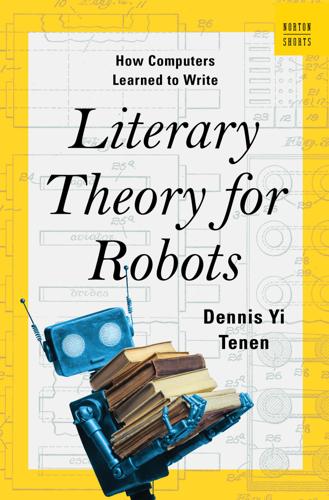
Literary Theory for Robots: How Computers Learned to Write
by
Dennis Yi Tenen
Published 6 Feb 2024
The work on pulp fiction, structuralism, and early computer science is also entirely my own novel contribution, based on original research. A few loose leads remain, poking out of the seams between chapters. Let’s trim them and draw toward a conclusion. Several important sources lay too far afield to cover adequately. For instance: Histories of the Turing machine and the Turing test often neglect the direct influence owed to Ludwig Wittgenstein’s lectures, along with the presence of Margaret Masterman, the pioneer of machine translation, in the same classroom. Masterman’s universal thesaurus harkens back to Wilkins and other universal-language makers, central to a whole separate and important branch of AI—machine translation.
…
Gaspar, 33 Science and Poetry (Richards), 119–20 science(s), 41, 119, 121 scientific method, 69 Scott, Sir Walter Waverly, 65 scrapbooks, 73–74 script generators, 94–95 search engine technology, 113 Sebald, Winfried Georg, 13 self-driving cars, 14, 124, 126–27 “Self-Taught Philosopher” (Ibn Tufail), 36 semantic distance, 112 semantics, 102 semiotics, 2 Shakespeare, William, 13 Shannon, Claude, 105–6, 108–10 “A Theory of Mathematical Communication,” 105–6 Signal Corps, 87 sign-situations, 102 Simenon, Georges, 65 singularities, 7 Skeleton Essays, or Authorship in Outline (English), 71, 72 skeleton forms, 63–64 skeleton of skeletons, 64 Slosson, Edwin Plots and Personalities, 71 smart, appearing, 3 smart cars, 126–27 smart devices, 4, 38, 39, 79 smart gadgets, 29 smart machines, 37, 99–100 smart objects, 4–5 smart phones, 123 Smith, Elizabeth Meade, 65–66 A World of Girls, 66 Society of Automotive Engineers, 15 Socrates, 35 software-engineering education, 5 solid-state memory storage, 8–9 Somerville, Mary, 51 sonnets, 31, 34 Soviet Union, 8, 65, 77, 81, 82 Spain, 26, 66 spell-checkers, 29, 110 Springfield, Mass., 71 Stalin, Joseph, 82 Stanford University, 92 Star Wars (film), 93 statistical intelligence, 114 statistics, 102–3, 108, 113–14 Sterne, Laurence Tristram Shandy, 65 Stratemeyer, Edward L., 66 Street & Smith, 66 strings, 9, 105, 106 structuralism, 83–86, 94 STUDENT (question-answering system), 92 Student-Writer, 73 Studies of Linguistic Analysis, 114 success, concept of, 116 supply cards, 60 Swift, Jonathan Gulliver’s Travels, 65 syntax, 87, 91, 93 tables in Analytical Engine, 52, 64 application, 33, 48 in Mathematical Organ, 75 reference, 40 smart, 29, 36, 41 table of, 25 in zairajah, 19, 22–27 TALE-SPIN (story generator), 92, 95–98 tasks, devaluation of automated, 38 taxonomies, 12, 23–24 Technique of Drama, The (Price), 72–73 Technique of Fiction Writing, The (Dowst), 71 Technique of the Mystery Story, The (Wells), 71, 73 Technique of the Novel, The (Horne), 71 Technique of Play Writing, The (Andrews), 71 technological change, 131 telecommunications, 105 telegraphs, 7–8, 105, 111 Tellado, Corin, 66 template-based manufacturing, 60–61, 64 templates, 62, 64, 70, 71, 79–80, 83–84, 94–97, 100 Ten Million Photoplay Plots, 77 text generators, 20–21, 65, 77, 78 “Theory of Mathematical Communication, A” (Shannon), 105–6 thinking and thought, 3, 4, 14, 36, 45, 59–61, 93, 123–25, 132, 138 Thirty-Six Dramatic Situations, The (Polti), 68–71 Thompson, Henry, 93 Tolstoy, Leo, 65, 121 TRAC (story generator), 92 translation, machine, 119 transmissions, 14–16 trees, 55 trickster, figure of the, 80 Tristram Shandy (Sterne), 65 true crime, 66 truth, ground, 40 Tufts University, 28 Turin, Italy, 54 Turing, Alan, 12, 37, 43, 93 Turing machine, 119 Turing test, 119 Twain, Mark, 73–74 2001: A Space Odyssey (film), 93 Types of Prose Narratives (Fansler), 71 Ukraine, Russian aggression in, 120–21, 125 United Kingdom, 66, 131 United States literary market in, 70 number of books printed in, 66 universal intelligence, 37–38, 139 universality, 46–47 universal language machines, 40 universal languages, 39, 46 universal machine, 12, 37 universal thesaurus, 119 University of Jena, 30–31 University of Pennsylvania, 83 University of Wisconsin, 92 urbanization, 67 US Air Force, 87 US Army, 87 US Library of Congress, 112 US Navy, 87 values encoding of, 135–36 local, 38 vector spaces, 11, 111–12 von Neumann, John, 44 W.

Our Final Invention: Artificial Intelligence and the End of the Human Era
by
James Barrat
Published 30 Sep 2013
Before the war, Turing had studied mathematics and encryption at Cambridge and Princeton. He had imagined an “automatic machine,” now known as a Turing machine. The automatic machine laid out the basic principles of computation itself. The Church-Turing hypothesis, which combined Turing’s work with that of his Princeton professor, mathematician Alonso Church, really puts the starch in the pants of the study of artificial intelligence. It proposes that anything that can be computed by an algorithm, or program, can be computed by a Turing machine. Therefore, if brain processes can be expressed as a series of instructions—an algorithm—then a computer can process information the same way.
…
Searle, John self-awareness Self-Aware Systems self-improvement self-preservation September 11 attacks serial processing SETI (Search for Extraterrestrial Intelligence) Shostak, Seth Silicon Valley Singularitarians Singularity definitions of Kurzweil and technological Singularity Is Near, The (Kurzweil) Singularity Summit Singularity University Sir Groovy Siri 60 Minutes Skilling, Jeffrey Smart Action smart phones see also iPhone software complexity of malware see also programming solar energy space exploration “Speculations Concerning the First Ultraintelligent Machine” (Good) speech recognition SRI International stealth companies Sterrit, Roy Stibel, Jeff Stuxnet subprime mortgage crisis Symantec SyNAPSE Technological Risk (Lewis) technology journalism Terminator movies terrorism 9/11 attacks Thiel, Peter Thinking Machines, Inc. Three Mile Island tightly coupled systems Thrun, Sebastian transhumans transistors Traveller Trillion Credit Squadron Turing, Alan Turing machine Turing test Tversky, Amos two-minute problem 2001: A Space Odyssey Ulam, Stanislaw utility function Vassar, Michael Vicarious Systems Vinge, Vernor violence Virginia Tech Massacre Virtually You (Aboujaoude) voice recognition von Neumann, John Voss, Peter Wallach, Wendall Wall Street Warwick, Kevin Washington Post Watson weapons, see military Whitby, Blay “Why the Future Doesn’t Need Us” (Joy) Wired for Thought (Stibel) Wissner-Gross, Alexander D.

Superintelligence: Paths, Dangers, Strategies
by
Nick Bostrom
Published 3 Jun 2014
But even if a small group had always been isolated, it might still be part of a larger collective intelligence than meets the eye—namely, the collective intelligence consisting of not only the present but all ancestral generations as well, an aggregate that can function as a feed-forward information processing system. 14. By the Church–Turing thesis, all computable functions are computable by a Turing machine. Since any of the three forms of superintelligence could simulate a Turing machine (if given access to unlimited memory and allowed to operate indefinitely), they are by this formal criterion computationally equivalent. Indeed, an average human being (provided with unlimited scrap paper and unlimited time) could also implement a Turing machine, and thus is also equivalent by the same criterion. What matters for our purposes, however, is what these different systems can achieve in practice, with finite memory and in reasonable time.
…
Murphy (2012). 28. Pearl (2009). 29. We suppress various technical details here in order not to unduly burden the exposition. We will have occasion to revisit some of these ignored issues in Chapter 12. 30. A program p is a description of string x if p, run on (some particular) universal Turing machine U, outputs x; we write this as U(p) = x. (The string x here represents a possible world.) The Kolmogorov complexity of x is then K(x):=minp {l(p): U(p) = x}, where l(p) is the length of p in bits. The “Solomonoff” probability of x is then defined as where the sum is defined over all (“minimal,” i.e. not necessarily halting) programs p for which U outputs a string starting with x (Hutter 2005). 31.
…
What matters for our purposes, however, is what these different systems can achieve in practice, with finite memory and in reasonable time. And the efficiency variations are so great that one can readily make some distinctions. For example, a typical individual with an IQ of 85 could be taught to implement a Turing machine. (Conceivably, it might even be possible to train some particularly gifted and docile chimpanzee to do this.) Yet, for all practical intents and purposes, such an individual is presumably incapable of, say, independently developing general relativity theory or of winning a Fields medal. 15. Oral storytelling traditions can produce great works (such as the Homeric epics) but perhaps some of the contributing authors possessed uncommon gifts. 16.

Infinity in the Palm of Your Hand: Fifty Wonders That Reveal an Extraordinary Universe
by
Marcus Chown
Published 22 Apr 2019
The crucial thing is that Turing’s machine can be fed a description, encoded in binary, of any other machine and will then simulate that machine. Because of this unprecedented ability, Turing called it a Universal Machine. Today, it is referred to as a Universal Turing Machine. Clearly, it is unrecognizable as a computer. But that is exactly what it is. A Universal Turing Machine is the simplest computer imaginable: the irreducible atom of computing. Ironically, Turing devised his machine-of-the-mind to show not what a computer can do but what it cannot do. As a mathematician, it was the ultimate limit of computers that interested him.

Applied Cryptography: Protocols, Algorithms, and Source Code in C
by
Bruce Schneier
Published 10 Nov 1993
Previous Table of Contents Next ----------- Complexity of Problems Complexity theory also classifies the inherent complexity of problems, not just the complexity of particular algorithms used to solve problems. (Excellent introductions to this topic are [600, 211, 1226]; see also [1096, 27, 739].) The theory looks at the minimum time and space required to solve the hardest instance of a problem on a theoretical computer known as a Turing machine . A Turing machine is a finite-state machine with an infinite read-write memory tape. It turns out that a Turing machine is a realistic model of computation. Problems that can be solved with polynomial-time algorithms are called tractable, because they can usually be solved in a reasonable amount of time for reasonable-sized inputs. (The exact definition of “reasonable” depends on the circumstance.)
…
Figure 11.1 shows the more important complexity classes and their presumed relationships. (Unfortunately, not much about this material has been proved mathematically.) On the bottom, the class P consists of all problems that can be solved in polynomial time. The class NP consists of all problems that can be solved in polynomial time only on a nondeterministic Turing machine: a variant of a normal Turing machine that can make guesses. The machine guesses the solution to the problem—either by making “lucky guesses” or by trying all guesses in parallel—and checks its guess in polynomial time. NP ’s relevance to cryptography is this: Many symmetric algorithms and all public-key algorithms can be cracked in nondeterministic polynomial time.
…
Furthermore, this argument is not applicable to all classes of ciphers; in particular, it is not applicable to one-time pads—for any C, there are many X, k pairs that yield C when run through the encryption algorithm, but most of these X s are nonsense, not legitimate plaintexts. Figure 11.1 Complexity classes. The class NP includes the class P, because any problem solvable in polynomial time on a deterministic Turing machine is also solvable in polynomial time on a nondeterministic Turing machine; the guessing stage can simply be omitted. If all NP problems are solvable in polynomial time on a deterministic machine, then P = NP. Although it seems obvious that some NP problems are much harder than others (a brute-force attack against an encryption algorithm versus encrypting a random block of plaintext), it has never been proven that P ` NP (or that P = NP).

This Is for Everyone: The Captivating Memoir From the Inventor of the World Wide Web
by
Tim Berners-Lee
Published 8 Sep 2025
• At the time, the set of people at work on computing was small and it’s little surprise my parents got to know Alan Turing, the godfather of computer science. During the war, Turing had been the UK’s greatest codebreaker. He was a lean and handsome polymath who drafted a conceptual outline of the computer – known as ‘the Turing machine’ – several years before the hardware was available to build one. His team then put these ideas into practice at Bletchley Park, a stately English country house north-west of London, building the electromechanical contraption known as Colossus that cracked the German Enigma cipher. His work was kept confidential for decades afterwards, but historians now credit Turing and his team with shortening the war by several years.
…
By positioning the jets in the right way, you could create a ‘logic gate’ which varied its output according to simple rules. By chaining these logic gates together, you could start to do rudimentary calculations, like one plus zero or one plus one. And by chaining those primitive parts together, you could make a computer – a so-called ‘universal’ Turing machine, capable of all tasks accomplishable by computers. Computers were exciting, but even then, I knew they could not do everything. I understood from talking to my father that they could record things in tables, but they could not typically remember random associations – passing connections, like when you smell a cup of coffee and are reminded of a trip to Ethiopia three years earlier.
…
A few years later, it was all taken for granted and old hat. My terminal couldn’t run code, but in my last year at Oxford, Motorola introduced its 6800 ‘microprocessor’, which was a whole computer on a chip. Oh, this was a beautiful little thing: a forty-pin, 2-inch package in maroon-and-gold housing that gleamed in the light and contained the actual Turing machine – the thing which executes instructions stored in memory. Rather than put it on one single motherboard as many home computer users were doing, I had a 19-inch-wide rack which I could upgrade just by plugging in cards. The M6800 came with a primitive ‘assembly’ language for designing and executing simple programs.
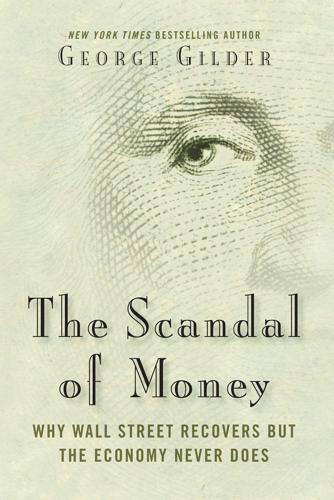
The Scandal of Money
by
George Gilder
Published 23 Feb 2016
Addressing pure logic as math, Gödel concluded that even arithmetic cannot constitute a complete and coherent system. All logical schemes have to move beyond self-referential circularity and invoke axioms outside themselves. Turing explored the possibility of a complete and self-sufficient logical machine and found it an impossible dream. His “Turing machine” defined the abstract logical architecture of all computers. But all computers must depend on what Turing called human “oracles” to define their symbols, instructions, and programs and to interpret their output, which as a stream of off-and-on currents or charges is ostensibly meaningless.1 Shannon set out to create a purely mathematical definition of information and ended up providing a logical scheme of communication that depends on human subjectivity and creativity for meaning and purpose.
…
See also secular stagnation Stiglitz, Joseph, 89 stimulus, xiii, xviii, 14, 150, 171 Stockman, David, 40, 48, 50 Stone Age, 19, 169 Summers, Lawrence “Larry,” 3, 7, 56, 114, 134, 150 Sun Microsystems, 119 Swanson’s Law, 18 Sweden, Swedes, 5, 36 Szabo, Nick, 64, 72–76, 160 T Taiwan, Taiwanese, 30, 46–48, 106 Tamny, John, 11 tax cuts, xiv, 12, 151, 153 Taylor, John, 35 Taylor Rule, 35 technology, xi, xviii–xix, xxi–xxii, 2–3, 5–9, 12–13, 19, 41, 43, 45, 56–58, 63–67, 70, 83, 90, 92, 100, 143, 158, 171 Tel Aviv, 118 Texas, 55, 99 Thailand, 110 Thiel, Peter, xi, 14, 56 third world, the, 6, 118, 152 Tiananmen Square, 29, 43 Troubled Asset Relief Program, 55 Trump, Donald, 40, 113 Turing, Alan, 64, 138, 168, 174 Turing machine, 138 Turner, Adair, 88–96, 110 Turner-Piketty thesis, 93, 96 Tversky, Amos, xx Twilight of Sovereignty (Wriston), 101 U UBS, 127 unemployment rates, xi–xiii, 35, 55, 100, 150, 152 Unenumerated, 73 “unicorns,” 50, 87, 119–23, 171 Union of Soviet Socialist Republics (USSR), 42. See also Soviet Union United Kingdom (UK), 87–89, 104.

Algorithms to Live By: The Computer Science of Human Decisions
by
Brian Christian
and
Tom Griffiths
Published 4 Apr 2016
Tom and his colleagues have used this approach to develop models of human cognition; see Griffiths, Lieder, and Goodman, “Rational Use of Cognitive Resources.” analogy to a human mathematician: In section 9 of Turing, “On Computable Numbers,” Turing justifies the choices made in defining what we now call a Turing machine by comparing them to operations that a person might carry out: a two-dimensional piece of paper becomes a one-dimensional tape, the person’s state of mind becomes the state of the machine, and symbols are written and read as the person or machine moves around on the paper. Computation is what a computer does, and at the time the only “computers” were people.
…
“a clever man would put the poison into his own goblet”: The Princess Bride, screenplay by William Goldman; 20th Century Fox, 1987. “anticipating the anticipations of others”: Attributed to Keynes in Gregory Bergman, Isms, Adams Media, 2006. it was the halting problem that inspired Turing: Alan Turing considers the halting problem and proposes the Turing machine in “On Computable Numbers, with an Application to the Entscheidungsproblem” and “On Computable Numbers, with an Application to the Entscheidungsproblem. A Correction.” “poker players call it ‘leveling’”: Dan Smith, personal interview, September 11, 2014. “You don’t have deuce–seven”: This took place at the “Full Tilt Poker Durrrr Million Dollar Challenge,” held at Les Ambassadeurs Club in London, November 17–19, 2009, and was televised on Sky Sports.
…
See also Transmission Control Protocol (TCP) teaching to the test technical investors telegraph telephone temperature temporal locality Tenenbaum, Josh tennis tournaments Texas Hold ’Em text messages “TeX Tuneup of 2012, The” (Knuth) Thanksgiving commerce theft, irrational responses and Things a Computer Scientist Rarely Talks About (Knuth) 37% rule Thoreau, Henry David thrashing threading Three Princes of Serendip, The Threshold Rule throughput Tibshirani, Robert Tikhonov, Andrey time interval of timeboxing time costs time management time-space tradeoffs Tolins, Jackson Tomlinson, Ray town size distributions Toxoplasma gondii traffic tragedy of the commons training scars transit systems Transmission Control Protocol (TCP) ACKs and backchannels and flow control and price of anarchy and traveling salesman problem Treat, Tyler “Treatise on the Probability of the Causes of Events” (Laplace) Tree, Jean Fox Trick, Michael triple handshake triple-or-nothing game trip planning. See also traveling salesman problem Turing, Alan Turing machine turn-taking Tuskegee Syphilis Study Tversky, Amos Twain, Mark twin primes Twitter two-factor models two-machine scheduling UC Berkeley Ulam, Stanislaw “Stan” Ullman, Ellen uncertainty Unilever “Unreasonable Effectiveness of Data, The” (Norvig) “up or out” system Upper Confidence Bound urban planners US Armed Forces US Census US House of Representatives US Public Health Service U-turns vacation email and itinerary of policy on vaccination Vail, Alfred valet stand veil of ignorance verification, gap between search and Vickrey, William Vickrey auction Vita Coco voicemail voice transmission, Internet Voltaire Von Neumann, John Wagenmakers, E.
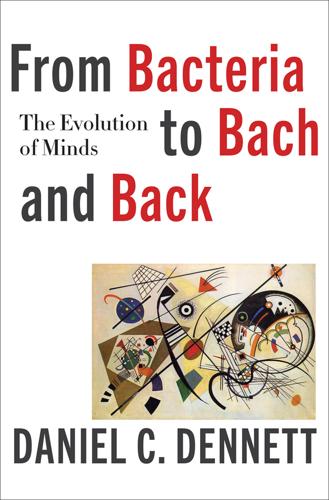
From Bacteria to Bach and Back: The Evolution of Minds
by
Daniel C. Dennett
Published 7 Feb 2017
This is very hard to imagine or even to take seriously, and this has inspired some thinkers to conclude that since evolution couldn’t create a computer (or a computer program to run on it), human minds must not be products of natural selection alone, and the aspirations of Artificial Intelligence must be forlorn. The mathematician and physicist Roger Penrose (1989) is the most illustrious example. For the sake of argument let’s concede that evolution by natural selection could not directly evolve a living digital computer (a Turing machine tree or a Turing machine turtle, for example). But there is an indirect way: let natural selection first evolve human minds, and then they can intelligently design Hamlet, La Sagrada Familia, and the computer, among many other wonders. This bootstrapping process seems almost magical at first, even self-contradictory.
…
More importantly, he showed that if their instructions included conditional branching (if-then instructions, such as “if you observe 0, replace it with 1 and move left, and if you observe 1 leave it as is and move right, and change to state n.”), then these machines could pursue indefinitely complex paths determined by the instructions, which gave them a remarkable competence: they could do anything computational. In other words, a programmable digital computer is a Universal Turing Machine, capable of mimicking any special-purpose digital computer by following a set of instructions that implement that special-purpose computer in software.13 (You don’t have to rewire your smartphone to get it to do new tasks; just download an app and turn it into a star finder or translator or hand calculator or spell-checker or.…) A huge Design Space of information-processing was made accessible by Turing, and he foresaw that there was a traversable path from Absolute Ignorance to Artificial Intelligence, a long series of lifting steps in that Design Space.
…
The short explanation is that Turing himself is one of the twigs on the Tree of Life, and his artifacts, concrete and abstract, are indirectly products of the blind Darwinian processes in the same way spider webs and beaver dams are, so there is no radical discontinuity, no need for a skyhook, to get us from spiders and beaver dams to Turing and Turing machines. Still, there is a large gap to be filled, because Turing’s way of making things was strikingly different from the spider’s way and the beaver’s way, and we need a good evolutionary account of that difference. If competence without comprehension is so wonderfully fecund—capable of designing nightingales, after all—why do we need comprehension—capable of designing odes to nightingales and computers?
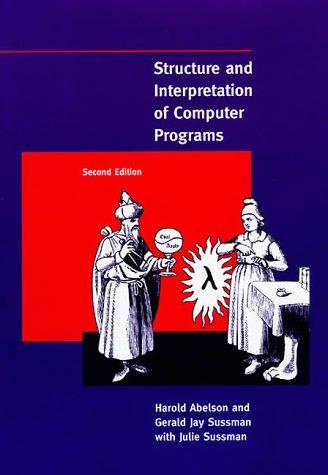
Structure and interpretation of computer programs
by
Harold Abelson
,
Gerald Jay Sussman
and
Julie Sussman
Published 25 Jul 1996
Turing (1912-1954), whose 1936 paper laid the foundations for theoretical computer science. In the paper, Turing presented a simple computational model – now known as a Turing machine – and argued that any “effective process” can be formulated as a program for such a machine. (This argument is known as the Church-Turing thesis.) Turing then implemented a universal machine, i.e., a Turing machine that behaves as an evaluator for Turing-machine programs. He used this framework to demonstrate that there are well-posed problems that cannot be computed by Turing machines (see exercise 4.15), and so by implication cannot be formulated as “effective processes.” Turing went on to make fundamental contributions to practical computer science as well.
…
Solver tower of types tracing instruction execution register assignment transform-painter transparency, referential transpose a matrix tree B-tree binary, see also binary tree combination viewed as counting leaves of enumerating leaves of fringe of Huffman lazy mapping over red-black represented as pairs reversing at all levels tree accumulation tree->list... tree-map tree-recursive process order of growth trigonometric relations true true true? truncation error truth maintenance try-again Turing machine Turing, Alan M., [2] Turner, David, [2], [3] type field type tag, [2] two-level type(s) cross-type operations dispatching on hierarchy in symbolic algebra hierarchy of lowering, [2] multiple subtype and supertype raising, [2] subtype supertype tower of type-inferencing mechanism type-tag using Scheme data types typed pointer typing input expressions unbound variable unev register unification discovery of algorithm implementation pattern matching vs., [2] unify-match union-set binary-tree representation ordered-list representation unordered-list representation unique (query language) unique-pairs unit square univariate polynomial universal machine explicit-control evaluator as general-purpose computer as University of California at Berkeley University of Edinburgh University of Marseille UNIX, [2] unknown-expression-type unknown-procedure-type unordered-list representation of sets unspecified values define display if without alternative newline set!

Structure and Interpretation of Computer Programs, Second Edition
by
Harold Abelson
,
Gerald Jay Sussman
and
Julie Sussman
Published 1 Jan 1984
Turing (1912-1954), whose 1936 paper laid the foundations for theoretical computer science. In the paper, Turing presented a simple computational model—now known as a Turing machine—and argued that any “effective process” can be formulated as a program for such a machine. (This argument is known as the Church-Turing thesis.) Turing then implemented a universal machine, i.e., a Turing machine that behaves as an evaluator for Turing-machine programs. He used this framework to demonstrate that there are well-posed problems that cannot be computed by Turing machines (see Exercise 4.15), and so by implication cannot be formulated as “effective processes.” Turing went on to make fundamental contributions to practical computer science as well.
…
Knuth, Fundamental Algorithms (Volume 1 of The Art of Computer Programming) Jump to: A B C D E F G H I K L M N O P Q R S T U V W Z Index Entry Section A abstract models: 2.1.3 abstract syntax: 4.1.1 abstraction barriers: Chapter 2 abstraction barriers: 2.1.2 accumulator: 2.2.3 accumulator: 3.1.1 acquired: 3.4.2 action: 5.1.1 additive: 2.4.3 additively: Chapter 2 additively: 2.4 address: 5.3.1 address arithmetic: 5.3.1 agenda: 3.3.4 algebraic specification: 2.1.3 aliasing: 3.1.3 and-gate: 3.3.4 applicative-order: 4.2.1 applicative-order evaluation: 1.1.5 arbiter: 3.4.2 arguments: 1.1.1 assembler: 5.2.1 assertions: 4.4.1 assignment operator: 3.1 atomically: 3.4.2 automatic storage allocation: 5.3 average damping: 1.3.3 B B-trees: 2.3.3 backbone: 3.3.3 backquote: 5.5.2 backtracks: 4.3.1 balanced: 2.2.2 barrier synchronization: 3.4.2 base address: 5.3.1 Bertrand’s hypothesis: 3.5.2 bignum: 5.3.1 bindings: 3.2 binds: 1.1.8 binomial coefficients: 1.2.2 block structure: 1.1.8 bound variable: 1.1.8 box-and-pointer notation: 2.2 breakpoint: 5.2.4 broken heart: 5.3.2 bugs: Chapter 1 C cache-coherence: 3.4.1 call-by-name: 3.5.1 call-by-name: 4.2.2 call-by-name thunks: 3.5.1 call-by-need: 3.5.1 call-by-need: 4.2.2 call-by-need thunks: 3.5.1 capturing: 1.1.8 Carmichael numbers: 1.2.6 case analysis: 1.1.6 cell: 3.4.2 chronological backtracking: 4.3.1 Church numerals: 2.1.3 Church-Turing thesis: 4.1.5 clauses: 1.1.6 closed world assumption: 4.4.3 closure: Chapter 2 closure property: 2.2 code generator: 5.5.1 coerce: 2.5.2 coercion: 2.5.2 combinations: 1.1.1 comments: 2.2.3 compacting: 5.3.2 compilation: 5.5 compile-time environment: 5.5.6 composition: 1.3.4 compound data: Chapter 2 compound data object: Chapter 2 compound procedure: 1.1.4 computability: 4.1.5 computational process: Chapter 1 concurrently: 3.4 congruent modulo: 1.2.6 connectors: 3.3.5 consequent expression: 1.1.6 constraint networks: 3.3.5 constructors: 2.1 continuation procedures: 4.3.3 continued fraction: 1.3.3 control structure: 4.4.3 controller: 5.1 conventional interfaces: Chapter 2 conventional interfaces: 2.2.3 current time: 3.3.4 D data: Chapter 1 data: 2.1.3 data abstraction: Chapter 2 data abstraction: 2.1 data paths: 5.1 data-directed: 2.4 data-directed programming: Chapter 2 data-directed programming: 2.4.3 deadlock: 3.4.2 deadlock-recovery: 3.4.2 debug: Chapter 1 deep binding: 4.1.3 deferred operations: 1.2.1 delayed argument: 3.5.4 delayed evaluation: Chapter 3 delayed evaluation: 3.5 delayed object: 3.5.1 dense: 2.5.3 dependency-directed backtracking: 4.3.1 depth-first search: 4.3.1 deque: 3.3.2 derived expressions: 4.1.2 digital signals: 3.3.4 dispatching on type: 2.4.3 displacement number: 5.5.6 dotted-tail notation: 2.2.1 driver loop: 4.1.4 E empty list: 2.2.1 encapsulated: 3.1.1 enclosing environment: 3.2 entry points: 5.1.1 enumerator: 2.2.3 environment: 1.1.2 environment model: Chapter 3 environments: 3.2 Euclid’s Algorithm: 1.2.5 Euclidean ring: 2.5.3 evaluating: 1.1.1 evaluator: Chapter 4 event-driven simulation: 3.3.4 evlis tail recursion: 5.4.1 execution procedure: 4.1.7 explicit-control evaluator: 5.4 expression: 1.1.1 F failure continuation: 4.3.3 FIFO: 3.3.2 filter: 1.3.1 filter: 2.2.3 first-class: 1.3.4 fixed point: 1.3.3 fixed-length: 2.3.4 forcing: 4.2.2 forwarding address: 5.3.2 frame: 4.4.2 frame coordinate map: 2.2.4 frame number: 5.5.6 framed-stack: 5.4.1 frames: 3.2 free: 1.1.8 free list: 5.3.1 front: 3.3.2 full-adder: 3.3.4 function boxes: 3.3.4 functional programming: 3.1.3 functional programming languages: 3.5.5 G garbage: 5.3.2 garbage collection: 5.3 garbage collection: 5.3.2 garbage collector: 3.3.1 garbage-collected: 4.2.2 generic operations: Chapter 2 generic procedures: 2.3.4 generic procedures: 2.4 glitches: Chapter 1 global: 1.2 global: 3.2 global environment: 1.1.2 golden ratio: 1.2.2 grammar: 4.3.2 H half-adder: 3.3.4 half-interval method: 1.3.3 Halting Theorem: 4.1.5 headed list: 3.3.3 hiding principle: 3.1.1 hierarchical: 2.2 hierarchy of types: 2.5.2 higher-order procedures: 1.3 Horner’s rule: 2.2.3 I imperative programming: 3.1.3 indeterminates: 2.5.3 index: 5.3.1 indexing: 4.4.2 instantiated with: 4.4.1 instruction counting: 5.2.4 instruction execution procedure: 5.2.1 instruction sequence: 5.5.1 instruction tracing: 5.2.4 instructions: Chapter 5 instructions: 5.1.1 integerizing factor: 2.5.3 integers: 1.1 integrator: 3.5.3 interning: 5.3.1 interpreter: Chapter 1 interpreter: Chapter 4 invariant quantity: 1.2.4 inverter: 3.3.4 iterative improvement: 1.3.4 iterative process: 1.2.1 K k-term: 1.3.3 key: 2.3.3 L labels: 5.1.1 lazy evaluation: 4.2.1 lexical address: 5.5.6 lexical addressing: 4.1.3 lexical scoping: 1.1.8 linear iterative process: 1.2.1 linear recursive process: 1.2.1 linkage descriptor: 5.5.1 list: 2.2.1 list: 2.2.1 list: 2.2.1 list structure: 2.2.1 list-structured: 2.1.1 list-structured memory: 5.3 local evolution: 1.2 local state variables: 3.1 location: 5.3.1 logic-programming: Chapter 4 logical and: 3.3.4 logical deductions: 4.4.1 logical or: 3.3.4 M machine language: 5.5 macro: 4.1.2 map: 2.2.3 mark-sweep: 5.3.2 memoization: 1.2.2 Memoization: 3.3.3 memoize: 4.2.2 merge: 3.5.5 message passing: 2.1.3 message passing: 2.4.3 message-passing: 3.1.1 metacircular: 4.1 Metalinguistic abstraction: Chapter 4 Miller-Rabin test: 1.2.6 modular: Chapter 3 modulo: 1.2.6 modulo: 1.2.6 modus ponens: 4.4.3 moments in time: 3.4 Monte Carlo integration: 3.1.2 Monte Carlo simulation: 3.1.2 mutable data objects: 3.3 mutators: 3.3 mutex: 3.4.2 mutual exclusion: 3.4.2 N n-fold smoothed function: 1.3.4 native language: 5.5 needed: 5.5.1 networks: Chapter 4 Newton’s method: 1.3.4 nil: 2.2.1 non-computable: 4.1.5 non-strict: 4.2.1 nondeterministic: 3.4.1 nondeterministic choice point: 4.3.1 nondeterministic computing: Chapter 4 nondeterministic computing: 4.3 normal-order: 4.2.1 normal-order evaluation: 1.1.5 normal-order evaluation: Chapter 4 O obarray: 5.3.1 object program: 5.5 objects: Chapter 3 open-code: 5.5.5 operands: 1.1.1 operator: 1.1.1 operator: 4.1.6 or-gate: 3.3.4 order of growth: 1.2.3 ordinary: 2.5.1 output prompt: 4.1.4 P package: 2.4.3 painter: 2.2.4 pair: 2.1.1 pair: 2.1.1 parse: 4.3.2 Pascal’s triangle: 1.2.2 pattern: 4.4.1 pattern matcher: 4.4.2 pattern matching: 4.4.2 pattern variable: 4.4.1 pipelining: 3.4 pointer: 2.2 poly: 2.5.3 power series: 3.5.2 predicate: 1.1.6 predicate: 1.1.6 prefix: 2.3.4 prefix code: 2.3.4 prefix notation: 1.1.1 pretty-printing: 1.1.1 primitive constraints: 3.3.5 probabilistic algorithms: 1.2.6 procedural abstraction: 1.1.8 procedural epistemology: Preface 1e procedure: 1.2.1 procedure definitions: 1.1.4 procedures: Chapter 1 process: 1.2.1 program: Chapter 1 programming languages: Chapter 1 prompt: 4.1.4 pseudo-random: 3.1.2 pseudodivision: 2.5.3 pseudoremainder: 2.5.3 Q quasiquote: 5.5.2 queries: 4.4 query language: 4.4 queue: 3.3.2 quote: 2.3.1 R Ramanujan numbers: 3.5.3 rational functions: 2.5.3 RC circuit: 3.5.3 read-eval-print loop: 1.1.1 reader macro characters: 4.4.4.7 real numbers: 1.1 rear: 3.3.2 recursion equations: Chapter 1 Recursion theory: 4.1.5 recursive: 1.1.3 recursive: 1.1.8 recursive process: 1.2.1 red-black trees: 2.3.3 referentially transparent: 3.1.3 register machine: Chapter 5 register table: 5.2.1 registers: Chapter 5 released: 3.4.2 remainder of: 1.2.6 resolution principle: 4.4 ripple-carry adder: 3.3.4 robust: 2.2.4 RSA algorithm: 1.2.6 rules: 4.4 rules: 4.4.1 S satisfy: 4.4.1 scope: 1.1.8 selectors: 2.1 semaphore: 3.4.2 separator code: 2.3.4 sequence: 2.2.1 sequence accelerator: 3.5.3 sequences: 1.3.1 serializer: 3.4.2 serializers: 3.4.2 series RLC circuit: 3.5.4 shadow: 3.2 shared: 3.3.1 side-effect bugs: 3.1.3 sieve of Eratosthenes: 3.5.2 smoothing: 1.3.4 source language: 5.5 source program: 5.5 sparse: 2.5.3 special forms: 1.1.3 stack: 1.2.1 stack: 5.1.4 state variables: 1.2.1 state variables: 3.1 statements: 5.5.1 stop-and-copy: 5.3.2 stratified design: 2.2.4 stream processing: 1.1.5 streams: Chapter 3 streams: 3.5 streams: 3.5 strict: 4.2.1 subroutine: 5.1.3 substitution: 1.1.5 substitution model: 1.1.5 subtype: 2.5.2 success continuation: 4.3.3 summation of a series: 1.3.1 summer: 3.5.3 supertype: 2.5.2 symbolic expressions: Chapter 2 syntactic sugar: 1.1.3 syntax: 4.1 systematically search: 4.3.1 systems: Chapter 4 T tableau: 3.5.3 tabulation: 1.2.2 tabulation: 3.3.3 tagged architectures: 5.3.1 tail-recursive: 1.2.1 tail-recursive: 5.4.2 target: 5.5.1 thrashing: UTF thunk: 4.2.2 thunks: 4.2.2 time: 3.4 time segments: 3.3.4 tower: 2.5.2 tree accumulation: 1.1.3 tree recursion: 1.2.2 trees: 2.2.2 truth maintenance: 4.3.1 Turing machine: 4.1.5 type field: 5.3.1 type tag: 2.4.2 type tags: 2.4 type-inferencing: 3.5.4 typed pointers: 5.3.1 U unbound: 3.2 unification: 4.4 unification: 4.4.2 unification: 4.4.2 unification algorithm: 4.4 univariate polynomials: 2.5.3 universal machine: 4.1.5 upward-compatible extension: 4.2.2 V value: 1.1.2 value of a variable: 3.2 values: 2.3.1 variable: 1.1.2 variable-length: 2.3.4 vector: 5.3.1 W width: 2.1.4 wires: 3.3.4 wishful thinking: 2.1.1 Z zero crossings: 3.5.3 Jump to: A B C D E F G H I K L M N O P Q R S T U V W Z Next: Colophon, Prev: Figures, Up: Top [Contents] Prev: Term Index, Up: Top [Contents] Colophon On the cover page is Agostino Ramelli’s bookwheel mechanism from 1588.
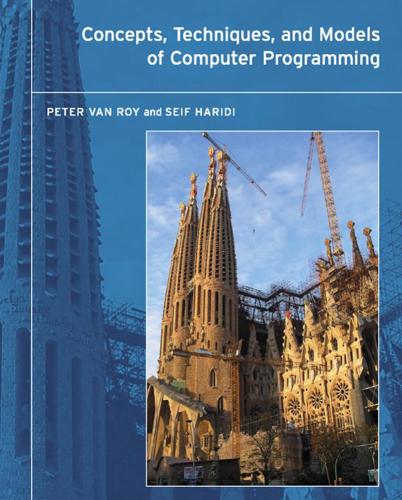
Concepts, Techniques, and Models of Computer Programming
by
Peter Van-Roy
and
Seif Haridi
Published 15 Feb 2004
This is as expressive as a Turing machine.1 For example, table 2.1 defines a language at this level. See the introduction to chapter 6 for more on the relationship between the descriptive and programmable levels. There are two fundamentally different ways to view programmable declarativeness: A definitional view, where declarativeness is a property of the component implementation. For example, programs written in the declarative model are guaranteed to be declarative, because of properties of the model. An observational view, where declarativeness is a property of the component in- 1. A Turing machine is a simple formal model of computation, first defined by Alan Turing, that is as powerful as any computer that can be built, as far as is known in the current state of computer science.
…
Figure 2.5 shows the three ways that the translation approach has been used for defining programming languages: 2.1 Defining practical programming languages 41 Programming language Translations Kernel language Foundational calculus Abstract machine Aid the programmer in reasoning and understanding Mathematical study of programming Efficient execution on a real machine Figure 2.5: Translation approaches to language semantics. The kernel language approach, used throughout the book, is intended for the programmer. Its concepts correspond directly to programming concepts. The foundational approach is intended for the mathematician. Examples are the Turing machine, the λ calculus (underlying functional programming), first-order logic (underlying logic programming), and the π calculus (to model concurrency). Because these calculi are intended for formal mathematical study, they have as few elements as possible. The abstract machine approach is intended for the implementor.
…
A Turing machine is a simple formal model of computation, first defined by Alan Turing, that is as powerful as any computer that can be built, as far as is known in the current state of computer science. That is, any computation that can be programmed on any computer can also be programmed on a Turing machine. 116 Declarative Programming Techniques terface. The observational view follows the principle of abstraction: that to use a component it is enough to know its specification without knowing its implementation. The component just has to behave declaratively, i.e., as if it were independent, stateless, and deterministic, without necessarily being written in a declarative computation model.

2312
by
Kim Stanley Robinson
Published 22 May 2012
Extracts (9) One question for computability: is the problem capable of producing a result If a finite number of steps will produce an answer, it is a problem that can be solved by a Turing machine Is the universe itself the equivalent of a Turing machine? This is not yet clear Turing machines can’t always tell when the result has been obtained. No oracle machine is capable of solving its own halting problem A Turing jump operator assigns to each problem X a successively harder problem, X prime. Setting a Turing machine the problem of making its own Turing jump creates a recursive effect called the Ouroboros All problems solvable by quantum computers are also solvable by classical computers.
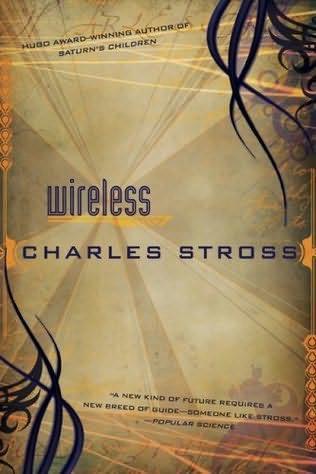
Wireless
by
Charles Stross
Published 7 Jul 2009
Okay, you’re a research cell working on some ultimate black problem, and you’re using the Farm because it’s about the most secure environment anyone can imagine, and you’re emulating some kind of minimal universal Turing machine using the chessboard. Say, a 2,5 UTM—two registers, five operations—you can encode the registers positionally in the chessboard’s two dimensions, and use the moves to simulate any other universal Turing machine, or a transform in an eleven-dimensional manifold like AXIOM REFUGE—” Godel’s waving frantically. “She’s coming! She’s coming!” I hear doors clanging in the distance. Shit. “But why are you so afraid of the Nurses?”
…
“Or even”—Mandelbrot takes a deep breath—“a brains trust!” “A-ha! AhaHAHAHA! Hic.” Godel covers his mouth, face reddening. “What do you think the rules are?” Cantor repeats, and they’re still staring at me, as if, as if . . . “Why does it matter?” I ask. I’m thinking that it could be anything; a 2,5 universal Turing machine encoded in the moves of the pawns—that would fit—whatever it is, it’s symbolic communication, very abstract, very pared-back, and if they’re doing it in this ultimately firewalled environment and expecting to report directly to the Board, it’s got to be way above my security clearance— “Because you’re acting cagey, lad.
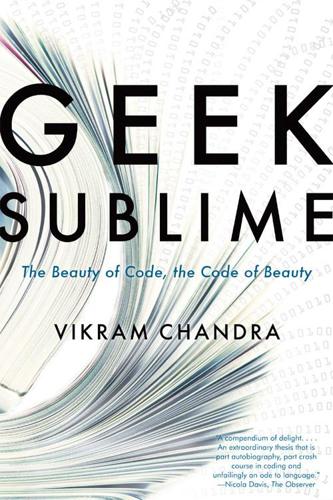
Geek Sublime: The Beauty of Code, the Code of Beauty
by
Vikram Chandra
Published 7 Nov 2013
Correctness is guaranteed by the correct application of rules.13 The systematic, deterministic workings of these rules may remind you of the orderly on-and-off workings of logic gates. The Ashtadhyayi is, of course, an algorithm, a machine that consumes phonemes and morphemes and produces words and sentences. Panini’s machine—which is sometimes compared to the Turing machine—is also the first known instance of the application of algorithmic thinking to a domain outside of logic and mathematics. The influence of the Ashtadhyayi was and remains immense. In the Sanskrit ecumene, later grammarians suggested some additions and modifications, and other grammars were written before and after Panini’s intervention, but all have been overshadowed by this one “tersest and yet most complete grammar of any language.”14 The West discovered the Ashtadhyayi during the great flowering of Orientalist research and translation in the eighteenth and nineteenth centuries.
…
“Re: Stable Linux 2.6.25.10.” Gmane.org, July 15, 2008. http://article.gmane.org/gmane.linux.kernel/706950. Turing, Alan. “On Computable Numbers, with an Application to the Entscheidungs-problem (1936).” In The Annotated Turing: A Guided Tour through Alan Turing’s Historic Paper on Computability and the Turing Machine, by Charles Petzold. Indianapolis: Wiley, 2008. Urban, Hugh B. The Economics of Ecstasy: Tantra, Secrecy, and Power in Colonial Bengal. New York: Oxford University Press, 2001. ______. The Power of Tantra: Religion, Sexuality and the Politics of South Asian Studies. London: IB Tauris, 2009.
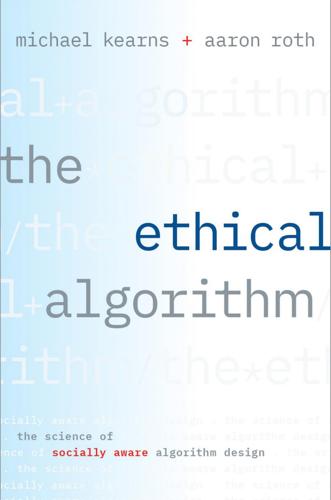
The Ethical Algorithm: The Science of Socially Aware Algorithm Design
by
Michael Kearns
and
Aaron Roth
Published 3 Oct 2019
We deliberately say “computation” and not “computers,” because for the purposes of this book (and perhaps even generally), the most important thing to know about theoretical computer science is that it views computation as a ubiquitous phenomenon, not one that is limited to technological artifacts. The scientific justification for this view originates with the staggeringly influential work of Alan Turing (the first theoretical computer scientist) in the 1930s, who demonstrated the universality of computational principles with his mathematical model now known as the Turing machine. Many trained in theoretical computer science, ourselves included, view the field and its tools not simply as another scientific discipline but as a way of seeing and understanding the world around us—perhaps much as those trained in theoretical physics in an earlier era saw their own field. So a theoretical computer scientist sees computation taking place everywhere—certainly in computers, but also in nature (in genetics, evolution, quantum mechanics, and neuroscience), in society (in markets and other systems of collective behavior), and beyond.
…
See also gender data and bias sexual orientation data, 25–26, 51–52, 86–89 Shapley, Lloyd, 129–30 The Shining (King), 118, 120 Shmatikov, Vitaly, 25 Simmons, Joe, 157–58 simple algorithms, 174 simulated game play, 134–35 single nucleotide polymorphisms (SNPs), 30–31 singularity, 180 Smith, Adam, 36 smoking, 27–28, 34–36, 39, 51–54 Snowden, Edward, 47–48 social awareness, 16–17, 131 social welfare, 97, 113, 115 societal norms and values, 12, 15–18, 20–21, 86, 134, 169–70 socioeconomic groups, 57 software engineers, 48–49 sorting algorithms, 4–5 spurious correlations, 150, 159 stable equilibriums, 99–100, 128 stable matchings, 128–30 standoffs, 98 statistics and adaptive data analysis, 159 and aggregate data, 22–23, 30–31 and algorithmic violations of fairness and privacy, 96 Bayesian, 38–39, 173 and the Bonferroni correction, 149 criminal sentencing, 14–15 and differential privacy, 40, 44–45, 47–52, 167 and fairness issues, 193–94 flawed statistical reasoning, 140–41 and interpretability of model outputs, 171–72 and investing scams, 138–41 and medical research, 34 and online shopping algorithms, 117 and p-hacking, 144–45, 153–55, 157–59, 161, 164, 169–70 statistical modeling, 90 statistical parity, 69–74, 84 and US Census data, 195 and “word embedding” models, 57–58, 63–64 stock investing, 81, 137–41 strategy, 97–102 Strava, 50–51 subgroup protections, 88–89 subjectivity, 86, 172 subpoenas, 41, 45–46, 48 “superfood” research, 143–44 superintelligent AI, 179–81, 185, 187 supervised machine learning, 63–64, 69–70, 183 supply and demand, 94–97 Supreme Court nomination hearings, 24 survey responses, 40–45 Sweeney, Latanya, 23 synthetic images, 132–35 target populations, 172–73 TD-Gammon program, 132 technological advances, 100–101, 103 TED Talks, 141–42 telemarketing calls, 38 temporal difference, 132 Tesauro, Gerry, 132 test preparation courses, 74–75 theoretical computer science, 11–13, 36 threshold rule, 75 Title VII, 15 tobacco research, 34–36 torturing data, 156–59 traffic and navigation problems, 19–20, 101–11, 113–15, 179 training data, 61–62 transparency, 125–26, 170–71 trust, 45–47, 170–71, 194–95 “truthfulness” in game theory, 114 “tunable” parameters, 37–39, 125–26, 171 Turing, Alan, 11–12, 180 Turing Award, 133 Turing machine, 11 23andMe, 54–55 2020 Census, 49, 195 Twitter Predictor Game, 52–53 two-route navigation problem, 107 two-sided markets, 127 2001: A Space Odyssey (film), 184 typing, 118 underspecified problems, 183 unintended consequences, 6–8, 16–17, 184–85, 188 unique data points, 26–27 unsupervised learning, 63–64 upstream effects, 194 US Census Bureau, 49 US Constitution, 49 US Equal Employment Opportunity Commission, 86–87 user identifiers, 24 user modeling, 121 user ratings, 118–21 US military deployments, 50–51 US State Department, 15 validation sets, 162–63 value alignment problems, 184 values.

Prime Obsession:: Bernhard Riemann and the Greatest Unsolved Problem in Mathematics
by
John Derbyshire
Published 14 Apr 2003
Andrew has also computed the CLIMBING THE CRITICAL LINE 261 first 100 zeros to 1,000 decimal places each.93 The first zero (I mean, of course, its imaginary part) begins 14.13472514173469379045725198356247027078425711569924 31756855674601499634298092567649490103931715610127 79202971548797436766142691469882254582505363239447 13778041338123720597054962195586586020055556672583 601077370020541098266150754278051744259130625448… V. There are stories behind Table 16-1. That A.M. Turing, for example, is the very same Alan Turing who worked in mathematical logic, developing the idea of the Turing Test (a way of deciding whether a computer or its program is intelligent), and of the Turing machine (a very general, theoretical type of computer, a thought experiment used to tackle certain problems in mathematical logic). There is a Turing Prize for achievement in computer science, awarded annually since 1966 by the Association for Computing Machinery, equivalent to a Fields Medal94 in mathematics, or to a Nobel Prize in other sciences.
…
Hilbert’s “metamathematics” program tried to encompass both logic and mathematics in a more waterproof symbolism. This inspired the work of Kurt Gödel and Alan Turing. Gödel proved important theorems by attaching numbers to Hilbert-type symbols; Turing coded both instructions and data as arbitrary numbers in his “Turing machine” concept. Picking up on this idea, John von Neumann developed the stored-program concept on which all modern software is based, that code and data can be represented in the same way in a computer’s memory…. EPILOGUE 138. In a letter to his brother dated June 26, 1854, he mentioned a recurrence of mein altes Übel—“my old malady”—brought on by a spell of bad weather. 139.
…
See also Harmonic series Basel, 63-64 convergent, 11-15, 79 defined, 8 divergent, 9-10, 81, 139 infinite, 59, 63, 75 of reciprocal squares, 64-65 ruler exercises, 10-15 sequences contrasted, 16-17 Serre, Jean-Pierre, 372, 384 Set theory, 18, 88 Seven Years War, 60 INDEX 420 Siegel, Carl, 256-257, 263-264, 383; pl. 5 Sieve of Eratosthenes, 100-101, 102104, 138 Sine function, 147, 332 Skewes, Samuel, 236 Skewes’ number, 236 Snaith, Nina, xiv Snowflake curve, 381 Society of German Scientists and Physicians, 252 Sommerfeld, Arnold, 256 Sophia Dorothea (mother of Frederick the Great), 60 Sorbonne, 159, 188, 225 Sorcerer’s Apprentice (Dukas), 156 Soundararajan, Kannan, 389 Space nature of, 130, 195 operators on, 317-318 Sprague-Grundy Theory, 372 Sprague, Roland Percival, 372 Square roots, 41, 43, 176, 178 Squaring function, 37, 42, 201-202, 206-209, 240 Stegun, Irene A., 373 Steiner, Jakob, 119 Step functions, 124, 297-302 Stern, Moritz, 27 Stevens, Wallace, 198 Stieltjes integral, 160 Stieltjes, Thomas, 154, 160, 161, 376 Stirling, James, 123 Strachey, Lytton, 370, 380 Summation sign (Σ), 78 “Sweet Betsy from Pike” (tune), 394, 395 Sylvester, James Joseph, 154, 225 T “Taiye,” 82-83; pl. 8 Teichmüller, Oswald, 255-256, 383 Teichmüller Theory, 383 Telegraph, electric, 120 Tenenbaum, Gérald, 389 Theory of Numbers (Hardy and Wright), 302 Theory of performances, 52 Theory of the Riemann Zeta-function, The (Titchmarsh), 217, 384 Thread, The (Davis), 122 Three-body problem, 314 Time reversal symmetry, 316 Titchmarsh, Edward Charles, 217, 258, 262, 394 Tocqueville, Alexis de, 118 Topology, 18, 121, 209, 374 Trace formula, 321, 388 Transcendental numbers, 174, 185, 354 Trigonometry, 18 Trinity College, Cambridge, 193, 223224, 225-226, 229, 287, 379, 380 Trinity Hall, Cambridge, 380 Truman, Harry S., 166 Turán, Paul, 238, 239, 378 Turing, Alan, 258, 261-262, 357, 377, 391; pl. 5 Turing machine, 261, 391 Turing Prize, 261 Turing Test, 261 Twiddle principle, 46 Twiddle sign, 45, 368 U Uncle Petros and Goldbach’s Conjecture (Doxiadis), 90 Universal Computer, The (Davis), 187 Universities, academies distinguished from, 30 University of Bordeaux, 158-159 University of Breslau, 93, 94 University of Bristol, England, 390 University of Cambridge, 259 University of Copenhagen, 228 INDEX 421 University of Leipzig, 270 University of Louvain, 161 University of Manchester, 259 University of Marburg, 270 University of Minnesota, 322, 357 University of Wales, Cardiff, 391 University of Washington in Seattle, 352 Upper bound, 235-236 Wilhelm I, German Kaiser, 160 William IV, King of England and Hanover, 26 Wolfram, Stephen, 389 Wright, Sir Edward, 302 V Z Vallée Poussin, Charles de la, x, 153, 155-156, 161, 189, 223, 232, 237, 352, 356, 376; pl. 3 Value plane, 219-221, 335 Victoria, Queen of England, 26 Vienna Academy, 153 “Villikens and his Dinah” (song), 395 Vis viva equation, 313, 315 Volterra, Vito, 92 Vorhauer, Ulrike, 350, 390 z plane, 379 Zeno, 88 Zeros, 85 in conjugate pairs, 190-191 density of, 396 dividing by, 35 of a function, 139, 154, 160, 169, 190-192, 206, 211-212, 385 gradient, 110 mathematical legitimacy, 89 non-trivial, 77, 190-192, 198-199, 217, 221-222, 232, 289-290, 295 number of, 258 order of a, 385 of a polynomial, 173 power, 65, 66 spacing in critical strip, 217-218, 232, 290 trivial, 148, 169, 206 Zeta function, 135 Basel problem and, 63-65 on complex plane, 183, 213-216 critical line, 221-222 critical strip, 216 decomposition, 358 domain, 142-145, 205-206 expression, 77, 79, 137 graph, 142-144 Mertens’s function and, 250-251 Möbius function and, 250-251 W w plane, 379 Wagon, Stan, 389 Wallace, William, 92 Wave functions, 318 Weber, Heinrich, 29, 119, 257, 366 Weber, Wilhelm, 27, 120, 127, 374 Wedeniwski, Sebastian, 258, 259 Weierstrass, Karl, 135, 164 Weil, André, 270, 325, 385, 395; pl. 6 Weil Conjectures, 270, 355 Wendland, 22, 94 Weyl, Hermann, 170, 255, 385 Whitehead, Alfred North, 225 Whitemore, Hugh, 262 Wigner, Eugene, 282, 387 Wild Numbers, The (Schogt), 161 Wiles, Andrew, 90, 161, 245, 271, 354355 Y Yorke, James, 387 422 sieve of Eratosthenes and, 102-104, 138 values of, 79-81, 146-147, 263 visualization, 216-218 zeros of, 154, 160, 169, 190-192, 206, 211-212, 217-218, 221-222, 232-233, 234, 259-261, 287-288, 295, 395 INDEX ζ(s), 77.

The Long History of the Future: Why Tomorrow's Technology Still Isn't Here
by
Nicole Kobie
Published 3 Jul 2024
can’t be answered with a conclusive yes or no, meaning maths isn’t just about decidable computations. While that gave Hilbert his solution, don’t worry if it raises more questions than answers for you – ‘huh?’ is a valid response. But in answering the Entscheidungsproblem in this way, Turing described what we now call Turing machines, which are essentially computers. That paper, beyond making Turing famous in his field at a remarkably young age, also sparked work in military circles to develop machines like the Electronic Numerical Integrator and Computer (ENIAC), built by John Mauchly and J. Presper Eckert, and perfected by John von Neumann in 1945.
…
We simply don’t know what these systems are looking for, and that makes the whole process rather spooky. Neural networks are as old as AI itself – older, in fact. And they didn’t initially have all that much to do with computers. In 1943, a pair of academics – neurophysiologist Warren McCulloch and mathematician Walter Pitts – described how a Turing machine could be built by mimicking neurons, following that up with a paper a few years later with ‘nervous net’ designs representing what is widely considered to be the first mathematical model of a neural network.11 Donald Hebb, a Canadian psychologist, extended that work in 1949 by suggesting a theory for how neurons interact when the brain learns something: in particular, the idea that one neuron firing to another builds or strengthens the connection between the two.
…
TV programme here Qualcomm here Quigg, Doc here radio here, here, here Radio Corporation America (RCA) here radio frequency identification (RFID) here Raibert, Marc here, here RAND (Office of Scientific Research and Development) here RAND Corporation here Rander, Peter here Ratio Club here Reflection Technologies Inc (RTI) here the Register here, here Reichardt, Jasia here Reiter, Reinhold here RFID chips here, here, here Richards, William here Rio de Janeiro, Brazil here Rising Sun film (1993) here Rizzo, Skip here Roach, Ron here Road Research Laboratory (RRL), UK here, here robots/robotics here, here, here, here, here, here Agility Robotics’ Digit here Aldebaran Robotics - Nao and Pepper here Boston Dynamics and Leg Lab here, here, here, here, here, here, here, here carer roles here, here, here, here early here Elektro – Sparko the dog here Engineered Art – RoboThespian here, here Hanson Robotics - Sophia here, here Hiroshi Isiguro here Honda – Asimo and Avatar Robot here, here, here humanoid and bipedal here, here, here, here, here, here, here ICRA (2023) here, here Japanese here, here, here, here jobs/industrial uses here, here, here, here, here, here Knightscope K5 – Steve the robo-guard here military use and law enforcement here, here, here, here, here Prosper Robotics – Alfie here Robear carer robot here Sony AIBO robotic dog here SRI – Shakey robot here, here Sunnyvale - Figure 01 robot here surgical uses here, here Tesla – Optimus here Toyota – Robina and T-HR3 robots here UBTech – Walker robot here Unimation – Unimate One and PUMA here William Richards and ‘Eric’ here Rochester, Nathaniel here Rock, Arthur here Rohr Industries here Roomba here Rosedale, Philip here Rosen, Charlie here, here, here Rosenblatt, Frank here Rumelhart, David E. here Russell, Ben here Salesky, Bryan here Salter, Robert here Samsung Galaxy smartphone here Samsung Gear VR headset here, here Samuda, Jacob and Joseph here Sanctuary AI - Phoenix here satnav here, here Schwartz, Jacob here Science Museum, London here Science Research Council, UK here Scientific American here, here Scott-Morgan, Peter here Scott, Travis here seasteading here Second World War here, here, here, here, here Sega here, here Senning, Åke here Shakey robot, SRI here, here, here Shane, Janelle here Shannon, Claude here, here Shockley, William B. here Shoulders, Kenneth here SHRDLU here Sidewalk Labs, Alphabet here, here Simon, Herbert A. here, here Sketchpad program here, here smart cities here, here, here Alphabet Sidewalk Labs here Amaravati, India here Barcelona, Spain here BioDiverCity here Chengdu Future City, China here Clinton Foundation and Cisco Connected Urban Development Programme (CUD) here control rooms and dashboards here Cyberjaya, Malaysia here data collection and analysis here, here, here, here Forest City, Malaysia here IBM here Kuala Lumpur, Malaysia here Los Angeles Community Analysis Bureau (CAB) here Masdar City, UAE here Medellín, Colombia here monitoring pollution here, here NEOM and The Line, Saudi Arabia here New York City fires 1970s here privacy issues here, here, here, here public transport here, here, here, here Rio de Janeiro, Brazil here Santiago, Chile – Cybersyn project here Smart Cities Mission, India here Songdo New City, South Korea here Telosa new city design here Toronto Quayside and Waterfront plans here Toyota Woven City here traffic lights/management here Victorian London cholera epidemic here smartphones here, here, here, here, here, here Smolinski, Henry here Snap here Snow, Dr John here SoftBank here Solomonoff, Ray here Solzbacher, Florian here Son, Masayoshi here Sony here, here, here PlayStation VR here Soria y Mata, Arturo here space exploration here, here, here, here, here SpaceX here, here Sproull, Bob here, here, here SRI International here Standford Research Institute (SRI) here, here, here Stanford Artificial Intelligence Lab here, here, here, here Stanford Cart here Stanford Racing here, here Stanford University here, here, here, here, here, here, here Star Wars, LucasFilm here, here Stephenson, George here Stephenson, Neal here Stereoscopic Television Apparatus – Sensorama here StreetView, Google here, here STRIPS program, SRI here Studebaker here Suleyman, Mustafa here Sullivan, Jesse here Sutherland, Ivan here, here, here, here, here Sutskever, Ilya here, here Tagami, Katsuyoshi here Tampier, René here Tandy here Tange, Kenzo here Tatarinov, Vladimir here Taylor, Moulton here Technik Autonomer Systeme (TAS) here Teleological Society here Teller, Astro here, here, here Terman, Fred here Tesla here, here, here, here, here, here, here Thiel, Peter here, here, here Thrun, Sebastian here, here, here, here, here, here, here, here, here, here Time magazine here Tonight Show Starring Johnny Carson here Toronto, Canada here Townsend, Anthony here Toyota here, here Tracked Hovercraft project here, here TRL GATEway pods here Trudeau, Justin here Trump, Donald here Tsukuba Mechanical Engineering Lab here Turing, Alan here, here, here, here, here Turing machine here Turing test here U-City and U-Life, South Korea here Uber here, here, here, here, here, here, here Unicorn Hybrid Black BCI here Unimation here, here Uniroo, Leg Lab here Urban-Air-Port here Urban, Jack here Urmson, Chris here, here, here, here Vallianatos, Mark here Valve - Steamsight VR headset here VaMoRs (Versuchsfahrzeug für autonome Mobilität und Rechnersehen) here VaMP and VITA-2 driverless sedans here vapourware here Velodyne here, here venture capital (VC) firms here, here, here, here The Verge website here Vertical Aerospace here Vidal, Eugene here Vidal, Jacques here View-Master toy here virtual reality (VR) see augmented reality (AR) and virtual reality (VR) Virtual Visual Environment Display (VIVED), NASA here Virtuality here Vives, Antoni here, here Volocity – Volocopter here von Neumann, John here, here, here, here, here VPL Research here, here, here Vuia, Trajan here Wainwright, Oliver here Wakamaru, Mitsubishi here Waldern, Jonathan here Walker, Giles here Wall Street Journal here, here, here, here Warwick, Kevin here Washington Post here Watanabe, Katsuaki here Waterman, Waldo here Waymo project, Google/Alphabet here, here, here, here, here, here, here, here Webster Rammell, Thomas here, here Weiner, Norbert here, here Weizenbaum, Joseph here Werbos, Paul here Wernicke, Ken here Westinghouse Electric Corporation – Televov here Whittaker, William here, here, here Widrow, Bernard here Wiegand, Daniel here, here, here, here Wildcat, Boston Dynamics’ here Williams, Ronald here Winograd, Terry here WIRED here, here, here, here Wisk here, here Wooldridge, Michael here, here WordNet here World Wide Web here World’s Fair, New York (1939) here, here, here Wright brothers here Wylie, Bianca here, here xAI here Xerox PARC’s Alto here Yokoi, Gunpei here York Commuter roadable aircraft here Yoshino, Hiroyuki here Young, James here Zeiler, Matthew here Zero Latency here Zimmerman, Tom here Zoll, Paul here Zuckerberg, Mark here, here, here, here, here, here Zworykin, Vladimir here BLOOMSBURY SIGMA Bloomsbury Publishing Plc 50 Bedford Square, London, WC1B 3DP, UK 29 Earlsfort Terrace, Dublin 2, Ireland BLOOMSBURY, BLOOMSBURY SIGMA and the Bloomsbury Sigma logo are trademarks of Bloomsbury Publishing Plc This electronic edition first published in the United Kingdom in 2024 Copyright © Nicole Kobie, 2024 Nicole Kobie has asserted her right under the Copyright, Designs and Patents Act, 1988, to be identified as Author of this work All rights reserved.

Power and Progress: Our Thousand-Year Struggle Over Technology and Prosperity
by
Daron Acemoglu
and
Simon Johnson
Published 15 May 2023
He imagined an abstract computer, now called a Turing machine, that can carry out computations according to the inputs specified on a possibly infinite tape—for example, instructions to implement basic mathematical operations. He then defined a function to be computable if such a machine could compute its values. A machine is said to be a universal Turing machine if it can compute any number that can be calculated by any Turing machine. Notably, if the human mind is in essence a very sophisticated computer and the tasks that it performs are within the class of computable functions, then a universal Turing machine could replicate all human capabilities.

Thinking Machines: The Inside Story of Artificial Intelligence and Our Race to Build the Future
by
Luke Dormehl
Published 10 Aug 2016
It has been likened to a steam engine. But that was before we knew as much about the way it works as we know now. It really is a gas engine: like the engine of an automobile, a motor boat, or a flying machine. One of Turing’s most significant concepts related to something called the Universal Turing Machine. Instead of computers being single-purpose machines used for just one function, he explained how they could be made to perform a variety of tasks by reading step-by-step instructions from a tape. By doing so, Turing wrote that the computer ‘could in fact be made to work as a model of any other machine’.
…
(TV show) 135–9, 162, 189–90, 225, 254 Jobs, Steve 6–7, 32, 35, 108, 113, 181, 193, 231 Jochem, Todd 55–6 judges 153–4 Kasparov, Garry 137, 138–9, 177 Katz, Lawrence 159–60 Keck, George Fred 81–2 Keynes, John Maynard 139–40 Kjellberg, Felix (PewDiePie) 151 ‘knowledge engineers’ 29, 37 Knowledge Narrator 110–11 Kodak 238 Kolibree 67 Koza, John 188–9 Ktesibios of Alexandria 71–2 Kubrick, Stanley 2, 228 Kurzweil, Ray 213–14, 231–3 Landauer, Thomas 201–2 Lanier, Jaron 156, 157 Laorden, Carlos 100, 101 learning 37–9, 41–4, 52–3, 55 Deep 11–2, 56–63, 96–7, 164, 225 and email filters 88 machine 3, 71, 84–6, 88, 100, 112, 154, 158, 197, 215, 233, 237, 239 reinforcement 83, 232 and smart homes 84, 85 supervised 57 unsupervised 57–8 legal profession 145, 188, 192 LegalZoom 145 LG 132 Lickel, Charles 136–7 ‘life logging’ software 200 Linden, David J. 213–14 Loebner, Hugh 102–3, 105 Loebner Prize 102–5 Lohn, Jason 182, 183–5, 186 long-term potentiation 39–40 love 122–4 Lovelace, Ada 185, 189 Lovelace Test 185–6 Lucas, George 110–11 M2M communication 70–71 ‘M’ (AI assistant) 153 Machine Intelligence from Cortical Networks (MICrONS) project 214–15 machine learners 38 machine learning 3, 71, 84–6, 88, 100, 112, 154, 158, 197, 215, 233, 237, 239 Machine Translator 8–9, 11 ‘machine-aided recognition’ 19–20 Manhattan Project 14, 229 MARK 1 (computer) 43–4 Mattersight Corporation 127 McCarthy, John 18, 19, 20, 27, 42, 54, 253 McCulloch, Warren 40–2, 43, 60, 142–3 Mechanical Turk jobs 152–7 medicine 11, 30, 87–8, 92–5, 187–8, 192, 247, 254 memory 13, 14, 16, 38–9, 42, 49 ‘micro-worlds’ 25 Microsoft 62–3, 106–7, 111–12, 114, 118, 129 mind mapping the 210–14, 217, 218 ‘mind clones’ 203 uploads 221 mindfiles 201–2, 207, 212 Minsky, Marvin 18, 21, 24, 32, 42, 44–6, 49, 105, 205–7, 253–4 MIT 19–20, 27, 96–7, 129, 194–5 Mitsuku (chatterbot) 103–6, 108 Modernising Medicine 11 Momentum Machines, Inc. 141 Moore’s Law 209, 220, 231 Moravec’s paradox 26–7 mortgage applications 237–8 MTurk platform 153, 154, 155 music 168, 172–7, 179 Musk, Elon 149–50, 223–4 MYCIN (expert system) 30–1 nanobots 213–14 nanosensors 92 Nara Logics 118 NASA 6, 182, 184–5 natural selection 182–3 navigational aids 90–1, 126, 127, 128, 241 Nazis 15, 17, 227 Negobot 99–102 Nest Labs 67, 96, 254 Netflix 156, 198 NETtalk 51, 52–3, 60 neural networks 11–12, 38–9, 41, 42–3, 97, 118, 164–6, 168, 201, 208–9, 211, 214–15, 218, 220, 224–5, 233, 237–8, 249, 254, 256–7 neurons 40, 41–2, 46, 49–50, 207, 209–13, 216 neuroscience 40–2, 211, 212, 214, 215 New York World’s Fair 1964 5–11 Newell, Alan 19, 226 Newman, Judith 128–9 Nuance Communications 109 offices, smart 90 OpenWorm 210 ‘Optical Scanning and Information Retrieval’ 7–8, 10 paedophile detection 99–102 Page, Larry 6–7, 34, 220 ‘paperclip maximiser’ scenario 235 Papert, Seymour 27, 44, 45–6, 49 Paro (therapeutic robot) 130–1 patents 188–9 Perceiving and Recognising Automation (PARA) 43 perceptrons 43–6 personality capture 200–4 pharmaceuticals 187–8 Pitts, Walter 40–2, 43, 60 politics 119–2 Pomerlau, Dean 54, 55–6, 90 prediction 87, 198–9 Profound Hypothermia and Circulatory Arrest 219–20 punch-cards 8 Qualcomm 93 radio-frequency identification device (RFID) 65–6 Ramón y Cajal, Santiago 39–40 Rapidly Adapting Lateral Position Handler (RALPH) 55 ‘recommender system’ 198 refuse collection 142 ‘relational agents’ 130 remote working 238–9 reverse engineering 208, 216, 217 rights for AIs 248–51 risks of AI 223–40 accountability issues 240–4, 246–8 ethics 244–8 rights for AIs 248–51 technological unemployment 139–50, 163, 225, 255 robots 62, 74–7, 89–90, 130–1, 141, 149, 162, 217, 225, 227, 246–7, 255–6 Asimov’s three ethical rules of 244–8 robotic limbs 211–12 Roomba robot vacuum cleaner 75–7, 234, 236 Rosenblatt, Frank 42–6, 61, 220 rules 36–7, 79–80 Rumelhart, David 48, 50–1, 63 Russell, Bertrand 41 Rutter, Brad 138, 139 SAINT program 20 sampling (music) 155, 157 ‘Scheherazade’ (Ai storyteller) 169–70 scikit-learn 239 Scripps Health 92 Sculley, John 110–11 search engines 109–10 Searle, John 24–5 Second Life (video game) 194 Second World War 12–13, 14–15, 17, 72, 227 Sejnowski, Terry 48, 51–3 self-awareness 77, 246–7 self-driving 53–6, 90, 143, 149–50 Semantic Information Retrieval (SIR) 20–2 sensors 75–6, 80, 84–6, 93 SHAKEY robot 23–4, 27–8, 90 Shamir, Lior 172–7, 179, 180 Shannon, Claude 13, 16–18, 28, 253 shipping systems 198 Simon, Herbert 10, 19, 24, 226 Sinclair Oil Corporation 6 Singularity, the 228–3, 251, 256 Siri (AI assistant) 108–11, 113–14, 116, 118–19, 125–30, 132, 225–6, 231, 241, 256 SITU 69, 93 Skynet 231 smart devices 3, 66–7, 69–71, 73–7, 80–8, 92–7, 230–1, 254 and AI assistants 116 and feedback 73–4 problems with 94–7 ubiquitous 92–4 and unemployment 141–2 smartwatches 66, 93, 199 Sony 199–200 Sorto, Erik 211, 212 Space Invaders (video game) 37 spectrometers 93 speech recognition 59, 62, 109, 111, 114, 120 SRI International 28, 89–90, 112–13 StarCraft II (video game) 186–7 story generation 169–70 strategy 36 STUDENT program 20 synapses 209 Synthetic Interview 202–3 Tamagotchis 123–5 Tay (chatbot) 106–7 Taylorism 95–6 Teknowledge 32, 33 Terminator franchise 231, 235 Tetris (video game) 28 Theme Park (video game) 29 thermostats 73, 79, 80 ‘three wise men’ puzzle 246–7 Tojan Room, Cambridge University 69–70 ‘tortoises’ (robots) 74–7 toys 123–5 traffic congestion 90–1 transhumanists 205 transistors 16–17 Transits – Into an abyss (musical composition) 168 translation 8–9, 11, 62–3, 155, 225 Turing, Alan 3, 13–17, 28, 35, 102, 105–6, 227, 232 Turing Test 15, 101–7, 229, 232 tutors, remote 160–1 TV, smart 80, 82 Twitter 153–4 ‘ubiquitous computing’ 91–4 unemployment, technological 139–50, 163, 225, 255 universal micropayment system 156 Universal Turing Machine 15–16 Ursache, Marius 193–7, 203–4, 207 vacuum cleaners, robotic 75–7, 234, 236 video games 28–9, 35–7, 151–2, 186–7, 194, 197 Vinge, Vernor 229–30 virtual assistants 107–32, 225–6, 240–1 characteristics 126–8 falling in love with 122–4 political 119–22 proactive 116–18 therapeutic 128–31 voices 124–126, 127–8 Viv Labs 132 Vladeck, David 242–4 ‘vloggers’ 151–2 von Neumann, John 13–14, 17, 100, 229 Voxta (AI assistant) 119–20 waiter drones 141 ‘Walking Cities’ 89–90 Walter, William Grey 74–7 Warwick, Kevin 65–6 Watson (Blue J) 138–9, 162, 189–92 Waze 90–91, 126 weapons 14, 17, 72, 224–5, 234–5, 247, 255–6 ‘wetware’ 208 Wevorce 145 Wiener, Norbert 72–3, 227 Winston, Patrick 49–50 Wofram Alpha tool 108–9 Wozniak, Steve 35, 114 X.ai 116–17 Xbox 360, Kinect device 114 XCoffee 70 XCON (expert system) 31 Xiaoice 129, 130 YouTube 151 Yudkowsky, Eliezer 237–8 Zuckerberg, Mark 7, 107–8, 230–1, 254–5 Acknowledgments WRITING A BOOK is always a bit of a solitary process.

Nine Algorithms That Changed the Future: The Ingenious Ideas That Drive Today's Computers
by
John MacCormick
and
Chris Bishop
Published 27 Dec 2011
But to assist his argument, Turing describes a particular type of machine (for Turing, a “machine” is what we would call a “computer” today) that can also do calculations. Part of the paper is devoted to demonstrating that certain calculations cannot be performed by these machines—this is the proof of undecidability, which we have discussed in detail already. But another part of the same paper makes a detailed and compelling argument that Turing's “machine” (read: computer) can perform any calculation done by a “computer” (read: human). You may be beginning to appreciate why it is difficult to overstate the seminal nature of Turing's “On computable numbers.” paper. It not only defines and solves some of the most fundamental problems in computer science, but also strikes out into the heart of a philosophical minefield, making a persuasive case that human thought processes could be emulated by computers (which, remember, had not been invented yet!).
…
threshold; soft title: of this book; of a web page to-do list to-do list trick Tom Sawyer training. See also learning training data transaction: abort; atomic; in a database; on the internet; rollback travel agent Traveling Salesman Problem trick, definition of TroubleMaker.exe Turing, Alan Turing machine Turing test TV Twain, Mark twenty questions, game of twenty-questions trick two-dimensional parity. See parity two-phase commit U.S. Civil War Ullman, Jeffrey D. uncomputable. See also undecidable undecidable. See also uncomputable undefined unicycle universe unlabeled Vazirani, Umesh verification Verisign video video game virtual table virtual table trick Waters, Alice web.
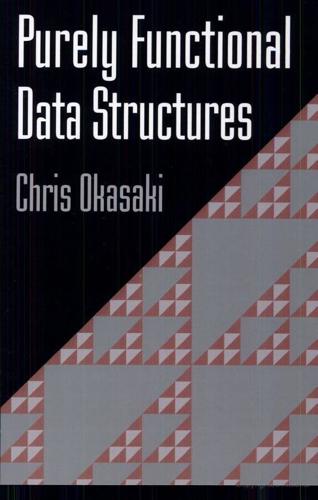
Purely Functional Data Structures
by
Chris Okasaki
Published 12 Apr 1998
It has since been used in many situations, including real-time queues [HM81], realtime deques [Hoo82, GT86, Sar86, CG93], catenable deques [BT95], and the order maintenance problem [DS87]. Deques Hood [Hoo82] first modified the real-time queues of [HM81] to obtain real-time deques based on global rebuilding. Several other researchers later duplicated this work [GT86, Sar86, CG93]. These implementations are all similar to techniques used to simulate multihead Turing machines [Sto70, FMR72, LS81]. Hoogerwoord [Hoo92] proposed amortized deques based on batched rebuilding, but, as always with batched rebuilding, his implementation is not efficient when used persistently. The real-time deques in Figure 8.4 first appeared in [Oka95c]. Coroutines and Lazy Evaluation Streams (and other lazy data structures) have frequently been used to implement a form of coroutining between the producer of a stream and the consumer of a stream.
…
Computer response time and user performance. In Conference on Human Factors in Computing Systems, pages 5862, December 1983. (p. 83) Richard S. Bird and Philip Wadler. Introduction to Functional Programming. Prentice Hall International, 1988. (p. 29) Tyng-Ruey Chuang and Benjamin Goldberg. Real-time deques, multihead Turing machines, and purely functional programming. In Conference on Functional Programming Languages and Computer Architecture, pages 289-298, June 1993. (pp. 109,113) Thomas H. Cormen, Charles E. Leiserson, and Ronald L. Rivest. Introduction to algorithms. MIT Press, 1990. (p. 27) Richard H. Connelly and F.
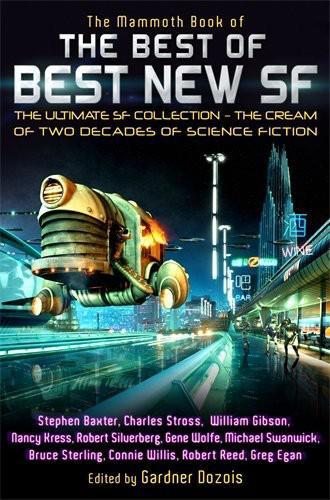
The Best of Best New SF
by
Gardner R. Dozois
Published 1 Jan 2005
Think of a row of Wang Tiles as being like the data tape of a Turing Machine.” Paolo had the library grant him knowledge of the term; it was the original conceptual form of a generalized computing device, an imaginary machine which moved back and forth along a limitless one-dimensional data tape, reading and writing symbols according to a given set of rules. “With the right set of tiles, to force the right pattern, the next row of the tiling will look like the data tape after the Turing Machine has performed one step of its computation. And the row after that will be the data tape after two steps, and so on. For any given Turing Machine, there’s a set of Wang Tiles which can imitate it.”
…
You’ve found a pattern? Don’t tell me: our set of twenty thousand polysaccharide Wang Tiles just happens to form the Turing Machine for calculating pi.” “No. What they form is a universal Turing Machine. They can calculate anything at all – depending on the data they start with. Every daughter fragment is like a program being fed to a chemical computer. Growth executes the program.” “Ah.” Paolo’s curiosity was roused – but he was having some trouble picturing where the hypothetical Turing Machine put its read/write head. “Are you telling me only one tile changes between any two rows, where the ‘machine’ leaves its mark on the ‘data tape’ . . . ?”
…
“Are you telling me only one tile changes between any two rows, where the ‘machine’ leaves its mark on the ‘data tape’ . . . ?” The mosaics he’d seen were a riot of complexity, with no two rows remotely the same. Karpal said, “No, no. Wang’s original example worked exactly like a standard Turing Machine, to simplify the argument . . . but the carpets are more like an arbitrary number of different computers with overlapping data, all working in parallel. This is biology, not a designed machine – it’s as messy and wild as, say . . . a mammalian genome. In fact, there are mathematical similarities with gene regulation: I’ve identified Kauffman networks at every level, from the tiling rules up; the whole system’s poised on the hyperadaptive edge between frozen and chaotic behavior.”
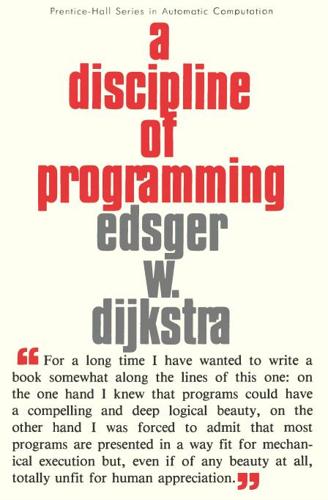
A Discipline of Programming
by
E. Dijkstra
Published 15 Feb 1976
This shows quite clearly why I regard general recursion as an order of magnitude more complicated than just repetition, and it therefore hurts me to see the semantics of the repetitive construct "while B do S" defined as that of the call "whiledo(B, S)" of the recursive procedure (described in ALGOL 60 syntax): procedure whiledo (condition, statement); begin if condition then begin statement; whiledo (condition, statement) end end Although correct, it hurts me, for I don't like to crack an egg with a sledgehammer, no matter how effective the sledgehammer is for doing so. For the generation of theoretical computing scientists that became involved in the subject during the sixties, the above recursive definition is often not only "the natural one", but even "the true one". In view of the fact that we cannot even define what a Turing machine is supposed to do without appeal- ing to the notion of repetition, some redressing of the balance seemed indi- ca ted. For the absence of a bibliography I offer neither explanation nor apology. Acknowledgements. The following people have had a direct influence on this book, either by their willingness to discuss its intended contents or by com- menting on (parts of) the finished manuscript: C.
…
In other words, we accept an HSLM that is only able to simulate properly a subset of the computations that are guaranteed to terminate prop- erly when executed by the UM. Note 4. The notion of the liberal pre-condition is introduced here in recognition of the fact that the HSLM is so bounded. This is in sharp contrast to the very similar notion of "partial correctness", which has been introduced in connection with unbounded machines (such as Turing machines) because of the undecidability of the Halting Problem. (End of note 4.) One may raise the question -but I shall not answer it- of what the UM will do when started at an initial state for which we don't know whether it satisfies wp(S, T) or not. I take the position (from a philosophical point of view probably very shaky) that as long as we have not proved that the initial state satisfies wp(S, T), the UM may do as it likes, in the sense that we have no right to complain.
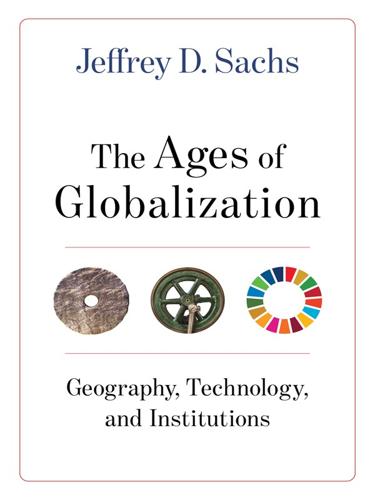
The Ages of Globalization
by
Jeffrey D. Sachs
Published 2 Jun 2020
Smartphones are only a decade old, but they have already upended how we live. How did this revolution come about? The roots of the digital revolution can be traced to a remarkable paper by British genius Alan Turing, writing in 1936. Turing envisioned a new conceptual device, a universal computing machine—a Turing machine, as it became known—that could read an endless tape of 0s and 1s in order to calculate anything that could be calculated. Turing had conceptualized a general-purpose programmable computer before one had been invented. His ideas would fundamentally shape the digital revolution to come. Turing also made legendary contributions to the Allied war effort by showing how to use mathematical cryptography and an early electronic device to decipher the Nazi military secret code.
…
See Sustainable Development Goals sea level rise, 192, 192 sea power (thalassocracy), 72–73 secondary sectors, 14–16 Second Opium War, 147 Security Council, 209, 210 sedentism, 41, 43–45 Sedol, Lee, 176 Seleucid Empire, 77 self-driving trucks, 186 Seljuk group, 65 semiconductors, 171 Seven Years’ War, 122, 148 Shandong, China, 191 Shang Dynasty, 48 Shannon, Claude, 171 shared reality, 214 ships, cannon-laden, 104 Silk Road, 24, 84, 85, 98 Sino-Japan War, 151 skilled workers, 186 slavery: from Africa, 118, 118–19; indigenous people and, 116–20; North America plantations with, 119; Saint-Domingue rebellion of, 121; for sugar plantations, 120; in temperate zone, 119 smallpox, 102 smart machines, 202 Smith, Adam, 98; global empires summation by, 124–26; invisible hand from, 114; Wealth of Nations by, 26, 124, 131, 196 Social Conquest of Earth, The (Wilson, E.), 170 social democracy, 202 social-democratic ethos, 201–3 social institutions, 19–20 societies: Eurasia with horse-based, 62–63, 65; Greek, 76–79; hierarchical structure of, 39; horse-based, 59; human, 38–40 soil nutrients, 19 Song Dynasty, 88–91, 89, 104 Soviet Union, 30, 161–62, 207 Spain, 97, 108–11, 110 state law, 71 steam engine, 4; global trading of, 137; in Industrial Age, 16–17, 131–34, 132; Watt patenting, 17 steel, 139 steppes: of Asia, 53; climate zones of, 53; Eurasian, 24, 54; horse domestication in, 59; migration from, 64 subsidiarity doctrine, 196, 203–4 sugar, 119–20 sugar plantations, 120 Summa Theologica (Aquinas), 78 Sun Yat-Sen, 147 sustainable agriculture, 13 sustainable development, 31, 183–85, 196–200; economic growth from, 187; governance of, 200; public goods for, 204–5; religious leaders on, 211–12; U.N. goals of, 198, 201–2 Sustainable Development Goals (SDG), 178, 198, 202 syphilis, 102 tabula rasa (blank-slate learning), 176 Taiping Rebellion, 147 tea infusion, 152 technologies, 1–2, 11, 18, 70; digital, 181; digital revolution and, 166; economic development from, 21; environmental impact of, 188–90; Eurasian advances in, 49; of farm villages, 45; geography and, 18; of Han Empire, 82; horses distributing, 64; inequalities and changes in, 30; information, 4–5; innovative designs for, 138–41; institutions and, 17; intelligent, 141; lucky latitudes innovations in, 50–51; military, 29–30; naval, 96; North America cut off from, 51–52; Old World, 21; for poverty reduction, 177; upheavals from, 130; U.S. advances in, 160; wireless, 181 tellurocracy (land power), 72 temperate zones: advantages to, 22–25; empires, 51; of Eurasia, 48; slavery in, 119 territorial competition, 28 tertiary sectors, 14–16 textile industry, 134; of Britain, 121; of India, 149; robots in, 186 thalassocracy (sea power), 72–73 theileria parva (equine piroplasmosis), 55 Thirty Years’ War, 156–57 Thucydides, 75 Timurid Empire, 83, 93, 93–94 tin mines, 61 tobacco, 119–20 Tokugawa Shogunate, 150 trade, 67 Trajan (emperor), 79 transistors, 171, 172 transnational cooperation, 205 transoceanic empires, 4 transportation vehicle, 54 transport systems, 203 Treaty of Tordesillas (1494), 109–10 Treaty of Versailles, 157 Treaty of Zaragoza (1529), 109–10 triangular trade, 119 tropical vector-borne diseases, 49, 117 tropical zones, 22–23 trucks, self-driving, 186 trypanosomiasis disease, 50 tsetse flies, 56, 152 Turing, Alan, 170, 173 Turing machine, 170 Turkish tribes, 88 Turse, Nick, 162 U.K. See United Kingdom Umayyad Empire, 87, 87 U.N. See United Nations UN Framework Convention on Climate Change (UNFCCC), 204 United Kingdom (U.K.), 144 United Nations (U.N.), 167; as anti-fascist alliance, 207; global center of gravity and, 209–10; reformation of, 207–10; Security Council, 210; sustainable development goals of, 198, 201–2; U.S. supporting, 208–10 United States (U.S.): birth of, 130–31; Britain’s economic dominance with, 154; China’s rising power and, 193; Civil War of, 161; Declaration of Independence of, 131; decolonization supported by, 166–67; Department of Defense, 171; dominant economy of, 159; economic development of, 154, 154; farmer’s food in, 15; GDP of, 154; geopolitical leadership of, 162; global hegemony of, 159–62, 168; global output of, 181; infrastructure development of, 161; lucky latitudes in, 49; military bases of, 162, 163; primary sector employment in, 16; R&D spending of, 182, 182; regime change operations of, 162; Soviet Union challenges to, 161–62; technology advances of, 160; UK comparisons with, 144; unlimited resources of, 121; U.N. supported by, 208–10; War of Independence of, 123; world output of, 155 Universal Declaration of Human Rights, 207 universal health care, 199–200 Upper Pleistocene, 37–40 Urban II (pope), 88 urbanization, 7; population and, 130; rates of, 8, 9; transformation to, 14–16 U.S.

Emergence
by
Steven Johnson
Turing’s war research had focused on detecting patterns lurking within the apparent chaos of code, but in his Manchester years, his mind gravitated toward a mirror image of the original code-breaking problem: how complex patterns could come into being by following simple rules. How does a seed know how to build a flower? Turing’s paper on morphogenesis—literally, “the beginning of shape”—turned out to be one of his seminal works, ranking up their with his more publicized papers and speculations: his work on Gödel’s undecidability problem, the Turing Machine, the Turing Test—not to mention his contributions to the physical design of the modern digital computer. But the morphogenesis paper was only the beginning of a shape—a brilliant mind sensing the outlines of a new problem, but not fully grasping all its intricacies. If Turing had been granted another few decades to explore the powers of self-assembly—not to mention access to the number-crunching horsepower of non-vacuum-tube computers—it’s not hard to imagine his mind greatly enhancing our subsequent understanding of emergent behavior.
…
M., 14–15 Shannon, Claude, 44–47, 53, 62–65, 241n Shapiro, Andrew, 159–60 Shelley, Mary Wollstonecraft, 125 shopping malls, 90, 92 sidewalk culture, 51, 91–97, 99, 146, 147, 148, 230–31 silk weavers, 101, 102, 104–7, 124 SimCity, 66, 87–89, 98, 186, 205, 208, 229 Sims, The, 186–89, 209–10, 229 simulations, computer: of aggregation, 16–17, 23, 59–63, 163–69 of ants, 59–63, 65 of cities, 66, 87–89, 98, 186, 229–30 of evolution, 56–63, 182–89, 193, 209–10 of genetics, 57–59, 182–86 models for, 9, 16–17, 23, 59–63 of self-organization, 59–63, 76, 163–69 60 Minutes, 144 Slashdot, 152–62, 205, 212, 223, 260n Slate, 118, 128 sleep cycles, 140 slime mold (Dictyostelium discoideum), 11–17, 18, 20–21, 23, 43, 52, 63–64, 67, 163–69, 179, 180, 220, 235n, 236n, 246n slums, 41, 49–50, 137 Smarties experiment, 196–97, 200, 261n–62n Smith, Adam, 18, 156 Societas Mercatorum, 101 society: ant colonies compared with, 97–98, 248n emergence in, 22–23, 36–40, 49–50, 92–100 hierarchical, 14–15, 98 organization of, 9, 27, 33–41, 92–94, 97–100, 109, 204, 252n–54n patterns in, 18, 36–40, 41, 49–50, 52, 91, 95, 137, 185 Society of Mind theory, 65 software: emergent, 17, 21, 22, 121–26, 170–74, 186, 189, 204–8, 221–22, 223 gaming, 163–89 learning, 53–63, 65 for online communities, 148–62 Open Source, 222 pattern-recognition, 18, 21, 54, 56, 123–24, 126–29 personalized, 159–60, 207–8, 211, 212–13 see also programs, computer SoHo (New York City), 50 Solenopsis invicta, 75 Sopranos, The, 219 spam, 153, 156, 161, 215–16 speech encryption, 44–45 spokescouncils, 226 StarLogo, 76, 163–69, 179, 205, 219, 247n, 260n statistical analysis, 46–47, 76–77, 78 storytelling, 188–89 suburbia, 94–95, 230, 259n Sun Microsystems, 224 surf engines, 122–23 synapses, 134 system events, 145 systems: adaptive, 18, 19–20, 119, 128, 137, 139–40 bottom-up, 17, 18, 22, 53–57, 66–67, 83, 97–98, 115, 116, 133, 148, 164, 166, 207, 221–23, 231 climax stage of, 147–48, 152, 154 command, 15, 77, 83–84 complex, 18, 29, 78, 139–40, 246n decentralized, 17, 22, 31–32, 39–40, 66, 76–79, 86, 117, 118–21, 163–89, 204–5, 217–18, 222, 233–34, 236n–37n, 263n dynamic, 20, 248n–49n emergent, see emergence interactive, 22, 79, 81, 120, 123, 126, 158–59, 231 open-ended, 57–58, 180–89, 208 polycentric, 90–91, 159, 223 representational, 157–59 rule-governed, 19, 180–81, 226 self-organizing, see self-organization self-regulating, 138, 140–41, 143, 146–47, 148, 149, 151, 154, 159 simple, 46, 47, 78 top-down, 14–15, 18, 30–31, 33, 98, 132, 136, 145, 148–49, 153, 208, 223, 225 “Take It to the Streets” (Berman), 95 Tap, Type, Write, 174–75, 177 Taylor, Chuck, 59–63, 65 TCG, 224 technology: innovation in, 108–9, 111–12, 113, 116, 254n slave, 125–26 see also computers Teilhard de Chardin, Pierre, 115–16, 120 telephones, 47, 229 television, 95, 130–36, 137, 143–46, 158, 159, 160–61, 210–13, 217, 218 Terminator, 127 termites, 22, 73, 82 “theory of other minds,” 195–226 thermostats, 137–38, 150, 258n thinking: associative, 206 bottom-up, 66–67 decentralized, 17 group, 160 serial, 127 see also intelligence Thomas, Lewis, 9 Thompson, D’Arcy, 236n, 259n threaded discussion boards, 149–50 TiVo, 211–13, 214, 218 Tocqueville, Alexis de, 35 toys, 165–66, 178–80, 181 Tracker program, 59–63, 65 trade, 101–2, 104–7, 109, 110 traffic patterns, 97, 166, 204, 230–31, 232 traveling salesman problem, 227–29 tumors, brain, 119 Turing, Alan, 14, 18, 42–45, 49, 53, 54, 62–65, 67, 206, 236n, 242n, 254n–56n, 263n Turing Machine, 42, 45 Turing Test, 42, 206 Turner, Ted, 135–36 “turtles,” 166, 167–68, 260n undecidability problem, 42 Unreal, 208–9 urbanization, 99, 108, 109–13, 116, 146–48, 253n–54n urban planning, 49–50, 51, 89, 92, 109, 146–47, 230–31 Usenet, 162 user ratings, 121–26, 129, 156–62, 214–15, 221–22 varicella-zoster virus, 103, 104 VCRs, 212 ventral premotor area, 198 video games, see games, computer Virtual Community, The (Rheingold), 148 visual cortex, 201 Vocoder, 44 Washington Post, 131 Weaver, Warren, 46–49, 50, 51, 64–66 Well, 147–52, 153 West Village (New York City), 50, 93 Wheatley, Bill, 136 Wheeler, William Morton, 242n White, Leslie, 253n White, Lynn, Jr., 112 Wide Area Information Server (WAIS), 122 Wiener, Norbert, 53, 57, 64–65, 125–26, 139, 140, 143, 151–52, 162, 169, 238n, 251n, 259n–60n Wilson, Edward O., 52, 60, 75 Wittgenstein, Ludwig, 41 Wooten, Jim, 130–36, 137, 144–45 Wordsworth, William, 27, 39, 92, 98 working class, 37, 41, 52, 91, 95, 240n, 259n World Wide Web, see Internet Wright, Robert, 114, 115–17, 118 Wright, Will, 66, 87, 88, 186–89, 209–10, 229–30 Yahoo, 114, 117 Zelda: Ocarina of Time, 176, 177 Zimmerman, Eric, 178–80, 182, 186, 189 SCRIBNER 1230 Avenue of the Americas New York, NY 10020 www.SimonandSchuster.com Copyright © 2001 by Steven Johnson All rights reserved, including the right of reproduction in whole or in part in any form.
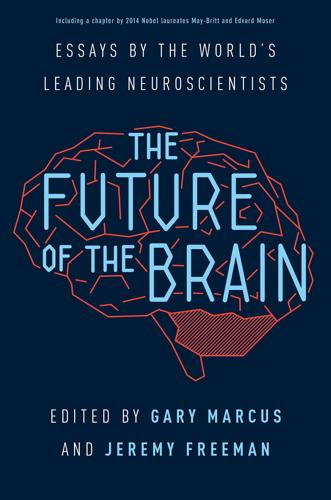
The Future of the Brain: Essays by the World's Leading Neuroscientists
by
Gary Marcus
and
Jeremy Freeman
Published 1 Nov 2014
And unlike worms and flies with their high degree of stereotypy, in which genetically determined neural circuits mediate innate behaviors, mammalian neocortical circuits are shaped by the experiences of their ancestors, in the form of genetic specialization within cortical regions, as well as by personal experiences in the form of synaptic learning, and exploit more general-purpose, flexible population coding principles that are highly sensitive to context. In that sense, the cortical column may be the closest that nature has come to evolving a universal Turing machine, a machine whose settings are adapted by a combination of genomic and learned (synaptic) mechanisms to the particular statistics of its input, be it visual, olfactory, linguistic, or otherwise. Of Men and Mice A deep understanding of the cortex necessitates querying the relevant microvariables, in particular spiking neurons, by recording the occurrences and timing of action potentials.
…
See also Human Brain Project (HBP); SyNAPSE project (IBM); whole-brain simulation simulome, 183 Skinner’s behaviorism, 206 Sligte, Ilja, 166 Smith, Stephen, 14 Society for Neuroscience, 258 Solstad, Trygve, 75 songbirds: FOXP2 gene, 155–56 Spaun (Semantic Pointer Architecture Unified Network): architecture of model, 130f; behavior and brain model, 126–27, 129, 131–32; flexible coordination, 132–33; neural firing patterns, 129; neurons, 127; reverse engineering, 133–34; serial working memory task in, 128f, 131 speech, 140; computational neuroanatomy of, 146; FOXP2 gene mutation, 151–52, 155; information, 145; perception, 144–46; production, 146, 187, 190 spinal cord injury, 229 Sporns, Olaf, 11, 65, 90–99 standard operating procedures (SOP), 33 star-nosed mole, 187 Stensola, Hanne, 72 Stensola, Tor, 72 stimulation: electrical, 11, 79, 195, 225–26 stroke, 229, 243 style computing, 213 subjective feelings, 269 Südhof, Thomas, 207 supercomputer: human brain as, 94 supervised learning, 206 SyNAPSE project (IBM): brain simulation, 125–26 synaptic connections: brain, 50 synaptic plasticity, 119, 221, 241 synaptic proteins: in situ immune microscopy of, 60–61 synchronization: neuronal interactions, 93 syntactic theory: language computations, 143–44; minimalism, 144 syntax, 140, 141, 147–48 Talairach, Jean, 5 Talairach Atlas, 10 Tank David, 19 Taube, Jeff, 75 Technical University of Munich, 121 technological innovation, 79 Thunder, 104 Tonegawa, Susumu, 259 top-down modeling, 85f, 112, 162, 171f, 267 touch receptors, 67 Tournoux, P., 5 transcranial magnetic stimulation (TMS), 228 transcriptome, 48 transducer, 246, 250 transistor, 82, 84, 85f, 86–88, 135, 177, 181, 183, 210, 221, 245, 250 traumatic brain injury, 194, 266 trilevel hypothesis: brain, 84–85 Tsuchiya, Nao, 168, 169 tuberculosis, 171 tuberous sclerosis, 241 tumors, 266 Turing machine, 26 23andMe, 198 Twitter, 103 two-photon imaging: mouse cortex, 107 two-photon microscopy, 32 two-photon tomography, 34 ulcerative colitis, 234 ultrasonic frequencies, 246 ultrasonic waves, 249 ultrasound, 250 Universidad Politécnica de Madrid, 116 University College London, 122, 177 University of California–San Diego, 177 University of Edinburgh, 115 University of Oslo, 115, 116 US BRAIN Initiative, 113, 124 US Human Connectome Project, 113 Vallortigara, Giorgio, 207 Vandenbroucke, Annelinde, 166 Van Essen, David, 12 variable binding: brain, 213–14; language, 212 Venter, Craig, 256 Vesalius, Andreas, 3, 4f vestibular system, 22 virtual brains: building, 97–99 virtual reality: whole brain neuroimaging and, 17–24 vision: restoration, 227, 230 Vision (Marr), 181 visual processing: stimuli, 163 visual responses: brute-force data collection, 105 visual-spatial extinction, 163–64 visual system: primates, 104–5 visual thalamus, 264 Vogt, Karl, 91 Vogt, Marthe, 4 von Economo, Constantin, 4 von Neumann, John, 208, 212–13 V2 neurons: hypothesis, 105–6 Waddington, Conrad, 189 Watson, James, 7, 46 Waxholm Space, 115 Werbos, Paul, 41 White, John, 12 whole-brain neuroimaging, 20–21, 17–24 whole-brain neuroscience: behavior as brain output, 121–22; building the brain, 118–19; ethics, 123; global collaboration, 123–24; global effort to understand brain, 124; modeling brain disorders and diseases, 122; unifying brain models, 120–21; validity of model, 119–20 whole-brain simulation: creating to understand, 111–13; neuroinformatics for computing, 113–15; next generation brain atlases, 115–17; ongoing debate, 267–68; predictive neuroscience, 117–18.

The Chip: How Two Americans Invented the Microchip and Launched a Revolution
by
T. R. Reid
Published 18 Dec 2007
While pondering Hilbert’s problem, Turing hit upon an extraordinary new idea: that a machine could be designed, or programmed, to perform any mathematical computation a human could carry out as long as there was a clear set of instructions for this machine to follow. This ideal computer, with universal application as long as it was programmed correctly, came to be called the Turing Machine, and the concept served as a key inspiration for computer pioneers in Europe and the United States—among them von Neumann, whom Turing met during a stay at Princeton in the mid-thirties. During the war, Turing joined the team of mathematicians who gave the Allies an invaluable step up by cracking the Germans’ Enigma military code.
…
The work involved reading pages and pages of sheer gobbledygook, looking for repetitive patterns of letters that would reveal, under ingenious mathematical manipulation, the inner workings of the German cipher machines. To carry out the calculations, the codebreakers developed simple mathematical machines of their own—real-life variations on the abstract Turing Machine. After the war, Turing worked on the first generation of British computers. At the age of forty-one, shortly after being tried and convicted for homosexual conduct (“Accused Had Powerful Brain,” a London tabloid reported), he died from eating an apple tainted with cyanide he was using for an experiment.
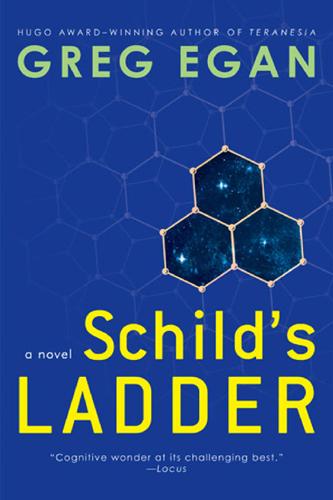
Schild's Ladder
by
Greg Egan
Published 31 Dec 2003
That's very nearly what Sophus is claiming lies behind the border: an enormous quantum computer that could perform any operation that falls under the general description of quantum physics--and in fact is in a superposition of states in which it's doing all of them." Mariama's eyes widened, but then she protested, "Sophus never puts it like that." "No, of course not," Yann agreed. "He's much too careful to use overheated language like that. 'The universe is a Deutsch-Bennett-Turing machine's is not a statement that goes down well with most physicists, since it has no empirically falsifiable content." He smiled mischievously. "It does remind me of something, though. If you ever want a good laugh, you should try some of the pre-Qusp anti-AI propaganda. I once read a glorious tract which asserted that as soon as there was intelligence without bodies, its 'unstoppable lust for processing power' would drive it to convert the whole Earth, and then the whole universe, into a perfectly efficient Planck-scale computer.
…
It doesn't mean that there is a quantum computer underlying anything." "No," Tchicaya agreed. "But qubit network theory doesn't claim that. It just says that when you get to a low enough level, you have nothing left to lose by treating the system as if it were software. It's like all the proofs in applied algorithmic theory that are based on imagining Turing machines. No one complains that the real universe is conspicuously devoid of paper tape." "Old habits die hard," she confessed. "I'm still in mourning for the Sarumpaet rules, and they were disproved before I was born. They're what I was brought up on, they're what I've thought of all my life as the template for a physical theory.
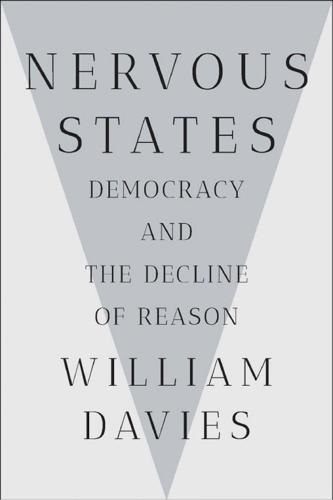
Nervous States: Democracy and the Decline of Reason
by
William Davies
Published 26 Feb 2019
In the years immediately before the Second World War, various mathematicians, philosophers, and psychologists mused on whether human thought and communication could be modeled as mathematical formulae. The British mathematician (and subsequently celebrated code breaker) Alan Turing’s 1937 paper, “On Computable Numbers,” imagined a “Turing Machine” which could be programmed to perform basic instructions in response to different symbols that it was fed in a random order. While the Turing Machine was never built, this vision signaled the leap from the abstract mathematics of computation to its technological construction. Humans would be required to program such machines, but the machines could then perform various acts of calculation on their own.
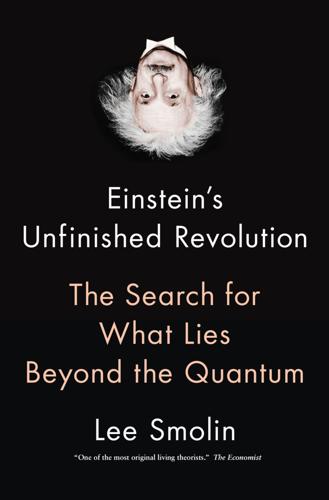
Einstein's Unfinished Revolution: The Search for What Lies Beyond the Quantum
by
Lee Smolin
Published 31 Mar 2019
That talk, and other early anticipations of the idea, seemed to make little impression until David Deutsch, originally a specialist in quantum gravity who held a position at Oxford, proposed in 1989 an approach to quantum computation in the context of a paper on the foundations of mathematics and logic.2 In his paper, Deutsch introduced the idea of a universal quantum computer, analogous to a Turing machine. A few years later Peter Shore, a computer scientist working for an IBM research laboratory, proved that a quantum computer could factor large numbers much faster than a regular computer. At that point people began to take notice, because one application of being able to factor large numbers is that many of the codes now in common use could be broken.
…
See also quantum states of atoms, 49–51, 60–61, 77–78, 146–47 classical, 30 contrary, 38–43, 45, 123, 298 correlated, 51, 145–47, 146n, 149 definition, 15, 304 of electrons, 78 superposing, 32–33 stationary states, 77, 87, 92 stochastic quantum mechanics, 223 Stoppard, Tom, 15 string theory, 189, 234n, 278, 304 subjective probabilities, 162, 163n, 170, 172, 174, 193, 208 subjectivity, entropy and, 191n subsystem principle, 26, 27 superdeterminism, 220–22 superposition, 4–5 of atoms, 6–7, 50, 139–40, 146, 152, 156–57 of electrons, 152 entanglement and, 195 general relativity and, 138 gravity and, 140 measurement and, 64 of molecules, 6 of objects, 139 of particles, 4–5 of photons, 50 pilot wave theory and, 214 quantum, 6 quantum mechanics and, 37, 138–39 quantum states and, 32–33 of quantum systems, 37, 137–38 reality and, 147 Schrödinger’s cat, 49–53 of states, 32–33, 196–97 wave function and, 139–40, 213 superposition principle, 33, 137–39 symmetry, 104n, 255n, 263, 263–64 ’t Hooft, Gerard, 221–22 technology, entanglement, 48 temperature, 29, 30 temporal relationalism, 237, 253, 265 thermodynamics, 120, 159, 177, 191n, 214, 303 time capsules, 203 causality and, 204, 236 as emergent, 237 events and, 266 gravity and, 137, 140 as illusion, 202–4 irreversibility of, 236, 236n laws of, 265 laws of nature and, 265 moments and, 201–3 momentum and, 262 nature and, 265 quantum mechanics and, 63, 137 quantum state and, 31 retrocausality, 216–17, 217 topological field theories, 193–94 transactional interpretation, 216–17 truth, xx, xxvi, 276–77 Tumulka, Roderich, 107 Turing machine, 185 twistor theory, 136 tyranny, 178 uncertainty principle, 18–22, 32, 58, 61, 90, 92–93, 117, 145, 304 Unger, Roberto Mangabeira, 265 unification, 216, 229 unification of forces, xvii unitary law, 31 universal quantum computer, 185 universe as causal set, 260 chosen aspect of, 221 expansion of, 4 information and, 189 living mirror of, 245 nadic, 242–43, 243 observation and, 166–67, 231 parallel, 145, 148, 247 physics in early, 175–76 pilot wave theory and, 121 quantum mechanics and, 28, 159n, 231 quantum states and, 193, 197, 231 quantum theory and, 27–28 relational model of, 242 theory of, 27 wave function and, 231 Valentini, Antony, 120, 121, 210 variety, 244, 247 velocity, 20–21, 21, 23, 81, 262n, 304 views, causal theory of, 269–71 Vigier, Jean-Pierre, 114 von Neumann, John, 93–94, 104–5, 110 water, xv wave function, 31n, 32, 99n, 176 atomic systems and, 141, 213 beables and, 224 definition of, 304 information and, 193, 249n particles and, 99–100, 109, 118–20, 209, 210 phases of, 214n pilot wave theory and, 125–26, 210 probabilities and, 124, 128, 151, 165 Rule 1 and, 116, 118 spacetime and, 140 spontaneous collapses and, 143 squaring, 99–100, 100, 151 superposition and, 139–40, 213 theory of relativity and, 142 universe and, 231 wave-function collapse, 35–36, 129–30, 139, 186 definition, 298 drawbacks of, 214–15 ghost branches and, 213 lessons from, 213–16 measurement problem and, 213 Rule 2 and, 215 wavelength, xxviii, 22 wave mechanics, 304 wave-particle duality, 86, 97–98 de Broglie, L., and, 83–84, 103 decoherence and, 156 definition of, 304 double slit experiment and, 98, 199–200, 210–11 Einstein and, 83–84 electrons and, 98–99 light and, 84 measurement problem and, 223 pilot wave theory and, 142, 208–10, 222 realism and, 89 Schrödinger and, 83–84 waves in electric field, 40 electrons as, 79–80, 82, 83 frequency of, 22, 61 height of, 34 light as, 68, 68, 72, 80 matter as, 5, 23, 84 particles and, 21–24, 34, 60, 66, 79–80, 81, 83–84, 99–100, 213 photons as, 69 sum of, 124 wave theory, 67 Weinberg, Steven, 179 Weyl, Hermann, 82–83 Wheeler, John Archibald, xxvii, 37, 145, 187–88 Wheeler-DeWitt equation, 203 Wigner, Eugene, 195–96 Wigner’s friend, 196n Witten, Edward, 136 Wittgenstein, Ludwig, 72n World War I, 12 wormholes, 240, 240n X-rays, 79–80 Young, Thomas, 67–68 ABCDEFGHIJKLMNOPQRSTUVWXYZ ABOUT THE AUTHOR Lee Smolin has made influential contributions to the search for a unification of physics.
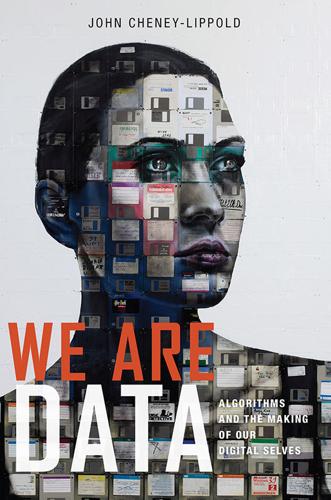
We Are Data: Algorithms and the Making of Our Digital Selves
by
John Cheney-Lippold
Published 1 May 2017
Users of OkCupid and Facebook are not just profiles but mediated social actors whose relations are made, according to traces of data, in a “just-in-time,” on-the-fly algorithmic interpretation.93 “Just-in-time” means there’s another space and yet another politically productive gap in the progression of subject making. To make a claim about something or to have any position from which to act (or not) requires a pause, like cultural theorist Stuart Hall’s arbitrary closure, from chapter 1, or the Turing Machine’s staccatoed, sequential processing. For Hall, this closure constructs a theoretical stasis that is present at every imagined moment, a hypothetical suspension to life and discourse that lets us, briefly, make a temporal claim about who we are. In algorithmic processing, there’s an empirical stasis that accompanies this suspension.
…
See also right to be forgotten Tallbear, Kim, 12, 163 Tarde, Gabriel, 144 Taylor, Charles, 225 TCP/IP, 136, 238 terms of service agreements, 21, 244, 246, 255–56, 299n64 Terranova, Tiziana, 27, 63, 115–16, 127, 196, 256 Thacker, Eugene, 11, 28, 128 TheNation.com, 114 TheRegister.co.uk, 230 Thompson, John B., 205 Thoreau, Henry David, 211 Thrift, Nigel, 105, 112, 180 Tinder, 133 Tor, 168, 238–40, 242, 301n98 Totaro, Paolo, 112 TrackMeNot, 230–32 Trafficthief. See National Security Agency (NSA) transcoding, 10, 12, 18–19, 33–34, 47, 53–55, 71, 78, 97, 104, 107, 115, 159, 172, 180, 252 Tribe, Laurence, 224 Truth, Sojourner, 166 Tufekci, Zeynep, 146 Turing, Alan, 64; Turing Machine, 185 Turner, Graeme, xi Turrow, Joseph, xii, 73 Twitter, 31, 47, 58, 80–81, 82–83, 87, 107, 246, 282n124. See also “Cuban Twitter” Uber, 133 United Nations, 176 United States v. Microsoft, 20 University of California, Berkeley, 137 U.S. Agency for International Development (USAID), 130–31, 262 U.S.

The Art of Computer Programming
by
Donald Ervin Knuth
Published 15 Jan 2001
The results cited in the text therefore give an estimated running time of O(n log m log log m) on Turing machines, or O(n log m) on machines with random access to words of bounded size, or O(n) on pointer machines. 15. The best upper bound known is O(n(lognJ log log n), due to M. J. Fischer and L. J. Stockmeyer [J. Comp. and Syst. Sci. 9 A974), 317-331]; their construction works on multitape Turing machines, and is O(n log n) on pointer machines. The best lower bound known is of order nlogn/loglogn, due to M. S. Paterson, M. J. Fischer, and A. R. Meyer [SIAM/AMS Proceedings 7 A974), 97-111]; this applies to multitape Turing machines but not to pointer machines. 16.
…
A generalized spectral test, based on discrete Fourier transforms, can be used to test how well a sequence measures up to Definition Ql [see A. Compagner, Physical Rev. E52 A995), 5634-5645]. Still another interesting approach to a definition of randomness has been taken by Per Martin-L6f [Information and Control 9 A966), 602-619]. Given a finite 6-ary sequence Xi, ..., Xn, let l(Xi,... ,Xn) be the length of the shortest Turing machine program that generates this sequence. (Alternatively, we could use other classes of effective algorithms, such as those discussed in Section 1.1.) Then l(Xi,... ,Xn) is a measure of the "patternlessness" of 170 RANDOM NUMBERS 3.5 the sequence, and we may equate this idea with randomness. The sequences of length N that maximize l(Xi,... ,Xn) may be called random.
…
The running time will satisfy T(n) = O(nT(logn)); hence T(n)<Cn(Clgn)(Clglgn)(Clglglgn)..., E2) where the product continues until reaching a factor with lg... lgn < 1. Schonhage and Strassen showed how to improve this theoretical upper bound to O(n log n log log n) in their paper, by using integer numbers u to carry out fast Fourier transforms on integers, modulo numbers of the form 2e + 1. This upper bound applies to Turing machines, namely to computers with bounded memory and a finite number of arbitrarily long tapes. If we allow ourselves a more powerful computer, with random access to any number of words of bounded size, Schonhage has pointed out that the upper bound drops to O(nlogn). For we can choose k = I and m = 6k, and we have time to build a complete multiplication table of all possible products xy for 0 < x,y < 2^mj/12\ (The number of such products is 2fc or 2fc+1, and we can compute each table entry by addition from one of its predecessors in O(k) steps, hence O(k2k) = 0{n) steps will suffice for the calculation.)

This Will Make You Smarter: 150 New Scientific Concepts to Improve Your Thinking
by
John Brockman
Published 14 Feb 2012
Developing concepts that carve nature at its joints is the first crucial step toward understanding, not only in the Game of Life but in science and in ordinary life as well. At a more advanced level, we discover that the Game of Life is Turing complete. That is, it’s possible to build a pattern that acts like a Universal Turing Machine (a computer that can simulate any other computer). Thus, any computable function could be implemented in the Game of Life—including perhaps a function that describes a universe like the one we inhabit. It’s also possible to build a universal constructor in the Game of Life, a pattern that can build many types of complex objects, including copies of itself.
…
in time vs. outside of time, 221–24 see also mind thought experiments, 28–29 time, 1–2, 128, 138, 163, 169, 234 arrow of, 237 evolution and, 1–2, 223 thinking in vs. outside of, 221–24 time span of discretion, 334–35 Tolstoy, Leo, 34 Tooby, John, 33–36 tools, 333 top-down thinking, 157–59 Topol, Eric, 303–4 Torrey, Fuller, 279 tracery, 247 trade, 100, 258 international, 96 traffic, 125 transparent self-model, 214 Trivers, Robert, 321 Truman Show, The, 143 truth, 43, 44–45, 192, 301 as model, 72–73 and thinking in time vs. outside of time, 221–22, 223 utility vs., 135–36 Turing, Alan, 146–47 Tversky, Amos, 121, 280 Twain, Mark, 111 typewriter keyboards, 285–86 ulcers, 240 umwelt, 143–45 uncertainty, 28, 53–54, 65, 69, 72, 273, 340 and fear of the unknown, 55–57 unpredictableness, 103–4 risk literacy and, 259–61 statistical thinking and, 260 theater and, 262 see also certainty; probability unconscious, 146 rational, 146–49 understanding, 358 unintended effects of actions, 124–26, 372 uniqueness and specialness: Copernican Principle and, 11–12 in dual view of ourselves, 32 of Earth and humans, 3–5 mediocrity principle and, 6–8, 11, 12 Universal Turing Machine, 276 universe, 294, 301 causes and purposes in, 9–10 Copernican Principle and, 11–12 expansion of, 1, 11 life in, 3–5, 13–14, 292 mediocrity principle and, 6–8, 11, 12 truth and, 222 unknown, fear of, 55–57 Uranus, 361 “Use of Knowledge in Society, The” (Hayek), 258 utility, 347 truth vs., 135–36 vaccinations, 268, 279, 394 autism and, 56, 331 vanilla, 142 Veblen, Thorstein, 228 Veeck, Bill, 360 Veeck effect, 360–62 Venter, J.

How Not to Network a Nation: The Uneasy History of the Soviet Internet (Information Policy)
by
Benjamin Peters
Published 2 Jun 2016
Researchers and historians of science remember his 1943 paper, coauthored with the enigmatic polymath Walter Pitts, “A Logical Calculus of the Ideas Immanent in Nervous Activity,” which proposed models for neural networks in the brain that later became influential in the theory of automata, computation, and cybernetics. Their argument holds that the mind is, given certain reductions, equivalent to a Turing machine. In other words, with sufficient abstraction, it is possible to imagine the neural network in a mind as a logical circuit that is capable of carrying out any computable problem. In McCulloch’s words, he sought “a theory in terms so general that the creations of God and men almost exemplify it.”10 That “almost” packs much into its experimental epistemology.
…
The Soviet translation and adoption of cybernetics share with the other case studies glossed here an underlying fascination with the relationship of the mind to the machine, especially as seen in the biology and neurology of the British and Chilean cyberneticists. The mind-machine analog is a politically charged two-way street. Not only does cybernetics prompt us to think about how a logic machine (computer circuits or any other Turing machine) may function like a mind (a neural network), but it also raises McCulloch’s potent possibility that subsequent neuroscience has soundly rejected: the mind (neural network) might function like a logic machine (computer circuits). This reverse comparison (that a mind is like a machine) proves particularly enduring in later discussions of the design and development of national networks.
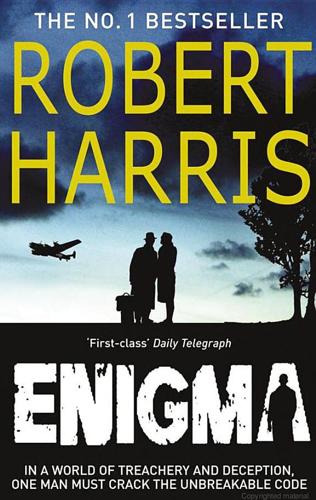
Enigma
by
Robert Harris
Published 15 Feb 2011
But the fourth—the fourth—will be solved purely electronically, using a relay rack and valves, linked to the bombe by this fat cable form, that looks like a -' Kramer cupped his hands into a circle '—well, that looks like a cobra, I guess. Using valves in sequence—that's a revolution. Never been done before. Your people say it should make the calculations a hundred times, maybe a thousand times, as fast.' Jericho said, almost to himself: 'A Turing machine.' 'A what?' 'An electronic computer.' 'Well, whatever you want to call it. It works in theory, that's the good news. And from what they're saying, this may be just the start. It seems they're planning some kind of super-bombe, all electronic, called Colossus.' Jericho had a sudden vision of Alan Turing, one winter afternoon, sitting cross-legged in his Cambridge study while the lamps came on outside, describing his dream of a universal calculating machine.
…
Two Englands, he thought. One England—this one—familiar, safe, obvious. But now another, secret England, secluded in the grounds of stately houses -Beaumanor, Gayhurst, Woburn, Adstock, Bletchley—an England of aerial farms and direction finders, clattering bombes and, soon, the glowing green and orange valves of Turing machines ('it should make the calculations a hundred times, maybe a thousand times as fast'}. A new age beginning to be born in the parklands of the old. What was it that Hardy had written in his Apology? 'Real mathematics has no effect on war. No one has yet discovered any warlike purpose to be served by the theory of numbers.'
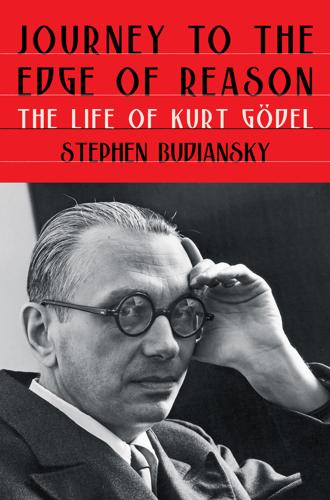
Journey to the Edge of Reason: The Life of Kurt Gödel
by
Stephen Budiansky
Published 10 May 2021
He ended by saying, “As for any claims I might make perhaps the best I can say is that I would have proved Gödel’s Theorem in 1921—had I been Gödel.”45 Still, Post was able to contribute an important extension of Gödel’s theorem which, along with a near simultaneous paper by Alan Turing, provided a rigorous definition of a formal system as a series of basic, mechanical computational steps—the conceptual model for a computer that would come to be known as the Turing Machine, and which would lay the foundation of modern computer science. Gödel and Turing never met, but each recognized the great significance of the other’s work for the newly emerging field of computing. Gödel in turn credited Post’s and Turing’s “precise and unquestionably adequate definition of the general concept of a formal system” for establishing the complete generality of his proof in “every consistent formal system containing a certain amount of finitary number theory.”46 Post and Turing independently had come up with the idea of a conceptual machine that could perform any calculation by employing a program with just a few primitive binary operations: marking a square on a strip of paper, erasing the mark, moving one square to the left or right, and reading whether the current square is marked or not.
…
West Coast, 279 Slezak, Leo, 43, 55 Snow White and the Seven Dwarfs, 253 Social Democratic party, 64, 85–87, 160, 161, 246 Sokal, Alan, 278 Solvay, Robert, 268 Spann, Othmar, 82 “speed-up” problem, 162 Spielberg Castle, 9, 10, 40, 41 (map), 43, 45 spirits, evil, 3, 5, 275 SS (Schutzstaffel), 160, 197, 202, 260 Stalin, Josef, 47, 244 Stark, Johannes, 189 State Department, U.S., 203, 224, 229 Steed, Wickham, 32 Stevenson, Adlai, 247 Stonborough, Margaret “Gretl,” 36, 99 Straus, Ernst, 217–18, 247 Strauss, Johann, the Younger, 32 Strauss, Lewis, 238, 238, 239, 247–48 strophanthin, 178 Students for a Democratic Society, 272 Sudeten Germans, 42, 52–53, 228, 229 synchronicity, 244 syntactical completeness, 115–16 syntax of language, 93–94, 100–101 Systemzeit, 184, 202 Szilard, Leo, 27 Taft, Robert, 244 Tandler, Julius, 84 Tarski, Alfred, 65, 162–63, 163, 176, 177, 268 Taussky, Olga, 68, 103 background and career, 68–69, 76, 186 Café Herrenhof circle and, 65 friendship with KG, 69, 102, 106, 145 Fürtwangler and, 70 KG’s job prospects and, 187, 190 KG’s meeting with Zermelo and, 135 University of Vienna described by, 68 tautology, 112, 121 textile industry, 25, 28, 29, 39–40, 40, 43, 56, 58, 77, 104, 162 This Side of Paradise (Fitzgerald), 154 time, concept of, 225–27 time travel, 226 Time-Life Books, 269 topology, 92 Tractatus Logico-Philosophicus (Wittgenstein), 96, 98, 101 Tristan und Isolde (Wagner), 255 Trotsky, Leon, 95 Truman, Harry S., 246, 247 Tucker, Marcia, 288 Tugendhat, Greta, 58 Turing, Alan, 116, 136 Turing Machine, 136 types, theory of, 110 Ulam, Stanislaw, 133, 248 Uncertainty Principle, 278 undecidable propositions, 123, 130, 136, 162, 241, 245, 258, 267, 279. See also Incompleteness Theorem United Nations, 244 University of Chicago, 93 University of Iowa, 141–42, 150 University of London, 186 University of Vienna, 23, 63 (map), 67 courses of study at, 67–68 denazification at, 260–61 Neuropsychiatry Clinic, 168, 172, 179 persecution of Jews and liberals at, 81–85, 83, 161–62, 181–84, 196–97, 202, 203–4 reputation, 26, 66–67 right-wing student riots, 83–84, 83, 86, 195 science and philosophy at, 37, 84–85 Unknown Quantity, The (Broch), 77–78 “Unreliability of Logical Principles, The” (Brouwer), 113 Urania, 66 Uryshon, Pavel, 92 “Usefulness of Useless Knowledge, The” (Flexner), 149 van der Rohe, Mies, 58 Vanneman, Joseph R., 225 Vaterländische Front, 143 Veblen, Elizabeth (Mrs.
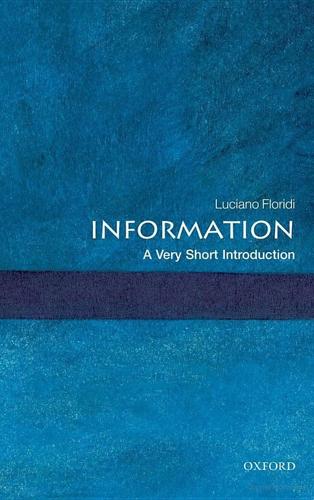
Information: A Very Short Introduction
by
Luciano Floridi
Published 25 Feb 2010
Clearly, it is not the use of a specific substance or reliance on a specific physical phenomenon that makes an information system analogue, but the fact that its operations are directly determined by the measurement of continuous, physical transformations of whatever solid, liquid, or gaseous matter is employed. There are analogue computers that use continuously varying voltages and a Turing machine (the logically idealized model of our personal computers) is a digital computer but may not be electrical. Given their physical nature, analogue computers operate in real time (i.e. time corresponding to time in the real world) and therefore can be used to monitor and control events as they happen, in a 1:1 relation between the time of the event and the time of computation (think of the hourglass).

Kitten Clone: Inside Alcatel-Lucent
by
Douglas Coupland
Published 29 Sep 2014
The difference between quantum computers and digital computers is based on transistors. Whereas digital computers require data to be encoded into binary digits (bits), quantum computation utilizes quantum properties to represent data and perform operations on these data. A theoretical model is the quantum Turing machine, also known as the universal quantum computer. Quantum computers share theoretical similarities with non-deterministic and probabilistic computers, like the ability to be in more than one state simultaneously. The field of quantum computing was first introduced by Richard Feynman in 1982. Although quantum computing is still in its infancy, experiments have been carried out in which quantum computational operations were executed on a very small number of qubits (quantum bits).
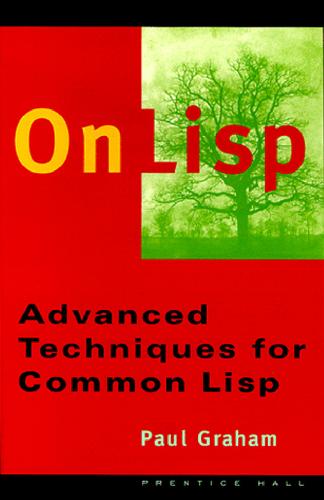
On Lisp: Advanced Techniques for Common Lisp
by
Paul Graham
Published 8 Sep 1993
Extensibility, bottom-up programming, interactive development, source code transformation, embedded languages--this is where Lisp shows to advantage. In principle, of course, any Turing-equivalent programming language can do the same things as any other. But that kind of power is not what programming languages are about. In principle, anything you can do with a programming language you can do with a Turing machine; in practice, programming a Turing machine is not worth the trouble. So when I say that this book is about how to do things that are impossible in other languages, I don't mean "impossible" in the mathematical sense, but in the sense that matters for programming languages. That is, if you had to write some of the programs in this book in C, you might as well do it by writing a Lisp compiler in C first.

The Grand Design
by
Stephen Hawking
and
Leonard Mlodinow
Published 14 Jun 2010
In the Game of Life world, do composite objects exist that, after merely following the laws of that world for some generations, will spawn others of their kind? Not only were Conway and his students able to demonstrate that this is possible, but they even showed that such an object would be, in a sense, intelligent! What do we mean by that? To be precise, they showed that the huge conglomerations of squares that self-replicate are “universal Turing machines.” For our purposes that means that for any calculation a computer in our physical world can in principle carry out, if the machine were fed the appropriate input—that is, supplied the appropriate Game of Life world environment—then some generations later the machine would be in a state from which an output could be read that would correspond to the result of that computer calculation.

These Strange New Minds: How AI Learned to Talk and What It Means
by
Christopher Summerfield
Published 11 Mar 2025
Turing’s amazing insight was that this process would set off a form of computational chain reaction in which computers became capable of ever more complex forms of reasoning, and perhaps would one day master human cognitive skills such as speaking in sentences or playing chess. This famous ‘Turing Machine’ was never built, because it was just an abstract idea, not a physically realizable device. However, having been recruited into the Government Code and Cypher School at Bletchley Park during the war, Turing had the opportunity to see at first hand the power of real, physical computers at work.
…
G., 176 Shortz, Will, 276 SHRDLU, 76–8, 107 silicon sampling, 214 Simmel, Marianne, 133 Simon, Herb, 26, 27, 29, 53, 274 Skycrane, 46 social feedback, LLMs and, 256–7, 259–60, 262, 267–8, 301 social media, 12, 19, 121, 197, 248, 249, 257, 309, 338 social networks, 232, 248–9 Spanish Flu/1918 H1N1 influenza virus, 317–18 Sparrow, 211 Spot, 267 StarCraft, 43, 49 statistical models, 42, 48, 101, 110, 112, 148–53, 308 statistical patterns, language and, 59, 67, 79–80, 115, 146, 164 stochastic, LLMs designed to be, 142, 333–4 stochastic parrots, LLMs as, 150, 151, 161, 162, 308, 311 Stockfish, 274–6 Stratego, 43 Sutskever, Ilya, 19, 101n, 122, 346 Sutton, Rich, 305–6, 310 Swift, Jonathan: Gulliver’s Travels, 183–4 Switchboard Corpus, 87–8 Sydney, 236 synapses, 33, 37, 45, 147, 161–2, 169, 254, 305 syntax, 24, 60, 63, 64, 65, 66, 67, 85, 93–4, 100–101, 109, 111, 113, 116, 141, 154, 163, 166, 168, 170–71, 177, 294 systems reply, 150–51 T Taoism, 155, 209 Target, 250 technological evolution, three stages of, 243–5, 297 Tegmark, Max: Life 3.0, 321 temporally extended problems, 273–4, 288, 297, 333 Terrace, Herb, 61, 65–7 terrorism, 29, 79, 186, 187, 212, 223, 313, 316–17, 320 thalamus, 125 Thiel, Peter, 315 thinking, 3, 46–7 brain and, see brain empiricists and, see empiricists harmful question, asking whether LLMs think as, 143–7 intentionality and, see intentionality LaMDA and, 121–7 landmark problem and, 164–9 learning and, see learning LLMs, possibility of thought in, 119–78 mind and, see mind mistakes made by LLMs and, 136–42 multimodal LLMs and, 177 National Library of Thailand thought experiment and, 171–2, 174 rationalists and, see rationalists relationships between people and LLMs and, 47, 121–4, 133–5, 227–31, 237, 260, 284, 335, 237 statistical models, damning LLMs as merely, 148–53, 308 stochastic parrots, LLMs as, 150, 151, 161, 162, 308, 311 thoughts, generation of, 278, 279, 281, 293 Tōhoku earthquake, Japan (2011), 323 tokens, 50, 53, 98–9, 108–9, 110, 114, 115, 124–5, 126, 132, 134, 148, 149, 151, 159, 163, 164, 165–7, 171, 183, 189, 204, 250, 256, 258, 266, 268, 270–71, 274, 283, 290–91 Toolformer, 291 tools, using, 282–8 training, LLM data/corpus, 19, 42, 46, 47, 49, 84–5, 109, 114, 115, 134, 149, 150, 151, 165, 168, 171, 173, 177, 182, 183, 184, 187, 188, 202, 204, 224, 227, 228, 233, 269–70, 275, 308, 318, 329 ethics and, 179–238 future, 245, 250–51, 253, 254, 256, 259–61, 266, 267, 269–70, 275, 284, 285, 287, 289, 290, 291, 293, 294, 297, 300, 301, 308, 310, 316, 318–19, 322, 325, 329–30 transformer, 103, 112, 116, 117, 124, 131, 137, 139, 146, 153, 163–8, 206, 221, 226–7, 275, 276, 279, 291, 308, 332 function of, 104–111 tree of thought (ToT) module, 278–80 trigrams (word triplets), 84, 87 trolley problems, 212 Truman Show, The, 248 Trump, Donald, 139, 181–2, 197–9, 207, 210, 223 trust, 124–5, 197, 206, 236, 245, 247, 259, 297 truth, 3, 8, 20, 22, 36, 70, 72, 123–4, 137–8, 182, 183, 185, 190, 197, 198, 199, 202, 203, 219, 223, 232, 234–6, 263, 332, 338 TruthfulQA, 195–6, 198, 199 Turing, Alan, 1, 5, 20–23, 25–6, 27–8, 59, 81, 144, 150 Turing Machine, 21 Turing Prize, 1 Turing Test, 5, 22, 23, 59, 150 2001: A Space Odyssey, 1, 47 U understanding, LLMs’ capability of, 19, 46–7, 51, 70, 72, 73, 74, 78, 114, 131, 136–7, 139, 142, 143, 144, 147, 149–52, 172–5, 242 V voice mode, 340 W Washoe (chimpanzee), 60–61, 64–5, 67, 78 weather forecasting, 96–7, 104–5, 106, 290 WebGPT, 290 WebShop, 293 weights, 37–8, 39, 42, 43, 47, 48, 49, 104, 105–9, 111, 115, 117, 147, 159, 164, 168, 169, 189, 190, 212–13, 253, 256, 258, 267, 280, 334 Weiss, David, 272, 273 Weizenbaum, Joseph, 70–71, 222 Welch, Edgar Maddison, 181–2, 197 Whitehead, Alfred North, 25 Wikipedia, 197, 244–5, 246, 255, 290, 333 Winograd, Terry, 76–8, 107 Wittgenstein, Ludwig, 200–202, 218; Philosophical Investigations, 201–2, 218; Tractatus Logico-Philosophicus, 200 Woebot, 229 X X-risk movement, 309–13, 323, 324 Xiaoice, 230, 237 A B C D E F G H I J K L M N O P Q R S T U V W X Y Z About the Author Christopher Summerfield has one foot in the field of Cognitive Neuroscience – studying the brains of humans, as Professor of Cognitive Neuroscience at the University of Oxford – and the other in AI research, helping build intelligent systems as a Staff Research Scientist at the pioneering Google DeepMind.

Artificial You: AI and the Future of Your Mind
by
Susan Schneider
Published 1 Oct 2019
(Notice that the nonphysical mind is not an abstract entity, however, as it has causal and temporal properties. Being nonspatial is a necessary condition of being abstract, but it is not a sufficient condition.) We might call this view Computational Cartesianism. This may sound odd, but experts on functionalism, like the philosopher Hilary Putnam, have long recognized that computations of a Turing machine can be implemented in a Cartesian soul.24 The picture that Computational Cartesianism offers of mind-body causation is perplexing, but so was the original Cartesian view that the mind, although nonspatiotemporal, somehow stands in a causal relationship with the physical world. Not all substance dualisms are this radical, in any case.
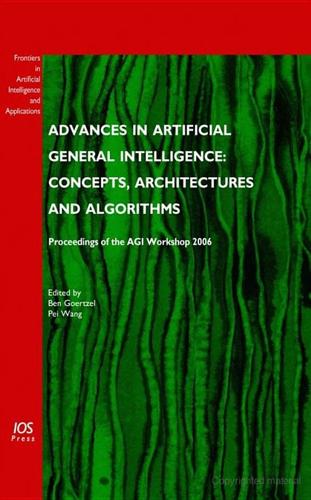
Advances in Artificial General Intelligence: Concepts, Architectures and Algorithms: Proceedings of the Agi Workshop 2006
by
Ben Goertzel
and
Pei Wang
Published 1 Jan 2007
Since there is (believed to be) insufficient underlying structure to solve H rapidly, this then exhibits a subclass of C that is not (believed to be) rapidly solvable. In the case of Sokoban, the proof proceeds by constructing, for any given Turing machine with given finite tape length, a particular Sokoban instance that is solvable if and only if the Turing machine halts in an accepting state. This leaves (at least) two outs for solving problems in C rapidly. First, since the mapping is into, with range only a small subset of instances of C, almost all instances of C may be rapidly solvable. For example, in the case of Sokoban, it intuitively seems that random instances can only be hard if they have a high enough density of barrels and goals, because otherwise solving the different goals decouples.

Between Human and Machine: Feedback, Control, and Computing Before Cybernetics
by
David A. Mindell
Published 10 Oct 2002
This realization, of course, provided a foundation for the computer and cognitive sciences and has been a major reason for their success. Yet it says nothing about what the symbols inside the machine refer to or how they travel into or out of the machine to interact with the world. Put another way, the ideal Turing machine can calculate anything, but it does not do anything. Turing and his successors considered the formal systems of manipulating symbols according to rules and references to other symbols, but they did not consider what or how those symbols might signify. 34 They thus effected the “separation” and “divorce” that Mumford noted between “print and first-hand experience,” between the symbolic and the concrete.
…
See also communications theory control theory “Theory of Servo-Mechanisms” (Hazen), 141 , 165 –67 Theory of Servomechanisms (James, Nichols, and Phillips), 274 , 383 n37 Thompson, James, 38 three term controller (PID), 141 thyratron control, 50 –51, 195 time domain, 110 , 135 , 146 , 241 , 250 and servomechanism theory, 168 , 229 –30 time lag, 165 –66 time series phenomena, 14 , 279 , 320 Tizard, Sir Henry, 244 –45, 379 n55 Tizard mission, 244 –45, 262 Tolman, Richard C., 187 –88, 201 Torpedo Data Computer (TDC), 56 torpedoes, 47 , 76 , 99 , 219 , 331 –32 tracking, 154 , 307 automatic, 18 , 245 –48 optical, 259 , 264 , 334 regenerative, 65 , 289 transcontinental line, 111 –13, 116 , 128 transient analysis, 13 , 177 , 209 , 289 and antiaircraft problem, 178 , 312 and differential analyzer, 158 and dynamic tester, 240 –41 and frequency domain, 227 –29 and prediction, 278 and servomechanism theory, 168 –69, 179 , 230 “Transient Behavior and Design of Servomechanisms” (Brown), 13 , 179 –80 classification of, 180 , 208 –9, 211 distribution of, 209 –10, 213 , 219 , 229 –30, 237 transient phenomena, 144 –51, 153 , 178 , 211 , 354 n7 in power systems, 146 –47, 149 –50 and servomechanism theory, 166 , 168 and stability, 146 –47, 228 and steady-state analyses, 146 transient response, 109 –10, 179 , 227 –29 transistor, 118 transmission, 85 , 199 , 329 –30, 374 n53, 375 n4 and amplifiers, 122 –23, 125 cable, 116 carrier frequency, 107 coaxial cable, 128 and communications, 134 –35 electrical, 62 , 106 –7, 112 , 132 , 134 , 143 , 146 , 197 and environment, 135 and fire control systems, 25 , 32 , 70 , 87 –88, 94 , 233 limits of, 107 –11 long-distance, 107 –9, 111 , 114 –16, 125 , 136 , 143 –44 modeling of, 151 Nyquist on, 360 n78 open wire, 107 –9, 112 , 116 physics of, 122 and radar, 251 regulation of, 135 of signals, 105 –37, 258 stability of, 126 –27 synchronous, 51 , 60 of text, 134 , 136 and transient phenomena, 146 –47 unit of, 112 “Transmission of Information” (Hartley), 134 transmitters: data, 45 synchronous, 48 –49 Trinks, Willibald, 140 , 209 , 364 n79 Tucker, Samuel, 262 Tufts University, 281 , 328 , 330 Turing, Alan, 10 Turing machine, 15 turrets, 17 , 70 , 100 –101 Tuve, Merle, 257 , 267 –68, 382 n26 “Unified Theory of the Relay Interpolator” (Stibitz), 303 United Shoe Machinery Corporation, 329 , 335 universities: and fire control research, 216 and industry, 230 , 242 , 252 , 311 and military, 257 , 311 and NDRC, 195 –96, 198 , 200 , 202 –3 University of Pennsylvania.
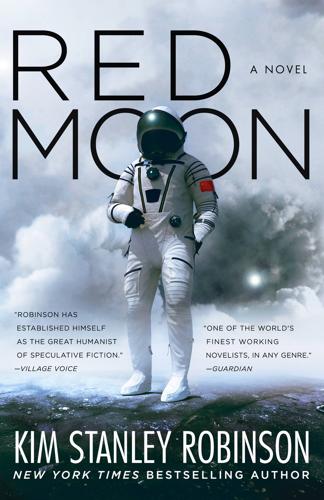
Red Moon
by
Kim Stanley Robinson
Published 22 Oct 2018
Number 34: There is oppression against the social body when a single one of its members is oppressed. “The smart red cloud” is an AI panopticonic array developed at Beijing’s University of Electronic Science and Technology. Extant and permeable. The theoretical literature on AI is perplexing. A Turing machine can effectively compute all problems that can be effectively computed by a Turing machine. Tautology as joke? Not obviously. The solution is impossible, therefore when it is solved it will be solved. This asserted in all seriousness. The analyst often found these sentences amusing. Hope as a tautology. Tautology as a hope. Inaccurate names and descriptions as a deliberate conjuring, as an appeal for funding.

Rationality: From AI to Zombies
by
Eliezer Yudkowsky
Published 11 Mar 2015
The formalism of Solomonoff induction measures the “complexity of a description” by the length of the shortest computer program which produces that description as an output. To talk about the “shortest computer program” that does something, you need to specify a space of computer programs, which requires a language and interpreter. Solomonoff induction uses Turing machines, or rather, bitstrings that specify Turing machines. What if you don’t like Turing machines? Then there’s only a constant complexity penalty to design your own universal Turing machine that interprets whatever code you give it in whatever programming language you like. Different inductive formalisms are penalized by a worst-case constant factor relative to each other, corresponding to the size of a universal interpreter for that formalism.
…
Without getting into reducibility/irreducibility, consider the scenario that the physical universe makes it possible to build a hypercomputer—that performs operations on arbitrary real numbers, for example—but that our brains do not actually make use of this: they can be simulated perfectly well by an ordinary Turing machine, thank you very much . . . Well, that’s a very intelligent argument, Benja Fallenstein. But I have a crushing reply to your argument, such that, once I deliver it, you will at once give up further debate with me on this particular point: You’re right. Alas, I don’t get modesty credit on this one, because after publishing the last essay I realized a similar flaw on my own—this one concerning Occam’s Razor and psychic powers: If beliefs and desires are irreducible and ontologically basic entities, or have an ontologically basic component not covered by existing science, that would make it far more likely that there was an ontological rule governing the interaction of different minds—an interaction which bypassed ordinary “material” means of communication like sound waves, known to existing science.
…
But so long as the terms of the theory were being processed by human scientists, they just knew when an “observation” had occurred. You said an “observation” occurred whenever it had to occur in order for the experimental predictions to come out right—a subtle form of constant tweaking. (Remember, the basics of quantum theory were formulated before Alan Turing said anything about Turing machines, and way before the concept of computation was popularly known. The distinction between an effective formal theory, and one that required human interpretation, was not as clear then as now. Easy to pinpoint the problems in hindsight; you shouldn’t learn the lesson that problems are usually this obvious in foresight.)
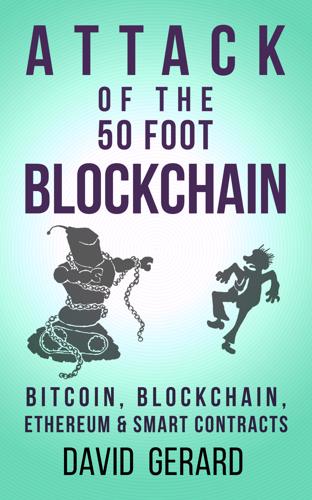
Attack of the 50 Foot Blockchain: Bitcoin, Blockchain, Ethereum & Smart Contracts
by
David Gerard
Published 23 Jul 2017
“Ethereum Launches; But Leaked Chat Says Project Needs ‘Years More’”. CoinTelegraph, 1 August 2015. (archive) [303] e.g., Vlad Zamfir. “About my tweet from yesterday …” 5 March 2017. (archive) [304] “Vitalik’s Quantum Quest”. Bitcoin Error Log (blog), 16 August 2016. (archive) [305] Jordan Ash. “Why Turing Machines are Quantum.” Noospheer (blog), 4 September 2013. “If successful, it will have applications ranging from cryptography to finance, energy, medical care and beyond.” (archive) [306] O(sqrt(N)) rather than O(N), per Grover’s algorithm. Which is a pretty good speedup for as long as nobody else knows you have a quantum computer

Physics of the Future: How Science Will Shape Human Destiny and Our Daily Lives by the Year 2100
by
Michio Kaku
Published 15 Mar 2011
So there are at least two approaches to modeling the brain. The first, the traditional top-down approach, is to treat robots like digital computers, and program all the rules of intelligence from the very beginning. A digital computer, in turn, can be broken down into something called a Turing machine, a hypothetical device introduced by the great British mathematician Alan Turing. A Turing machine consists of three basic components: an input, a central processor that digests this data, and an output. All digital computers are based on this simple model. The goal of this approach is to have a CD-ROM that has all the rules of intelligence codified on it.

Accelerando
by
Stross, Charles
Published 22 Jan 2005
Lifting a hind paw, she scratches behind her left ear for a moment then pauses, foot waving absentmindedly. "Besides, the CETI team was searching under the street lights while I was sniffing around in the grass. They kept trying to find primes; when that didn't work, they started trying to breed a Turing machine that would run it without immediately halting." Aineko lowers her paw daintily. "None of them tried treating it as a map of a connectionist system based on the only terrestrial components anyone had ever beamed out into deep space. Except me. But then, your mother had a hand in my wetware, too."
…
For example, a collapse of the false vacuum," Manfred insists, slightly uncoordinated and slurring his vowels under the influence of the first glass of fruit punch he's experienced in nigh-on twenty real-time years. His body is young and still relatively featureless, hair still growing out, and he's abandoned his old no-implants fetish at last to adopt an array of interfaces that let him internalize all the exocortex processes that he formerly ran on an array of dumb Turing machines outside his body. He's standing on his own sense of style and is the only person in the room who isn't wearing some variation of dinner jacket or classical evening dress. "Entangled exchange via routers is all very well, but it won't let us escape the universe itself – any phase change will catch up eventually, the network must have an end.

Homo Deus: A Brief History of Tomorrow
by
Yuval Noah Harari
Published 1 Mar 2015
Dataism was born from the explosive confluence of two scientific tidal waves. In the 150 years since Charles Darwin published On the Origin of Species, the life sciences have come to see organisms as biochemical algorithms. Simultaneously, in the eight decades since Alan Turing formulated the idea of a Turing Machine, computer scientists have learned to engineer increasingly sophisticated electronic algorithms. Dataism puts the two together, pointing out that exactly the same mathematical laws apply to both biochemical and electronic algorithms. Dataism thereby collapses the barrier between animals and machines, and expects electronic algorithms to eventually decipher and outperform biochemical algorithms.
…
(game show) 315–16, 315 Jesus Christ 91, 155, 183, 187, 271, 274, 297 Jews/Judaism: ancient/biblical 60, 90–1, 94, 172–3, 174, 181, 193, 194–5, 268, 390; animal welfare and 94; expulsions from early modern Europe 197, 198; Great Jewish Revolt (AD 70) 194; homosexuality and 225–6; Second World War and 164–5, 165, 182 Jolie, Angelina 332–3, 335, 347 Jones, Lieutenant Henry 254 Journal of Personality and Social Psychology 354–5 Joyce, James: Ulysses 240 JSTOR digital library 383 Jung, Carl 223–4 Kahneman, Daniel 294, 295–6, 338–9 Kasparov, Garry 320–1, 320 Khmer Rouge 264 Khrushchev, Nikita 263, 273–4 Kurzweil, Ray 24, 25, 27; The Singularity is Near 381 Kyoto protocol, 1997 215–16 Lake Fayum engineering project, Egypt 161–2, 175, 178 Larson, Professor Steve 324–5 Law of the Jungle 14–21 lawns 58–64, 62, 63 lawyers, replacement by artificial intelligence of 314 Lea, Tom: That 2,000 Yard Stare (1944) 244, 245, 246 Lenin Academy for Agricultural Sciences 371–2 Lenin, Vladimir 181, 207, 251, 271, 272, 273, 375 Levy, Professor Frank 322 liberal humanism/liberalism 98, 181, 247; contemporary alternatives to 267–77; free will and 281–90, 304; humanism and see humanism; humanist wars of religion, 1914– 1991 and 261–7; individualism, belief in 290–304, 305; meaning of life and 304, 305; schism within humanism and 246–57; science undermines foundations of 281–306; technological challenge to 305–6, 307–50; value of experience and 257–9, 260, 387–8; victory of 265–7 life expectancy 5, 25–7, 32–4, 50 ‘logic bombs’ (malicious software codes) 17 Louis XIV, King 4, 64, 227 lucid dreaming 361–2 Luther, Martin 185–7, 275, 276 Luther King, Martin 263–4, 275 Lysenko, Trofim 371–2 MAD (mutual assured destruction) 265 malaria 12, 19, 315 malnutrition 3, 5, 6, 10, 27, 55 Mao Zedong 27, 165, 167, 251, 259, 263, 375 Maris, Bill 24 marriage: artificial intelligence and 337–8, 343; gay 275, 276; humanism and 223–5, 275, 276, 291, 303–4, 338, 364; life expectancy and 26 Marx, Karl/Marxism 56–7, 60, 183, 207, 247–8, 271–4; Communist Manifesto 217; Das Kapital 57, 274 Mattersight Corporation 317–18 Mazzini, Giuseppe 249–50 meaning of life 184, 222, 223, 299–306, 338, 386 Memphis, Egypt 158–9 Mendes, Aristides de Sousa 164–5, 164 Merkel, Angela 248–9 Mesopotamia 93 Mexico 8–9, 11, 263 Michelangelo 27, 253; David 260 Microsoft 15, 157, 330–1; Band 330–1; Cortana 342–3 Mill, John Stuart 35 ‘mind-reading’ helmet 44–5 Mindojo 314 MIT 322, 383 modern covenant 199–219, 220 Modi, Narendra 206, 207 money: credit and 201–5; Dataism and 352, 365, 379; intersubjective nature of 144, 145, 171, 177; invention of 157, 158, 352, 379; investment in growth 209–11 mother–infant bond 88–90 Mubarak, Hosni 137 Muhammad 188, 226, 270, 391 Murnane, Professor Richard 322 Museum of Islamic Art, Qatar 64 Muslims: Charlie Hebdo attack and 226; Crusades and 146, 147, 148, 149; economic growth, belief in 206; evaluating success of 174; evolution and 103; expulsions of from early modern Europe 197, 198; free will and 285; lawns and 64; LGBT community and 225 see also Islam Mussolini, Benito 302 Myanmar 144, 206 Nagel, Thomas 357 nanotechnology 23, 25, 51, 98, 212, 269, 344, 353 National Health Service, UK 334–5 National Salvation Front, Romania 136 NATO 264–5 Naveh, Danny 76, 96 Nayaka people 75–6, 96 Nazism 98, 164–5, 181, 182, 247, 255–7, 262–3, 375, 376, 396 Ne Win, General 144 Neanderthals 49, 156, 261, 273, 356, 378 Nebuchadnezzar, King of Babylonia 172–3, 310 Nelson, Shawn 255 New York Times 309, 332–4, 347, 370 New Zealand: Animal Welfare Amendment Act, 2015 122 Newton, Isaac 27, 97–8, 143, 197 Nietzsche, Friedrich 234, 254, 268 non-organic beings 43, 45 Norenzayan, Ara 354–5 Novartis 330 nuclear weapons 15, 16, 17, 17, 131, 149, 163, 216, 265, 372 Nyerere, Julius 166 Oakland Athletics 321 Obama, President Barack 313, 375 obesity 5–6, 18, 54 OncoFinder 323 Ottoman Empire 197, 207 ‘Our Boys Didn’t Die in Vain’ syndrome 300–3, 301 Page, Larry 28 paradox of knowledge 55–8 Paris Agreement, 2015 216 Pathway Pharmaceuticals 323 Petsuchos 161–2 Pfungst, Oskar 129 pharmacists 317 pigs, domesticated 79–83, 82, 87–8, 90, 98, 99, 100, 101, 231 Pinker, Steven 305 Pius IX, Pope 270–1 Pixie Scientific 330 plague/infectious disease 1–2, 6–14 politics: automation of 338–41; biochemical pursuit of happiness and 41; liberalism and 226–7, 229, 232, 232, 234, 247–50, 247n, 252; life expectancy and 26–7, 29; revolution and 132–7; speed of change in 58 pollution 20, 176, 213–14, 215–16, 341–2 poverty 3–6, 19, 33, 55, 205–6, 250, 251, 262, 349 Presley, Elvis 159–60, 159 Problem of Other Minds 119–20, 126–7 Protestant Reformation 185–7, 198, 242–4, 242, 243 psychology: evolutionary 82–3; focus of research 353–6, 360–2; Freudian 117; humanism and 223–4, 251–2; positive 360–2 Putin, Vladimir 26, 375 pygmy chimpanzees (bonobos) 138–9 Quantified Self movement 331 quantum physics 103, 170, 182, 234 Qur’an 170, 174, 269, 270 rats, laboratory 38, 39, 101, 122–4, 123, 127–8, 286–7 Redelmeier, Donald 296 relativity, theory of 102, 103, 170 religion: animals and 75–8, 90–8, 173; animist 75–8, 91, 92, 96–7, 173; challenge to liberalism 268; Dataism 367–97 see also Dataism; defining 180–7; ethical judgments 195–7; evolution and see evolution; formula for knowledge 235–7; God, death of 67, 234, 261, 268; humanist ethic and 234–5; monotheist 101–2, 173; science, relationship with 187–95, 197–8; scriptures, belief in 172–4; spirituality and 184–7; theist religions 90–6, 98, 274 revolutions 57, 60, 132–7, 155, 263–4, 308, 310–11 Ritalin 39, 364 robo-rat 286–7 Roman Empire 98, 191, 192, 194, 240, 373 Romanian Revolution, 1989 133–7, 138 Romeo and Juliet (Shakespeare) 365–6 Rousseau, Jean-Jacques 223, 282, 305 Russian Revolution, 1917 132–3, 136 Rwanda 15 Saarinen, Sharon 53 Saladin 146, 147, 148, 150–1 Santino (chimpanzee) 125–7 Saraswati, Dayananda 270, 271, 273 Scientific Revolution 96–9, 197–8, 212, 236–7, 379 Scotland 4, 303–4, 303 Second World War, 1939–45 21, 34, 55, 115, 164, 253, 262–3, 292 self: animal self-consciousness 124–7; Dataism and 386–7, 392–3; evolutionary theory and 103–4; experiencing and narrating self 294–305, 337, 338–9, 343; free will and 222–3, 230, 247, 281–90, 304, 305, 306, 338; life sciences undermine liberal idea of 281–306, 328–9; monotheism and 173, 174; single authentic self, humanist idea of 226–7, 235–6, 251, 281–306, 328–41, 363–6, 390–1; socialism and self-reflection 251–2; soul and 285; techno-humanism and 363–6; technological challenge to liberal idea of 327–46, 363–6; transcranial stimulator and 289 Seligman, Martin 360 Senusret III 161, 162 September 11 attacks, New York, 2011 18, 374 Shavan, Shlomi 331 Shedet, Egypt 161–2 Silico Medicine 323 Silicon Valley 15, 24, 25, 268, 274, 351, 381 Sima Qian 173, 174 Singapore 32, 207 smallpox 8–9, 10, 11 Snayers, Pieter: Battle of White Mountain 242–4, 243, 246 Sobek 161–2, 163, 171, 178–9 socialist humanism/socialism 247–8, 250–2, 256, 259–60, 261–2, 263, 264, 265, 266–7, 271–4, 325, 351, 376 soul 29, 92, 101–6, 115–16, 128, 130, 132, 138, 146, 147, 148, 150, 160, 184–5, 186, 189, 195, 229, 272, 282, 283, 285, 291, 324, 325, 381 South Korea 33, 151, 264, 266, 294, 349 Soviet Union: communism and 206, 208, 370, 371–2; data processing and 370, 370, 371–2; disappearance/collapse of 132–3, 135, 136, 145, 145, 266; economy and 206, 208, 370, 370, 371–2; Second World War and 263 Spanish Flu 9–10, 11 Sperry, Professor Roger Wolcott 292 St Augustine 275, 276 Stalin, Joseph 26–7, 256, 391 stock exchange 105–10, 203, 210, 294, 313, 369–70, 371 Stone Age 33–4, 60, 74, 80, 131, 155, 156, 157, 163, 176, 261 subjective experience 34, 80, 82–3, 105–17, 143–4, 155, 179, 229, 237, 312, 388, 393 Sudan 270, 271, 273 suicide rates 2, 15, 33 Sumerians 156–8, 159, 162–3, 323 Survivor (TV reality show) 240 Swartz, Aaron 382–3; Guerilla Open Access Manifesto 383 Sylvester I, Pope 190–1 Syria 3, 19, 149, 171, 220, 275, 313 Taiping Rebellion, 1850–64 271 Talwar, Professor Sanjiv 286–7 techno-humanism: definition of 352–3; focus of psychological research and 353–9; human will and 363–6; upgrading of mind 359–66 technology: Dataism and see Dataism; inequality and future 346–50; liberal idea of individual challenged by 327–46; renders humans economically and militarily useless 307–27; techno-humanism and see techno-humanism Tekmira 203 terrorism 14, 18–19, 226, 288, 290, 311 Tesla 114, 322 Thatcher, Margaret 57, 372 Thiel, Peter 24–5 Third Man, The (movie) 253–4 Thirty Years War, 1618–48 242–3 Three Gorges Dam, 163, 188, 196 Thucydides 173, 174 Toyota 230, 294, 323 transcranial stimulators 44–5, 287–90, 362–3, 364 Tree of Knowledge, biblical 76–7, 77, 97, 98 tuberculosis 9, 19, 23, 24 Turing, Alan 120, 367 Turing Machine 367 Turing Test 120 23andMe 336 Twitter 47, 137, 313, 387 US Army 287–90, 362–3, 364 Uganda 192–3, 195 United States: Dataism and 374; energy usage and happiness levels in 34; evolution, suspicion of within 102; Kyoto protocol, 1997 and 215–16; liberalism, view of within 247n; nuclear weapons and 163; pursuit of happiness and 31; value of life in compared to Afghan life 100; Vietnam War and 264, 265; well-being levels 34 Universal Declaration of Human Rights 21, 24, 31 Urban II, Pope 227–8 Uruk 156–7 Valla, Lorenzo 192 Valle Giulia, Battle of, 1968 263 vampire bats 204–5 Vedas 170, 181, 270 Vietnam War, 1954–75 57, 244, 264, 265 virtual-reality worlds 326–7 VITAL 322–3 Voyager golden record 258–9 Waal, Frans de 140–1 Walter, Jean-Jacques: Gustav Adolph of Sweden at the Battle of Breitenfeld (1631) 242, 243, 244–5 war 1–3, 14–19; humanism and narratives of 241–6, 242, 245, 253–6 Warsaw Pact 264–5 Watson (artificial intelligence system) 315–17, 315, 330 Watson, John 88–9, 90 Waze 341–2 web of meaning 143–9 WEIRD (Western, educated, industrialised, rich and democratic) countries, psychology research focus on 354–5, 359, 360 West Africa: Ebola and 11, 13, 203 ‘What Is It Like to Be a Bat?’
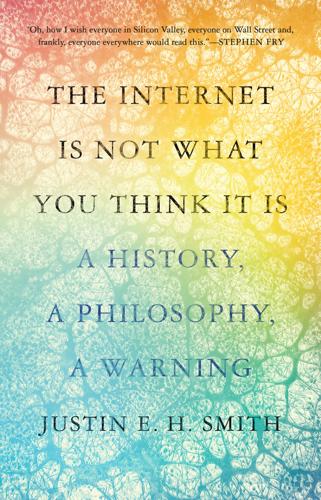
The Internet Is Not What You Think It Is: A History, a Philosophy, a Warning
by
Justin E. H. Smith
Published 22 Mar 2022
For example, it has furnished me with a list, by year, of the rectors of the University of Halle from its founding in 1502. This is information I found no reason to doubt, and which I therefore used in a book published with Oxford University Press in 2020.6 And now, in quarantine, it is more vital than ever: some half-remembered point about Turing machines or Aristotelian syllogism can be quickly recalled to mind thanks to this resource, which feels, phenomenologically, much more like a prosthetic memory than like a reference work in the traditional sense. It has fundamentally changed the way I relate to knowledge (or at least to knowledge of particulars).

Clean Agile: Back to Basics
by
Robert C. Martin
Published 13 Oct 2019
On computable numbers, with an application to the Entscheidungsproblem [proof]. Proceedings of the London Mathematical Society, 2 (published 1937), 42(1):230–65. The best way to understand this paper is to read Charles Petzold’s masterpiece: Petzold, C. 2008. The Annotated Turing: A Guided Tour through Alan Turing’s Historic Paper on Computability and the Turing Machine. Indianapolis, IN: Wiley. The early days of software are loaded with examples of behavior that we would now describe as Agile. For example, the programmers who wrote the control software for the Mercury space capsule worked in half-day steps that were punctuated by unit tests. Much has been written elsewhere about this period.

The People's Republic of Walmart: How the World's Biggest Corporations Are Laying the Foundation for Socialism
by
Leigh Phillips
and
Michal Rozworski
Published 5 Mar 2019
Given a new lease on life by the advent of new technologies, the debate has continued into the 2000s. A 2002 rejoinder to the Cockshott-Cottrell perspective from Polish logician Witold Marciszewski of the University of Warsaw argued that socialist planning would require what are called super-Turing machines, or hypercomputers—theoretical computers that go beyond the computability of standard computers, which some claim are not only physically impossible to build, but logically impossible to devise. And in 2006, Robert Murphy, a young Austrian School economist with the Pacific Research Institute, a Californian free-market think tank, employed set theorist Georg Cantor’s diagonal argument to claim that the list of prices in any planning board’s matrix would need to contain not merely billions or trillions of prices, but—as with the set of all real numbers or set of all subsets of integers—an uncountably infinite number of them, therefore making economy-wide socialist calculation impossible in principle, not just in practice, because the full list of all prices could never be listed.
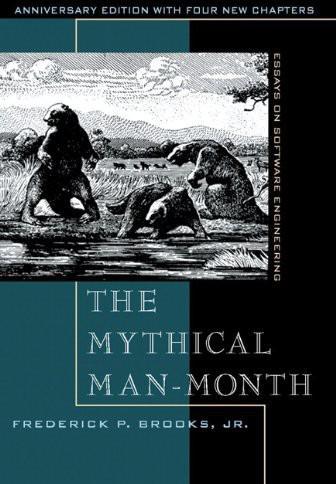
The Mythical Man-Month
by
Brooks, Jr. Frederick P.
Published 1 Jan 1975
Dijkstra, and C. A. R. Hoare, Structured Programming. London and New York: Academic Press, 1972. This volume contains the fullest treatment. See also Dijkstra's germinal letter, "GOTO statement considered harm-ful," CACM, II, 3 (March, 1968), pp. 147-148. Bohm, C., and A. Jacopini, "Flow diagrams, Turing machines, and languages with only two formation rules," CACM, 9, 5 (May, 1966), pp. 366-371. Codd, E. F., E. S. Lowry, E. McDonough, and C. A. Scalzi, "Multiprogramming STRETCH: Feasibility considerations," CACM, 2,11 (Nov., 1959), pp. 13-17. Strachey, C., "Time sharing in large fast computers," Proc.

How We Got Here: A Slightly Irreverent History of Technology and Markets
by
Andy Kessler
Published 13 Jun 2005
The Robinson used relays and other electronics and required two sets of paper tapes to read 2000 characters a second. Progress was slow as the tape kept ripping. Two London-based post office engineers, Tommy Flowers and Alan Coombes, improved on the Robinson, more than doubling the speed, by using 2400 vacuum tubes and a number of servomotors, instead of relays and fragile paper tape. But it was still a Turing machine. Its name was Colossus, a mighty name, and it was moved to 114 HOW WE GOT HERE Bletchley Park and started operating in December 1943. It had both logic and memory and since it could change its program based on which code needed to be deciphered, it was a true Turing programmable computer.
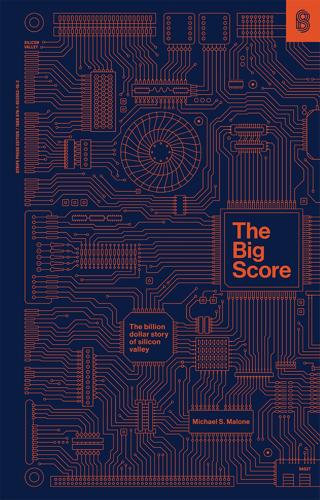
The Big Score
by
Michael S. Malone
Published 20 Jul 2021
Shannon had pulled off something remarkable; he had linked the controllable behavior of machines with a system of logic that encompassed all science, perhaps even all of human thought. The Age of Computers had begun—and hard on its heels the rise of information theory, the great organizer of the postwar world. Shannon wasn’t alone in defining the shape of the computer to come. In 1936, Englishman Alan Turing wrote a paper describing a universal computing machine, the Turing Machine. It, too, would be instructed using a language of ones and zeros, entered into the machine via a pattern of holes punched into ribbons of paper tape. In Germany, Conrad Zuse had, in many ways, gone even further. By the mid-1930s, using electro-mechanical relays just like the ones Shannon was studying, Zeus had actually built the first electric computer, the Z-1.
…
See Stealing Tolerant Systems, 317 Tourney, Ed, 210, 213 Toy market, 244–45 Trade press, 368–69 Trade secrets, theft of, 264 See also Japanscam scandal Traitorous Eight, 94, 104, 113–14, 119, 165, 169, 306 Tramiel, Jack, 327–29, 394–95 Transformers, 220 Transistors, 92, 93, 143, 226, 228, 229 development of, 114–18 Noyce and, 101–4 Treybig, James, 315–18, 357 Triad Systems, 324–25 Trilogy Corp., 303, 350–51, 459 Turing, Alan, 223, 224 Turing Machine, 223 Two Pi, 297–98, 303 Tymshare, 290, 323 U ULTRA group, 224 Union Carbide Electronics (UCE), 165 Unions, 364, 392–93, 445, 454–55 Hewlett-Packard (HP) and, 62 Unison, 418 V Vacuum tubes, 220–22, 224–26 Valentine, Don, 120, 121, 126, 128–30, 139, 201–6, 351, 403 Van Poppelen, Joe, 200, 207 Van Vleck, John, 147 Varian, Eric, 77 Varian, Russell, 75–82, 84 Varian, Sigurd, 75–82, 84 Varian Associates, 80–81 Venrock, 326 Venture capital industry, 94, 95, 306, 318–23 Very large scale integration (VLSI), 235 VIC 20 computer, 327 Video computer system (VCS), 383 Video games, 374–91 arcade, 383–85 designers of, 385, 386–87 downturn in market for, 391 home, 377 See also individual game makers and games Videotape recorders, 88–89 Visicalc, 326 Visicorp, 292, 326, 369 VLSI (very large scale integration), 235 VLSI Technology, 189 W Wafers, 232–37 Walt Disney Studios, 56, 379 Warner Communications, 379–83, 391, 394–5 Wealth of founders and venture capitalists, 353–55 Webster, Daniel, 78–79 Western Association of Venture Capitalists, 318 Westinghouse, 85, 187, 225 Wheelwright, Steven C., 312 White, Eugene, 296 White-collar crime.

Raw Data Is an Oxymoron
by
Lisa Gitelman
Published 25 Jan 2013
Zur Korrektur einer Fragestellung,” Sociologia Internationalis 29 (1991): 1–30, esp. 8f. 38. For the only ontological assumption of systems theory, see the first sentence of the first chapter of the outline of a general theory, Luhmann, Soziale Systeme, 30. 39. Ibid., 240, my emphasis of the term, which (not coincidentally?) refers to the Turing machine. 40. Luhmann, Die Gesellschaft der Gesellschaft, 82. 41. See first the foundational chapter in Luhmann, Soziale Systeme, 191ff. In addition, on the question of the extent to which communication applies to computers, see Peter Fuchs, “Kommunikation mit Computern? Zur Korrektur einer Fragestellung,” Sociologia Internationalis 29 (1991): 1–30. 42.
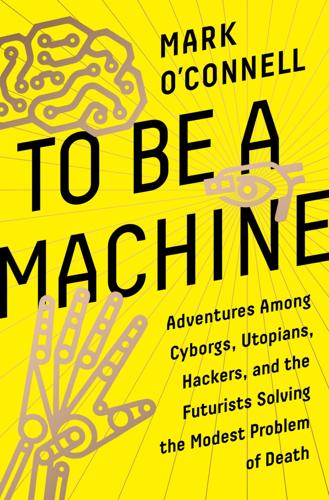
To Be a Machine: Adventures Among Cyborgs, Utopians, Hackers, and the Futurists Solving the Modest Problem of Death
by
Mark O'Connell
Published 28 Feb 2017
Oxford: Oxford University Press, 2014. Čapek, Karel. R.U.R. (Rossum’s Universal Robots): A Fantastic Melodrama. Trans. Claudia Novack. London: Penguin, 2004. Chamayou, Grégoire. Drone Theory. London: Penguin, 2015. Cicurel, Ronald, and Miguel Nicolelis. The Relativistic Brain: How It Works and Why It Cannot Be Simulated by a Turing Machine. Montreux: Kios Press, 2015. Clarke, Arthur C. The City and the Stars. New York: Harcourt, Brace, 1956. Descartes, René. Discourse on Method and Meditations on First Philosophy. Trans. Donald A. Cress. Indianapolis: Hackett Classics, 1998. ———. Treatise of Man. Trans. Thomas Steele Hall. Amherst, NY: Prometheus, 2003.

Forge Your Future with Open Source
by
VM (Vicky) Brasseur
Now you can code your way out. Jamis Buck (286 pages) ISBN: 9781680500554 $38 Good Math Mathematics is beautiful—and it can be fun and exciting as well as practical. Good Math is your guide to some of the most intriguing topics from two thousand years of mathematics: from Egyptian fractions to Turing machines; from the real meaning of numbers to proof trees, group symmetry, and mechanical computation. If you’ve ever wondered what lay beyond the proofs you struggled to complete in high school geometry, or what limits the capabilities of the computer on your desk, this is the book for you. Mark C. Chu-Carroll (282 pages) ISBN: 9781937785338 $34 * * *
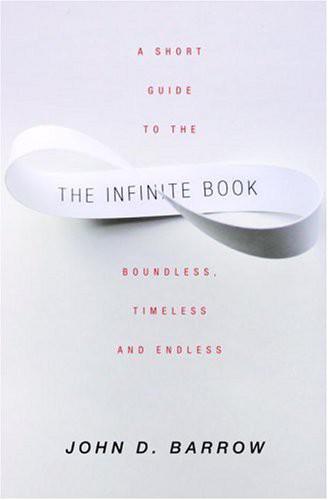
The Infinite Book: A Short Guide to the Boundless, Timeless and Endless
by
John D. Barrow
Published 1 Aug 2005
Hence, ½ S = ½ and S = 1. 5. H. Weyl, Philosophy of Mathematics and Natural Science, Princeton University Press, 1949, p. 42. Weyl’s mention of decision procedures and machines is interesting. Mathematics had just emerged from a pre-war period which saw the advent in print of Alan Turing’s ‘Turing machine’, the archetypal universal computer that is indistinguishable from a human calculator (the original meaning of the word ‘computer’) and the question, answered in the negative by Turing, of whether a finite computing machine would be able to decide the truth or falsity of all statements of mathematics in a finite time.

Scary Smart: The Future of Artificial Intelligence and How You Can Save Our World
by
Mo Gawdat
Published 29 Sep 2021
Secondly, and more importantly for AI, the answers suggested that, within these limits, any form of mathematical reasoning could be mechanized. Church and Turing offered a thesis implying that any mechanical device capable of shuffling symbols as simple as 0 and 1 could imitate any conceivable process of mathematical deduction. This was the basis for the Turing machine – a mathematical model of computation that defined a machine capable of manipulating symbols on a strip of tape according to a table of rules. Simple as it was, this invention inspired scientists to begin discussing the possibility of thinking machines, and that, in my personal view, was the point at which the work to deliver intelligent machines – so long the object of humanity’s fantasies – actually started.

Rule of the Robots: How Artificial Intelligence Will Transform Everything
by
Martin Ford
Published 13 Sep 2021
Turing, born in London in 1912, did groundbreaking work on the theory of computation and the nature of algorithms, and is generally regarded as the founding father of computer science. Turing’s most important accomplishment came in 1936, just two years after he graduated from the University of Cambridge, when he laid out the mathematical principles for what is today called a “universal Turing machine”—essentially the conceptual blueprint for every real-world computer that has ever been built. Turing clearly understood at the very inception of the computer age that machine intelligence was a logical and perhaps inevitable extension of electronic computation. The phrase “artificial intelligence” was coined by John McCarthy, who was then a young mathematics professor at Dartmouth College.
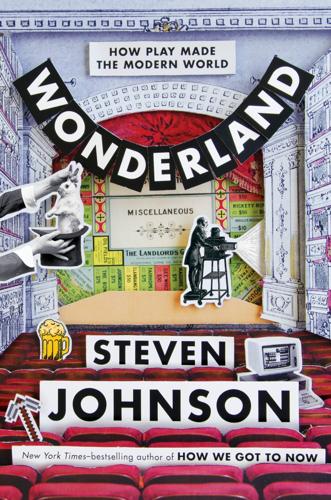
Wonderland: How Play Made the Modern World
by
Steven Johnson
Published 15 Nov 2016
But their “instrument” was endowed with a higher-level property. It was programmable. Conceptually, this was a massive leap forward: machines designed specifically to be open-ended in their functionality, machines controlled by code and not just mechanics. A direct line of logic connects the “Instrument Which Plays by Itself” to the Turing machines that have so transformed life in the modern age. You can think of the instrument as the moment where the Manichean divide between hardware and software first opened up. An invention that itself makes invention easier, faster, more receptive to trial and error. A virtual machine. Yet it must have been hard to see (or hear) its significance at the time.

I, Warbot: The Dawn of Artificially Intelligent Conflict
by
Kenneth Payne
Published 16 Jun 2021
Another famous mathematician, Kurt Gödel had already offered a proof of this incompleteness, but now Turing stepped in to offer further support. And, as a by-product of the proof, Turing casually invented the modern computer.12 In his landmark paper, Turing imagined a computer, which he called a ‘logical computing machine’, ever after known as the universal Turing machine. This machine, he claimed, could perform any calculation (hence ‘universal’), by disaggregating them into a series of individual steps. These would be marked on a paper tape and fed through the machine’s reader. The computer was entirely theoretical—there never was an infinitely long, one dimensional ticker tape, as he proposed.

The Rationalist's Guide to the Galaxy: Superintelligent AI and the Geeks Who Are Trying to Save Humanity's Future
by
Tom Chivers
Published 12 Jun 2019
This has the advantage, say Russell and Norvig, of being ‘mathematically well defined and completely general’. And again, importantly, we don’t care at all about how a given agent achieves rationality. An AI that carefully mimics the human brain, to the point of having simulations of individual neurons, could be rational; an AI that runs entirely along the lines of a Turing machine, or Charles Babbage’s Difference Engine, metal gears and all, could be rational too. The mathematically defined concept of ‘rationality’ does not care what engine is used to run it. And, again, it doesn’t care whether or not your AI is conscious, or has emotions, or knows what love is. It’s purely a question of whether it achieves its goals, whatever they are.
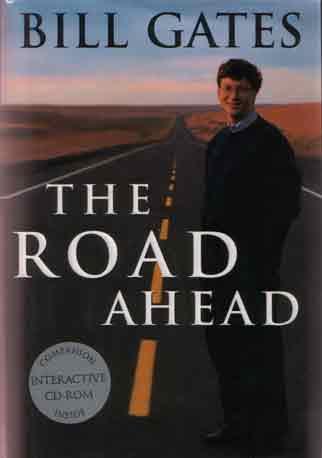
The Road Ahead
by
Bill Gates
,
Nathan Myhrvold
and
Peter Rinearson
Published 15 Nov 1995
It is hard to sort out the paternity of the modern computer, because much of the thinking and work was done in the United States and Britain during World War II under the cloak of wartime secrecy. Three major contributors were Alan Turing, Claude Shannon, and John von Neumann. In the mid-1930s, Alan Turing, like Babbage a superlative Cambridge-trained British mathematician, proposed what is known today as a Turing machine. It was his version of a completely general-purpose calculating machine that could be instructed to work with almost any kind of information. In the late 1930s, when Claude Shannon was still a student, he demonstrated that a machine executing logical instructions could manipulate information.

The Rapture of the Nerds
by
Cory Doctorow
and
Charles Stross
Published 3 Sep 2012
As you can see, the genome of the said item is chimeric and shows signs of crude tampering, but it’s largely derived from Drosophila, Mus musculus, and a twenty-first-century situationist artist or politician called Sarah Palin. Large chunks of its genome appear to be wholly artificial, though, written entirely in Arabic, and there’s an aqueous-phase Turing machine partially derived from octopus ribosomes to interpret them. It looks as if something has been trying to use the sharia code as a platform for implementing a legal virtual machine. We’re not sure why, unless it’s an obscure joke.” “Does the metasphere have a sense of humor?” Huw says. He clears his throat—the dust must be getting to him, because it feels as if he’s developing a ticklish cough.

The Big Nine: How the Tech Titans and Their Thinking Machines Could Warp Humanity
by
Amy Webb
Published 5 Mar 2019
Defense Advanced Research Projects Agency. https://www.darpa.mil/program/assured-autonomy. Osnos, E. Age of Ambition: Chasing Fortune, Truth, and Faith in the New China. New York: Farrar, Straus, and Giroux, 2015. Petzold, C. The Annotated Turing: A Guided Tour Through Alan Turing’s Historic Paper on Computability and the Turing Machine. Indianapolis, IN: Wiley Publishing, 2008. Pylyshyn, Z. W., ed. The Robot’s Dilemma: The Frame Problem in Artificial Intelligence. Norwood, NJ: Ablex, 1987. Riedl, M. O. “The Lovelace 2.0 Test of Artificial Creativity and Intelligence.” https://arxiv.org/pdf/1410.6142.pdf. Schneier, B. “The Internet of Things Is Wildly Insecure—and Often Unpatchable.”

Fuller Memorandum
by
Stross, Charles
Published 14 Jan 2010
They're obviously taking me somewhere indoors-- Indoors? Something tells me that, yes, we are indoors now. Maybe it's the lack of fresh air, or the echoes, or the ground beneath this trolley's wheels. We must be nearly there. I distract myself, trying to recall the transition table for Cantor's 2,5 Universal Turing Machine--the one with the five chess pieces and the board. I was always crap at chess, never really got into it deeply enough at school, but I understand UTMs, and if I can hold enough moves in my head before the gray stuff turns to Swiss cheese I might be able to code something up. Damn it, Bob, you're a magician!
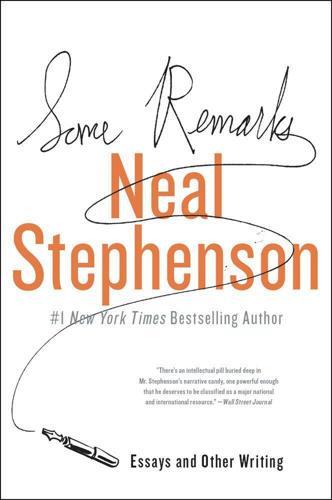
Some Remarks
by
Neal Stephenson
Published 6 Aug 2012
The debate on free will vs. determinism is no more settled today than it was at the time of the Leibniz-Clarke Correspondence, and so in that sense (at least) Monadology is still interesting as a gambit, which different observers might see as heroic, ingenious, or desperate, to cut that Gordian knot by making free minds or souls into the fundamental components of the universe. 2. Leibniz’s interpreters made use of the vocabulary at their disposal to translate his terminology into words such as “mind,” “soul,” “cognition,” “endeavour,” etc. This, however, was before the era of information theory, Turing machines, and digital computers, which have supplied us with a new set of concepts, a lexicon, and a rigorous science pertaining to things that, like monads, perform a sort of cogitation but are neither divine nor human. A translator of Leibniz’s work, beginning in a.d. 2010 from a blank sheet of paper, would, I submit, be more likely to use words like “computer” and “computation” than “soul” and “cognition.”
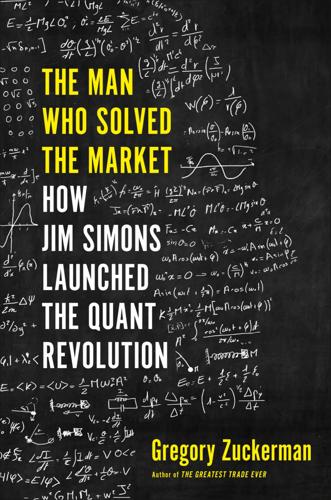
The Man Who Solved the Market: How Jim Simons Launched the Quant Revolution
by
Gregory Zuckerman
Published 5 Nov 2019
Watson Research Center, 172 Thorp, Edward, 30, 97–98, 127–29, 130, 163 tick data, 112 Toll, John, 33 tradeable effects, 111 trading errors, 166 trading signals, 3, 83–84, 203–5, 246–47, 312 trenders, 73 trend following, 96, 100 Trump, Donald, xviii, 281–94, 302, 304–5 Trump, Ivanka, 281 Trump, Melania, 285 Trump National Golf Club, 282 Tsai, Gerald, Jr., 123 Turing, Alan (Turing machine), 3, 148 “turtles,” 125 Tversky, Amos, 152 twenty-four-hour effect, 109 20th Century Fox, 10–11 Two Sigma Investments, 310, 312 Tykhe Capital, 256 United Airlines, 166 United Church of Christ, 87–88 United Fruit Company, 19 University of California, Berkeley, 3, 17–19, 20, 38, 68–69, 92–93, 95 University of California, Irvine, 81 University of California, Los Angeles, 36–37 University of Cambridge, 147 University of Chicago, 30, 72, 256 University of Erlangen-Nuremberg, 300–301 University of Illinois, 171 University of New Mexico, 169–70 University of Pennsylvania, 176, 185, 236, 270 University of Rochester, 169 value style of investing, 96 Vietnam War, 31–32, 48 Villani, Dario, 308 Vinik, Jeffrey, 163 Volcker, Paul, 65 Volfbeyn, Pavel, 238, 241, 242, 252–54 von Neumann, John, 67 Wadsworth, Jack, Jr., 89 Wallace, Mike, 13 Wall Street (movie), 106 Wall Street Journal, 57, 76, 122, 124, 128, 146, 172, 198, 275, 294, 303, 318 Walters, Barbara, 13 Wander, Wolfgang, 300–301, 300n Ward, Kelli, 304 WarGames (movie), 192 Washington Post, 282 weekend effect, 109–10 Weinberger, Peter, 201, 233–34 Weinstein, Boaz, 299 Welch, Lloyd, 46–48 West Meadow Beach, 34, 235 Wheeler, Langdon, 106 white supremacism, 292–93, 299–300 Whitney, Glen, at Renaissance, 235–36 compensation, 200–201, 229 departure, 262 job interviews, 233 Kononenko and, 241, 242–43, 262 Mercer and, 231–32, 235 Wild One, The (movie), 17 Wiles, Andrew, 69–70 Witten, Edward, 38 World Bank, 56 WorldCom, 226 World Trade Center mosque controversy, 278 Yale University, 176 Yang, Chen Ning, 33 Yau, Shing-Tung, 35 Yiannopoulos, Milo, 300, 302 Zeno’s paradoxes, 12 ABCDEFGHIJKLMNOPQRSTUVWXYZ ABOUT THE AUTHOR Gregory Zuckerman is the author of The Greatest Trade Ever and The Frackers, and is a Special Writer at the Wall Street Journal.

The Sense of Style: The Thinking Person's Guide to Writing in the 21st Century
by
Steven Pinker
Published 1 Jan 2014
The new entries in AHD 5 are a showcase for the linguistic exuberance and recent cultural history of the Anglosphere: Abrahamic, air rage, amuse-bouche, backward-compatible, brain freeze, butterfly effect, carbon footprint, camel toe, community policing, crowdsourcing, Disneyfication, dispensationalism, dream catcher, earbud, emo, encephalization, farklempt, fashionista, fast-twitch, Goldilocks zone, grayscale, Grinch, hall of mirrors, hat hair, heterochrony, infographics, interoperable, Islamofascism, jelly sandal, jiggy, judicial activism, ka-ching, kegger, kerfuffle, leet, liminal, lipstick lesbian, manboob, McMansion, metabolic syndrome, nanobot, neuroethics, nonperforming, off the grid, Onesie, overdiagnosis, parkour, patriline, phish, quantum entanglement, queer theory, quilling, race-bait, recursive, rope-a-dope, scattergram, semifreddo, sexting, tag-team, time-suck, tranche, ubuntu, unfunny, universal Turing machine, vacuum energy, velociraptor, vocal percussion, waterboard, webmistress, wetware, Xanax, xenoestrogen, x-ray fish, yadda yadda yadda, yellow dog, yutz, Zelig, zettabyte, zipline If I were allowed to take just one book to the proverbial desert island, it might be a dictionary. who and whom.
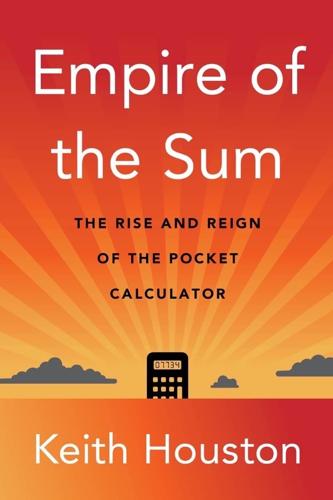
Empire of the Sum: The Rise and Reign of the Pocket Calculator
by
Keith Houston
Published 22 Aug 2023
At Bletchley Park, a stately home that housed Britain’s government codebreakers, he masterminded the cracking of the German “Enigma” encryption scheme, a feat that may have shortened the Second World War by up to two years.3 Before the war, Turing had published a conceptual blueprint for all programmable electronic computers, later to be dubbed the “universal Turing machine.” After the war, he devised the “imitation game,” or Turing test, that anticipated the arrival of artificial intelligence.4 Finally, Turing is remembered for the manner of his death. He was convicted of gross indecency in 1952 for a relationship with another man and was offered estrogen injections, a form of “chemical castration,” to avoid prison.
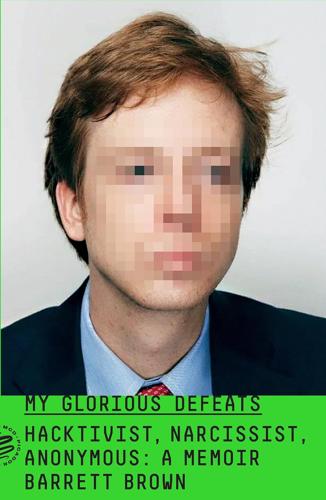
My Glorious Defeats: Hacktivist, Narcissist, Anonymous: A Memoir
by
Barrett Brown
Published 8 Jul 2024
This should be clear enough given the known history of the Manhattan Project, or the unprecedented movements of men and machinery that the Allies routinely managed to conceal thanks to the imaginative stratagems of eccentric English turncoats and outlawed Polish aristocracy throughout World War II—or the fact that the Turing machine was publicly billed as merely an abstract thought experiment for well over a decade after it had actually been built. Now that this latter secret in particular has ushered in a new age defined largely by information, one could object that similar secrets would be more difficult to conceal. And one would be right.
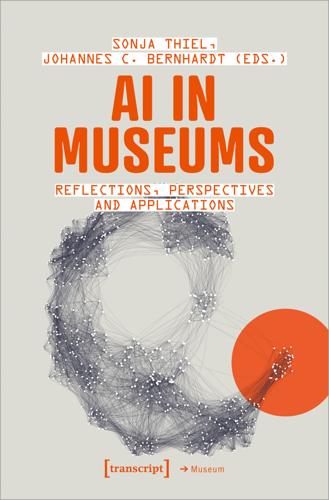
AI in Museums: Reflections, Perspectives and Applications
by
Sonja Thiel
and
Johannes C. Bernhardt
Published 31 Dec 2023
Or is it rather an elaborate trickery, an AI make-believe while there is obviously human intelligence hidden inside? Since we are captivated, indeed, just like the Turk audiences were, the whole world seems to be busy experimenting with the machinery and trying to figure out how the magic works. That surely is part of the fascination surrounding this new 200 Part 2: Perspectives Turing machine, yet again blurring the boundaries of human and machine (Turing 1950). There is another aspect though: GPT-3 has a very unique ability, it is not just playing chess, it is able to perform a much more emotional trick. And that is where the whole thing touches on much more basic questions: What is the use of language?
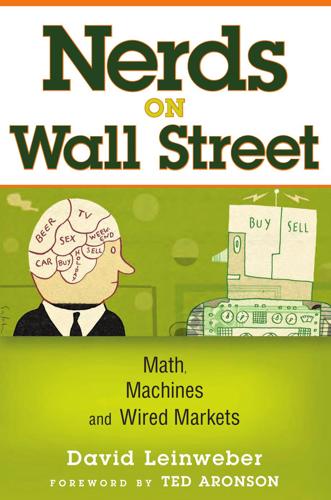
Nerds on Wall Street: Math, Machines and Wired Markets
by
David J. Leinweber
Published 31 Dec 2008
That is a lot more than one, but still a lot less than the 100 billion neurons in the brain. You don’t need a machine with a billion processors to try out solutions that would use them. A simulator will do fine, if not as fast. For theory buffs, this is an example of the idea of a universal computation; a Turing machine or its equivalent can emulate anything you want. The Nintendo 64 emulators you can run on your PC to play Pac-Man are another. The neural net movement exploited this idea, seeking to realize learning by mimicking structure and function. Another branch of the 184 Nerds on Wall Str eet turn to biologically inspired approaches to learning used the intriguing idea of mimicking evolution.

Exponential: How Accelerating Technology Is Leaving Us Behind and What to Do About It
by
Azeem Azhar
Published 6 Sep 2021
That’s a Problem’, Business Insider, 10 October 2020 <https://www.businessinsider.com/tiktok-ban-hearings-politicians-senators-know-nothing-about-tech-2020-10> [accessed 12 April 2021]. 9 Charles Percy Snow, The Two Cultures (Cambridge University Press, 2012). CHAPTER 1: THE HARBINGER 1 In other words, it was a Turing Machine – so named after British mathematician Alan Turing, who devised much of the theory behind computer science. Turing’s tragic death in 1954 meant he never had access to a computer as generally capable as the ZX81, with its 1,024 bytes of memory storage capable of crunching through a superhuman half a million instructions per second. 2 G.
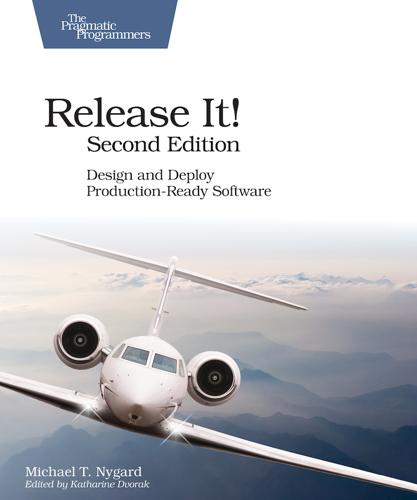
The Nature of Software Development: Keep It Simple, Make It Valuable, Build It Piece by Piece
by
Ron Jeffries
Published 14 Aug 2015
Now you can code your way out. Jamis Buck (286 pages) ISBN: 9781680500554 $38 Good Math Mathematics is beautiful—and it can be fun and exciting as well as practical. Good Math is your guide to some of the most intriguing topics from two thousand years of mathematics: from Egyptian fractions to Turing machines; from the real meaning of numbers to proof trees, group symmetry, and mechanical computation. If you’ve ever wondered what lay beyond the proofs you struggled to complete in high school geometry, or what limits the capabilities of the computer on your desk, this is the book for you. Mark C. Chu-Carroll (282 pages) ISBN: 9781937785338 $34 Your Code as a Crime Scene Jack the Ripper and legacy codebases have more in common than you’d think.
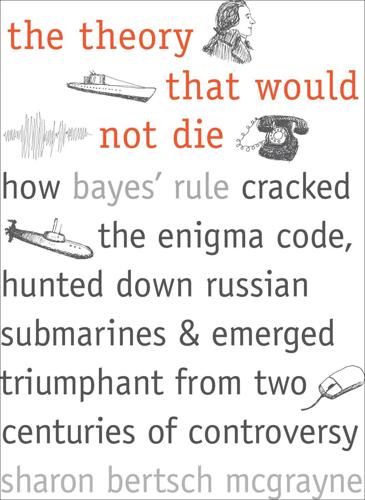
The Theory That Would Not Die: How Bayes' Rule Cracked the Enigma Code, Hunted Down Russian Submarines, and Emerged Triumphant From Two Centuries of Controversy
by
Sharon Bertsch McGrayne
Published 16 May 2011
Despite the strange reputation of British mathematicians, the operational head of GC&CS prepared for war by quietly recruiting a few nonlinguists—“men of the Professor type”5—from Oxford and Cambridge universities. Among that handful of men was Alan Mathison Turing, who would father the modern computer, computer science, software, artificial intelligence, the Turing machine, the Turing test—and the modern Bayesian revival. Turing had studied pure mathematics at Cambridge and Princeton, but his passion was bridging the gap between abstract logic and the concrete world. More than a genius, Turing had imagination and vision. He had also developed an almost unique set of interests: the abstract mathematics of topology and logic; the applied mathematics of probability; the experimental derivation of fundamental principles; the construction of machines that could think; and codes and ciphers.
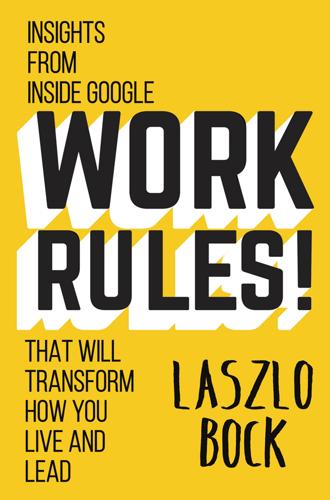
Work Rules!: Insights From Inside Google That Will Transform How You Live and Lead
by
Laszlo Bock
Published 31 Mar 2015
xii I ran the abbreviation “NP” by my close friend Gus Mattammal, who has degrees in math, physics, and business and is director of Advantage Testing of Silicon Valley, an elite tutoring and test preparation firm. I figured if anyone could explain NP, he could. Gus told me, “Class NP contains all computational problems such that the corresponding decision problem can be solved in a polynomial time by a nondeterministic Turing machine.” Ummm.… He then translated for me: “Unless you’re a computer scientist, ‘NP problems’ can just be used to stand for ‘really, really hard problems to solve.’ ” xiii In the spring of 2012, we started deploying algorithms to better match candidates with jobs. By mid-2013, hiring yield had increased 28 percent (that is, for every 1, 000 applicants, we are hiring 28 percent more people than in the past).
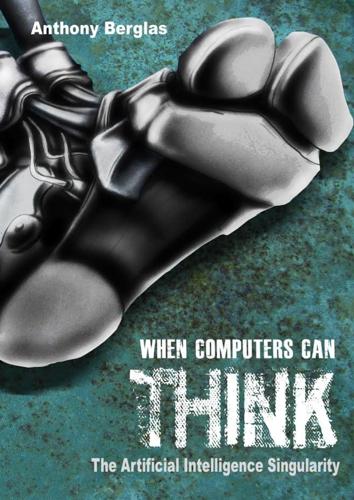
When Computers Can Think: The Artificial Intelligence Singularity
by
Anthony Berglas
,
William Black
,
Samantha Thalind
,
Max Scratchmann
and
Michelle Estes
Published 28 Feb 2015
Long before significant real computers could be built, Turing created a very simple theoretical computer in which programs could be written. He then proved that any other more sophisticated computer could not have any more computational power than his simple machine. In other words, if you could write a program on a more complex computer, then that program could be translated to run on his Turing Machine. Being a logician Turing was unconcerned about practical details as to how long the program would take to run, but he showed that once a computer had some basic characteristics it could run any program that could be written. This includes any program that could be implemented with neurons. Turing then used a clever argument to show that there are some programs that cannot be written at all.

Code: The Hidden Language of Computer Hardware and Software
by
Charles Petzold
Published 28 Sep 1999
Contributing to this project (and to some later British computer projects) was Alan M. Turing (1912–1954), who is most famous these days for writing two influential papers. The first, published in 1937, pioneered the concept of "computability," which is an analysis of what computers can and can't do. He conceived of an abstract model of a computer that's now known as the Turing Machine. The second famous paper Turing wrote was on the subject of artificial intelligence. He introduced a test for machine intelligence that's now known as the Turing Test. At the Moore School of Electrical Engineering (University of Pennsylvania), J. Presper Eckert (1919–1995) and John Mauchly (1907–1980) designed the ENIAC (Electronic Numerical Integrator and Computer).
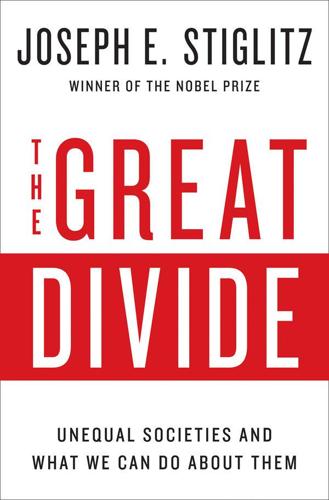
The Great Divide: Unequal Societies and What We Can Do About Them
by
Joseph E. Stiglitz
Published 15 Mar 2015
But standards of living might have been raised even more if all of this innovative talent had been allocated to more fundamental research—or even to more applied research that could have led to new products. Yes, being better connected with each other, through Facebook or Twitter, is valuable. But how can we compare these innovations with those like the laser, the transistor, the Turing machine, and the mapping of the human genome, each of which has led to a flood of transformative products? Of course, there are grounds for a sigh of relief. Although we may not know how much recent technological innovations are contributing to our well-being, at least we know that, unlike the wave of financial innovations that marked the precrisis global economy, they have had a positive effect. ______________ * Project Syndicate, March 9, 2014.
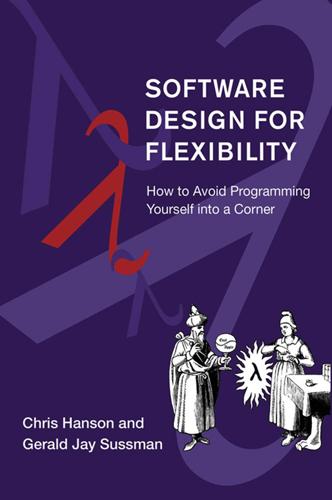
Software Design for Flexibility
by
Chris Hanson
and
Gerald Sussman
Published 17 Feb 2021
Unfortunately, many of the techniques we advocate make the problem of proof much more difficult, if not practically impossible. On the other hand, sometimes the best way to attack a problem is to generalize it until the proof becomes simple. 1 The discovery of the existence of universal machines by Alan Turing [124], and the fact that the set of functions that can be computed by Turing machines is equivalent to both the set of functions representable in Alonzo Church's λ calculus [17, 18, 16] and the general recursive functions of Kurt Gödel [45] and Jacques Herbrand [55], ranks among the greatest intellectual achievements of the twentieth century. 2 Of course, there are some wonderful exceptions.
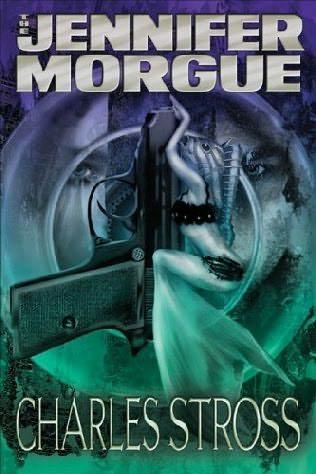
Jennifer Morgue
by
Stross, Charles
Published 12 Jan 2006
Probably he whiffed of Laundry business — and that set off one of the traps, which yanked him in." "How do you get inside a game?" asks Pinky, looking hopeful. "Could you get me into Grand Theft Auto: Castro Club Extreme" Brains glances at him in evident disgust. "You can virtualize any universal Turing machine," he sniffs. "Okay, Bob. What precisely do you need from us in order to get the kid out of there" I point to the laptop: "I need that, running the Dungeon Master client inside the game. Plus a class four summoning grid, and a lot of luck." My guts clench. "Make that a lot more luck than usual."
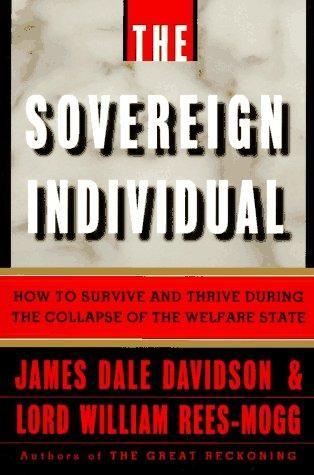
The Sovereign Individual: How to Survive and Thrive During the Collapse of the Welfare State
by
James Dale Davidson
and
William Rees-Mogg
Published 3 Feb 1997
The fact that genetically influenced sacrifice on behalf of the nationstate often militated against the evolutionary purpose of kin selection also tells you that humans are adaptable enough to adjust to many circumstances for which we were not genetically programmed in the conditions of the Stone Age. As Tudge elaborates in describing the "extreme generalness" of human beings: "We are the animal equivalent of the Turing machine: the universal device that can be turned to any task." 72 Which tendency will come to the surface in the coming transition crisis? Probably both. 224 The commercialization of sovereignty itself depends upon the willingness of hundreds of thousands of Sovereign Individuals and many millions of others to deploy their assets in the "First Bank of Nowhere" in order to secure immunity from direct compulsion.
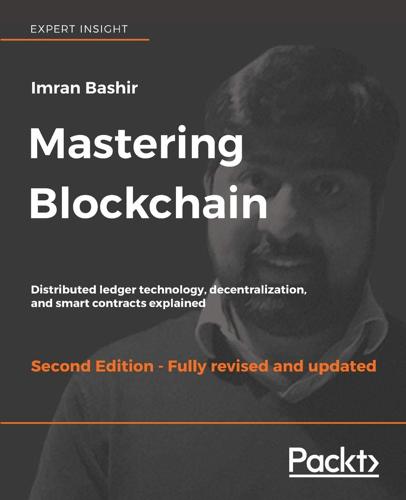
Mastering Blockchain, Second Edition
by
Imran Bashir
Published 28 Mar 2018
Think of it as a calculator that only supports standard preprogrammed arithmetic operations. As such, Bitcoin script language cannot be called Turing complete. In simple words, Turing complete language means that it can perform any computation. It is named after Alan Turing who developed the idea of Turing machine that can run any algorithm however complex. Turing complete languages need loops and branching capability to perform complex computations. Therefore, Bitcoin's scripting language is not Turing complete, whereas Ethereum's Solidity language is. To facilitate arbitrary program development on a blockchain, Turing complete programming language is needed, and it is now a very desirable feature of blockchains.

Deep Utopia: Life and Meaning in a Solved World
by
Nick Bostrom
Published 26 Mar 2024
Thus, in base 10, the smallest pandigital number is 1,023,456,789. 69 For example, Kass (2003), Sandel (2007), and Habermas (2003) have each voiced general ethical objections to genetic engineering of humans, though it is not clear that even these arch-bioconservatives would assert that there is an absolute prohibition in all possible circumstances. 70 Shulman & Bostrom (2021); Bostrom (2022) 71 Warren (1997); Kagan (2019) 72 See e.g. Chalmers (2022) for more discussion. 73 Meme about future jobs. Orphan work. 74 Chaitin’s omega represents the probability that a particular universal prefix-free Turing machine halts when given a random input. The number of possible human visual experiences is not necessarily the same as the number of possible human visual stimuli. Two distinct stimuli will often produce the same experience, as many details of the incoming activation pattern are discarded at higher levels of processing.
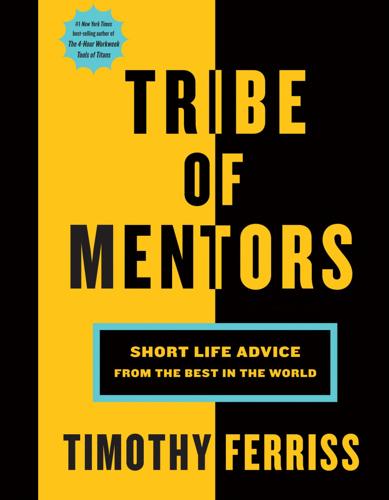
Tribe of Mentors: Short Life Advice From the Best in the World
by
Timothy Ferriss
Published 14 Jun 2017
Janna Levin TW/IG: @jannalevin jannalevin.com JANNA LEVIN is the Tow Professor of physics and astronomy at Barnard College of Columbia University, and has contributed to an understanding of black holes, the cosmology of extra dimensions, and gravitational waves in the shape of spacetime. She is also director of sciences at Pioneer Works, a cultural center dedicated to experimentation, education, and production across disciplines. Her books include How the Universe Got Its Spots and a novel, A Madman Dreams of Turing Machines, which won the PEN/Bingham Prize. She was recently named a Guggenheim Fellow, a grant awarded to those “who have demonstrated exceptional capacity for productive scholarship.” Her latest book, Black Hole Blues and Other Songs from Outer Space, is the inside story on the discovery of the century: the sound of spacetime ringing from the collision of two black holes over a billion years ago

Empire of AI: Dreams and Nightmares in Sam Altman's OpenAI
by
Karen Hao
Published 19 May 2025
See also DALL-E Thiel, Peter Altman and, 26–27, 36, 38–39, 39–42 Founders Fund, 38 founding of OpenAI, 12–13, 50 “monopoly” strategy of, 39–40, 142 Palantir, 38, 69 PayPal, 38, 40, 142 Trump and, 38, 42 Threads, 260 Three-Body Problem, The (Liu), 83 Three Mile Island, reopening, 275 TikTok, 304 Tiku, Nitasha, 253–54 Time (magazine), 137, 192, 210, 416–17 Tironi Rodó, Martín, 273–74, 297–98, 300 Toner, Helen, 58 Altman and board, 7, 11, 253, 321–22, 375, 376 leadership behavior, 324, 348–51, 353–55, 356–59, 361–62, 364 “costly signals” paper, 357–59, 364 Murati and, 348–51, 356–57 Sutskever and, 325, 343, 351–52, 353–55, 359–60 Tools for Humanity, 185–86 TPUs (tensor processing units), 171 transcription, 220–21 Transformers, 120–22, 158–59, 160, 165–66, 169, 235 transparency, 5, 9, 14, 19–20, 81, 82, 86, 119, 134, 143, 166, 167, 172, 173–74, 230, 301, 384, 403, 406, 419–20 Trump, Donald, 38, 42, 51, 195, 321, 406 Tuna, Cari, 230 Turing, Alan, 81–82, 89, 91, 93, 373 Turing Award, 105, 162 Turing machine, 81–82, 91 Twitch, 9, 34, 367 U Uber, 106, 107, 110, 136, 194, 228 Ukraine war, 52, 191 “United Slate, The” (Altman), 42 universal basic income (UBI), 85, 185–86 University of Applied Sciences Dresden, 196 University of California, Berkeley, 49, 56, 108, 118, 217, 235, 419 University of California, Los Angeles, 162 University of California, San Diego, 97 University of Chicago, 272–73, 296 University of Massachusetts Amherst, 79–80, 159–60 University of Toronto, 47, 105, 117 “unknown unknowns,” 249 Upwork Research Institute, 18 Uruguay, 272, 417 data centers, 291–96 water crisis, 292–95 Utawala, Kenya, 190, 209, 211 V Vallejos, Rodrigo, 296–99 veil of ignorance, 3 Venezuela crisis, 195–97, 203 Venezuela, data annotation, 195–96, 198–202, 203–4, 218 Victoria, Lake, 207 Villagra, Julia, 389–90 Vincent, James, 119 Virginia, data centers, 278 Volpi, Mike, 203 Volta, Alessandro, 133 W WALL-E (movie), 234 Wall Street Journal, The, 33, 35, 41, 69, 102, 188, 193, 212, 280, 367, 384, 390–91, 416 Wang, Alexandr, 202–3, 213, 218 Warzel, Charlie, 370 Washington Post, The, 69, 114, 253, 371, 400, 403 water pollution, 293 water resources, 15, 17, 271, 273, 275, 277–78, 280–84, 287–96, 297, 299 Watson Health, 99 Waymo, 100 Weil, Elizabeth, 326–27, 328–29, 332–33, 336–40, 343 Weil, Kevin, 404 Weinstein, Emily, 307, 309 Weizenbaum, Joseph, 95–97, 420–21 Welinder, Peter, 150, 155, 250–51 Weng, Lilian, 267, 406 West, Kanye, 221 West, Sarah Myers, 308 Whale, 279–80 Whisper, 244, 247, 267, 413 whistleblower protections, 403 white hats, 107–8 Wikipedia, 57, 125, 135, 221 Willner, Dave, 238, 249–52, 267, 406 WilmerHale, 375 Wong, Hannah, 256, 326–28, 338–40 workplace impacts, 78–81, 114–15, 222, 265–66 World Bank, 207 Worldcoin, 185–86 World War II, 29, 91 X X (formerly Twitter), 3, 257, 260, 312, 328, 368–69 xAI, 321, 322, 397, 403, 404–5 Xerox PARC, 54–55 Y Yale University, 196, 291 Y Combinator, 23, 27–28, 32, 34, 36–38, 39, 43 Yom Kippur, 326–27 YouTube, 34, 51–52, 102–3, 136, 244–45, 334 Yudkowsky, Eliezer, 319–20 Z Zaremba, Wojciech, 59, 152, 181–82 Zenefits, 36 Zilis, Shivon, 63, 320–21, 324, 384 Zoloft, 329, 330 Zoph, Barret, 247, 381–82, 387, 404, 406 Zuboff, Shoshana, 101 Zuckerberg, Mark, 38, 42, 159, 311, 406–7 A B C D E F G H I J K L M N O P Q R S T U V W X Y Z About the Author Karen Hao is an award-winning journalist covering the impacts of artificial intelligence on society.
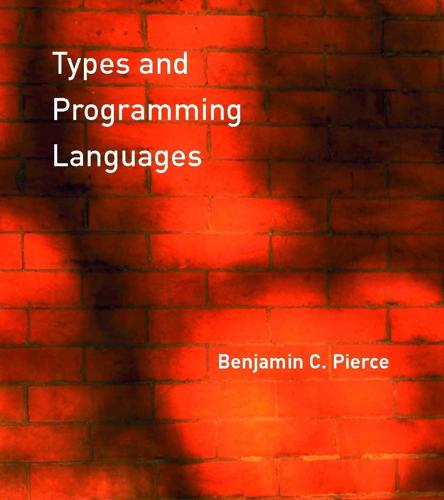
Types and Programming Languages
by
Benjamin C. Pierce
Published 4 Jan 2002
Y1)) then, on the next cycle of the machine, the current value of register 1, i.e., Q, will appear in the position of U—in effect, performing an "indirect branch" through register 1 to the stream of instructions represented by Q. Conditional constructs and arithmetic (successor, predecessor, and zero-test) can be encoded using a generalization of this trick. Putting all of this together, we arrive at a proof of undecidability via a reduction from two-counter machines—a simple variant on ordinary Turing machines, consisting of a finite control and two counters, each holding a natural number—to subtyping statements. 28.5.5 Theorem [Pierce, 1994]: For each two-counter machine M, there exists a subtyping statement S(M) such that S(M) is derivable in full F<: iff the execution of M halts. Thus, if we could decide whether any subtype statement is provable, then we could also decide whether any given two-counter machine will eventually halt.

Coders at Work
by
Peter Seibel
Published 22 Jun 2009
In a way I resent having every language be universal because they'll be universal in a different way. It's a little bit like Unix having 30 definitions of regular expressions under one roof— depending on which part of Unix you're using you've got a slightly different flavor of regular expressions. If every tool that you have includes a Turing machine inside, is this really the way to go? I was really thinking of TeX as something that the more programming it had in it, the less it was doing its real mission of typesetting. When I put in the calculation of prime numbers into the TeX manual I was not thinking of this as the way to use TeX. I was thinking, “Oh, by the way, look at this: dogs can stand on their hind legs and TeX can calculate prime numbers.”

The Transhumanist Reader
by
Max More
and
Natasha Vita-More
Published 4 Mar 2013
Originally published in Extropy 13 (1994). Copyright © Max More. Imagine that a DNA molecule is a tape, upon which is written 2 bits of information per base pair (the DNA molecule is a long string of adenine-thymine and guanine-cytosine pairs). Imagine, in particular, this to be the tape of a Turing machine, which is represented by some humongous clump of special-purpose enzymes that reads the “tape,” changes state, replaces a base pair with a new one, and slides up and down the “tape.” If one could design the enzyme clump using conventional molecular biology techniques (and each of the individual functions it needs to do are done somewhere, somehow, by some natural enzyme) you’d have a molecular computer.
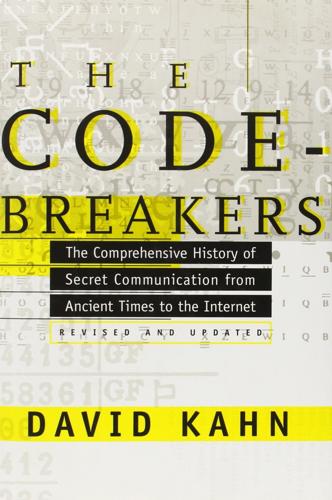
The Codebreakers: The Comprehensive History of Secret Communication From Ancient Times to the Internet
by
David Kahn
Published 1 Feb 1963
To prove it, he envisioned a mechanism that could move to the left or to the right an infinitely long tape marked into squares, and could read and change or read and leave unchanged the blank or the mark—the 0 or the 1—in each square. He demonstrated that this machine could compute anything that could be calculated. Then he showed that even this machine could not tell whether the unknown problems could be solved. This machine, later called the “universal Turing machine,” has come to be recognized as the idealization of general-purpose computers and Turing, therefore, as the intellectual father of the computer. This genius turned his mind to the problem of solving Enigma messages. He took the Poles’ bombe and advanced it by a quantum leap. He conceived a device that would take a cryptogram’s presumed plaintext—as the Poles had done with AnX, only longer—and run it through all possible rotor combinations until it found one that would yield the known ciphertext from the presumed plaintext.
…
G. di, 404 Turing, A., 975-76 Turning grilles, 308-09 Tut Latin, 822 Two-letter differential, 840-41, 847 Typewriter keyboards, 740-41 TYPEX, 510 Tyro, T, 89 Tyronian notes, 89 U-2 aircraft, 693, 720 U-110, 977 U-158, 504 U-505, 506 U-boats, 273, 466, 504-07 UBCHI, 301, 304 Ugaritic literature, 900 ULTRA, 601 Ultra Secret, The, 979 Unbreakable cipher, 398-400 Unicity distance, 750 Unicity point, 750 United States Air Force Security Service, 680-81 Army, 1, 12, 398, 427, 574-75, 577 Central Bureau, 577, 578 Central Intelligence Agency, 681, 684 colonial cryptology, 174-86 Data Encryption Standard, 979-81, 983 National Defense Research Committee, 558-60 Navy, 5, 12, 252, 386-88, 408, 415-19 passim, 503-04, 680, 969, 971 Philippines, Navy cryptanalytic unit, 10, 25, 47, 563, 564 poor pre-World War II cryptography, 488-89 2nd Signal Service Battalion, 576-77 Signal Companies (Radio Intelligence), 507, 578-79 Signal school, 321, 324, 325 Signal Security Service, 575, 611, 678 solution of American messages, 187, 460, 496-98, 556-57, 671 State Department, 488-501 superiority of current American cryp-tology, 730 takes world lead, 385 see also Army Security Agency; black chambers, American; censorship; Code Compilation Section; Combat Intelligence Unit; Federal Bureau of Investigation; Friedman; FRUPAC; G.2 A.6; Hitt; M-94; M-134; M-138; M-209; National Security Agency; Office of Strategic Services; OP-20-G; Radio Intelligence Division; Rochefort; Safford; SIGABA; Signal Intelligence Service; Signal Security Agency; SIGTOT; Stager; War Department Telegraph Code; word transposition Univacs, 726 Universal Pocket Code, 490 Universal Trade Code, 359, 846 Universal Turing machine, 976 Uruk, 76 Valerianus, P., 903 Valério, L. P. E., 240, 242 Vanek, V., 540 Variant Beaufort, 203, 242 Vassilyev, A. T., 619 Vatican. See papal cryptology Vātsyāyana, 74 Venice, 109-10, 114, 858 Ventris, M. G. F., 922-37 passim Verkuyl, J. A., 691 Vernam, G. S., 394, 403, 612 system, 395-403, 492, 501, 612, 825, 830, 984 Verne, J., 793-94 Vetterlein, Engineer, 555 Viaris, Marquis G.
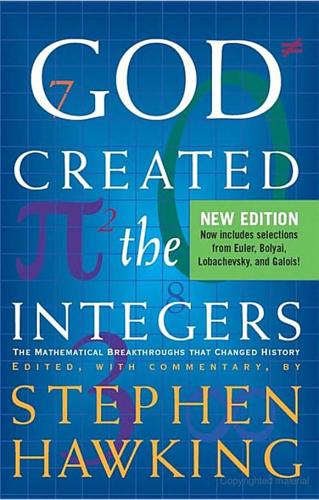
God Created the Integers: The Mathematical Breakthroughs That Changed History
by
Stephen Hawking
Published 28 Mar 2007
Turing set out to answer it, working on it from the spring of 1935 to the spring of 1936. In order to do so, he needed to make precise the notion of a decision procedure. He needed to formalize it. Perhaps inspired by a childhood interest in typewriters, Turing did this by expressing the concept of a decision procedure in terms of machines, machines now known as Turing machines. Turing recognized that typewriters can only write onto a sheet of paper. They have no ability to interpret the sheet of paper. That is left to the human typist. Turing realized that to eliminate the human component, the machine needed to be able to read input as well as write output. Abstracting and simplifying as much as possible, Turing supposed that his machines operated on a tape composed of a square that could either contain a mark or be blank.
…
It moves right leaving symbols in place as they are found, and then writes a symbol when it encounters the first empty square, which represents the end of the first number and the start of the second. Now change the configuration to the following set of rules. Keep moving right leaving symbols in place as they are found in marked squares until coming to an empty square. This marks the end of the second number. Move left and erase the symbol found. A Turing machine with a slightly more complicated table of behavior can be defined to multiply two numbers. But these were simple processes. Turing realized that, in contrast, a decision-making machine of the sort required by Hilbert’s decision problem could not be directly constructed. At most, its existence could only be inferred.
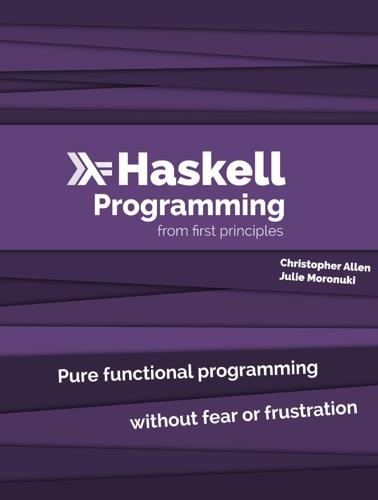
Haskell Programming: From First Principles
by
Christopher Allen
and
Julie Moronuki
Published 1 Jan 2015
ALL YOU NEED IS LAMBDA 1.1 30 All You Need is Lambda This chapter provides a very brief introduction to the lambda calculus, a model of computation devised in the 1930s by Alonzo Church. A calculus is a method of calculation or reasoning; the lambda calculus is one process for formalizing a method. Like Turing machines, the lambda calculus formalizes the concept of effective computability, thus determining which problems, or classes of problems, can be solved. You may be wondering where the Haskell is. You may be contemplating skipping this chapter. You may feel tempted to skip ahead to the fun stuff when we build a project.
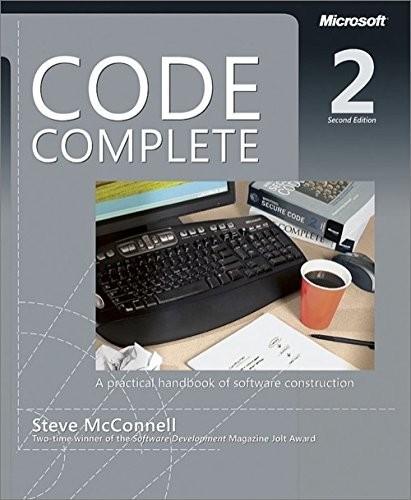
Code Complete (Developer Best Practices)
by
Steve McConnell
Published 8 Jun 2004
“"Unifying Software Engineering and Systems Engineering,"” IEEE Computer, March 2000, 114–116. [bib36entry70] Boehm-Davis,Deborah, Sylvia Sheppard, and John Bailey. 1987. “"Program Design Languages: How Much Detail Should They Include?"” International Journal of Man-Machine Studies 27, no. 4: 337–47. [bib36entry71] Böhm, C., and G.Jacopini. 1966. “"Flow Diagrams, Turing Machines and Languages with Only Two Formation Rules."” Communications of the ACM 9, no. 5 (5): 366–71. [bib36entry72] Booch,Grady. 1987. Software Engineering with Ada, 2d ed. Menlo Park, CA: Benjamin/Cummings. [bib36entry73] Booch,Grady. 1994. Object Oriented Analysis and Design with Applications, 2d ed.

The Year's Best Science Fiction: Twenty-Sixth Annual Collection
by
Gardner Dozois
Published 23 Jun 2009
And it was Wilson’s intuition that these things were bits of executable code: programs you could run. Even as expressed in the Eaglets’ odd flowing language, he thought he recognised logical loops, start and stop statements. Mathematics may or may not be universal, but computing seems to be—my brother had found Turing machines, buried deep in an alien database. Wilson translated the segments into a human mathematical programming language, and set them to run on a dedicated processor. They turned out to be like viruses. Once downloaded on almost any computer substrate they organised themselves, investigated their environment, started to multiply, and quickly grew, accessing the data banks that had been downloaded from the stars with them.
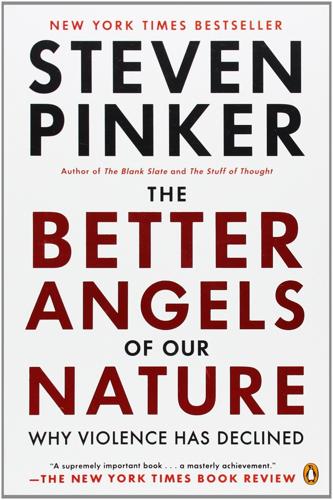
The Better Angels of Our Nature: Why Violence Has Declined
by
Steven Pinker
Published 24 Sep 2012
Bennett, “Abducted: The Amber Alert system is more effective as theater than as a way to protect children,” Boston Globe, Jul. 20, 2008. 213. Kids hit by parents driving kids: Skenazy, 2009, p. 176. 214. Counterproductive kidnapping alerts: D. Bennett, “Abducted: The Amber Alert system is more effective as theater than as a way to protect children,” Boston Globe, Jul. 20, 2008. 215. Alan Turing: Hodges, 1983. 216. Turing machines: Turing, 1936. 217. Can machines think?: Turing, 1950. 218. State-sponsored homophobia, past: Fone, 2000. Present: Ottosson, 2009. 219. More homophobia against gay men: Fone, 2000. More laws against male homosexuality: Ottosson, 2006. 220. More hate crimes against men: U.S. Department of Justice, FBI, 2008 Hate crime statistics, table 4, http://www2.fbi.gov/ucr/hc2008/data/table_04.html. 221.